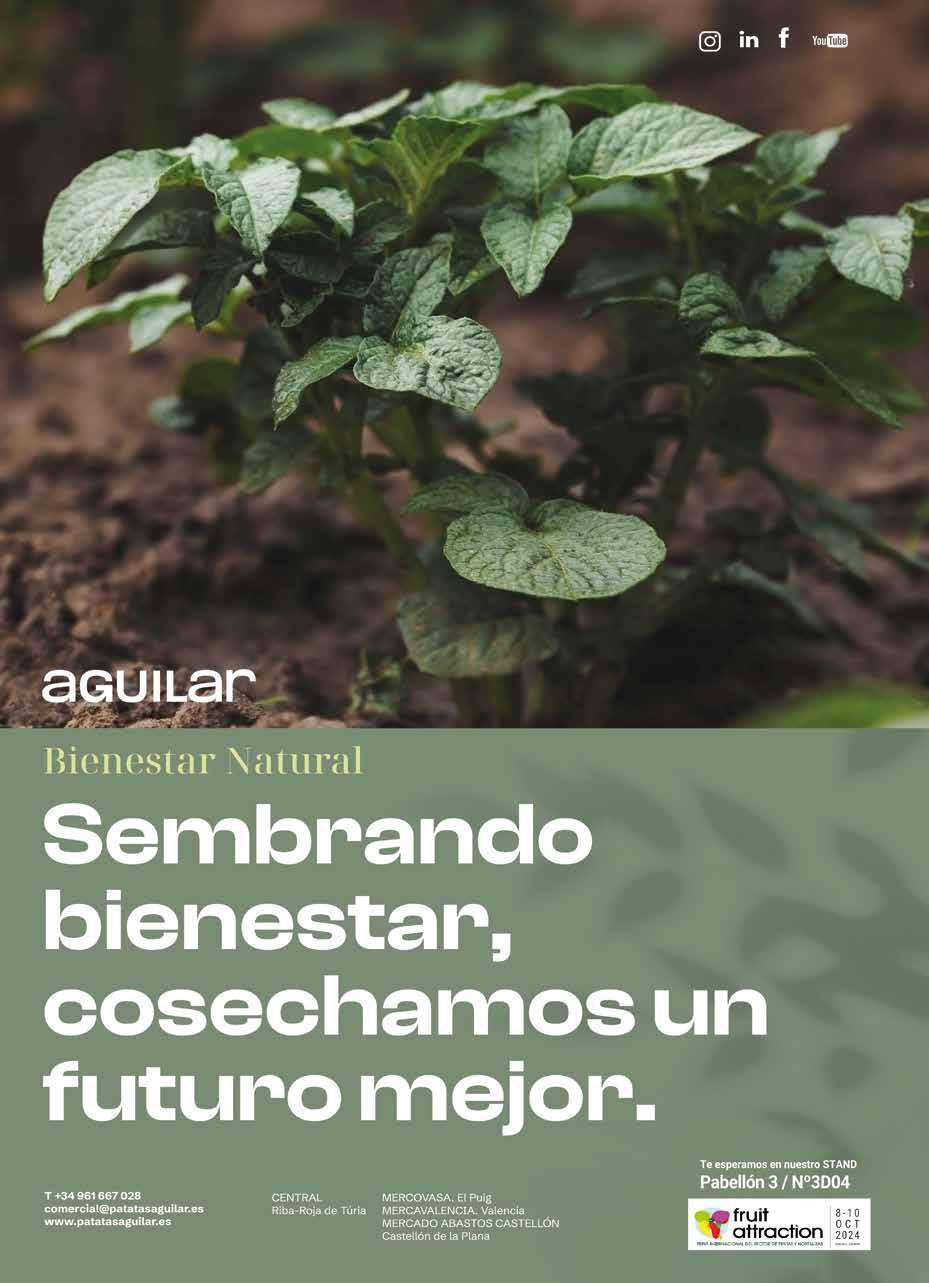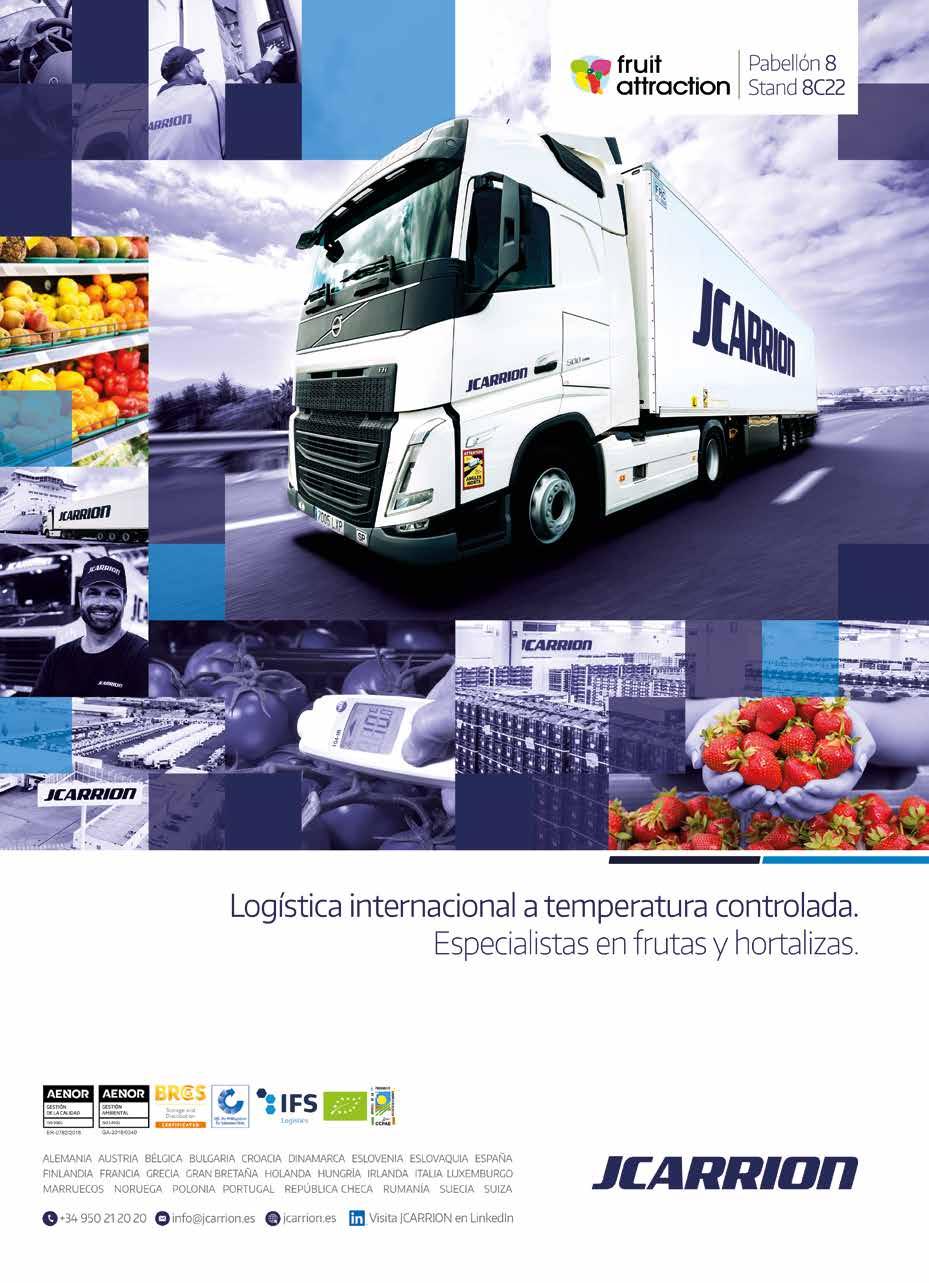












Ediciones Fruit Today, S.L. Fruit Today Magazine nº 100 Septiembre-Octubre 2024














Ediciones Fruit Today, S.L. Fruit Today Magazine nº 100 Septiembre-Octubre 2024

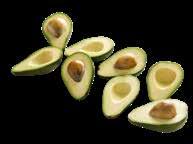

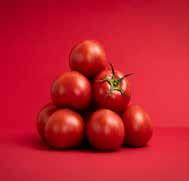
Directora: Carmen Cabra
Redacción: Sonia Cortés, Virginia Hernández y Alessandro Panebianco
Fotos: Manuel Martín DG: Sofía Stadler
Imprenta: M. Selvi, S.A. Depósito Legal V-483-2004 www.fruittoday.com fruittoday@fruittoday.com
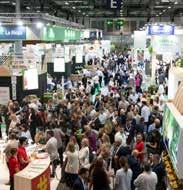
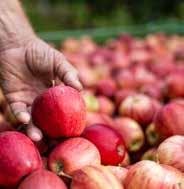



Por Carmen Cabra

Justo en esta edición, la que ahora te presentamos en el contexto de Fruit Attraction, nuestra revista cumple 100 números en papel. Todo ha trascurrido casi sin darnos cuenta porque en el mundo del periodismo todo acontece con mucha rapidez, y cuando estás enfrascado en un tema, sucede otro. Es pura actividad.
Si reflexiono un poco sobre esta aventura, creo que algo habremos hecho bien para seguir ahí en un mundo tremendamente competitivo, tanto en el plano empresarial como en el puramente periodístico.
Lo que más claro tengo es que la fortaleza de Fruit Today magazine reside en sus lectores. Unos lectores comprometidos con la información contrastada, con la calidad y el rigor de lo publicado. Unos lectores que, a lo largo de los años, nos evalúan como una revista en la que han podido depositar su confianza. Todo ello ha sido posible gracias al trabajo y al esfuerzo del equipo de profesionales involucrados, que, desde el minuto uno, han hecho de este trabajo su pasión.
Atravesamos un océano ignoto cuando surgieron los medios puramente digitales. Llegamos a pensar que el papel, como muchos auguraban, podría sucumbir. Pero no, no fue así y nos adaptamos a sus maneras. Hoy estamos
This edition, which we present within the context of Fruit Attraction, is celebrating 100 printed issues. This has happened in a blink of an eye, as in the world of journalism everything happens at top speed, and when you are engrossed in a topic, another one comes up. It is an action-packed profession.
If we look back over this adventure, I think that we must have done something right if we are still here, in the midst of an incredibly competitive world, both from the business point of view and in the purely journalistic arena.
The point I am most clear about is that the strength of Fruit Today magazine lies in its readers. Readers who are committed to contrasted information, to the quality and to the rigour of
Fruit Today’s strength lies in its readers, who, either on printed or digital means, continue placing their trust in us
everything published. Readers who, over all these years, have evaluated us as a magazine in which they have been able to place their trust.
All of this has been possible thanks to the work and effort made by the team of professionals involved, who, from the very beginning, have been passionate about this work.
We were crossing uncharted waters when purely digital media arose. We even thought that the printed press could disappear. But this has not been the case and we have adapted to its ways. Today
presentes en tu bandeja de entrada con nuestras newsletters y también en todas las redes sociales.
Además, podemos presumir de que hace 14 años creamos los galardones ‘Estrellas de Internet’, relacionados con el mundo digital que perduran en el tiempo y a los que, en cada edición, se presentan mayor número de candidatos.
Seguimos recorriendo en paralelo todo lo que acontece en el sector, con sus problemas, que no son pocos, y sus desafíos futuros. Estamos seguros, que el sector, como estratégico que es para cualquier país, sabrá exhibir su fortaleza y pervivir, durante muchas ediciones más. Seguimos juntos en la brecha.
Gracias por habernos leído, por leernos y por todo lo que nos queda por leer.
La fortaleza de Fruit Today reside en sus lectores, que en papel o en digital, siguen confIando en nosotros
we are present in your inbox with our newsletters and also on all the social media sites.
Additionally, we can be proud of the fact that 14 years ago we created the ‘Estrellas de Internet’ Awards, related to the digital world, and that have stood up to the test of time and to which a larger number of candidates are presented at each edition.
We continue to cover everything that happens in the sector, with its problems, of which there are many, and its future challenges. We are certain that the sector, as strategic as it is for any country, will know how to display its strength and survive, for many more issues. Once more, we’ll go together unto the breach!
Thank you for having read us, for reading us and for everything that is still to be read in the future.



La fIrma valenciana, perteneciente al grupo alemán Markant, suministra todo su catálogo hortofrutícola a los asociados del grupo, entre los que se encuentran importantes
Fruit Today magazine entrevistó a Enrique Clavel, fundador y director general de Iberiana Frucht, con motivo del 30 aniversario de la empresa.
Iberiana Frucht alcanzó un volumen de alrededor de 270 millones de kilos en frutas y verduras.
¿Cómo se siente al cumplir tres décadas al frente de la empresa?
Me siento increíblemente orgulloso y emocionado por haber llegado hasta aquí. No es solo un logro personal, sino el resultado de tres décadas de trabajo duro, dedicación y, sobre todo, de un equipo extraordinario que ha estado a mi lado en cada paso del camino. Ver cómo Iberiana Frucht ha crecido y evolucionado a lo largo de los años es algo que me llena de gratitud y satisfacción.
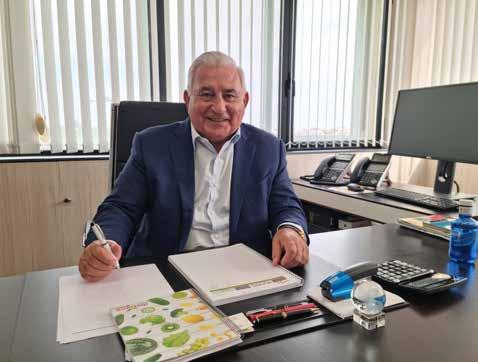
des cambiantes de nuestros clientes asociados.
¿Qué visión de futuro tiene para Iberiana Frucht?
El futuro de la empresa lo veo con optimismo y ambición. Aunque hemos logrado mucho, estoy convencido de que lo mejor está por venir. Queremos seguir expandiéndonos, no solo en términos de mercado, sino también en nuestras capacidades y en la variedad de productos que ofrecemos.
¿Cómo fueron los inicios de Iberiana Frucht? ¿Qué desafíos enfrentaron y cómo lograron superarlos?
Los inicios, como ocurre con muchas empresas, no fueron fáciles. Empezamos con recursos limitados y un equipo pequeño, pero con una gran determinación y una visión clara: ofrecer productos de alta calidad y construir relaciones sólidas y de alta confianza con nuestros clientes asociados. Hubo momentos difíciles, sobre todo en los primeros años, cuando nos enfrentamos a la incertidumbre del mercado y a la necesidad de diferenciarnos en un sector altamente competitivo. Sin embargo, fue precisamente en esos desafíos donde encontramos nuestras mayores oportunidades. Aprendimos a ser resilientes, a adaptarnos rápidamente y a innovar para mantenernos en la vanguardia.
¿Qué ha sido lo más gratificante en estas tres décadas al frente de la empresa?
Sin duda, ha sido ver como la empresa ha crecido hasta convertirse en un referente en el sector, sin perder nunca de vista nuestros valores fundamentales. Hemos pasado de ser una pequeña firma a ser un jugador clave en el mercado, y lo hemos hecho sin

Hemos pasado de ser una pequeña fIrma a un jugador clave en el mercado
sacrificar la calidad o la integridad. Además, resulta muy satisfactorio saber que hemos creado empleo, contribuido al desarrollo económico en nuestra comunidad y, lo más importante, que nuestros productos han llegado a las mesas de tantas familias, aportando calidad y frescura.
¿Cuáles pueden haber sido las claves de esta evolución tan positiva?
Creo, sin ninguna duda, que ha sido la confianza y la lealtad de los miembros del grupo, proveedores, transportistas y empleados. Desde un principio, pusimos un gran énfasis en construir relaciones sólidas y transparentes. Entendemos que, en nuestro sector, la confianza lo es todo. También ha sido crucial nuestra capacidad de innovación y adaptación. El mundo cambia rápidamente, y nosotros hemos sabido evolucionar con él, ya sea adoptando nuevas tecnologías, optimizando nuestras operaciones o respondiendo a las necesida-
De hecho, en octubre de 2023 abrimos un nuevo despacho en Bari, que ya da trabajo a unas 15 personas. En líneas generales, continuaremos invirtiendo en innovación y sostenibilidad, que son fundamentales para nuestro crecimiento a largo plazo. También seguiremos fortaleciendo las relaciones con los miembros del grupo, porque ellos son la base de nuestro éxito.
¿Qué mensaje le gustaría enviar a todos aquellos que han formado parte de esta trayectoria de 30 años?
Expresar mi más profundo agradecimiento. Nada de esto habría sido posible sin el apoyo clientes asociados, proveedores, empleados y socios. Gracias por ser parte de esta historia, por creer en nosotros y por acompañar-
ya SE cuenta con un nuevO DESPACHO en Bari
nos en cada paso del camino. Sobre todo, también quiero expresar mi profundo agradecimiento a nuestra casa madre, Markant, por su apoyo y respaldo, sin la cual este proyecto no hubiera sido posible. Este 30 aniversario no es solo una celebración de la compañía, sino de todas las personas que han contribuido a nuestro éxito. Sigamos adelante con la misma pasión y determinación para construir juntos un futuro aún más brillante.
The Valencian company, belonging to the German group Markant, supplies its entire fruit and vegetable catalogue to the group’s associates, amongst which are important supermarket chains.
Fruit Today magazine interviewed Enrique Clavel, founder and General Manager of Iberiana Frucht, on the company’s 30th anniversary. Iberiana Frucht reached a volume of around 270 million kilos of fruit and vegetables.
How do you feel after three decades at the head of the company?
I feel incredibly proud and thrilled to have reached this point. It is not only a personal achievement, but the result of three decades of hard work, dedication and, above all, an extraordinary team that has been beside me every step of the way. Seeing how Iberiana Frucht has grown and evolved over the years is something that fills me with gratitude and satisfaction.
What was the start of Iberiana Frucht like? What challenges did you face, and how did you manage to overcome them?
The beginning, as occurs in many companies, was not easy. We started out with limited resources and a small team, but with great determination and a clear vision: to offer high-quality produce and build up solid, trustworthy relations with our associate clients. There were difficult times, above all in the first years, when we faced the uncertainty of the market and the need to differentiate ourselves in a highly competitive sector. However, these challenges gave us our greatest opportunities. We learnt to be resilient, to adapt ourselves quickly and to innovate to keep ourselves ahead of the game.
up either quality or integrity. It is also highly satisfactory knowing that we have created jobs, contributed to the economic development in our community and the most important, that our produce has reached the tables of so many families, bringing quality and freshness.
In your opinion, which were the keys to this incredibly positive evolution?
I think, without any doubt, that it has been the trust and loyalty of the group members, su-
deal, I am convinced that the best is yet to come. We want to continue expanding, not only in market terms, but also in our capacities and in the variety of products that we offer.
In fact, in October 2023, we opened a new office in Bari, which now employs around 15 people. In general, we will continue investing in innovation and sustainability, which are essential for our long-term growth. We will also keep strengthening relations with the group members because they are the foundations on which our success is based.
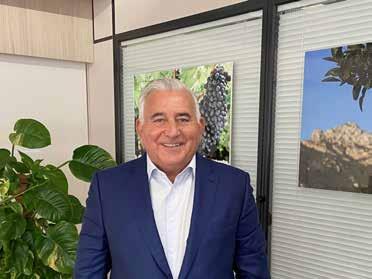
What has been the most gratifying element in these three decades at the head of the company?
Without any doubt, it has been seeing how the company has grown, becoming a benchmark in the sector, without ever losing sight of our fundamental values. We have gone from being a small firm to becoming a key player on the market, and we have done this without giving
ppliers, transporters and employers. From the very beginning, we put great emphasis on building solid, transparent relations. We understand that, in our sector, trust means everything. Our capacity for innovation and adaptation has also been essential. The world changes very fast and we have to know how to evolve with it, whether by adopting new technologies, optimising our operations, or by responding to the every-changing needs of our associate clients.
What is your view for the future of Iberiana Frucht?
I see the company’s future with optimism and ambition. Although we have achieved a great
We have gone from being a small fIrm to becoming a key player on the market
What message would you like to send to those who have formed part of this 30-year journey?
I would like to express my deepest gratitude. None of this would have been possible without the support and trust of our associate clients, suppliers, employees and associates. Thank you for being part of this story, for believing in us and for accompanying us each step of the way.
Above all, I would also like to express my most profound thanks to our parent company, Markant, for their support and backing when making decisions, without which this project would not have been possible.
This 30th anniversary is not only a celebration of the company, but of all the people who have contributed to our success. We will continue to move forward with the same passion and determination to build an even brighter future together.

Este año, celebramos los XIV Premios ‘Estrellas de Internet’ con récord de inscripciones
Los consumidores varían sus formas de comunicarse, incluso dentro del propio ámbito online, los seguidores migran de una plataforma a otra (gustos, edad, modas, influencers…) y las empresas hortofrutícolas los acompañan en este proceso.
Ya no se vende a través de la plataforma de e-commerce, sino que la población compra a través de Instagram.
Y las firmas cada vez son más especialistas, de ahí el gran aumento de inscritos en la categoría de Mejor LinkedIn. Somos profesionales y queremos que el mundo lo sepa.

En esta andadura, queremos reiterar nuestro agradecimiento a nuestros patrocinadores Euro Pool System y Proexport, así como a la colaboración de Fepex y de la propia feria Fruit Attraction.

MEJOR FACEBOOK / BEST FACEBOOK
El Pinar, UvasDoce Fresh, SanLucar, Melones el Abuelo, Alcachofa de España y Sakata Seed Ibérica
MEJOR WEB / BEST WEBSITE Novagric, El Pinar, Asociación +Brócoli, Campo de Lorca, Patatas Beltrán y Sakata Seed Ibérica


MEJOR CAMPAÑA ONLINE / BEST ONLINE CAMPAIGN
Diario de Campo (Fruits de Ponent), Con mucho gusto (Coexphal), Amor a primer mordisco (Nufri), Enamorados de esta tierra (Syngenta), Especial Halloween (LoveKlabaza) y Cute Healthy (FruitVegetable Europe)

MEJOR INSTAGRAM / BEST INSTAGRAM
Eurobanan, Serifruit, SanLucar, Fruits Ràfols, IGP Melocotón de Cieza y El Ciruelo

MEJOR BLOG / BEST BLOG
Surinver, Frutas Eloy, UvasDoce Fresh, Fruits Ràfols, Sandía Fashion y El Ciruelo


MEJOR CANAL DE YOUTUBE / BEST YOUTUBE CHANNEL
UvasDoce Fresh, Novagric, El Ciruelo, Sakata Seed Ibérica
This year, we are celebrating the 14th ‘Estrellas de Internet’ Awards with a record amount of inscriptions
Consumers vary their communication methods, even within the online environment itself; followers migrate from one platform to another (tastes, age, fashions, influencers…) and the fruit and vegetable companies are accompanying them on this journey.
The e-commerce platform is no longer used for sales; the population now prefers to purchase through Instagram.
The companies are becoming more specialised, which is the reason behind the increase in inscriptions in the Best LinkedIn category. We are professionals and we want the world to know it.
While on this journey, we want to repeat our gratitude to our sponsors Euro Pool System and Proexport, as well as the collaboration by Fepex and the actual trade fair Fruit Attraction itself.
El jurado que seleccionará a los ganadores de cada categoría está compuesto por:




Ingeniero en organización industrial + MBA. Emprendedor, empresario, profesor y conferenciante especializado en la construcción de marcas de alimentación y bebida. Fundador y director de Brandsummit, KOA Distance y Nola Cook ‘n Boat.
Presidenta de APAE. Periodista especializada en periodismo agroalimentario. Desde mediados de la década de los 80 dirige varios espacios informativos de TVE, además de presentar espacios radiofónicos en Onda Cero y Radio Nacional de España. Durante 11 años ha sido directora y presentadora del programa “Agrosfera”.
Se incorporó a la WAO el verano pasado como nueva Directora de Marketing. Cuenta con más de 20 años de experiencia en el sector de gran consumo y ha trabajado para marcas mundiales de renombre como Mars, Nestlé y Kraft.
Fundadora de La Suite Comunicación. Licenciada en Periodismo. Doctorando en Comunicación y Marca Personal. Executive MBA con Acreditación AMBA por ESIC, Máster en Coaching Profesional Ejecutivo y Programación Neurolingüística. Profesora en EIG, ESIC, UMA y UCJC.
The jury, in charge of selecting the winners of each category with their votes, is formed by:
Industrial organisation engineer + MBA. Entrepreneur, businessman, professor and specialised lecturer in the building up of food and drink brands. Founder and director of Brandsummit, KOA Distance and Nola Cook ‘n Boat.


Chairwoman of APAE. A journalist specialising in agrifood journalism. Since the middle of the 1980s, she has been directing several news spaces on TVE, the Spanish public television channel, in addition to presenting items on radio programmes on Onda Cero and Radio Nacional de España. She has been a director and presenter of the programme “Agrosfera” for the past 11 years.
Joined the WAO last summer as the new Marketing Manager. She has over 20 years experience in the large consumption sector and has worked for world famous brands such as Mars, Nestlé, and Kraft.

Founder of La Suite Comunicación. A graduate in Journalism; studying for her Doctorate in Communication and Personal Branding; Executive MBA with AMBA Accreditation from ESIC; Master in Executive Professional Coaching and Neurolinguistic Programming. Professor at EIG, ESIC, UMA and UCJC.



Del 8 al 10 de octubre, Fruit Attraction celebrará su 16ª edición. Organizada por IFEMA
MADRID y FEPEX y con Andalucía como Región Invitada, cuenta con 2.146 empresas expositoras, de 56 países, lo que supone un incremento del 7% con respecto al año pasado
En total serán, por primera vez, 10 pabellones del Recinto Ferial madrileño los que alberguen la gran oferta hortofrutícola que reúne esta edición, lo que significa un crecimiento de ocupación superior al 9% con respecto a 2023.
En esta ocasión, el Área Fresh Produce representa cerca del 70% de la feria y registra un incremento de superficie del 6% con respecto al año anterior, así como el Área Industria Auxiliar, que significa el 24% y apunta un crecimiento del 4%. También el Área Fresh Food Logistics anota un aumento de más del 26%. Como novedad, este año el pabellón 1 estará destinado a Innova&Tech, la nueva área que aglutina los sectores de Biotech Attraction y Smart Agro, dirigida a empresas de innovación, investigación, desarrollo tecnológico.
La participación nacional supone el 55% de la feria. La gran potencia de España como líder mundial del mercado hortofrutícola se deja sentir en su representación con la presencia de todas las comunidades autónomas productoras de frutas y hortalizas del país.
El segmento internacional registra un importante crecimiento. En esta ocasión, acapara el 45% de la ocupación total de la feria y apunta un aumento del 22,5% de la superficie. Del mismo modo, crece un 18% el número de expositores, con la incorporación de 102 nuevas empresas.
Andalucía, Región Invitada
La Junta de Andalucía, a través de la Consejería de Agricultura, Pesca, Agua y Desarrollo Rural, tiene como objetivo impulsar el sector agroalimentario regional, destacando como uno de los patrocinadores principales por tercer año consecutivo.
A través de su participación, la Consejería promocionará los productos hortofrutícolas andaluces, sus métodos de producción y su identificación en el mercado. Andalucía también promocionará su marca de calidad diferenciada Gusto del Sur que, desde su puesta en marcha, más de 100 empresas y asociaciones se han adherido, con lo que hasta 300 productos de distintos


sectores y subsectores lucen ya esta etiqueta reconocida por Europa. Uno de los grandes objetivos de Fruit Attraction es ofrecer una plataforma de impulso y expansión internacional. En este sentido, IFEMA MADRID, con la colaboración del Ministerio de Agricultura, Pesca y Alimentación y del ICEX, vuelve a activar el Programa de Compradores Internacionales, que atrae a cerca de 700 compradores de 70 países.
A esto se suman los ‘Países Importadores Invitados’, con China y Arabia Saudí como protagonistas de esta edición. Por otro lado, el aguacate será el producto estrella este año concentrando diversas iniciativas entorno a este alimento cuyo éxito ha crecido notablemente en España en los últimos años, tanto en cultivo como en exportaciones. Además de diferentes actividades, talleres y demostraciones en torno a este producto, se celebrará el Congreso Global del Aguacate el día previo al arranque de la feria.
En esta ocasión, The Innovation Hub, con cerca de 40 productos, será el área dedicada a la innovación y novedades empresariales en el sector. En este ámbito, la feria volverá a acoger los Innovation
Andalucía, la región invitada, promocionará su marca ‘Gusto del Sur’
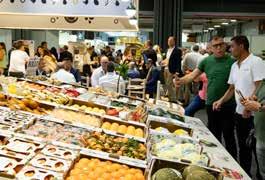
Hub Awards, que se han convertido en un acontecimiento fundamental para el apoyo a la apuesta emprendedora empresarial del sector con sus habituales categorías -Fresh Produce; F&V Industry, y Acciones de sostenibilidad y compromiso-.
From the 8th to the 10th of October, Fruit Attraction will hold its 16th edition. Organised by IFEMA MADRID and FEPEX, with Andalusia as the Guest Region, it will have 2,146 exhibitor companies, from 56 countries, meaning a 7% increase compared to last year
In total, for the first time, there will be 10 halls in the Madrid Trade Fair Centre housing the great fruit and vegetable offer that this edition is bringing together, which means a growth in occupation of over 9% compared to 2023.
This time, the Fresh Produce Area represents almost 70% of the trade fair and it is recording a 6% increase in surface area compared to the previous year, as well as the Auxiliary Industry Area, which makes up 24% and is seeing a growth of 4%. The Fresh Food Logistics Area is also noting an increase of over 26%. As a new development, this year Hall 1 will be the home of Innova&Tech, the new area that brings together Biotech Attraction and Smart Agro sectors, aimed at innovation, research and technological development companies.
Spanish national participation makes up 55% of the trade fair. The significant power of Spain as a world leader in the fruit and vegetable world can be seen by its representation with the presence of all the fruit and vegetable producing autonomous regions in the country.
The international segment is recording an important growth. This time, it will take up 45% of the total occupation of the trade fair, and it is showing a 22.5% growth in surface area. In the same way, the number of exhibitors has grown by
18%, with the incorporation of 102 new companies.
Through its Department of Agriculture, Fishing, Water and Rural Development, the Regional Government of Andalusia aims to promote the regional agrifood sector, standing out as one of the main sponsors for the third year running. Through its participation, the Department will promote Andalusian fruit and vegetable products, its production methods and its identification on the market.
Andalusia will also promote its differentiated quality brand ‘Gusto del Sur’ (Taste from the South), which since it was started up, has been joined by over 100 companies and associations, meaning that up to 300 products from different sectors and subsectors are already showing this label that has been recognised by Europe.
One of Fruit Attraction’s main goals is to offer a platform for boosting international expansion. Accordingly, IFEMA MADRID, with the collaboration of the Ministry of Agriculture, Fishing and Food and ICEX, has once again activated the
International Purchasers Programme, which attracts around 700 purchasers from 70 countries. Added to this are the ‘Guest Importer Countries,’ with China and Saudi Arabia as the stars of this edition.
Furthermore, the avocado will be the star product this year, concentrating different initiatives involving this food, which has seen its success grow remarkably in recent years, both in crops and in exports. In addition to different activities, workshops and demonstrations around this product, the Global Avocado Congress will be held on the day before the trade fair starts.
This time, The Innovation Hub, with around 40 products, will be the area devoted to innovation and new business developments in the sector. Within this context, the trade fair will once again host the Innovation Hub Awards, which have become an essential event for supporting the sector’s entrepreneurial business commitment with its usual categories: Fresh Produce, F&V Industry, and Sustainability and commitment actions.

Distribuyendo fruta y verdura de calidad, comercializando, importando y exportando con más de 30 años en el sector, sin perder la esencia como empresa familiar.
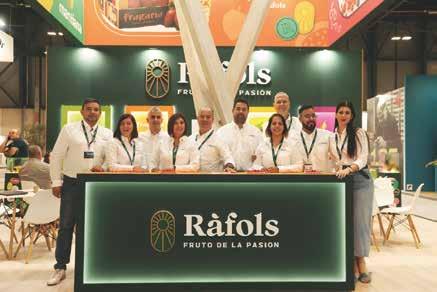

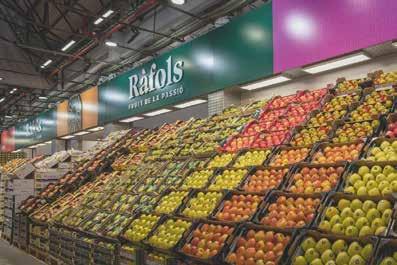

La compañía valenciana ha llevado a cabo una importante expansión en sus instalaciones que le dan pulmón para crecer en los próximos años
La firma de Alginet, altamente especializada en la comercialización de plátano y kaki, disfruta de una nueva ampliación y automatización de su sala de trabajo para el plátano, convertida en una de las más modernas de España. “Teníamos claro que había que automatizar, en la medida de lo posible, el empaquetado
para el plátano y el kaki respectivamente.” explica su hijo, Adrián García. El nuevo espacio alberga todo el trabajo relativo tanto a la maduración del plátano como a su confección. La firma cuenta con 14 cámaras de maduración de plátano dotadas de la más moderna tecnología y otras 12 para la conservación de kaki u otros
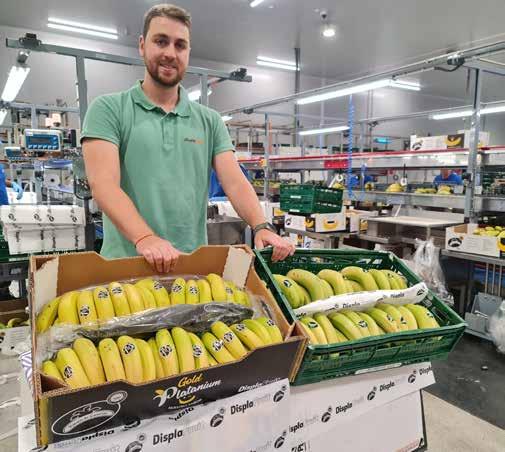
del plátano y maximizar los procesos productivos,” explica Pascual García, director de la compañía. Pero esta expansión no solo se ha producido en la zona de trabajo del plátano, también se ha llevado a cabo una ampliación y mejora de la línea de producción de kaki que proporcionará una mayor eficiencia en el proceso de confección del mismo.
“Este proyecto se inició en el 2017, ampliando y mejorando paulatinamente hasta el día de hoy en diferentes etapas el almacén de maduración de plátano. Actualmente, las instalaciones cuentan con una superficie total de 10.000 m² y 5.000 m²

productos. La capacidad de frío alcanza los 2,5 millones de kilos. Con las nuevas infraestructuras, la capacidad de maduración de plátano de la empresa se sitúa alrededor de los 25 millones de kilos por año. “Las nuevas infraestructuras nos darán más pulmón para hacer un buen y efectivo trabajo, porque hemos eliminado muchos procesos que antes se debían realizar de forma manual y hemos aumentado los filtros de calidad”.
La compañía vende su producto en Mercavalencia, donde tiene puestos propios y está muy introducida en la distribución valenciana, a la que da servicio a las cadenas más importantes del contexto
actual. “Las nuevas infraestructuras nos dan pie para aumentar nuestra colaboración con ellos,” asegura el directivo.
El año pasado, antes de la actualización en maquinaria y espacio, se acabó con unos 15 millones de kilos, todos madurados en sus propias instalaciones, de donde no salió ni un solo plátano en verde.
Con la nueva instalación de plátano se pueden llegar a los 300.000 kilos semanales. “De hecho, tenemos más que experiencia en este tipo de situaciones ya que en algunos momentos puntuales, en los que han coincido las ofertas de algunos
La confección de kaki, esta campaña,
también contará con la ampliación de la línea de producción y de su planta
clientes, hemos llegado a los 70.000 kilos diarios.
“Nuestra filosofía no pasa por madurar rápido para madurar más, sino por hacer las cosas como tocan. El plátano necesita como mínimo 5 días en cámara. El producto no se puede estresar porque si no surgen problemas en el lineal de ventas. Respecto a lo que puede ser la nueva campaña de kaki, el directivo cree que se moverá en una producción muy similar a la del año pasado, a pesar de los inconvenientes como la falta de pluviometría, las plagas como el cotonet, trip o el planchado por el sol. “Lo que sí parece claro es que nos moveremos en unos calibres ligeramente inferiores respecto al año pasado,” asegura García. La firma llegó a comercializar unos 7 millones de kilos en la campaña pasada. “Las previsiones eran mayores, pero hubo que descontar los problemas originados por el hongo, por el planchado, el viento etc.,” finaliza García.
The Valencian company has signifIcantly expanded its installations, giving it room to grow over the next few years
The company from Alginet, which is highly specialised in Plátano de Canarias and persimmons, is enjoying a new extension and automation of its ‘plátano’ workroom, turning it into one of the most up-to-date in Spain. “We were clear that we had to automate the ‘plátano’ packaging as far as possible and maximise the production processes,” explains Pascual García, the director of the company.
But this expansion has not only taken place in the ‘plátano’ working area: there has also been an extension and improvement in the persimmon production line that will provide greater efficiency in the preparation process of this fruit. “The project started back in 2017, gradually extending and improving the ‘plátano’ ripening warehouse up until now in different phases. Currently, the installations have a total surface area of 10,000 m² and 5.000 m² for ‘plátano’ and persimmons, respectively,” his son, Adrián García, indicates.
The new space houses all the work for both ripening and preparing the ‘plátano’. The company has 14 ‘plátano’ ripening rooms equipped with the latest technology and another 12 for conserving persimmons or other produce. They have around 2.5 million kilos of cooling capacity.
With the new infrastructures, the company’s capacity for ‘plátano’ ripening has reached around 25 million kilos per year. “The new infrastructures will give us more room for carrying out good, effective work, because we have got rid of many
processes that previously had to be done by hand, and we have increased the quality filters.”
The company sells its produce in Mercavalencia, where it has its own stands, and it is deep-rooted in the Valencian distribution
There will also be an extension of the production line and of the plant for persimmon preparation this campaign
system, through which it serves today’s most important chains. “The new infrastructures allow us to increase our collaboration with them,” the executive assures.
Before up-dating machinery and space, the company ended the previous year with around 15 million kilos, all ripened in their own installations, without a single green ‘plátano’ leaving them.
With the new ‘plátano’ premises, around 300,000 kilos per week can be reached. “In fact, we are experienced in this type of situation, as at some points when the offers from
several clients coincide, we have reached up to 70,000 kilos per day.
“Our philosophy does not involve ripening fast to ripen more, but it means doing things as they should be done. Plátano de Canarias need a minimum of 5 days in a ripening room. The product cannot be stressed, because this causes problems when it reaches the supermarket shelves. Regarding the new persimmon campaign, the executive believes that the production will be very similar to last year’s, in spite of the disadvantages such as the lack of rainfall, pests such as mealybugs, thrips, or sunstroke. “What does seem to be clear is that we will have calibres that will be slightly smaller than last year’s,” he states. The company marketed around 7 million kilos in the last campaign. “The forecasts were higher, but there were losses due to problems caused by fungus, sunstroke, wind etc.,” García concludes.
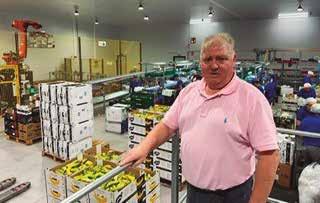
Desde 2016, la fIrma llega a mercados fuera de España, como son Polonia, Suiza y Francia
Europlátano nació hace más de 30 años en el Valle de Aridane, en la isla de La Palma, gracias a la unión de 43 agricultores con una apuesta común por la calidad y el cuidado del producto. Hoy en día, la entidad está compuesta por casi 700 integrantes y ha pasado de producir 5.000.000 kg de plátanos en sus inicios a 75.000.000 kg en la actualidad, además de otras frutas cultivadas en las islas.
Desde su constitución, Europlátano ha buscado ofrecer plátanos de Canarias de la más alta calidad a través de su marca Gabaceras, que se ajusten a las necesidades de los mercados más exigentes, pero que al mismo tiempo que genere beneficios para los agricultores y se fomente una agricultura sostenible.
Sin embargo, el mercado se ha vuelto altamente competitivo debido a cambios en los hábitos de consumo, la implacable competencia de la banana, la concentración de la oferta en las grandes cadenas de distribución, la creciente importancia de la sostenibilidad para el consumidor o la digitalización y profesionalización del sector
Este nuevo contexto exige una estructura sólida por parte de la organización que permita controlar toda la cadena de producción, uno de los grandes proyectos en los que se encuentra inmerso el grupo, que es en posicionarse como madurador y comercializador en la Península. De manera que sus socios agricultores controlan la calidad
y los costes desde las fincas hasta el lineal, sin intermediarios.
Actualmente, la empresa cuenta con siete empaquetados en las islas de Tenerife, La Palma y El Hierro; capacidad de maduración en Tenerife destinada al mercado local, y gestiona sus instalaciones de maduración en Alicante. Esta capacidad de maduración se verá duplicada en pocas semanas, cuando su nueva nave de maduración en Bilbao
Europlátano contará en Bilbao con una nueva nave de maduración
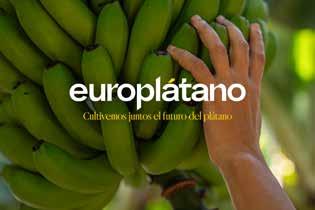
la calidad y ser lo más eficiente posible en costes.
comience a dar servicio, pudiendo abarcar así de forma directa todo el país. Así, Europlátano se ha convertido en la única Organización de Productores de Plátano de Canarias que abarca todo el proceso de manera independiente. Sus socios agricultores, dueños únicos del grupo, controlan cada paso desde el campo hasta los hogares, un modelo de negocio innovador sin intermediarios que permite controlar
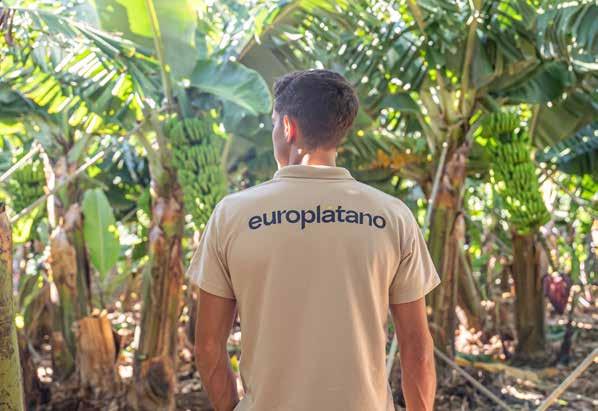
Sin embargo, ésta no es la única estrategia de crecimiento de una empresa que está en constante evolución con versatilidad, dinamismo y espíritu de mejora. Desde 2016 ha ido expandiendo su presencia en nuevos y rentables mercados europeos, llevando la calidad y el sabor de sus plátanos a consumidores de Suiza, Polonia y Francia. El objetivo de los próximos meses es continuar la expansión y consolidar su presencia más allá de las fronteras nacionales. El sector del plátano canario se ha enfrentado a numerosos desafíos y cambios tanto en la producción como en las tendencias de consumo en los últimos años. Esto hace indispensable que se trabaje de manera coordinada en la empresa desde el campo hasta la comercialización para conseguir un volumen que proporcione fuerza en un mercado donde cada vez se concentra más la distribución, eficiencia en costes para minimizar los efectos de la inflación o calidad certificada y comunicación para crear confianza en consumidores y clientes.
La fIrma controla todo el proceso, desde el campo a la mesa, sin intermediarios
The company has been reaching markets outside Spain, such as Poland, Switzerland, and France, since 2016
Europlátano was established over 30 years ago in the Valle de Aridane, on the island of La Palma, thanks to 43 farmers forming a partnership with a common commitment to the quality and care of their produce. Today, the organisation is made up of almost 700 associates and it has gone from producing 5,000,000 kg of bananas when it started out, to 75,000,000 kg at present, in addition to other fruit grown in the islands.
Since its establishment, Europlátano has sought to offer the highest quality Canary Island bananas through its brand Gabaceras, which adapts to the most demanding market requirements, but, at the same time, to generate profits for the farmers and encourage sustainable farming. However, the market has become highly competitive owing to changes in consumption habits, a relentless competition from plantains, the concentration of the offer on the large distribution chains, the growing importance of sustainability for consumers and the professionalisation of the sector.
This new context demands a solid structure by the organisation that allows the entire production chain to be controlled, and one of the important projects in which the group is involved, which is positioning itself as a ripener and marketer on the Spanish mainland. In this way,
its associate farmers may control the quality and the costs from the fields to the supermarket shelves, without any middlemen.
Currently, the company has seven packaging plants on the islands of Tenerife, La Palma and El Hierro, along with a capacity for ripening in Tenerife for the local market; and it manages its ripening installations in Alicante. This ripening capacity will be doubled over the next few weeks, when its new ripening shed in Bilbao starts operating, meaning that the whole country may be covered directly.
In this way, Europlátano has become the only Canary Island Banana Producer Organisation that covers the entire process independently. Its associate farmers, the only owners of the group, control each step from the fields to the households, an innovative business model without any middlemen that allows the quality to be controlled, as well as being as efficient as possible in costs.
However, this is not the only growth strategy for a company that is constantly evolving with versatility, dynamism and a spirit of improvement. Since 2016, it has been expanding its presence on new, profitable European markets, taking the quality and flavour of their bananas to consumers in Switzerland, Poland, and France.
The aim over the next few months is to continue this expansion and to consolidate its presence beyond Spanish borders.
The Canary Island banana sector has faced up to many challenges and changes both in the production and in consumption trends in recent years. This has meant it is essential to work in a coordinated way within the company from the fields to the marketing to obtain a volume that provides strength on a market that the distribution is increasingly concentrating, efficiency in costs to minimise the effects of inflation, or certified quality and communication to create confidence in the consumers and clients.
The company controls the entire process, from the fIelds to the table, without any middlemen
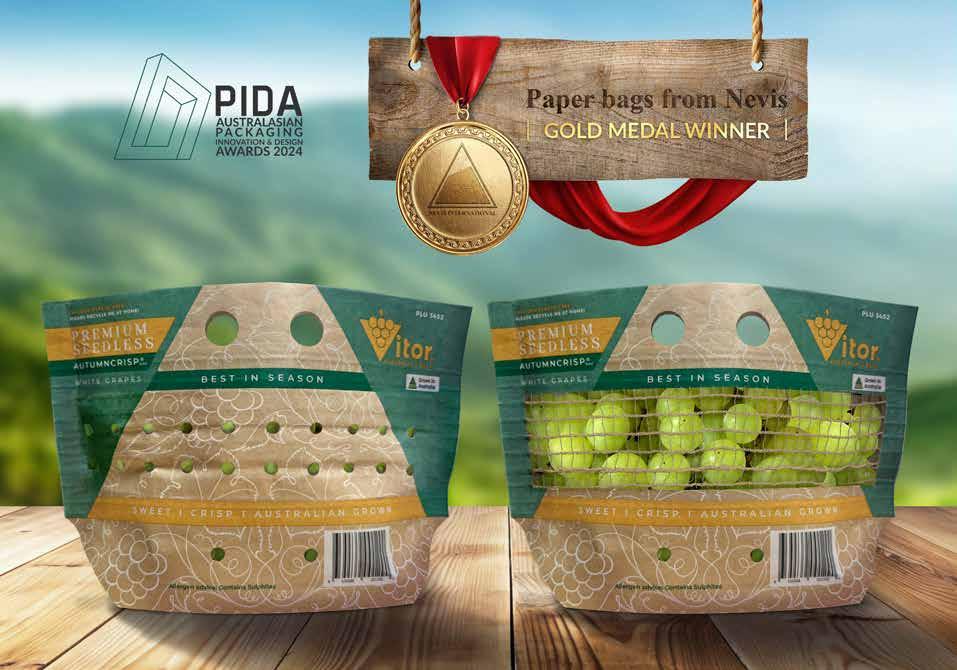
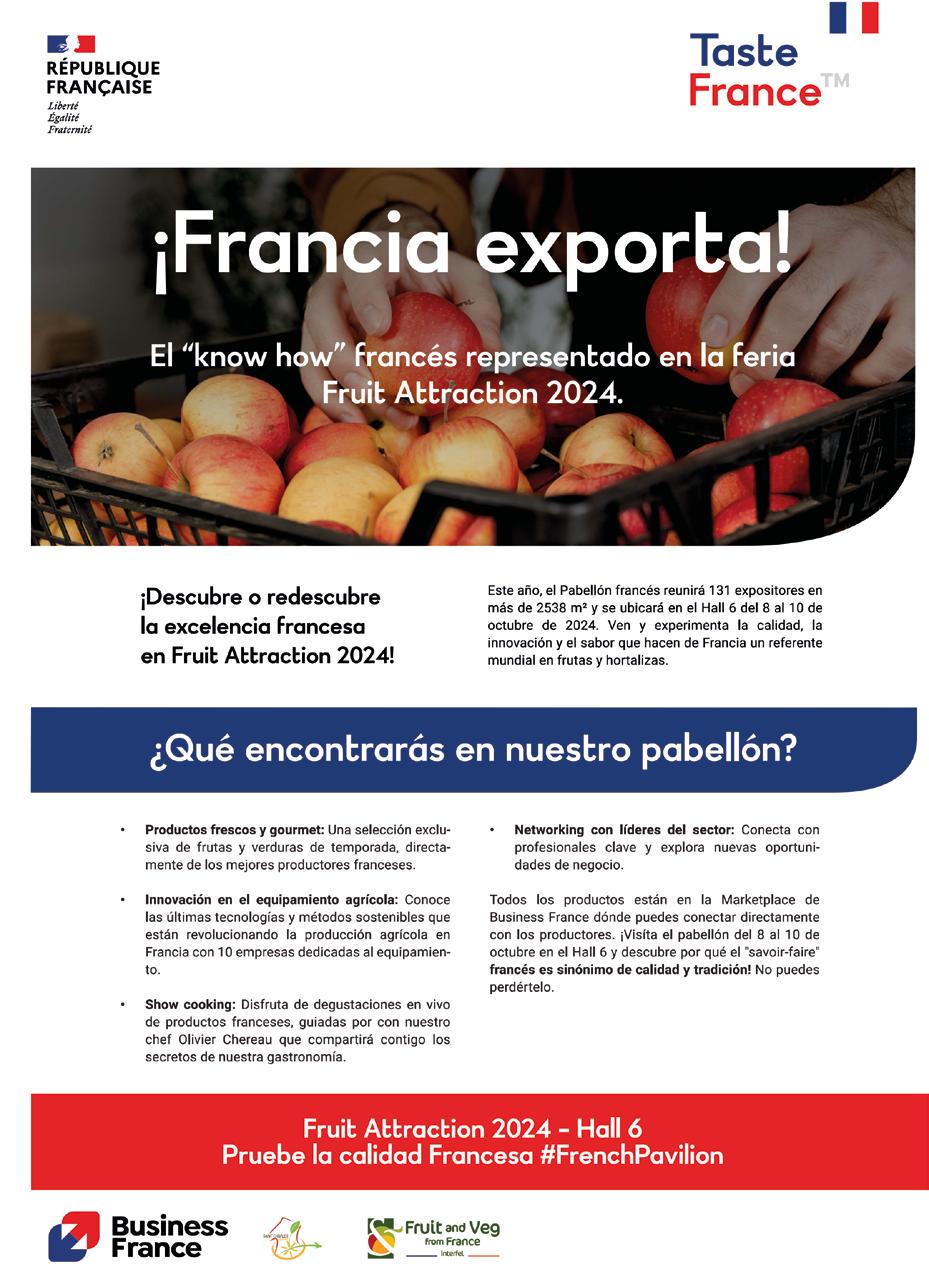
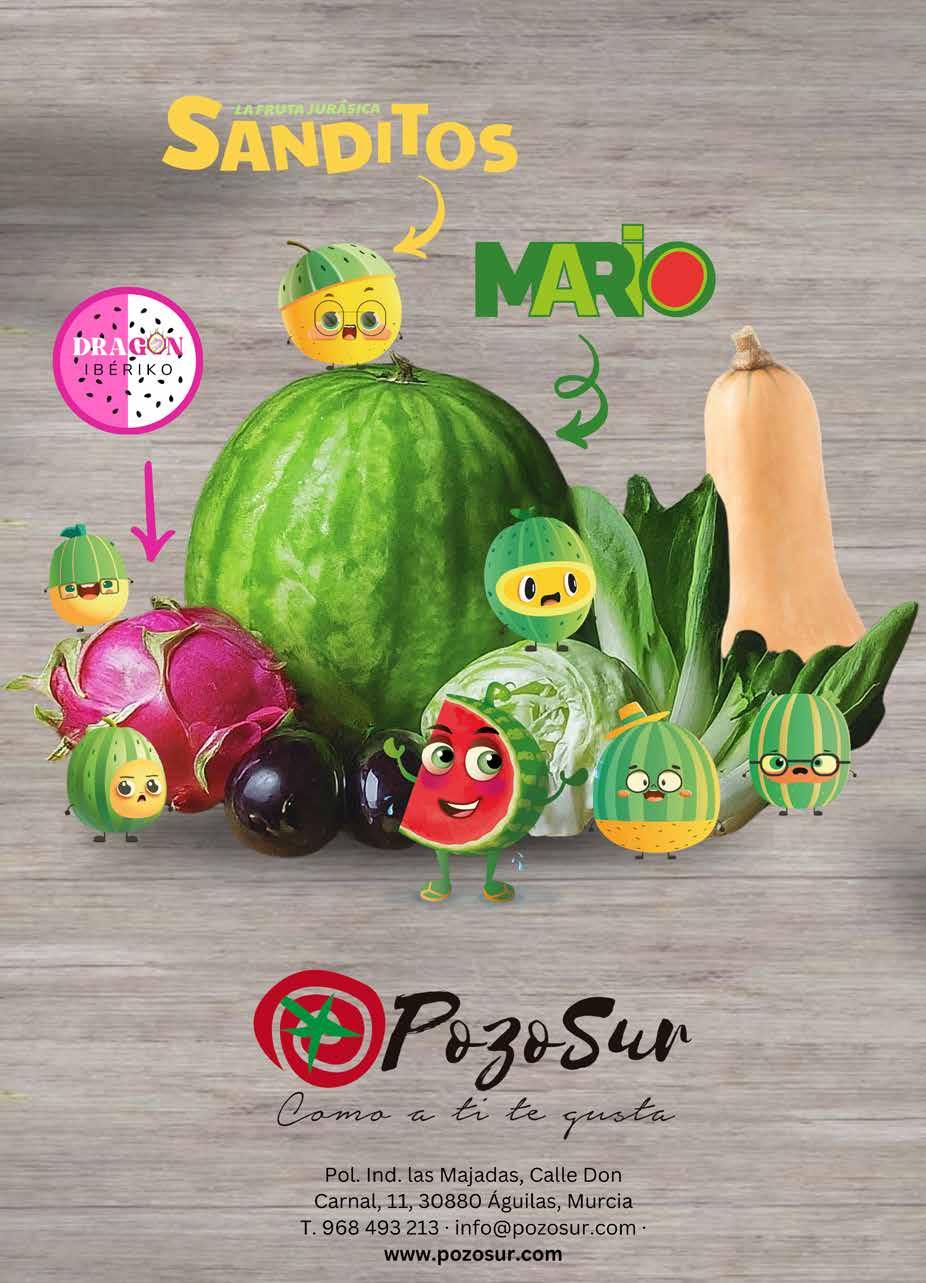
Este año crecerán un 20% en alcachofa, tanto en la variedad Blanca de Tudela como en Green Queen F1
Fruit Attraction es la cita anual más importante y esperada para Campo de Lorca-Cricket. Un evento para el que trabajan cuidadosamente cada detalle. Ejemplo de ello es su stand, diseñado con mimo para que refleje y comunique los valores de su marca Cricket, buscando conectar con clientes y amigos.
“La feria nos brinda una visibilidad que aprovechamos al máximo para impulsar nuestras líneas de productos, presentar novedades e innovaciones, compartir los proyectos más recientes en los que estamos trabajan-
recuperar los volúmenes de esta verdura que cuenta con una gran tradición en nuestra empresa”.
A nivel de producción, afrontan la temporada con muy buenas perspectivas. “Tras tres años de incertidumbre en la era post-Covid, observamos un comportamiento más estable en los mercados, lo que nos permite crear compromisos más sólidos con nuestros clientes. A pesar de venir de un verano duro, marcado por el calor y la sequía, confiamos en los recursos de los que disponemos para que esta sea una buena campaña. Contamos con fincas bien gestionadas, recursos hídricos y experiencia para asegurar la calidad y disponibilidad de nuestros productos”. Por otro lado, las perspectivas hídricas “nos hacen confiar en que los aportes que tenemos en la cabecera en el Tajo y el agua desalada sean suficientes para afrontar la campaña, a pesar de que no ha llovido mucho en la cuenca del Segura. Contamos con medios escasos pero suficientes”.

do y ofrecer experiencias gastronómicas únicas”, apunta Toñi Piernas, directora de comunicación de Cricket.
Novedades en lechuga y alcachofa
Como especialista en brásicas, Cricket continuará potenciando su ya consolidada gama de verduras que incluye brócoli, coliflor, col plana, col rizada, col kale, y Bimi, que goza de gran estabilidad en volumen de producción. Además, como novedad incorporan “dos nuevas pequeñas líneas de lechuga y col picuda que amplían nuestra oferta y diversifican nuestro portafolio”, explica Juan Marín, director general. Otro de los productos estrella de la campaña será la alcachofa, con un crecimiento estimado del 20% en la variedad Blanca de Tudela y en Green Queen F1. “Después de cinco años de baja producción por su reducida rentabilidad, este año apostamos por


Estabilidad en BIO e I+D
En BIO, siguen la tendencia de años anteriores y mantienen un crecimiento estable y sostenido en las líneas Cricket Bio de brócoli y coliflor. En I+D, arrancan la campaña con dos nuevos proyectos en colaboración con IMIDA y la UPCT para buscar soluciones a problemas de producción. Además, trabajan en el programa BIODiversityGrow junto a la Universidad Politécnica de Valencia, enfocado en la mejora continua de sostenibilidad y biodiversidad funcional, y la reducción progresiva de pesticidas en cultivos de alcachofa, brócoli y coliflor.
“Nuestro compromiso con la innovación en productos saludables se refleja en la gama de Crackers de verduras que lanzamos como prueba piloto en Fruit Attraction 2023”. Elaborados con ingredientes 100% naturales, incluyen los sabores de brócoli, alcachofa, kale y col lombarda, y un pack especial que reúne todos los sabores bajo el nombre de La Pandi. “Presentaremos la
versión definitiva de la línea en el Innovation Hub Awards, acercando nuestros productos a nuevos públicos”, cuenta Toñi Piernas. Asimismo, participarán en ‘Factoría Chef’ con Pablo González-Conejero con un showcooking para mostrar la versatilidad de sus verduras, ofreciendo una “experiencia gastronómica increíble”.
Presentarán la versión defInitiva de la línea de Crackers en el Innovation Hub Awards

This year they will grow by 20% in artichokes, both in the Blanca de Tudela variety and in Green Queen F1
Fruit Attraction is the most important and long-awaited annual event for Campo de Lorca-Cricket. An event for which they work conscientiously on every detail. An example of this is their stand, designed with care paid to each element to ensure that it reflects and communicates the values of their brand, Cricket, seeking to connect with both clients and friends.
“The trade fair brings visibility that we take full advantage of to promote our product lines, presenting new developments and innovations, sharing the latest projects we have been working on and offering unique gastronomic experiences,” Toñi Piernas, the Communications Manager at Cricket, indicates.
New developments in lettuces and artichokes
As a specialist in brassicas, Cricket will continue to strengthen its already consolidated range of vegetables, including broccoli, cauliflower, flat cabbage, curly cabbage, kale, and Bimi, which enjoys great stability in production volume. In addition, as a new development they are adding “two new small lines of lettuce and pointed cabbage that extend our offer and diversify our portfolio,” explains Juan Marin, the General Manager.
Another of the campaign’s star products will be the artichoke, with an estimated growth of 20% in the Blanca de Tudela variety and in Green Queen F1. “After five years of low production due to its reduced profitability, this year we have
decided to recover the volumes of this vegetable that has a long tradition in our company.”
On a production level, they are facing up to the season with very good prospects. “After three years of uncertainty in the post-Covid era, we are seeing a more stable behaviour on the markets, which allows us to create more solid commitments with our clients. In spite of coming from a tough summer, marked by the heat and the drought, we have placed our trust in the resources available to us to ensure that this will be a good campaign. We have well-managed farms, water resources and experience to ensure the quality and availability of our products.”
On the other hand, the water prospects “make us hope that the amount we have at the headwaters of the Tagus River and the desalinated water will be enough to tackle the campaign, in spite of the fact that it has not rained much in the Segura basin. We have limited resources, but they should be enough.”
In BIO, they are continuing with the trend from previous years and are maintaining a stable, sustained growth in the Cricket Bio broccoli and cauliflower lines.
In R&D, they are starting the campaign with two new projects working alongside IMIDA and the UPCT to seek out solutions to production problems. They are also working on the BIODiversityGrow programme with the Universidad
Politécnica de Valencia, focused on continuous sustainability and progressive reduction of pesticides in artichoke, broccoli and cauliflower crops.
“Our commitment to innovation in healthy products is reflected in the vegetable Crackers range that we launched as a pilot scheme at Fruit Attraction 2023.” Prepared using 100% natural ingredients, they include flavours such as broccoli, artichoke, kale, and Lombard cabbage, and a special pack that brings together all the flavours under the name of La Pandi. “We will present the final version of the line at the Innovation Hub Awards, bringing our products closer to new audiences,” Toñi Piernas states. Likewise, they will take part in ‘Factoría Chef’ with Pablo González-Conejero with a show cooking event to show the versatility of their vegetables, offering an “incredible gastronomic experience.”
They will present the fInal version of the Crackers line at the Innovation Hub Awards
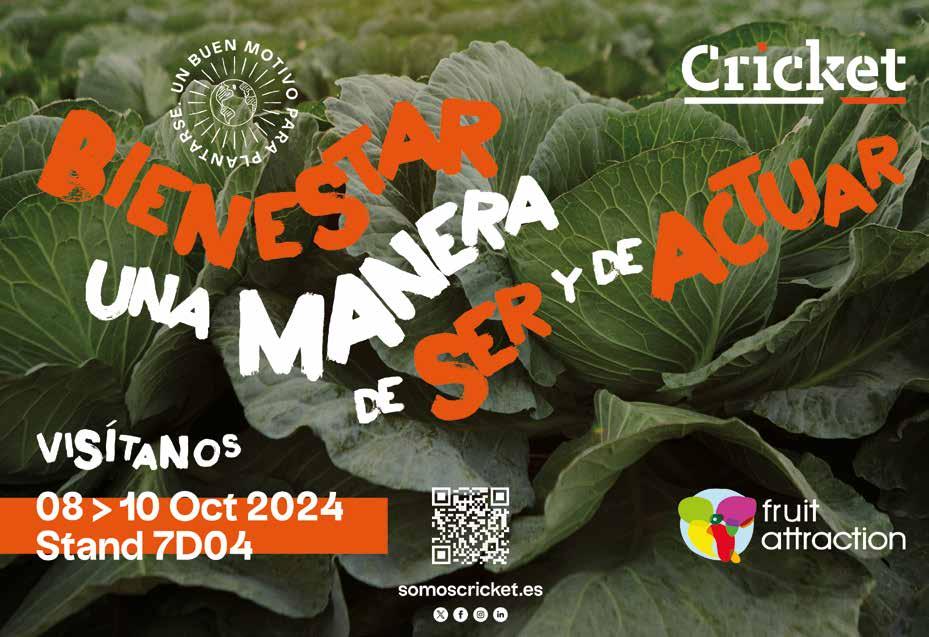
La almeriense Agrícola Navarro de Haro llega a Fruit Attracion (Stand 9C01) tras una buena campaña. Su producto estrella, la sandía, ha cerrado con un aumento de volumen del 24% y un 12% más de facturación, mientras que los costes han sido un 2% más altos respecto al año pasado. Un balance que los lleva a seguir reforzando el cultivo: en la próxima campaña, prevén incrementar un 10% el volumen.
No será el único producto en el que crecerán. Así lo adelanta el gerente, José Navarro: “Apostamos muy fuerte por la coliflor y el calabacín, sumando un 50% y un 48% de volúmenes, respectivamente, y aumentaremos un 33% en lechuga iceberg”. Para ello, llevarán a cabo inversiones en todo lo relacionado con la eficiencia energética (con plantas fotovoltaicas para autoconsumo), y sistemas de riego para ahorrar agua. Sobre este último aspecto, Navarro opina que es un problema “difícil de solucionar a corto plazo en el Levante. A nosotros nos afecta mucho, ya que tenemos bastante terreno en esa zona. Si no llueve tendremos problemas, y grandes”.
Para sortear la escasez hídrica y garantizar un mínimo de producto, tienen cultivos en distintas zonas que les permiten continuar las líneas de trabajo cuando vienen mal dadas. “Ya estamos presentes en Granada, Córdoba, Sevilla, Castilla-La Mancha…”.

Agrícola Navarro de Haro, the company from Almeria, is coming to Fruit Attraction (Stand 9C01) after a good campaign. Its star product, the watermelon, has finished the season with a 24% increase in volume, and its invoicing has risen by 12%, while the costs have been 2% higher compared to the previous year. A balance that is leading them to continue strengthening the crop: in the next campaign, they plan to increase their volume by 10%.
This will not be the only product that will be increasing. The manager, José Navarro, advances: “We are making a very serious commitment to cauliflowers and courgettes, adding 50% and 48% in volumes, respectively, and we will increase our iceberg lettuces by 33%.”
In order to do this, they will carry out investments in everything related to energy efficiency (with photovoltaic farms for self-consumption), and irrigation systems to save water. On this aspect, Navarro comments that it is a problem “that is difficult to resolve in the short term in the Levant region. It affects us a great deal, as we have a large amount of land in this area. If it doesn’t rain, we will have serious problems.”
To get round the water shortage and guarantee a minimum of produce, they have crops in different regions that allow them to continue the lines of work when these problems arise. “We are already present in Granada, Cordoba, Seville, Castilla-La Mancha…”


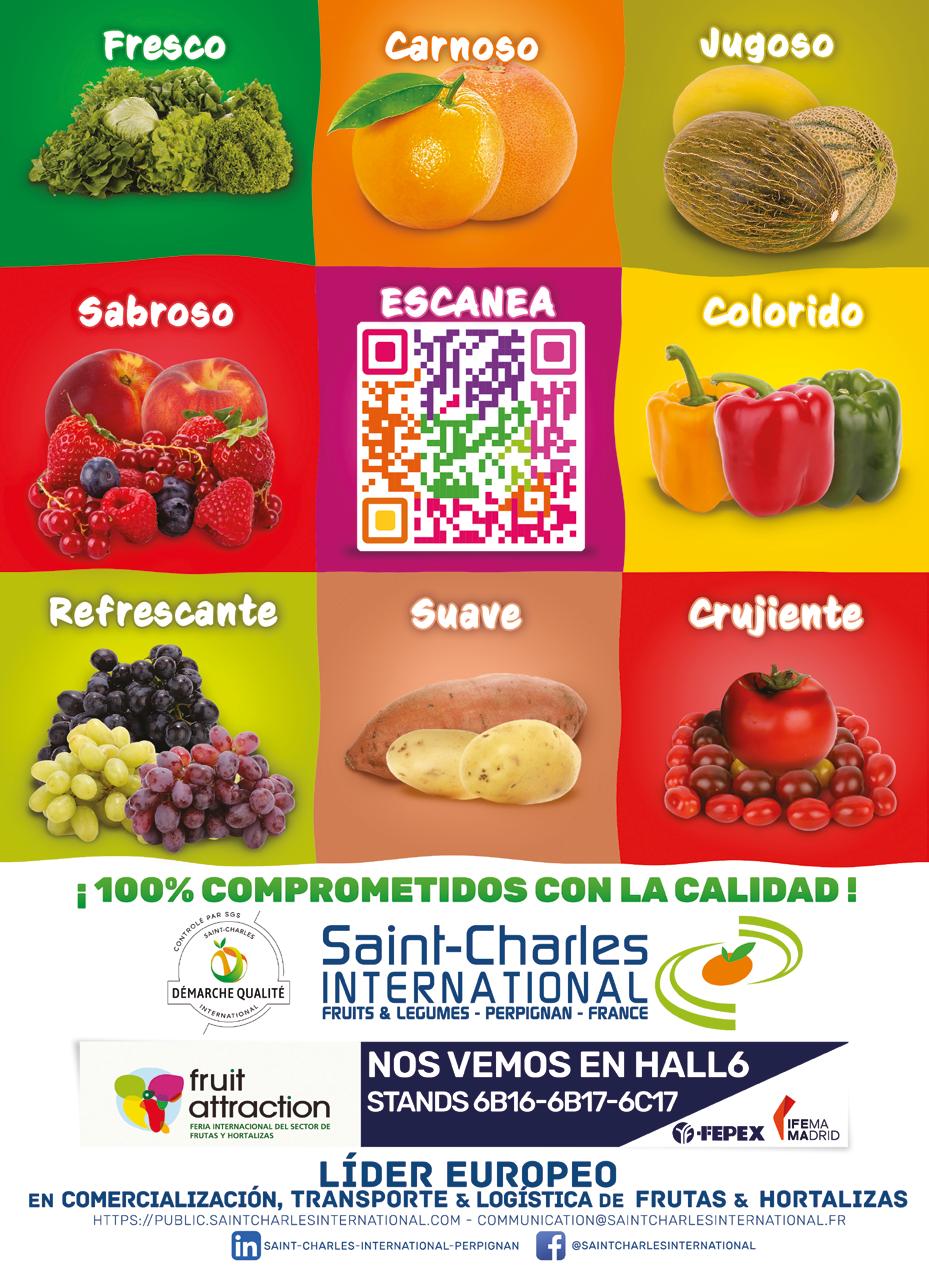
Junto a variedades de manzana como RedPop®/CIVM49 y Desy®/CIVM65, tiene otros materiales vanguardistas como la pera Cheeky®/Caperose y la fresa Shayda®
Innovar en el ámbito de la fruticultura para que resulte más eficiente y sostenible a través de un desarrollo varietal preciso. Esta es la misión que guía a CIV (Consorzio Italiano Vivaisti) a la hora de afrontar proyectos para el mercado frutícola español. Federico Stanzani, director comercial de CIV, empresa italiana de mejora genética ubicada en la provincia de Ferrara, explica: “España tiene unas condiciones edafoclimáticas similares a las de Italia, en las que pueden prosperar nuestras variedades seleccionadas. El objetivo es obtener manzanas que destaquen en el mercado y permitan conseguir los máximos resultados tanto en el campo como en la venta”. La colaboración con el prestigioso centro de investigación catalán especializado en agricultura y nutrición, IRTA, y con Certiplant, empresa de viveros perteneciente al Grupo Nufri, le permite mantener un control directo de sus selecciones en la principal zona española de producción de manzana. Algunas de estas variedades y selecciones han mostrado una clara resistencia al golpe de sol en las condiciones de suelo y clima mencionadas. Un claro ejemplo son RedPop®/CIVM49 y Desy®/ CIVM65, que han demostrado sus ventajas
en varios estudios realizados en los últimos años en centros de investigación de Lérida. Junto al desarrollo de la resistencia al golpe de sol, CIV trabaja en variedades resistentes a enfermedades como la sarna. En la actualidad, todo el catálogo que desarrolla y las principales variedades que ya produce presentan esta cualidad. De esta forma, la empresa de mejora genética contribuye a la sostenibilidad de los cultivos.

Tienen un acuerdo exclusivo para el ensayo y desarrollo comercial de la pera
Acuerdos exclusivos A raíz de las nuevas alianzas estratégicas que ha puesto en marcha en los últimos meses, CIV introducirá en el mercado variedades aún más vanguardistas. Entre ellas figura el acuerdo recientemente firmado con Culdevco (Pty) Limited para el ensayo y desarrollo comercial de la variedad de pera Cheeky®/ CapeRose. Este “acuerdo exclusivo de licencia maestra” cubre un área de importancia estratégica que incluye Europa, Turquía e Israel, y representa un paso significativo hacia la introducción a gran escala de variedades de fruta innovadoras. A través de esta asociación, CIV se compromete a promover una variedad que destaca por sus características excepcionales y que representa una respuesta eficaz a las necesidades del mercado en términos de calidad y resistencia a condiciones climáticas adversas. El Centro de Investigación también está obteniendo excelentes resultados en el sector

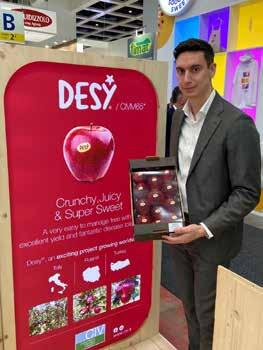
CIV estará en Fruit Attraction en Pab. 8, stand 8C12
de la fresa. La variedad Shayda®/CIVL519 está demostrando ser una propuesta interesante para el mercado español. Gracias a sus características de alta calidad, precocidad y productividad, Shayda® ha obtenido una rápida acogida entre los productores locales, consolidándose como una opción prometedora en comparación con las variedades actualmente disponibles.
En Fruit Attraction 2024, CIV estará presente en el Stand 8C12 del Pabellón 8. Allí presentarán los proyectos más relevantes de este año y los visitantes tendrán la oportunidad de descubrir las variedades que más éxito están teniendo en el mercado español. “CIV se posiciona en el mercado español como un socio innovador para el desarrollo de variedades alineadas con las necesidades de los fruticultores, con el objetivo de crear proyectos a medida que hagan la fruticultura más sostenible y eficiente”.

Alongside apple varieties such as RedPop®/CIVM49 and Desy®/CIVM65, it has other cutting-edge materials such as the Cheeky®/Caperose pear and the Shayda® strawberry
Innovating within the fruit growing area to make it more efficient and sustainable through precise variety development. This is the aim that guides CIV (Consorzio Italiano Vivaisti) when tackling projects for the Spanish fruit growing market. Federico Stanzani, the Sales Manager at CIV, an Italian genetic improvement company located in the province of Ferrara, explains: “Spain has soil and climate conditions that are similar to those in Italy, in which our selected varieties can prosper. The aim is to obtain apples that stand out on the market and allow for optimum results, both in the fields and in sales.”
The collaboration with the prestigious Catalan research centre specialising in agriculture and nutrition, IRTA, and with Certiplant, a nursery company belonging to the Nufri Group, is allowing it to maintain a direct control over its selections in the main Spanish apple production zones. Some of these varieties and selections have shown clear resistance to over exposure to the sun in the aforementioned soil and weather conditions. Clear examples of this are RedPop®/ CIVM49 and Desy®/CIVM65, which have shown their advantages in several studies carried out in recent years in research centres in Lerida. Along with the development to overexposure to the sun, CIV is working on varieties resistant to diseases such as apple scab. Currently, the
entire catalogue that it is developing and the main varieties that it already produces all include this quality. In this way, the genetic improvement company contributes to the crop sustainability.
As a result of the new strategic alliances that it has started up in recent months, CIV will introduce varieties that are even more cutting-edge onto the market. Amongst these, the agreement recently signed with Culdevco (Pty) Limited for the trials and commercial development of the pear variety Cheeky®/CapeRose. This “exclusive master licence agreement” covers a strategic area of importance that includes Europe, Turkey and Israel, and it represents a significant step towards the large-scale introduction of innovative fruit varieties. Through this association, CIV undertakes to promote a variety that stands out due to its exceptional characteristics and that represents an effective response to the market requirements in terms of quality and resistance to bad weather conditions.
The Research Centre is also obtaining excellent results in the strawberry sector. The variety Shayda®/CIVL519 is proving to be an interesting proposal for the Spanish market. Thanks to its characteristics of high quality, earliness and productivity, Shayda® has been quickly selected
They have an exclusive agreement for trials and commercial development of the Cheeky®/ CapeRose pear
by local producers, becoming consolidated as a promising option compared to the varieties that are currently available.
At Fruit Attraction 2024, CIV will be present on Stand 8C12 in Hall 8. There, they will present their most relevant projects of this year, and visitors will have the chance to discover the varieties that are showing most success on the Spanish market.
“CIV is positioned on the Spanish market as an innovative partner for the development of varieties in line with the fruit growers’ needs, aimed at creating tailor-made projects that make fruit growing more sustainable and efficient.”

En un año fructífero en el que la marca continúa sacando músculo en los lineales de la distribución y ahondando en la mente del consumidor, Princesa Amandine llega a Fruit Attraction pisando fuerte
La marca, que se encuentra muy asentada en la gran distribución de carácter nacional, celebra de nuevo su vuelta a otro de los grandes supermercados, la cadena Día. Sin embargo, anhela su expansión en los supermercados regionales, en
todo y teniendo en cuenta que, una vez comprado el producto, no todas las personas participan.
Muy preocupada por su posicionamiento, Amandine realiza anualmente un panel de consumidores para conocer datos generales del sector de la patata y, sobre todo, para saber cuál es la percepción de su marca entre los consumidores. Una de sus mayores singularidades es su participación con diferentes actores de la distribución en la gestión de la categoría de patata, con muy buenos resultados. “Se trata de mejorar el lineal de la patata, de intercambiar información, de dar una mayor visibilidad al producto y estar abiertos a una mejora continua en nuestra categoría. Y no es sólo por nuestra marca sino por toda la categoría,” remarca Beranger. Para la feria Fruit Attraction, la marca prepara diferentes acciones como la presencia de diversos tótems con premios para aquellos que participen y otras actividades de la mano de la Asociación 5 al Día.
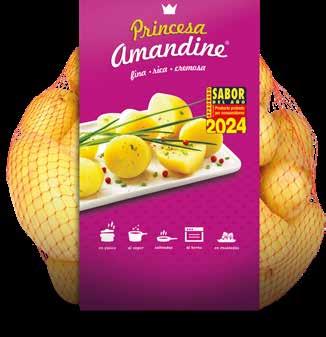
los cuales ya ha hecho entrada, sobre todo en el territorio catalán. “Nuestro compromiso con la expansión continúa porque existe una gran red de supermercados regionales a los que esperamos llegar en breve. De momento, estamos en el buen camino,” asegura el director general, Jean Michel Beranger.
Princesa Amandine conoce bien el valor de la comunicación y hace un buen uso de él tanto en el medio digital como en televisión, donde volverá este otoño-invierno con sus spots en el canal 4.
Con posterioridad, y ya con vistas a la campaña de Navidad, la firma prepara una campaña de promoción en la que regalará tarjetas de crédito de 250 euros para hacer un poco más llevadera una época de mucho gasto. Un caso de éxito han sido las promociones que llevó a cabo este verano en las que llegaron a participar 1.621 personas en el sorteo de 62 air fryers,


EN La campaña de promoción de Navidad se entregarán premios de 250 euros
Fruit Attraction
In a fruitful year in which the brand continues to Flex its muscles on the supermarket shelves, delving into consumers’ minds, Princesa Amandine is coming to Fruit Attraction with a bang
The brand, which has a very solid position in Spanish national distribution, is celebrating its return to another of the large supermarkets, the Día chain. However, it aspires to expand in the regional supermarkets, where it has already arrived, particularly in Catalonia. “Our commitment to expansion continues because there is an important network of regional supermarkets that we hope to reach in the near future. At the moment, we are on the right track,” guarantees the General Manager, Jean Michel Beranger. Princesa Amandine is well aware of the value of communication and makes good use of it, both on digital media and on the television, where this autumn-winter it will return with its commercials on Spanish channel 4.
Following this, looking towards the Christmas campaign, the company is preparing a promotion campaign in which it will give out credit cards of 250 euros to lighten the load of this expensive period.
The promotions carried out this summer were a success, with the participation of 1,621 people in the prize draw of 62 air fryers, taking into account that not everyone takes part when they have purchased the product.
Always showing important concern about its positioning, every year Amandine carries out a consumer panel to discover general data about the potato sector and, above all, to find out what the perception of their brand is amongst consumers. One of its greatest singularities is its participation with different distribution agents in the management of the potato category, with very good results. “The idea is to improve the supermarket shelves containing potatoes, exchanging information in order to give greater visibility to the produce, and to be open to continuous improvement in our category. And not just for our brand, but rather for the whole category,” Beranger comments.
For the Fruit Attraction trade fair, the brand is preparing different actions such as the presence of several different stands with prizes for those taking part, and other activities alongside the ‘5 al Día’ Association.


Fruit Today tuvo la ocasión de hablar con Carlos Esteve, director comercial de Onubafruit,
quiEn nos resumió los pormenores de la pasada campaña y, sobre todo, destacó la importancia de las nuevas variedades que su grupo de cooperativas pone en el mercado
¿Me puede hacer un resumen y valoración de lo que representó la campaña anterior?
La campaña en general ha sido satisfactoria. Las grandes dificultades e incertidumbres que teníamos al inicio, provocadas básicamente por la sequía, se fueron diluyendo con las esperadas lluvias que hicieron acto de presencia a final de año y que nos acompañaron durante el invierno y principio de primavera. Aunque estas lluvias también provocaron pérdidas en producción al afectar la calidad de las cosechas, fueron de gran alivio para todos los productores. En frambuesa, la producción fue menor que el año anterior puesto que disminuyen las plantaciones. Los precios fueron buenos, pero la rentabilidad ha sido muy dispar y el riesgo soportado muy elevado. En fresa, las precipitaciones abundantes desde principios de 2024 provocaron numerosos problemas de calidad y reclamaciones, lo que supuso una caída de volúmenes por la cantidad de fruta que no se pudo comercializar durante varias semanas. Pero después de Semana Santa nos encontramos con un mercado muy equilibrado entre oferta y demanda, sin los habituales picos de producción en estas fechas y, por tanto, precios más altos de lo habitual. Además, la campaña se prolongó hasta primeros de junio.
El arándano ha estado muy influido durante la primera mitad de la campaña por la baja oferta de producto peruano, con lo que la demanda ha sido muy buena, así como
por el mes de mayo sin fuertes picos ni acumulaciones de producto.
¿Qué expectativas se barajan para la actual campaña?
Los preparativos se están desarrollando con bastante “normalidad”. Esta nueva “normalidad” que se caracteriza por las restricciones hídricas para el riego, en el uso de productos en desinfección de suelos y plaguicidas y las potenciales dificultades para cubrir las necesidades de mano de obra. Todo ello en un clima cambiante en lo meteorológico y en lo normativo.
Las plantaciones de frambuesa están ya muy avanzadas, pero para que comiencen las de fresa aún quedan unas semanas. El arándano, sigue avanzando el proceso de cambio varietal y la expansión del periodo productivo.
En términos de variedades, ustedes representan la avanzadilla del sector tanto en frambuesa como en arándano. Disponemos de un programa varietal propio para arándano y fresa. En arándano ya en 2022 lanzamos 5 variedades de las que ya la campaña pasada produjimos más de 3.000t. Demba y Dana son las principales y destacan por su precocidad, sabor y productividad.
En fresa nuestro programa comenzó hace 3 años y estamos aún en el periodo inicial pero ya con algunas selecciones prometedoras.
Por lo que respecta a la frambuesa tenemos tres variedades exclusivas para nuestro territorio que son Lagorai, Shani y Malling
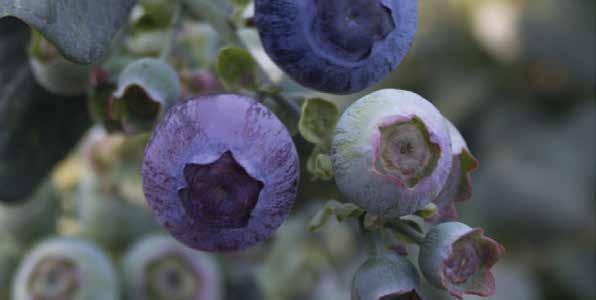
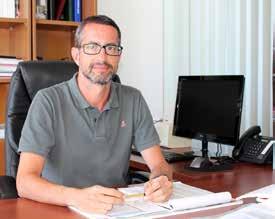
Bella. Esta campaña comenzaremos a tener producción de una nueva variedad que esperamos se incorpore a nuestro portfolio.
¿Qué retos tiene el sector en los años venideros? ¿Y en concreto cuáles son los desafíos de Onubafruit?
Nuestra misión es la misma que cuando iniciamos nuestra andadura hace más de 20 años: continuar ofreciendo un producto que satisfaga a los clientes con el objetivo de maximizar la rentabilidad del agricultor para lograr que su actividad perdure en el tiempo. Todo ello siendo responsables con el entorno y con las personas.
Los mayores retos a los que nos enfrentamos y que eclipsan a otros muchos son la gestión hídrica y la mano de obra. Casi nada.
En 2022 se pusieron en el mercado 5 nuevas variedades de arándanos

Fruit Today had the chance to talk to Carlos Esteve, the Sales Manager at Onubafruit, who summarised the details of the last campaign for us and, above all, talked about the importance of the new varieties that his group of cooperatives is putting on the market
Could you give me a summary and valuation of the previous campaign?
In general, the campaign was satisfactory. The significant difficulties and uncertainties that we had at the beginning, basically caused by the drought, were eased with the long-awaited rain that appeared at the end of the year and that accompanied us during the winter and the start of the spring. Although this rainfall also causes production losses, as it also affected the quality of the harvests, it came as a great relief for all the producers.
In raspberries, the production was lower than the previous year, as there was a decrease in the plantations. The prices were good, but the profitability was very uneven, and the risk was very high.
In strawberries, the abundant rainfall since the beginning of 2024 caused many problems regarding quality and complaints, which meant a drop in volumes due to the amount of fruit that could not be marketed over several weeks. But after Easter, we found a market that was very balanced between offer and demand, without the normal production peaks on these dates and, therefore, prices higher than usual. The campaign also lasted until the beginning of June.
Bilberries have been seriously influenced by the low offer of Peruvian produce during the first half of the campaign, meaning the demand has been good up to the month of May, without any important peaks or stockpiles of produce.
What expectations are being considered for the current campaign?
The preparations are developing “normally”. This new “normality” that is characterised by water restrictions for irrigation, by the use of soil disinfection products and pesticides and by potential difficulties to cover the labour requirements. All of this in a changing climate, in both weather conditions and regulations.
The raspberry plantations are already significantly advanced, but there are still a few weeks to go before the strawberries start. Bilberries are continuing their variety change process and the expansion of the production period.
In terms of varieties, you are leading the way for the sector in both raspberries and bilberries.
We have our own variety programme for bilberries and strawberries. Back in 2022, we launched 5 varieties of bilberries, of which we produced over 3,000 tonnes in the last campaign. Demba and Dana are the main ones, and their earliness, flavour and productivity make them stand out.
In strawberries our programme started up 3 years ago and we are still in the initial period, but we already have some promising selections. With respect to raspberries, we have three exclusive varieties for our region, which are Lagorai, Shani, and Malling Bella. This campaign we will start to have production of a new variety that we hope to incorporate to our catalogue.
What challenges does the sector have for the next few years? And specifically, what are Onubafruit’s challenges?
Our purpose continues to be the same as it was 20 years ago, when we started our project: to continue offering a product that satisfies our clients, aimed at maximising the farmers’ profitability in order to ensure their activity lasts over time. All of this being responsible with the environment and with people.
The greatest challenges we are facing and that overshadow many others, are water management and labour. Almost nothing at all…

Para Los Gallombares Fruit Attraction “supone una gran oportunidad para exponer nuestro producto y expandirnos a nivel internacional. El objetivo es reunirnos con los actuales clientes para analizar y programar la campaña e intentar captar nuevos clientes y mercados”, adelanta el responsable comercial, José Ángel Delgado.
Como novedades, presentarán en su stand (9C17), nuevos formatos de espárrago verde. Además, llevarán a cabo un showcooking con cocineros profesionales para que los asistentes experimenten el sabor y calidad de su espárrago verde. También hacen balance de la campaña pasada, “positiva en producción, a pesar de los problemas por la falta de agua, pero no tan positiva en cuanto a precios”, y en el próximo ejercicio contarán con un 5% más de superficie. “Es un poco complicado predecir cómo va a ser. Este producto depende de la climatología, pero, como siempre, la afrontaremos con buena actitud”.
Sin duda, la sequía será una de las variables más importantes. “Es un gran problema. Tenemos un 50% de plantación en tierras de secano que solo se riegan con agua de lluvia. Esperemos que llueva en otoño e invierno para llevar a cabo una buena campaña”.
Tras la construcción de su nuevo almacén, operativo al 100%, afrontan un nuevo proyecto de energía renovable. “El objetivo es producir un 80% o más de nuestro consumo eléctrico con placas solares”.
Los Gallombares has a 5% increase in surface area
For Los Gallombares Fruit Attraction “means a great opportunity to display our produce and expand internationally. The aim is to meet up with our current clients to analyse and programme the campaign, and to try to win over new clients and markets,” the Sales Manager, José Ángel Delgado, advances.
As new developments, they will present, on their stand (9C17), new green asparagus formats. Additionally, they will carry out a show cooking event with professional chefs to assure that visitors will be able to experience the flavour and quality of their green asparagus.
Also, they are also taking stock of the last campaign, “positive in production, in spite of the problems due to the scarcity of water, but not as positive regarding prices,” and next year they will have 5% more surface area. “It is slightly complicated predicting what the season is going to be like. This produce depends on the weather conditions, but, as always, we will look towards it with a good attitude.”
Without any doubt, the drought will be one of the most important variables. “It is a serious problem. We have 50% of our plantations on dry land, with only rainwater irrigation. We hope it will rain in the autumn in order for us to have a good campaign.”
Following the building of their new warehouse, now up and running 100%, they are looking towards a new renewable energy project. “The aim is to produce 80% or more of our electricity consumption using solar panels.”
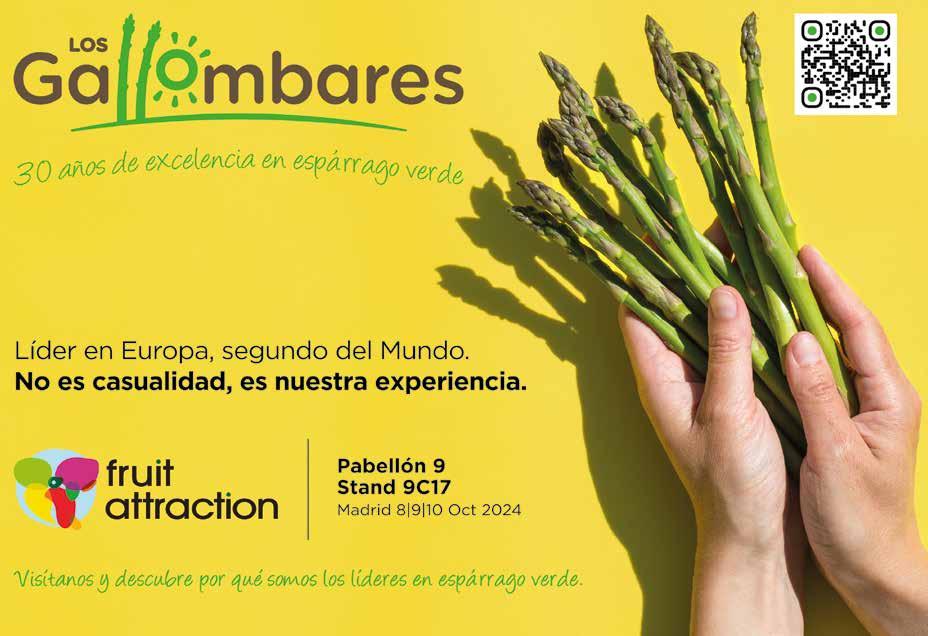
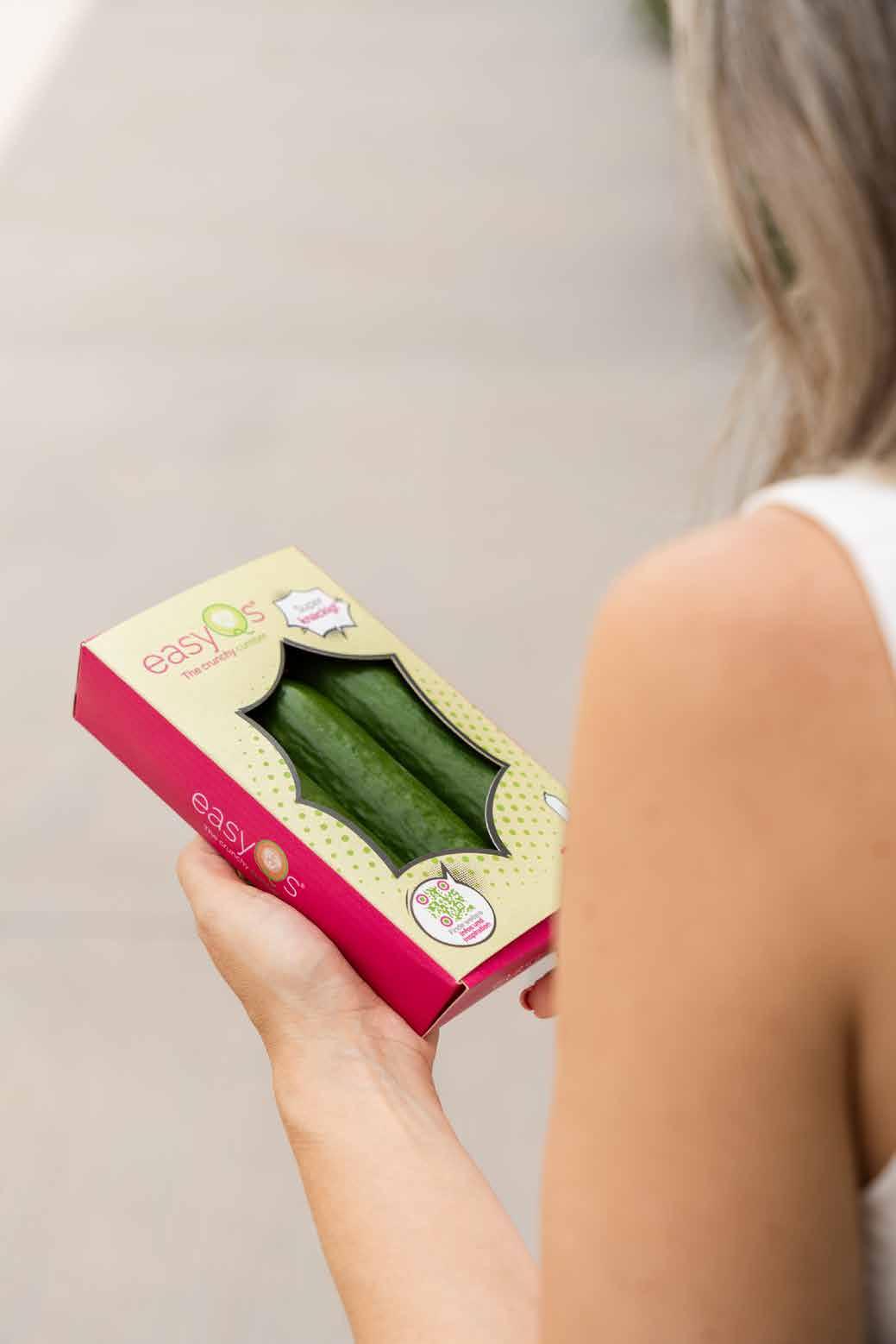
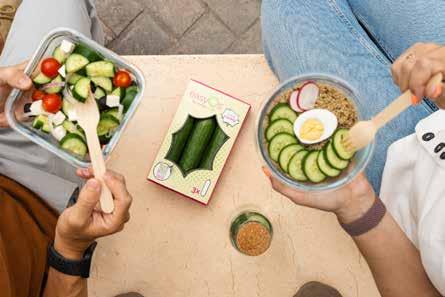
Pocos días después de haber acabado la feria de Asia Fruit Logistica, Fruit Today tuvo la oportunidad de hablar con Antonio Caballero, gerente de la fIrma Frutas Torero
¿Qué valoración hace de este evento ferial al que siempre acude?
Creo que es muy interesante ampliar nuestra red comercial porque estamos muy centrados en los países europeos y la diversificación es una gran baza. Acudir a esta feria significa tener contactos con una gran cantidad de países, que en el futuro pueden ser compradores, como el caso de Corea, Malasia, Singapur, China, etc.
¿Qué estimación puede hacerme de la actual campaña de uva?
La primera característica es que ha sido una campaña que adelantó su comienzo unas dos semanas y calculamos que acabará, incluso, un mes antes de lo previsto. Su comportamiento entra dentro de la normalidad. Empezó bien porque los volúmenes eran pocos, pero, después, con mayores cantidades en el mercado, siempre aparece un pequeño bache y se produce una bajada de precios que luego tiende a remontarse. En estos momentos (mitad de septiembre) con unos volúmenes menores, la demanda es buena. En uva blanca, por ejemplo, no
“the
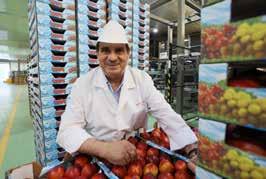
tenemos capacidad para atender a toda la demanda que existe.
¿Siguen aumentando su producción?
El último incremento se produjo el año pasado, año en el que sumamos unas 53 hectáreas más, de las que 30 fueron de uva y el resto de fruta de hueso.
Hablando de fruta de hueso. ¿Cómo cerró Torero la campaña iniciada en abril? Ésta fue un poco más complicada. Comenzó bastante bien el mes de abril, pero cuando llegó el 10 de mayo, empezó a perder rentabilidad. Esta situación se prolongó hasta
A few days after the end of the Asia Fruit Logistica trade fair, Fruit Today had the chance to talk to
What is your assessment of this trade fair, which you always attend?
I think that it is very interesting to extend our sales network because we are highly concentrated on the European countries, and diversification is a great asset. Attending this trade fair means making contacts with many countries, which in the future could be purchasers, such as the cases of Korea, Malaysia, Singapore, China, etc.
What estimate can you give us regarding the current grape campaign?
The first characteristic is that this campaign started around two weeks early and that we calculate it will end up to a month before time. Its behaviour is actually quite normal. It started off well because the volumes were small, but later on, with larger amounts on the market, a small slump always appears, with a drop in prices that then tends to rise again. At the moment (mid-September), with smaller volumes, the demand is good. In white grapes, for example,

we don’t have the capacity to attend to all the demand.
Are you continuing to increase your production?
The last increase occurred in 2023, when we added another 53 hectares, of which 30 were for grapes and the remainder for stone fruit.
Talking about stone fruit, how did Torero end the campaign that started in April?
This was slightly more complicated. It started off well in April, but by the time we reached the 10th of May, it began to lose profitability. This situation continued until the beginning of June. The truth is that without the month of April it would have been a bad campaign. It was a worse campaign than the preceding one, always regarding average prices per kilo.
Your company has export markets in its DNA. How are two of your main destinations, England and Germany, performing?
Historically, we have had a very close relationship with the British market, but things have changed a great deal and it no longer represents
principios de junio. En realidad, si no hubiera sido por el mes de abril hubiera resultado una mala campaña. Fue una temporada peor que la precedente, siempre hablando de precios medios por kilo.
Ustedes llevan en el ADN, los mercados de exportación. ¿Cómo se encuentran dos de sus principales destinos Inglaterra y Alemania?
Históricamente hemos tenido una relación muy cercana al mercado británico, pero las cosas han cambiado mucho y ya no representa lo que era hace décadas, todo y que sigue siendo un mercado de gran importancia. Alemania es nuestro soporte comercial, el mercado donde más vendemos en la actualidad y si algo ocurriera en este país, seguro que nos afectaría de lleno.
Murcia como potencia productora de uva tiene mucho que decir en Europa, ¿Cuáles son los retos de este sector?
El principal desafío pasa por superar o reconducir las restricciones que tenemos con las aplicaciones de fitosanitarios. Si seguimos así, llegará un día en que no podamos colocar el producto en el mercado.
At the moment, the demand for white grapes is greater than the offer
what it was a few decades back, although it continues to be a very important market. Germany is our commercial support, the market where we sell most at present and if anything were to happen there, I am certain it would have a very important effect on us.
As a powerful grape producer, Murcia has a great deal to say in Europe. What are this sector’s challenges?
The main challenge involves overcoming or redirecting the restrictions that we have with plant protection applications. If we carry on like this, the day will come when we will not be able to put produce on the market.
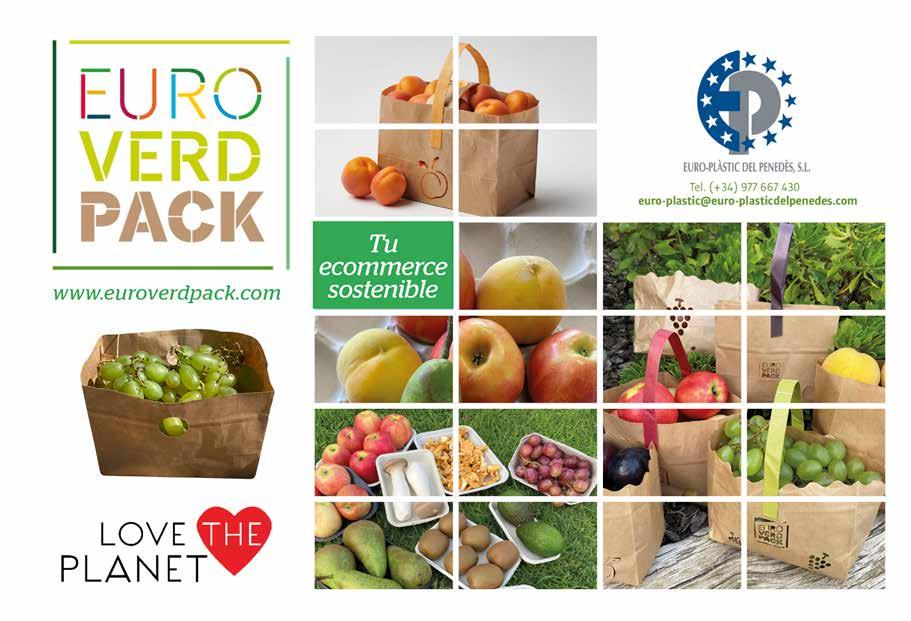

La fIrma murciana cierra un año en positivo y se prepara para la próxima con cautela, con un ligero aumento de producciones, conforme a una fILosofía que la ha visto crecer desde 2007
Fruit Today habló con Adolfo García, gerente de la firma, profundo conocedor de la agricultura del Campo de Cartagena y persona muy crítica con la situación que padece la agricultura en estos momentos.
Usted es muy crítico con las políticas que se están llevando a cabo en la agricultura.
Por supuesto, es muy descorazonador ver cómo el campo, del que comemos todos, está en unos de sus momentos más preocupantes. Son varios los motivos, pero el más acuciante es la falta de agua. Es urgente tener un plan hidrológico nacional que garantice su suministro. Tenemos, además, la competencia desleal de países terceros, que no están sometidos a las mismas normas de calidad y seguridad que nosotros ni sufren una burocracia asfixiante.
Lo que hemos construido a través de muchas generaciones, tiende a perderse porque no se da el relevo generacional; el ‘know how’ de nuestros padres y abuelos, transmitido durante muchas generaciones y mejorado y tecnificado desde los años 90
se pierde. Una de las estrategias principales del estado debe ser mantener viva su agri-
Estamos inmersos en un proyecto para revalorizar los subproductos
cultura para que su despensa no dependa de países terceros.
¿Qué perspectivas existen para la próxima temporada de invierno y cómo han acabado la temporada?
Este año, nuestro objetivo pasa por mantener un leve crecimiento con respecto al año anterior. Si se diera falta de agua sería una catástrofe, y por lo que vamos escuchando, no está garantizada al 100%; por tanto, hay que actuar con cierta cautela. Por otro lado, la producción de limón estará más controlada en términos cuantitativos, lo que significa un respiro frente a la situación pasada. La campaña de pimiento de
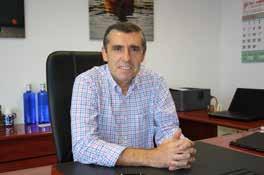
primavera ha ido bien, creo que en algunos casos los precios medios han sido superiores a los del año anterior.
¿Qué nuevas líneas de investigación lleva a cabo Camposeven?
Esta temporada, y con la ayuda de la agencia de innovación, AINNOA, vamos a iniciar un proyecto encaminado a poner en valor los subproductos, es decir, intentar darles otro uso, además del puramente alimentario. Estamos pensando en el apio, del que el 40% se queda en el bancal. También intentaremos hacerlo con el brócoli, el limón o el pimiento.
Fruit
The company from Murcia is closing the year with positive fIgures and it is getting ready for the next one cautiously, with just a slight increase in productions, in line with the philosophy used to grow the fIrm since 2007
Fruit Today talked to Adolfo García, the company’s Manager, who has an in-depth knowledge of farming around the Campo de Cartagena and who is highly critical of the situation that agriculture is suffering from at present. You are very critical of the policies that are being carried out in agriculture. Of course, it is very disheartening to see how the fields, which feed us all, are at one of their most concerning moments. There are several reasons behind this, but the most pressing one is the lack of water. A Spanish national hydrological plan is urgently needed to guarantee the water supply. We also have unfair competition from third countries, which are not subjected to the same quality and safety regulations as us, nor do they suffer from our stifling red tape.
All that we have built over many generations, is tending to be lost because there is no generational handover; the ‘know how’ of our parents and grandparents, transmitted over

We are immersed in a project to revalue sub-products
many generations and improved and technified since the 1990s, is being lost. One of the State’s main strategies should be to keep its agriculture alive to ensure that the national storerooms do not depend on third countries. What are the prospects for the next winter campaign and how have you finished the season?
This year, our aim involved maintaining a slight growth compared to the previous year. If there were to be a water shortage it would be a disaster, and everything we are hearing indicates that it is not guaranteed 100%; therefore, we need to be cautious before acting.
Furthermore, lemon production will be more controlled in quantitative terms, which gives us some respite following the previous situation. The spring pepper campaign went well; I think

that in some cases the average prices were higher than last year’s. What new lines of research are Camposeven carrying out?
This season, with the help of the innovation agency AINNOA, we are going to start up a project aimed at giving value to the sub-products, that is to say, trying to give them another use, in addition to just food. We are thinking about celery, of which 40% gets left on the terraces. We will also try to do the same with broccoli, lemons or peppers.

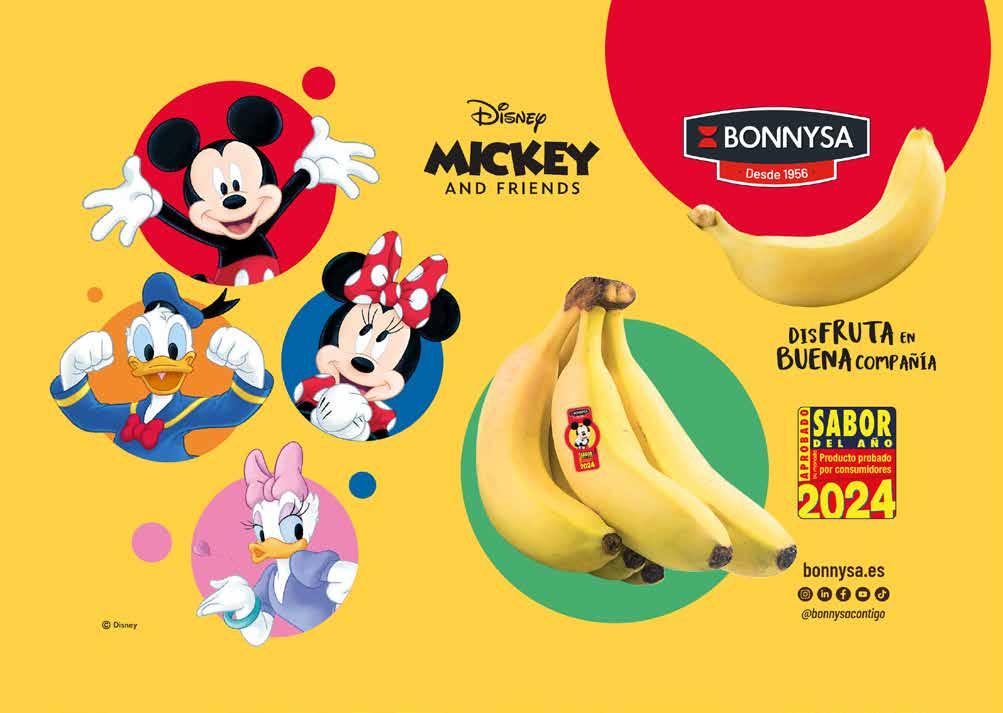
En el pabellón 6 de Fruit Attraction se podrá encontrar una amplia representación francesa a través del grupo exportador
Presente desde la primera edición de Fruit Attraction, Saint-Charles Export, grupo exportador de pymes, volverá a estar presente y con fuerza en esta feria con 97 empresas tanto del sector hortofrutícola y como de otros sectores auxiliares. Este año, Saint-Charles Export establece un nuevo récord con 97 empresas presentes en una superficie total de 634 m², de los cuales 320 m² son de espacio colectivo. En el programa propio de Saint-Charles Export, entre las actividades previstas, se ofrecerán dos almuerzos a las empresas asociadas expositoras, así como a sus clientes y proveedores: uno tendrá lugar el martes 8 de octubre a las 12:30 h, patrocinado por Crédit Agricole Sud Méditerranée y por Perpignan Méditerranée Métropole Communauté Urbaine. Y el otro, será el miércoles 9 de octubre a las 12:30 h, patrocinado por Banque Populaire du Sud y Perpignan Méditerranée Métropole Communauté Urbaine. Gracias a estos “patrocinadores” el pabellón se convertirá, durante los 3 días de este salón, en un lugar de encuentro, intercambio, negocios y convivencia. Como cada año, y para que las empresas puedan dedicarse exclusivamente a su negocio, Saint-Charles Export ha garanti-
zado la puesta en común de billetes de tren y habitaciones de hotel, la agrupación de muestras de los expositores en sus stands,
lugar, en su stand, almuerzos organizados para sus empresas asociadas
así como un servicio de transporte entre el hotel y el recinto.
La feria, durante estos 3 días ofrecerá a los visitantes un potencial de más de 2.200.000 toneladas de frutas y hortalizas, convencionales y ecológicas, de diversos orígenes (Francia, España, Marruecos, Mauritania, Italia, Portugal, etc.). Más allá de este importante potencial en términos de comercialización de frutas y hortalizas, que sin duda la convierte en la oferta más completa de Europa, la ventaja de venir a Fruit Attraction es también poder reunirse
con transportistas, empresas de logística, de formación, informática y trazabilidad, declarantes de aduanas, instituciones bancarias y financieras, infraestructuras portuarias, laboratorios de análisis, fabricantes de equipos, especialistas en refrigeración, etc… una oferta que permite satisfacer, en un único lugar, todas las expectativas y necesidades de los visitantes de este salón.
Las ubicaciones de Saint-Charles Export son: HALL 6 Stands 6B16 – 6B17 – 6C17
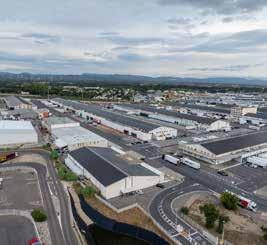
An extensive French representation may be found at Fruit Attraction, in Hall 6, with the exporter group
Present since the very first edition of Fruit Attraction, Saint-Charles Export, an exporter group of SMEs, will be back again in earnest at this trade fair, with 97 companies from both the fruit and vegetable sector and from other auxiliary sectors.
This year, Saint-Charles Export is establishing a new record, with 97 companies present on a total surface area of 634 m², of which 320 m² make up group space.
In Saint-Charles Export’s own programme, amongst the planned activities, they will offer two business lunches for the associated exhibiting companies, as well as for their clients and suppliers: one will take place on Tuesday, the 8th of October at 12.30 pm, sponsored by Crédit Agricole Sud Méditerranée and by Perpignan Méditerranée Métropole Communauté Urbaine. And the other will be on Wednesday the 9th of October at 12.30 pm, sponsored by Banque Populaire du Sud and Perpignan Méditerranée Métropole Communauté Urbai-


ne. Thanks to these “sponsors”, the hall will be turned into a place for meetings, exchanges, business and coexistence over the three days of the event.
As occurs every year, in order to ensure that the companies can devote themselves exclusively to their business, Saint-Charles Export has guaranteed the pooling of train tickets and hotel rooms, the grouping of exhibitor samples on their stands, as well as a shuttle service between the hotel and the trade fair site.
Over these 3 days, the trade fair will offer visitors a potential of over 2,200,000 tonnes of fruit and
vegetables, both conventional and ecological, from different sources (France, Spain, Morocco, Mauritania, Italy, Portugal, etc.). Beyond this important potential in terms of fruit and vegetable marketing, which without any doubt turns it into the most complete offer in Europe, the advantage of coming to Fruit Attraction is also being able to meet up with the freighters, logistics, training, computing and traceability companies, customs agents, banking and financial institutions, port facilities, analysis laboratories, equipment manufacturers, cooling specialists, etc… an offer that allows all the expectations and needs of the visitors to this trade fair to be met in a single place.
Saint-Charles Export’s stands may be found in HALL 6 Stands 6B16 – 6B17 – 6C17
On the 8th and 9th, business lunches organised by their associate companies will take place on their stands


La campaña de uva nacional se encuentra en su tercer y último tercio. A lo largo de esta campaña la firma se ha encontrado con varios desafíos, entre ellos, el paso de 8 a 12 fincas y el aumento de 30 hectáreas en comparación con la campaña anterior, lo que ha supuesto un 35% más de volumen. Además, el clima ha provocado la maduración temprana de las uvas, lo que ha causado una escasez de fruta desde las primeras semanas de septiembre; esto ha impuesto la necesidad de adelantar las importaciones.
El mercado de uvas de mesa ha seguido creciendo, aunque España particularmente se ha enfrentado a una fuerte competencia de otras frutas como cerezas y sandías, lo que ha afectado las ventas de la fruta temprana. No obstante, en septiembre, el interés en las uvas ha aumentado considerablemente.
A nivel europeo, se espera un fin de campaña normal en países como Francia, Italia y Portugal, y esta situación ha contribuido a la aceleración de la producción. Se anticipa un hueco en el mercado de la uva blanca a principios de noviembre que conllevará un incremento de las importaciones, puesto
que se han visto adelantadas por cosechas de aproximadamente tres semanas en diversas variedades.
En Fruit Attraction, su ‘UvaXperience’ supondrá el broche final de campaña y presentarán su catálogo de Nochevieja totalmente renovado.
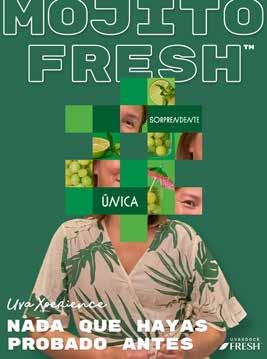
• F ru t a s y v e r du r as .
• Snack s y pa t a t a s f ri t
• C o ngelad os .
• F ru t o s s e c os
• P anade r ía y b o lle r ía
• Que s o s , embu ti d os
• Dul c e s y g o l os inas .

The Spanish grape campaign is in its third and final period. Over this campaign, the company has faced up to several challenges, amongst others, the rise from 8 to 12 farms and the increase by 30 hectares compared to the previous campaign, which has meant over 35% more volume. Additionally, the weather conditions have caused the grapes to ripen early, meaning that there has been a shortage of fruit since the first weeks of September, forcing the need to bring imports forward in time. The table grape market has continued to grow, although Spain, in particular, has faced up to important competition from other fruit, such as cherries and watermelons, which has affected the sales of early fruit. However, in September there has been a considerable increase in interest in grapes. On a European scale, a normal end of campaign is expected in countries such as France, Italy and Portugal, and this situation has contributed to the speeding up of the production. A gap in the white grape market is expected at the beginning of November that will bring an increase in imports, as the harvests have been brought forward by approximately three weeks in different varieties. At Fruit Attraction, its ‘UvaXperience’ will bring the final touch of the campaign and the company will present their completely renewed New Year’s Eve catalogue.
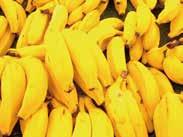
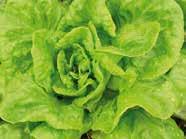



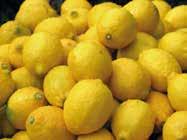
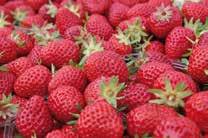
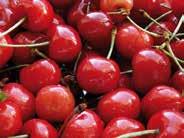
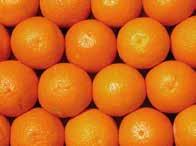

Patatas Meléndez destaca en Fruit Attraction por sus propuestas innovadoras centradas en el consumidor, sin dejar de lado su fIrme compromiso con el origen y la calidad de sus productos
Entre las novedades más destacadas, hay que resaltar las patatas ‘especiales para airfryer’. Una bolsa de 1 kg de patatas frescas, cuidadosamente seleccionadas tanto a nivel varietal como por su comportamiento culinario. Están diseñadas para asegurar un resultado perfecto, siguiendo unos sencillos pasos que se incluyen en el propio envase, así como en un vídeo disponible a través de un código QR. Además, la empresa introduce una nueva propuesta bajo la marca ‘El Picoteo’, que combina patatas con salsas desarrolladas en colaboración con Helios. Este producto no solo destaca por su sabor, sino que ofrece una opción de aperitivos saludables y sabrosos, alineados con los nuevos gustos de los consumidores.
Meléndez X Origen
El compromiso de Patatas Meléndez con el origen de sus productos queda plasmado en su proyecto Meléndez X Origen, donde la empresa trabaja junto a más de 50 agricultores de la Península Ibérica y de Francia. Esta colaboración, que incluye además a expertos en áreas de especialización en semillas, mecanización, digitalización, fertilización y riego, busca avanzar hacia la agricultura del futuro, optimizando los recursos y garantizando la mejor calidad de la patata al precio adecuado.
Este 2024, la firma sigue ampliando la adquisición de hectáreas de cultivo propio, con el objetivo de alcanzar las 700 hectáreas en 2025. La estrategia permite controlar de forma directa la producción, asegurando la calidad y la estabilidad de la cadena de suministro.
Club de Fruteros: un nuevo canal de negocio
En su apuesta por la diversificación y la expansión, Patatas Meléndez lanza el “Club de Fruteros”, un nuevo canal de negocio para fruterías y pequeños comercios. La iniciativa tiene como objetivo ofrecer productos frescos y de calidad que no solo impulsen la marca, sino que añadan valor a estos establecimientos.
La empresa estará presente en el Pabellón 10, stand 10F 04, donde se podrán conocer de primera mano sus novedades y su visión sobre el futuro del consumo y la distribución.
La compañía está presente en el Pabellón 10, stand 10F 04
El Picoteo introduce nuevas propuestas con salsas de acorde a los gustos actuales

At Fruit Attraction, Patatas Meléndez is underscoring its innovative proposals centred on the consumers, without forgetting its fIrm commitment with the source and quality of its products Amongst the most outstanding new developments, the potatoes that are ‘specially for air fryers’ should be emphasised. A carefully selected 1 kg bag of fresh potatoes, with the correct variety and perfect culinary behaviour. They are designed to guarantee a perfect result, following some simple steps that are included on the package itself, as well as a video available through a QR code.
In addition, the company is introducing a new proposal under the brand ‘El Picoteo’, which combines potatoes with sauces developed alongside Helios. This product does not only stand out due to its flavour, but also because it offers an option for healthy, tasty snacks, dressed according to consumers’ current tastes.
Meléndez X Origen
Patatas Meléndez’s commitment to the source of its products has been reflected in its ‘Meléndez X Origen’ project, where the company works alongside over 50 farmers from the Iberian Mainland and France. This collaboration, which also includes experts in areas of specialisation in seeds, mechanisation, digitalisation, fertilisation
and irrigation, seeks to move forward towards the agriculture of the future, optimising resources and guaranteeing the best quality potatoes at a reasonable price.
In 2024, the company continues extending its acquisition of hectares for its own crops, with the goal of reaching 700 hectares in 2025. This strategy allows the production to be controlled directly, guaranteeing the quality and stability of the supply chain.
Club de Fruteros: a new business channel
In its commitment to diversification and expansion, Patatas Meléndez is launching the “Club de Fruteros”, a new business channel for fruit and vegetable stores and small businesses. The initiative aims at offering fresh, quality produce that do not only boost the brand, but also add value to these establishments.
The company will be present in Hall 10, stand 10F 04, where its new developments may be discovered first hand, along with the company’s view about the future of consumption and distribution.
Llega Orus Logistics, la primera aplicación web que permite agilizar y simplifIcar el seguimiento y la comunicación de los pedidos en el transporte
Llamadas de teléfono, emails, mensajes de WhatsApp… a la hora de transportar productos perecederos como las frutas y hortalizas, la comunicación de los operadores de tráfico con proveedores y clientes es incesante. Cualquier contratiempo provoca retrasos e implica una mayor necesidad de recursos y más llama-
hasta la descarga, y todo ello optimizando costes y tiempo de trabajo”.
A través de la plataforma online, disponible en 4 idiomas (español, inglés, francés y alemán) los operadores de tráfico van insertando toda la información de cada envío. De este modo, los usuarios (proveedores y cliente final) pueden consultar el estado de sus envíos o pedidos 24/7, con apenas un clic, a través de su ordenador, móvil o tableta. Basta con acceder a través de la URL de la plataforma con su usuario y contraseña.

das y mensajes… Al menos hasta ahora. Orus Logistics llega para facilitar el flujo de información durante el transporte. Y es que, como dice el CEO de la empresa, Juan José Barrionuevo Peña, “el tiempo es Orus”. “Hasta ahora no había ninguna aplicación directa para este tema. Con Orus Logistics, las empresas de transporte tendrán un sistema de comunicación rápido, fácil, transparente y seguro para informar sobre el pedido tanto a exportadores como a clientes en tiempo real, desde la carga
“La interfaz es muy sencilla e intuitiva. Gracias a la línea de tiempo, permite saber la hora de salida y la hora estimada de llegada, por dónde va el pedido, si surge cualquier incidencia o hay necesidades de documentación…”. Todo queda registrado con fecha y hora para seguir la trazabilidad y usar la información en caso de cualquier reclamación.
Mejor servicio a los clientes

Proveedores y clientes fInales pueden consultar el estado del pedido 24/7
Con esta plataforma global para transporte terrestre, las empresas de transporte pueden ofrecer un mejor servicio a los clientes de forma más rápida, ágil, transparente, eficiente y segura, explica Barrionuevo. El servicio es ideal para sectores como el hortofrutícola, pero no solo. “Sirve para cualquier sector y permite que cada una de las partes se pueda dedicar a su trabajo, sin perder el tiempo en llamadas o mensajes para estar actualizados”.

La aplicación tiene un coste mensual por matrícula para las empresas de transporte, que “solo pagan por lo que utilizan”, y es totalmente gratuita para exportadores y clientes. Además, el primer mes de uso es gratis también para los transportistas. El CEO de Orus Logistics asegura que la plataforma ha tenido una buena acogida en la fase previa al lanzamiento. “La hemos mostrado a empresas de El Ejido que confirman que les facilita el trabajo del día a día”. Orus Logistics se ha lanzado oficialmente en septiembre.
Para obtener más información, puede consultar la web www.oruslogistics.es o escribir a orus@oruslogistics.es. Además, puede informarse de sus últimas novedades en sus canales de Linkedln e Instagram.
“Time
Orus Logistics has arrived, the fIrst web application that allows the monitoring and communication of orders during transport to be streamlined and simplifIed
Telephone calls, emails, WhatsApp messages… When transporting perishable products such as fruit and vegetables, the communication by traffic operators with suppliers and clients is non-stop. Any setback causes delays and implies a greater need for resources and more calls and messages… At least up until now.
Orus Logistics has arrived to facilitate the information flow during transport. And the fact is, as the company’s CEO, Juan José Barrionuevo Peña, says “time is golden, with Orus”.
“Up to now there has been no direct application on this topic. With Orus Logistics, the freighting companies will have a fast, easy, transparent and safe communication system to inform about the order, both to exporters and to clients in real time, from loading to unloading, and all of this while optimising costs and work time.”
Using the online platform, available in 4 languages (Spanish, English, French and German), the traffic operators insert all the information about each delivery. In this way, users (suppliers and end clients) can consult the status of their deliveries or orders 24/7, with just a click, using their computers, mobile phones or tablets. Just
accessing by using the platform’s URL with a username and password.
“The interface is very simple and intuitive. Thanks to the timeline, it allows the departure time and the estimated arrival time to be known, where the order is, if any incidence arises, or if there are any documentation requirements…”
Suppliers and end clients may consult the status of their orders 24/7
Everything is recorded with date and time to follow the traceability and use the information in the case of a claim.
With this global platform for land transport, freighting companies can offer a better service to clients in a faster, more streamlined, efficient and safe way, Barrionuevo explains. The service is ideal for sectors such as fruit and vegetables,
but not just them. “It can be used for any sector and allows each of the parties to devote their time to their own work, without wasting time on calls or messages to keep up to date.”
The application has a monthly registration cost for the freighting companies, which “only pay for what they use,” and it is completely free for exporters and clients. In addition, the first month of use is also free for the freighters.
The CEO of Orus Logistics assures that the platform has been well-received in the phase prior to launching. “We have shown it to companies in El Ejido, who confirm that it makes their every day work easier.” Orus Logistics was officially launched in September.
For further information, please consult the website www.oruslogistics.es or write to orus@ oruslogistics.es. Information about the latest developments may also be found on their LinkedIn and Instagram channels.
The service is completely free for the fIrst month
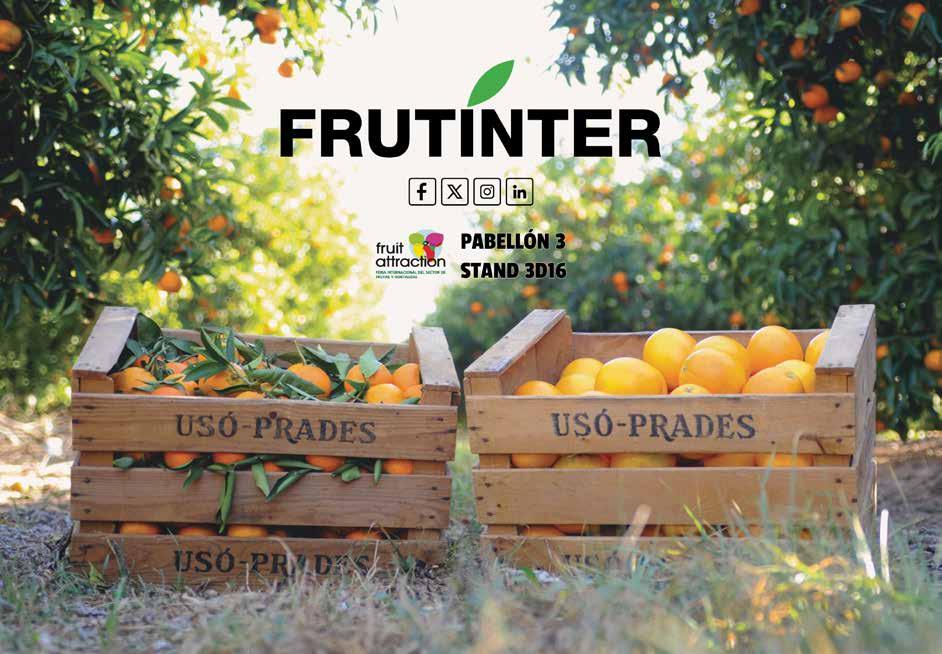
Centro Sur, Espárrago de Granada y Espalorquiana culminan su fusión para liderar la producción de espárrago verde en Europa
Las cooperativas granadinas Centro Sur, Espárrago de Granada y Espalorquiana cierran una importante operación que refuerza a la provincia granadina en una posición de liderazgo en los mercados internacionales.
Su proceso de fusión entre se ha completado con éxito y dará como resultado la cooperativa de espárrago verde más grande de España y Europa, que comercializará más de 11 millones de kilos (7,8 de producto nacional), y copará una superficie superior a las 1.500 hectáreas.
Durante los dos últimos años se ha estado trabajando en este proyecto de fusión por absorción que finalmente culminó con la aprobación definitiva por parte de las asambleas de las tres cooperativas en marzo y con la inscripción oficial en el registro de la Consejería de Empleo y Empresa de la Junta de Andalucía en septiembre. En ese
tiempo, las tres partes han ido fortaleciendo sus lazos a través de diferentes acuerdos de comercialización y de promoción. La operación responde a la necesidad de avanzar hacia la concentración de la oferta y aumentar el tamaño de las cooperativas para competir con garantías en el mercado europeo, en la línea de las recomendaciones de las administraciones y de lo establecido en el Plan Estratégico del Cooperativismo Andaluz, el Programa de Desarrollo Rural de Andalucía y la apuesta del MAPA de la integración cooperativa como motor económico en el medio rural.
Entre los objetivos que persigue la fusión está generar economías de escala, sinergias en diferentes áreas de la gestión empresarial, facilitar la reestructuración de las actividades de la cooperativa y dar lugar a relaciones de complementariedad a todos los niveles (personal, tecnológico, formati-
vo, financiero, investigación, etc.), además de aumentar el grado de organización. Todo esto sin olvidar su propósito empresarial, que no es otro que “generar riqueza en el mundo rural”.
Números de la fusión
• 1.598 socios
• 1.519 has
• 7.823t de producto nacional
• 3.480t de producto importado
• 7 almacenes
• 15.877 m2 de almacenes y una ampliación de 5.500 más
• 16.871 m3 de cámaras frigoríficas
• 1.100 trabajadores directos en la campaña nacional
• Exportación a 27 países
• Producción en: Granada, Málaga, Jaén, Córdoba, Sevilla, Cádiz, Toledo y Guadalajara
Centro Sur, Espárrago de Granada and Espalorquiana are completing their merger to lead green asparagus production in
Three cooperatives from Granada, Centro Sur, Espárrago de Granada and Espalorquiana, are closing an important operation that strengthens the province of Granada, placing it in a leading position on the international markets. This merger process between the cooperatives has been successfully completed and it will become the largest green asparagus cooperative in Spain and in Europe, marketing over 11 million kilos (7.8 of Spanish-grown produce), and it will take over a surface area of over 1,500 hectares. Over the past two years, work has been carried out on this merger project, which finally ended with the definitive approval by the assemblies of the three cooperatives in March and with the official inscription on the register of the Department of Employment and Companies of the Andalusian Regional Government in September. During this time, the three parties have been reinforcing their ties through different marketing and promotion agreements. The operation responds to the need to move forward in the concentration of the offer and increase the size of the cooperatives to successfully compete on the European market, in line with Government recommendations, as well as that established in the Plan Estratégico del Cooperativismo Andaluz (Andalusian Strategic

Coopertivism Plan), the Programa de Desarrollo Rural de Andalucía (Andalusian Rural Development Programme) and the commitment by the MAPA for cooperative integration as an economic driver in rural areas.
Amongst the goals pursued by the merger is that of generating economies of scale, synergies in different areas of the business management, aiding the restructuring of the cooperative activities and giving rise to complementary relations on all levels (personnel, technological, training,
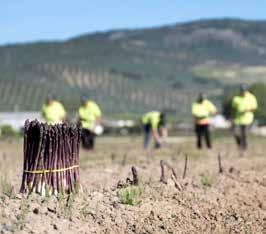
financial, research, etc.), in addition to increasing the degree of organisation.
All of this without forgetting their business purpose, which is no other than “generating wealth in the rural world.”
The merger in figures
• 1,598 associates
• 1,519 has
• 7,823t of Spanish-grown produce
• 3,480t of imported produce
• 7 warehouses
• 15,877 m2 of warehouses and an extension of another 5,500
• 16.871 m3 of cooling rooms
• 1,100 direct workers in the Spanish national campaign
• Exports to 27 countries
• Production in: Granada, Malaga, Jaen, Cordoba, Seville, Cadiz, Toledo, and Guadalajara
It will market over 11M kg (7.8 of Spanish-grown produce)
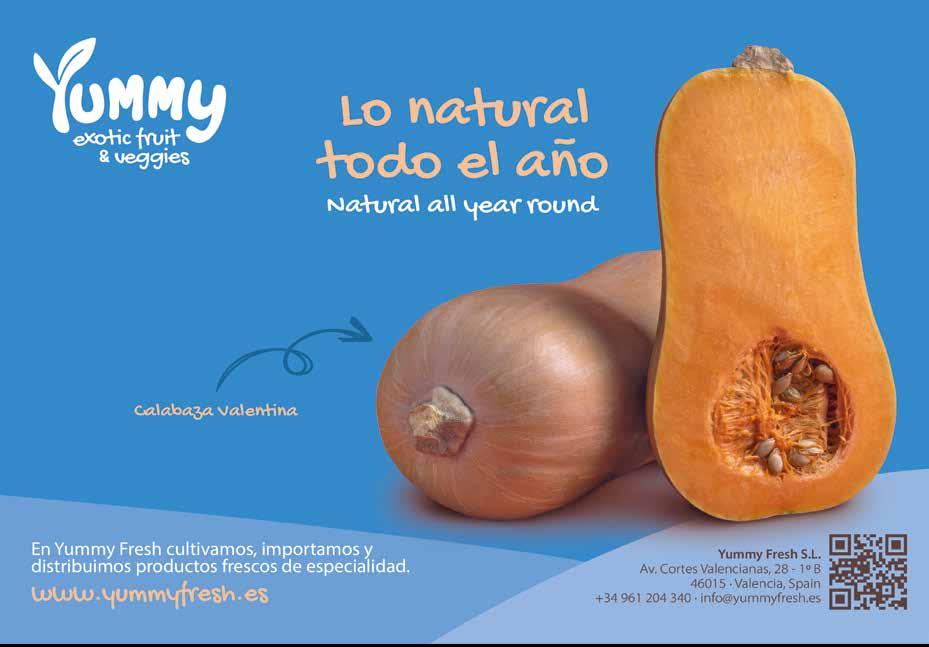
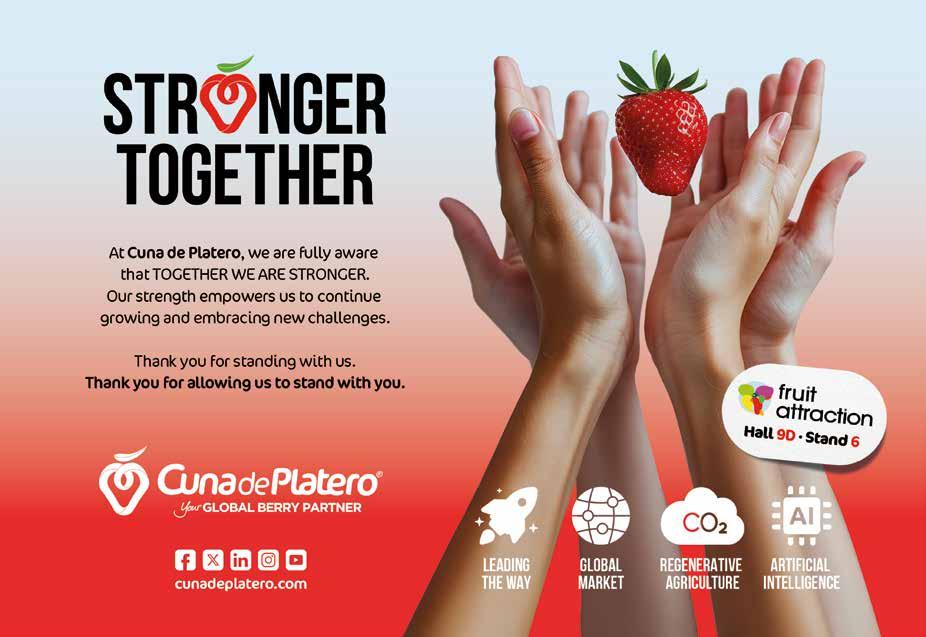
Bayer ofrece un modelo holístico con soluciones que benefIcian a la cadena y al medio ambiente
Bayer regresa a Fruit Attraction con el foco en la Agricultura Regenerativa. Una línea en la que siguen trabajando y que constituye el pilar de su visión sobre el futuro de la agricultura. “Creemos que las prácticas regenerativas pueden remodelar la agricultura mundial para mejor, a medida que nos enfrentamos a los desafíos del cambio climático y la seguridad alimentaria”.
La agricultura regenerativa consiste en “producir más con menos, mientras se restaura más”. Por ello, desde Bayer aseguran que des-
soluciones que, combinadas, crean valor para el agricultor y la naturaleza. “Tratamos a cada agricultor como un ecosistema en sí mismo y le proporcionamos un abanico de soluciones adaptadas a las condiciones del suelo. Así, les ayudamos a cumplir sus expectativas y a adaptarse a la incertidumbre y el cambio”.

empeñará un papel cada vez más importante en el apoyo a la seguridad alimentaria y la producción sostenible de alimentos, especialmente a medida que el clima siga cambiando. A diferencia de la agricultura convencional, las prácticas regenerativas permiten mejorar la productividad y los ingresos, al mismo tiempo que brindan beneficios para la naturaleza.
Si se adopta de forma amplia, con su enfoque prioritario en la salud del suelo, tiene el potencial de impulsar las cosechas con menos tierra, recursos y una menor huella climática y ambiental. Esto, a su vez, ofrece resultados positivos para las especies y los hábitats, ayuda a restaurar los ecosistemas y mejora las condiciones del suelo. “Lo que nos diferencia de otros es la capacidad y las instalaciones para proporcionar a los agricultores un sistema completo de soluciones para llevar a cabo este modelo. Antes las considerábamos como tres categorías separadas: Semillas y tratamientos, protección de cultivos y tecnología digital. Ahora aplicamos un carácter holístico”. Al combinar distintas plataformas tecnológicas, pueden proporcionar un sistema de


La agricultura digital de precisión adapta la solución adecuada a las circunstancias específicas de cada finca. Esto permite a los agricultores tomar decisiones sobre qué plantar, a qué densidad y cuándo aplicar nutrientes. Este modelo beneficia a la protección de cultivos y agua en sus tierras, ya que permite que los productores puedan cultivar más con menos recursos e impacto ambiental y, al mismo tiempo, mejora la rentabilidad de cada hectárea. En resumen, les permite producir más, mientras restauran el medio ambiente.
“Las colaboraciones de los diferentes eslabones de la cadena desempeñarán un papel crucial en brindar soluciones de agricultura regenerativa que tengan en cuenta las necesidades y desafíos de los agricultores”.
Caso práctico: melón
Dentro de su programa de mejora genética de melón desarrollan varias líneas para obtener variedades que contribuyan a la agricultura regenerativa, centrándose en tres pilares, explica José Guirado, Market Development Brassicas Ibérica:
La agricultura regenerativa es “producir más con menos, mientras se restaura más”
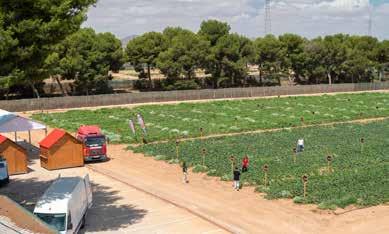

1.Producir más con menos: desarrollan variedades más productivas en una misma superficie de cultivo, más rusticas en el manejo agronómico y que se adapten mejor a condiciones climatológicas cambiantes. “Por ejemplo, con una disminución de tamaño de hoja en la planta para redu-
cir superficie de evapotranspiración del cultivo, sistemas radiculares más potentes que necesiten de menos recursos hídricos, y plantas más vigorosas que necesiten menos aporte de fertilizantes”.
2.Ayudar a preservar y restaurar la biodiversidad: con variedades que tengan un
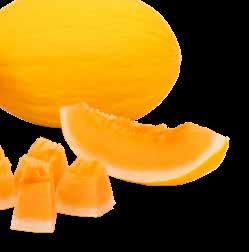
Orange Candy
paquete de resistencias completo de base y, junto al uso de fitosanitarios, fauna auxiliar y herramientas digitales, ofrezcan una solución integral frente a plagas y enfermedades. “Adaptamos las resistencias a las diferentes áreas de producción. Hemos sido pioneros en incorporar algunas resistencias a las variedades de melón”.
3.Reducir las emisiones de carbono: Bayer apuesta por la larga vida para dar margen de maniobra a los agricultores. Esto permite reducir costes de recolección, disminuir el destrío en campo y contribuye a reducir el desperdicio en comercialización, distribución y consumo, cumpliendo con los criterios de calidad e innovación que demanda la cadena de valor. “Nuestro porfolio de melón cumple la premisa de larga vida con sabor. Trabajamos en variedades de entrenudos más cortos, con más emisión de flores, que

Tratamos a cada agricultor como un ecosistema en sí mismo
concentran la producción y son capaces de adquirir los grados Brix temprano para estar adaptadas ante una potencial cosecha
mecánica que ayude a disminuir costes de mano de obra”.
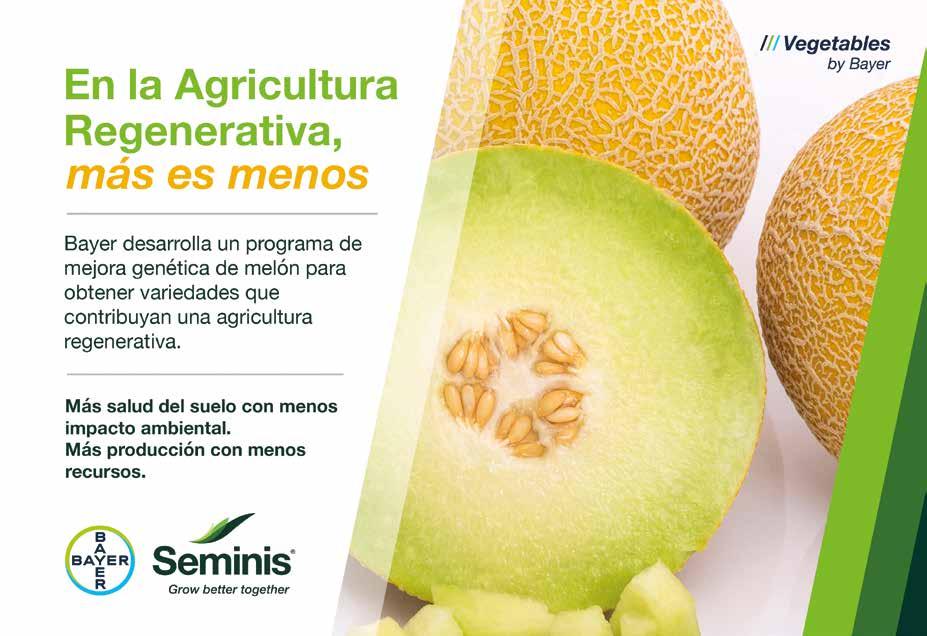
Bayer offers a holistic model with solutions that benefIt both the chain and the environment
Bayer is returning to Fruit Attraction with the focus on Regenerative Agriculture. A line on which it continues working and that makes up the foundation of its view of the future of agriculture. “We believe that regenerative practices could reshape world agriculture for the better, as we face up to the challenges of climate change and food safety.”
Regenerative agriculture consists of “producing more with less, while restoring more.” To do this, at Bayer they guarantee that it will play an increasingly important role in the support of food safety and sustainable food production, particularly as the climate continues to change. Unlike conventional agriculture, regenerative practices allow productivity and revenue to be improved, at the same time as giving benefits back to nature.
If it is adopted extensively, with its priority spotlight on soil health, it has the potential to boost the harvests with less land, resources, and a smaller climatic and environmental footprint. This, in turn, offers positive results for both species and habitats; it helps to restore the ecosystems and improves the conditions of the soil.
“Our capacity and installations to provide farmers with a complete system of solutions to carry out this model differentiates us from others. Previously, we considered them to be three separate categories: Seeds and treatments, crop protection, and digital technology. Now, we apply a holistic approach.”
By combining different technological platforms, they can provide a system of solu- tions which, to-
gether, create value for the farmers and for nature. “We treat each farmer as their own ecosystem, and we provide them with a wide range of solutions adapted to the conditions of the soil. Therefore, we help them to fulfil their expectations and to adapt to uncertainty and change.”
Digital precision agriculture adapts the correct solution to the specific circumstances of each farm. This allows the farmers to make decisions about what to plant, the planting density and when to apply nutrients. This model benefits crop protection and water in their land, as it allows the producers to cultivate more, with fewer resources and less environmental impact, and, at the same time, it improves the profitability of each hectare. In short, it allows them to produce more, while restoring the environment.
“Collaborations by different links in the chain will play an essential role in providing regenerative agriculture solutions that take into account the farmers’ needs and challenges.”
A practical case: melons
Within the melon genetic improvement programme, they are developing several lines to obtain varieties that contribute to regenerative agriculture, concentrating on three pillars, according to José Guirado, Market Development Brassicas Ibérica:
1.Producing more with less: they are developing varieties that are more productive on the same crop surface area, hardier for agronomic handling, and that adapt better to the changing weather conditions. “For example, with a decrease in leaf size on the plant to reduce the crop’s evapotranspiration surface area, stronger root systems that need
less water and more robust plants that need less fertilisers.”
2.Helping to preserve and restore biodiversity: with varieties that have a complete basic resistance package and, along with the use of plant protection products, auxiliary fauna and digital tools, they offer a comprehensive solution against pests and diseases. “We adapt the resistances to the different production areas. We have been pioneers in incorporating resistances to melon varieties.”
3.Reducing carbon emissions: Bayer is backing long-life to give farmers some leeway. This allows harvesting costs to be reduced, wastage in the fields to be decreased, and it contributes to reducing waste during marketing, distribution and consumption, meeting the quality and innovation criteria required by the chain of value. “Our melon portfolio fulfils the premise of long life with flavour. We are working on varieties with shorter internodes, with more flowers, which concentrate the production and can acquire the Brix degrees early on to be adapted to a potential mechanical harvest that helps to decrease labour costs.”
Regenerative agriculture is “producing more with less, while restoring more”
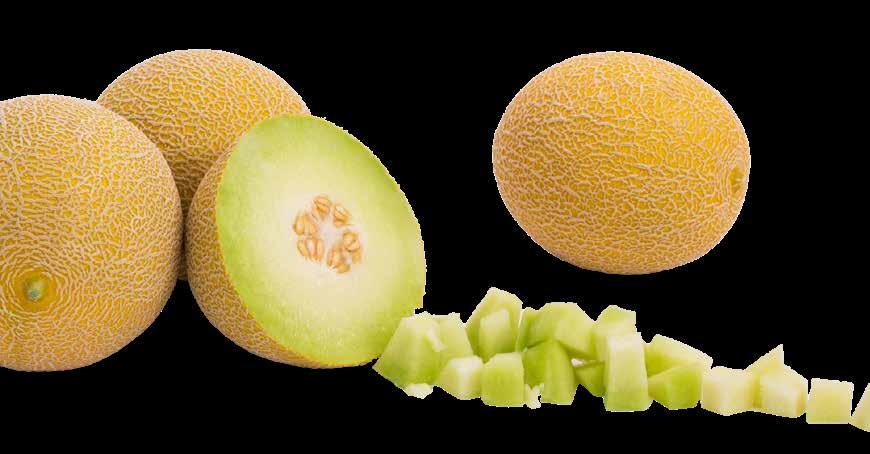

















La fIrma almeriense acude a Fruit Attraction para mostrar sus novedades de control biológico y la biopolinización más avanzada
Agrobío, referente en soluciones de control biológico de plagas y biopolinización, estará presente en Fruit Attraction 2024 con el stand 9E22 para presentar sus innovaciones

más recientes. Con casi tres décadas de trayectoria y presencia en más de 45 países, la empresa reafirma así su compromiso con una agricultura sostenible y altamente productiva.
Desde sus inicios, Agrobío ha sido pionera en el desarrollo de soluciones innovadoras basadas en organismos beneficiosos como depredadores y polinizadores, que han transformado la forma de cultivar en muchas regiones del mundo. A través de la investigación constante en áreas clave como la genética y la nutrición de insectos, la empresa ha conseguido desarrollar una nueva generación de depredadores revolucionando el manejo preventivo de plagas en cultivos hortícolas, frutales y ornamentales. Entre ellas destacan Orius
Cold y Orius Plus, dos cepas avanzadas de Orius laevigatus, con una alta capacidad depredadora y resistencia a temperaturas desfavorables, así como a la falta de alimento (polen o plaga) en el cultivo.
Una de las principales innovaciones de Agrobío es POWERmite 3.0, su dieta de última generación diseñada para potenciar la acción de depredadores de los tres principales grupos de depredadores –ácaros, míridos y anthocoridos– sobre el cultivo. Ahora pueden realizar sus funciones de forma más eficiente, lo que se traduce en una mayor protección de los cultivos y una mejora en la calidad de los frutos. Esta estrategia de alimentación patentada por Agrobío fortalece el control biológico y abre nuevas oportunidades para el futuro del control de plagas en la agricultura al aire libre.
Como novedad, la empresa exhibirá en Fruit Attraction PHYTOplus, el Phytoseiulus más avanzado contra araña roja. Su innovador sistema de cría ha dado como resultado una fórmula que permite un control continuo y más eficiente de la plaga, manteniendo a raya los focos en todo tipo de cultivos.
En su stand 9E22 exhibirá PHYTOplus, el Phytoseiulus más avanzado contra araña roja
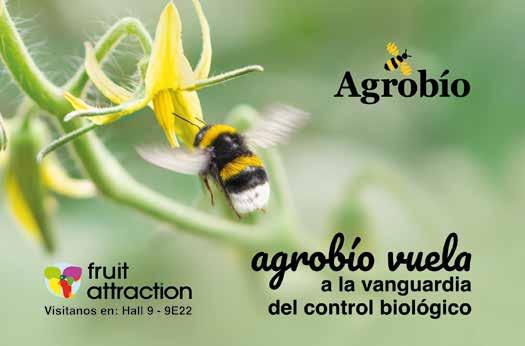
The company from Almeria is coming to Fruit Attraction to show its new developments in biological control and the most advanced bio-pollination
Agrobío, a benchmark in biological pest control solutions and bio-pollination, will be present at Fruit Attraction 2024 on stand 9E22 to present its latest innovations. With almost three decades of history and presence in over 45 countries, the company is reaffirming its commitment to sustainable, highly productive farming.
Since its beginnings, Agrobío has been a pioneer in the development of innovative solutions based on beneficial organisms such as predators and pollinators, which have transformed farming methods in many regions around the world. Through constant research in key areas such as genetics and insect nutrition, the company has managed to develop a new generation of predators, revolutionising the preventive handling of pests in vegetable, fruit and ornamental plant crops. Amongst these, Orius Cold and Orius Plus stand out, two advanced strains of Oriuslaevigatus, with a high predator capacity and resistance to unfavourable temperatures, as well as to a lack of food (pollen or pest) in the crop.
One of Agrobio’s main innovations is POWERmite 3.0, its latest generation diet designed to promote the predatory action of the three main groups of predators – mites, mirid bugs (plant bugs) and anthocoridae (flower bugs) on crops. Now they can carry out their functions in a more efficient way, which is translated into greater crop protection and an improvement in fruit quality. This feeding strategy patented by Agrobio strengthens the biological control and opens up new opportunities for the future of pest control in open-air farming.
As a new development, at Fruit Attraction the company will display PHYTOplus, the most advanced Phytoseiulus against red spider mite. Its innovative breeding system has resulted in a formula that allows continuous, more efficient control of the pest, keeping the outbreaks under control in all kinds of crops.
PHYTOplus, the most advanced Phytoseiulus against red spider mite, will be displayed on their stand 9E22
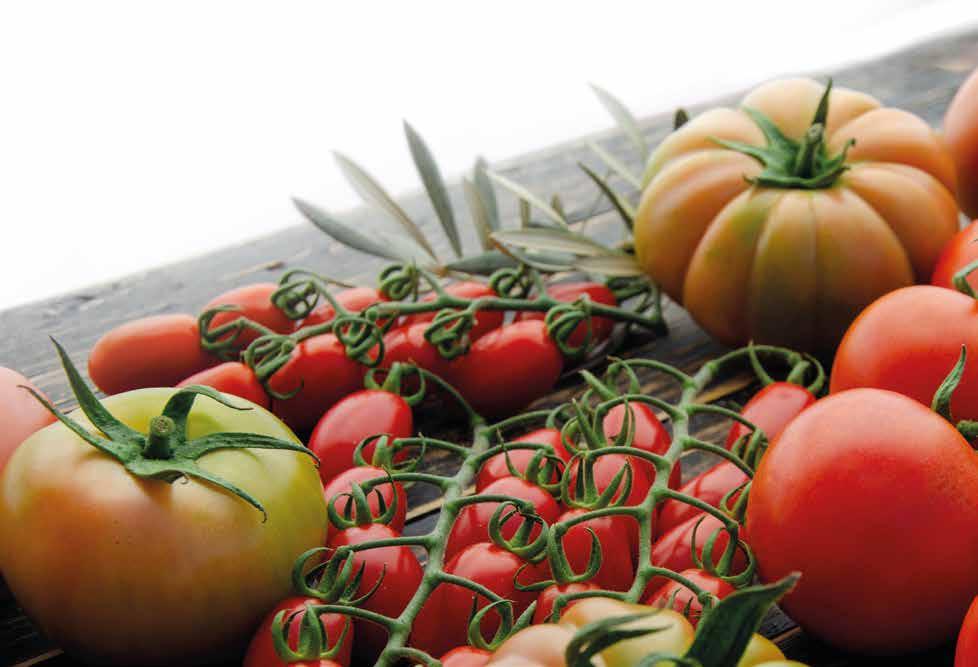

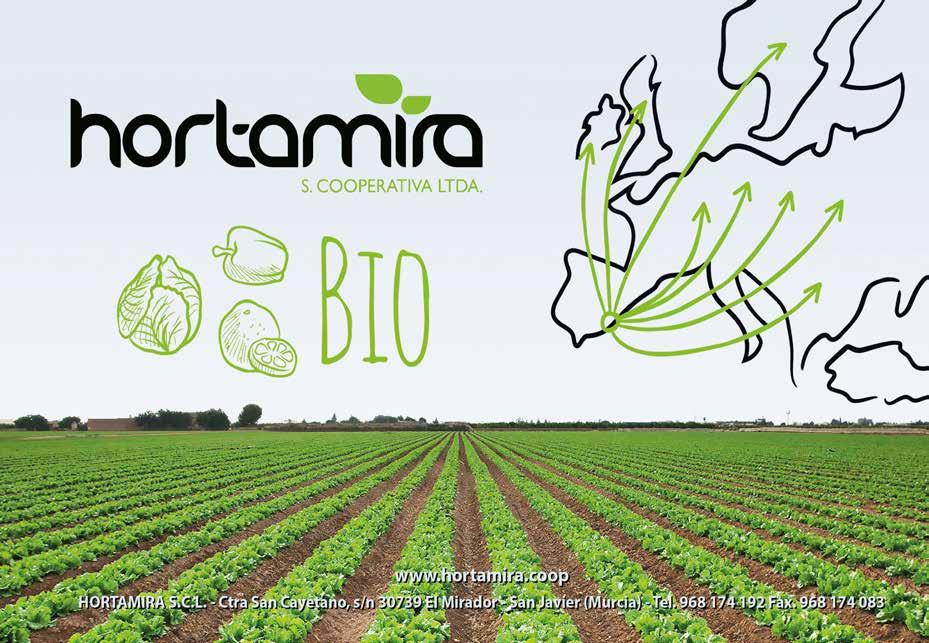



La empresa de maquinaria llega a la nueva edición de Fruit Attraction con una de sus innovaciones más recientes
INDUSER participa una vez más en Fruit Attraction. En esta edición, la compañía presentará en España una de sus innovaciones más recientes: la Pesadora Grueso Fino. Esta máquina ha sido diseñada específicamente para frutas delicadas como los arándanos, con el objetivo de completar su ya amplio catálogo de pesadoras y envasadoras. De esta manera, los productores hortofrutícolas tendrán la posibilidad de elegir la opción que mejor se ajuste a sus necesidades, ya sea la pesadora asociativa tradicional o esta nueva alternativa que se destaca por su competitividad, precisión y alto rendimiento.
La Pesadora Grueso Fino ha sido desarrollada para garantizar un manejo cuidadoso de los productos, manteniendo su integridad en el proceso de envasado. En el caso de la versión de 4 cabezales, la máquina es capaz de envasar 40-45 envases por minuto, mientras que la versión de 12 cabezales alcanza una impresionante velocidad de 120-130 tarrinas por minuto. Esto convierte a la Pesadora Grueso Fino en una solución óptima para pequeñas y grandes producciones, ofreciendo
una alternativa flexible y eficiente para satisfacer las distintas demandas. Lo que la diferencia es su capacidad para adaptarse a distintos formatos y la delicadeza necesaria para manipular frutas frágiles como los arándanos. Esto asegura que los productos lleguen al consumidor final en perfectas condiciones, sin sacrificar la velocidad ni la eficiencia en el envasado. Además, su versatilidad permite que se pueda ajustar rápidamente a diferentes tamaños y tipos de envases, facilitando su uso en una amplia gama de aplicaciones dentro de la industria hortofrutícola.
INDUSER ya ha lanzado la Pesadora Grueso Fino en otros mercados internacionales como Alemania y Polonia, que han sido los primeros en invertir en esta innovadora solución. Allí, la máquina ha demostrado su

capacidad para mejorar la competitividad de los productores, permitiéndoles optimizar sus recursos y reducir los tiempos de producción sin comprometer la calidad del producto final.
La participación de INDUSER en Fruit Attraction no solo subraya su compromiso con la innovación, sino que también reafirma su posición como líder en el desarrollo de maquinaria de envasado de alta tecnología.
La versión de 12 cabezales alcanza una impresionante velocidad de 120 a 130 tarrinas por minuto
The machinery company is coming to the new edition of Fruit Attraction with one of its most recent innovations
Once again, INDUSER is taking part in Fruit Attraction. At this edition, the company will present one of its most recent innovations in Spain: the Coarse Fine Weighing Machine. This machine has been specifically designed for delicate fruit, such as bilberries, aimed at completing its already extensive catalogue of weighing and packaging machines. Accordingly, fruit and vegetable producers will have the chance to choose the option that adapts best to their requirements, be it the traditional associative weighing machine or this new alternative that stands out for its competitiveness, precision and high performance.
The Coarse Fine Weighing Machine has been developed to guarantee a careful handling of the produce, maintaining its integrity during the packaging process. In the case of the 4-headed version, the machine can package 40-50 tubs per minute, while the 12-headed version reaches

an impressive speed of 120-130 tubs per minute. This turns the Coarse Fine Weighing Machine into an optimum solution for both small and large productions, offering a flexible, efficient alternative to meet different demands. Its capacity to adapt to different formats, along with the delicacy needed to handle fragile fruit such as bilberries differentiate it from others. This guarantees that the produce reaches the end consumers in perfect conditions, without giving up the speed or efficiency in the packaging process. Its versatility also allows it to be adjusted quickly to different sizes and types of containers, making it easy to use on a wide range of applications within the fruit and vegetable industry.
INDUSER has already launched the Coarse Fine Weighing Machine on other international markets such as Germany and Poland, which have been the first to invest in this innovative solu-
tion. There, the machine has shown its capacity to improve the competitiveness of the products, allowing them to optimise resources and reduce production times without compromising the quality of the end product.
INDUSER’s participation in Fruit Attraction not only underscores their commitment to innovation, but it also reaffirms their leading position in the development of high technology packaging machinery.
The 12-headed version reaches an impressive speed of 120 to 130 tubs per minute
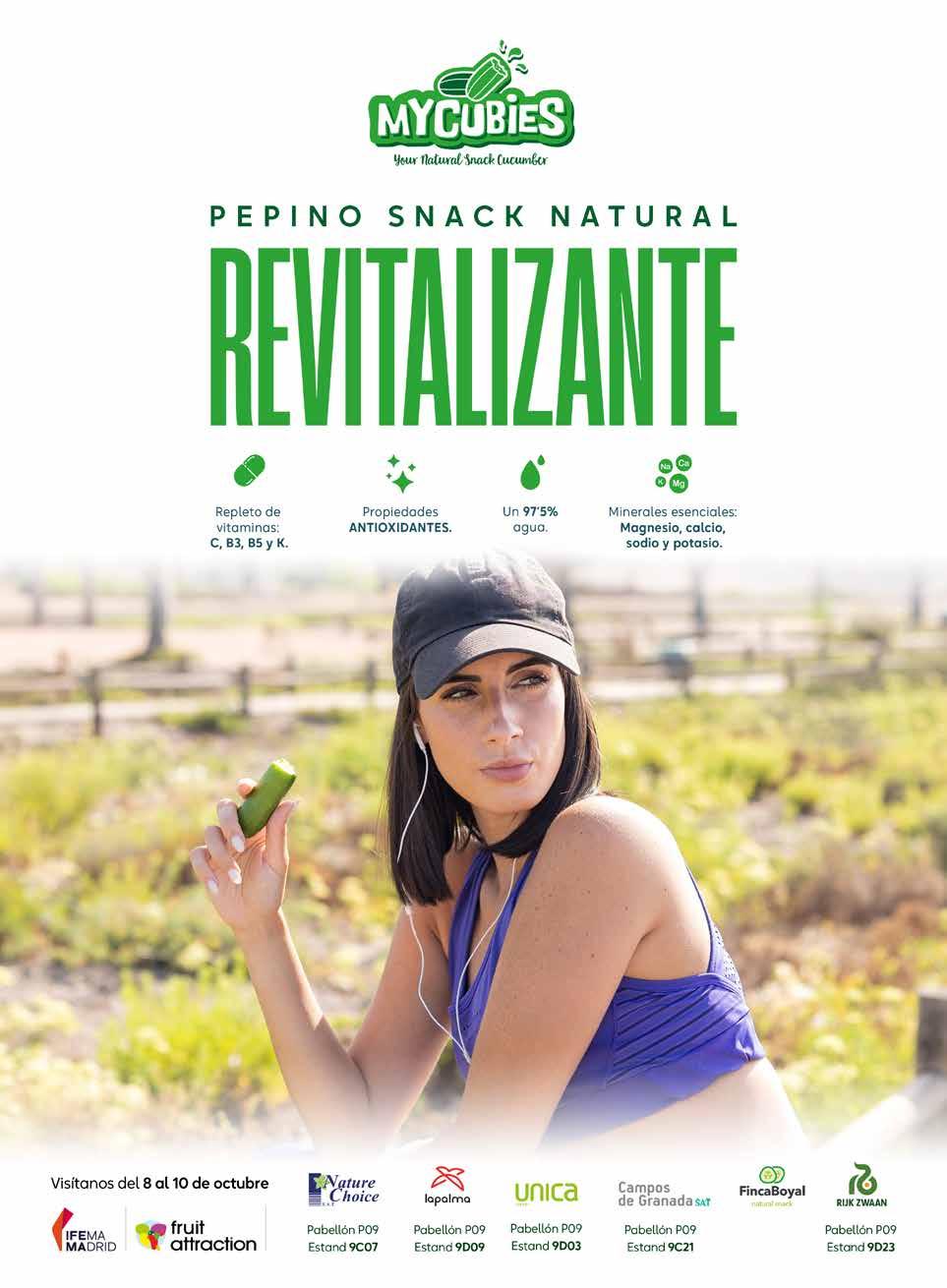

La casa de semillas presenta en Fruit Attraction Orange Sunglow, su impresionante sandía de carne naranja y crece con el pimiento Tatayoyo®
Fiel a su apuesta por la innovación, Rijk Zwaan regresa a Fruit Attraction con una novedad muy llamativa: Orange Sunglow, una sandía de carne naranja, sabor dulce y textura crujiente y jugosa que ofrece al consumidor un experiencia única y refrescante. La presentarán en la feria tras haber iniciado su introducción comercial en supermercados de Reino Unido, Alemania y fruterías especializadas de España. Otro de sus últimos lanzamientos, el pimiento Tatayoyo, ya presente en supermercados de Europa, EE.UU. y Asia, está teniendo una gran aceptación de los consumidores, comenta Javier García Rigol, Client Manager Chain. Su sabor peculiar, que recuerda a frutas tropicales, su intenso dulzor y gran aroma (tiene 25 sustancias volátiles), sin apenas semillas, lo convierten en ideal como snack.
“Tatayoyo aporta una nueva experiencia al consumidor final. Es muy novedoso, diferente a lo que se espera de un pimiento. Con una forma característica y un formato muy conveniente; no es un pimiento snack ni un California…”. Ventajas competitivas que le han hecho merecedor del premio FLIA 2023 en Fruit Logistica y de la más alta puntuación del sello Superior Taste Award ***. A nivel agronómico, aporta una calidad constante y homogénea, incluso en producciones de primavera-verano, permitiendo cerrar el ciclo todo el año.
Expansión de sus conceptos
textura crujiente y sabrosa, que amplía nuevos colores de piel), y la de carne amarilla y retrogusto tropical Tropical Honey. No faltarán el tomate rosa de ensalada Tip Top, la gama de tomates Rugose Defense, con alta resistencia al virus del rugoso (ToBRFV), las lechugas Salanova, la Lechuga Snack, que crece de forma exponencial y se abre a más mercados fuera de UE, y su concepto Knox (oxidación retardada) que se expande a toda
ción muy buena en grandes cadenas a nivel nacional y fuera de España. “Tiene unos atributos únicos dentro de la judía plana por su sabor, vida útil y muy buena poscosecha. Al no tener hebras facilita mucho la preparación”. Para promocionarla, desarrollarán una acción conjunta con Agroatlas, ofreciendo degustaciones en sus stands.
Junto a todo ello, trabajan en ‘Aubergine Lovers’, una acción para promover y dinamizar el consumo de berenjena. “Queremos dinamizar el consumo dando apoyo al canal para mostrar a los consumidores todas las alternativas que ofrece y cómo utilizarlo. El consumo, aunque estable en los últimos años, está estancado en algunos destinos, sobre todo en el norte de Europa. Aunque en Italia y Francia la penetración es, respectivamente,
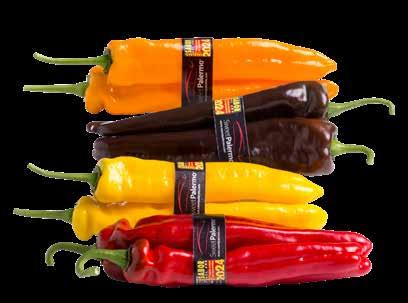
su gama de lechuga.
Crece también el interés por GreenTense, su concepto de judías muy dulces y oscuras, sin hebras, que gozan de “una acepta-
de entorno a un 80% y 60%, en Alemania es relativamente baja, con alrededor del 30%. En España roza el 70%”.
Tatayoyo crece “progresivamente” en supermercados de Europa, EE.UU. y Asia
En su stand (9D23) no faltarán el resto de conceptos que han desarrollado en los últimos años. Empezando por su emblemática gama de pimiento Sweet Palermo, que volverá a estar presente en la mayoría de stands de empresas productoras con ‘Sabor a Primera Vista’. “Su atractivo sabor promete ser irresistible, conquistando los sentidos desde el primer bocado y ofreciendo una experiencia deliciosa. Todo el canal descubrirá su sabor en esta promoción”. También exhibirán la gama de pepino snack MyCubies y MiniCue, “los pepinos minis más oscuros y resistentes”, la sandía mini CandyBall, (concepto de pequeño tamaño, con


RijkZwaan is celebrating its 100-year anniversary and taking watermelons to the next level
At Fruit Attraction, the seed company is presenting Sunglow, its impressive orange-fLeshed watermelon, and its pepper Tatayoyo® is on the rise
True to its commitment to innovation, RijkZwaan is returning to Fruit Attraction with a very eye-catching new development: Orange Sunglow, a juicy, orange-fleshed watermelon, with a sweet flavour and a crunchy texture, that offers consumers a unique, refreshing experience. They will present it at the trade fair, following its initial commercial introduction in supermarkets in the United Kingdom, Germany, and specialised greengrocers in Spain.
Another of its latest launches, the Tatayoyo pepper, already present in supermarkets in Europe, the USA, and Asia, is being widely accepted by consumers, according to Javier García Rigol, Chain Client Manager. Its unusual flavour, which is reminiscent of tropical fruit, its intense sweetness and great aroma (it has 25 volatile substances), virtually seed-free, turn it into an ideal snack. “Tatayoyo brings a new experience to the end consumer. It is groundbreaking, different to what is expected of a pepper. With its characteristic shape and a very convenient format; it is neither a pepper snack, nor a California…”
Competitive advantages that have made it deserving of the FLIA 2023 Award at Fruit Logistica and with the highest score of the Superior Taste Award certification***. On an agronomical level, it brings constant, homogeneous quality, even in
spring-summer productions, allowing the yearlong cycle to be closed.
Expansion of its concepts
On its stand (9D23), the other concepts that they have been developing in recent years may also be found. Starting with its emblematic range of peppers, Sweet Palermo, which will once again be present on most of the stands belonging to producing companies with ‘Sabor a Primera Vista’ (Flavour at First Sight). “Its attractive flavour promises to be irresistible, winning over all the senses from the first bite and offering a delicious experience. The entire channel will discover its flavour during this promotion.” They will also display the range of snack cucumbers My Cubies and Mini Cue, “the darkest and most resistant of the mini cucumbers,” the mini watermelon CandyBall (small-sized concept, with crunchy texture and very tasty, which extends the line with new skin colours), and the yellow-fleshed watermelon with a tropical aftertaste, Tropical Honey. The pink salad tomato Tip Top, the range of Rugose Defense tomatoes, with high resistance to the rugose virus (ToBRFV), the Salanova lettuces, the Lechuga Snack, which is growing exponentially and is entering more markets outside the EU, and its Knox concept (delayed oxidation)
that is expanding to the company’s entire lettuce range will all also be present.
There is also rising Interest in Green Tense, its concept of very sweet, dark, stringless beans, which are enjoying “very good acceptance in large chains both inside and outside Spanish borders.” “They have some unique attributes within the flat bean segment due to the flavour, shelf life and very good post-harvest. As they have no strings, preparation becomes much easier.” To promote these beans, they will develop a joint action with Agroatlas, offering tastings on their stands.
Along with all these elements, they also are working on ‘Aubergine Lovers’, an action to promote and boost aubergine consumption. “We want to boost consumption, supporting the channel to show consumers all the alternatives they offer and how to use them. Consumption, although stable in recent years, has stalled in some destinations, particularly in northern Europe. Although in Italy and France the penetration is, respectively, around 80% and 60%, in Germany it is relatively low, with around 30%. In Spain it reaches almost 70%”.
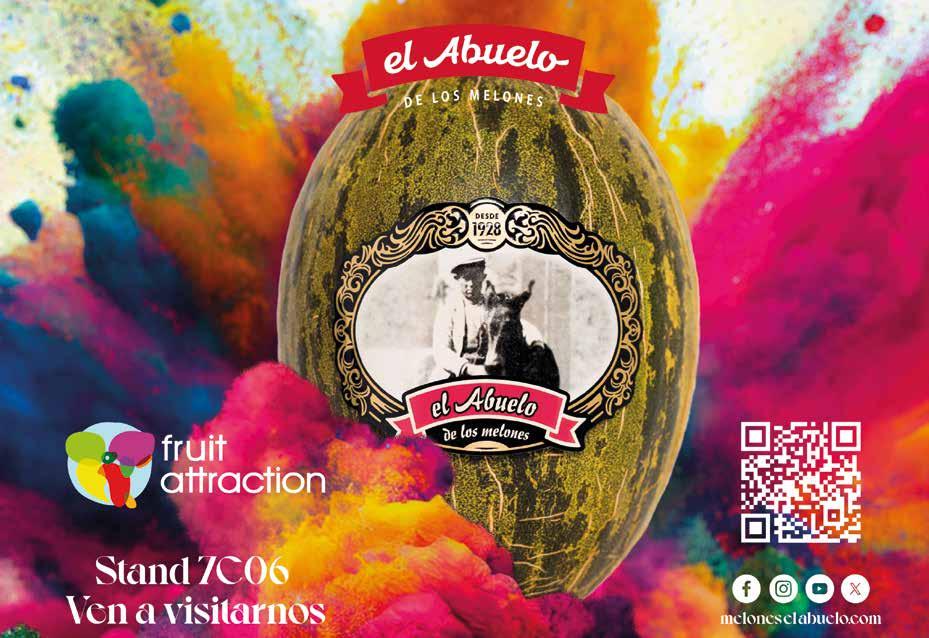
“Fruit Attraction es una de las ferias más importantes de Europa y clave para el mercado español”, señala Julián Herráiz, director general de AgroFresh. “Estamos deseando dar la bienvenida a nuestros clientes, colegas y socios de la industria a nuestro stand.”
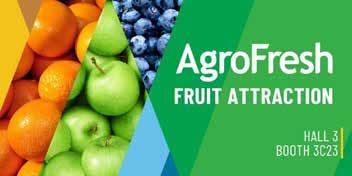
AgroFresh se compromete a potenciar el negocio de los productos frescos en cada paso, proporcionando a los clientes soluciones integradas que garanticen que los productos lleguen a los consumidores en las mejores condiciones.
Entre las principales soluciones que se presentarán en la feria figuran Strella, dispositivo que ayuda a optimizar la apertura de las cámaras de manzanas y peras con datos en tiempo real. Como parte de la solución digital FreshCloud de AgroFresh, Strella utiliza sensores para controlar las condiciones de
almacenamiento, como la temperatura, la humedad, el etileno, el CO2 y el O2. El sistema de calidad SmartFresh™ ayuda a mantener la calidad, la frescura, el sabor y el aspecto de la fruta. Disponible para múltiples cultivos como manzanas, ciruelas, caquis o kiwis. Uvasys™ y Berrisys™ son láminas que liberan dióxido de azufre (SO2) para proteger las uvas y los arándanos (respectivamente) de la descomposición por hongos durante el almacenamiento y el transporte.
“Fruit Attraction is one of the most important trade shows in Europe and key for the Spanish market,” said Julián Herráiz, AgroFresh general manager. “We look forward to welcoming our customers, colleagues and industry partners to our booth.”
AgroFresh is committed to empowering the business of fresh at every step by providing customers with integrated solutions that help to ensure produce reaches consumers in peak condition.
Key solutions being featured at the show include with Strella monitoring devices, packers and shippers can optimize apple and pear room opening with real time data. Working in conjunction with AgroFresh’s FreshCloud™ digital platform, Strella uses sensors to monitor the condition in storage, including temperature, humidity, ethylene, CO2, and O2.
The SmartFresh™ Quality System helps maintain fruit quality, freshness, flavor and appearance. Available for multiple crops such as apple, plums, persimmons or kiwifruit.
Uvasys™ and Berrisys™ are laminated sheets that release sulfur dioxide (SO2) to protect grapes and blueberries (respectively) from fungal decay during storage and transport.
Event attendees are invited to stop by to speak with AgroFresh experts in its booth 3C23.
L’Insalata dell’Orto, empresa italiana especializada en producción y comercialización de verduras y hortalizas frescas para consumo o cocinar (IV Gama) y principal productor europeo de flores comestibles, estará presente por primera vez en Fruit Attraction (Pabellón 3stand número D-24) con su propuesta de ensaladas y achicoria roja.
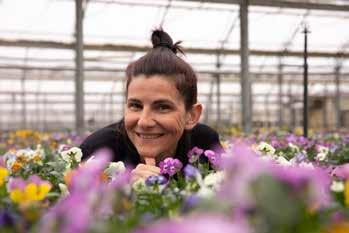
La compañía también traerá a Madrid su producto estrella: las flores comestibles. L’Insalata dell’Orto produce flores comestibles frescas y deshidratadas. La gama con flores deshidratadas está diseñada para la

exportación, tiene una larga vida útil y se centra en funciones de uso específicas. Por ejemplo, Miscele & Snack combina flores comestibles deshidratadas con frutos secos en 4 mezclas: 1 para usar en la cocina para preparaciones saladas y 3 de snacks para disfrutar durante todo el día (aperitivo, deporte, merienda).
“Todas nuestras flores se cultivan en Italia, en nuestros invernaderos en la Región del Véneto, y luego se someten a un delicado tratamiento de deshidratación a baja temperatura que preserva su color y su sabor. Son productos de alta calidad que están cosechando éxito tanto a gran escala de distribución como en restauración”, destaca Menin.
L’Insalata dell’Orto, an Italian company specialising in the production and marketing of fresh fruit and vegetables for consumption or cooking (Fresh Cut Range) and the main European producer of edible flowers, will be present for the first time at Fruit Attraction (Hall 3 - stand D-24) with its salads and red chicory proposal. The company will also bring its star product to Madrid: edible flowers. L’Insalata dell’Orto produces fresh and dried edible flowers. The dried flower range is designed for export, with a long shelf life and is centred on specific use functions.
For example, Miscele & Snack combines dried edible flowers with dried fruit in 4 mixtures: 1 for culinary purposes for savoury preparations and 3 snack versions for enjoying throughout the day (aperitif, sports and afternoon snacks).
“All our flowers are grown in Italy in our greenhouses in the Veneto Region and they are then subjected to a delicate low temperature drying treatment that preserves their colour and flavour. They are high quality products that are reaping success both in large-scale distribution and in the catering trade,” Menin underscores.
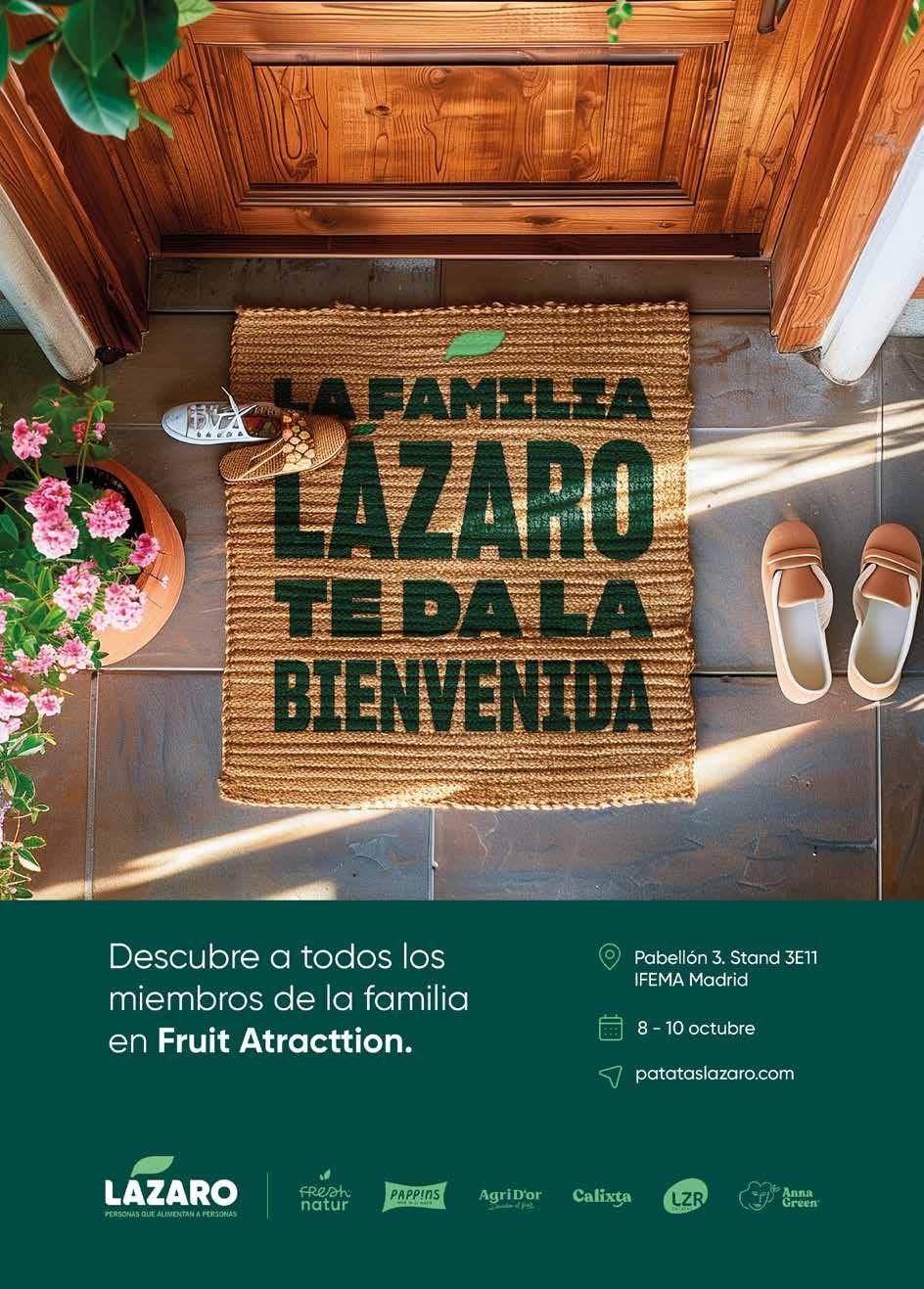
La fIrma ha hecho aún más eFiciente su sistema industrial de medición de maduración de aguacate y lo llevará a Fruit Attraction con sus soluciones para horticultura y envasado
La empresa ILIP, fabricante líder de soluciones de envasado con sede en Bolonia (Italia), vuelve a Fruit Attraction donde les esperan en el Pabellón 9, stand B21. En el escenario internacional de Fruit Next Forum 5 presentarán la nueva versión del Smart Ripe Trolley, el innovador sistema IoT (Intelligence of Things) para monitorizar el proceso de maduración de frutas tropicales en entornos industriales, diseñado específicamente para aguacates. Tras el lanzamiento en la feria Fruit Logistica 2023, lo presentarán en Fruit Attraction, que en esta edición tiene al aguacate como protagonista estrella. La cita es el próximo miércoles 9 de octubre de 17:30 a 18:30 horas en el pabellón 4.
Hortipack y Tray to Tray ILIP confirma su compromiso con la investigación y el desarrollo de envases sostenibles llevando a la feria Hortipack, la gama completa de soluciones profesionales (cajas y alvéolos, portamacetas y semilleros) para horticultura y floricultura fabricadas con PET y PS reciclados. Gracias al uso de hasta un 90% de material reciclado y a la reciclabilidad de sus referencias, Hortipack contribuye a reducir el impacto medioambiental y a fomentar la economía circular. Entre los productos más innovadores se encuentran los alvéolos precortados, ideales para optimizar las operaciones de venta al por menor y transporte, y la bandeja de semillas R-PET, diseñada para acoplarse a las bandejas de semillas XPS (poliestireno expandido extruido) para la siembra de tomates de industria, achicoria y tabaco. El acoplamiento permite reutilizar las cubetas de semillas XPS durante varios años (que permanecen debajo sin contaminarse), garantizando una esterilidad perfecta. Tampoco deben perderse la gama dedicada al envasado de productos frescos de ILIP, que incluye cestas, bandejas y alvéolos de plástico, bioplástico y R-PET diseñados para proteger y poner en valor frutas y verduras, alargar su vida útil y reducir así el desperdicio de alimentos. Los envases de ILIP, además de garantizar una excelente conservación, se han desarrollado con vistas a reducir su impacto medioambiental mediante materiales reciclados y reciclables y downgauging, es decir, el

diseño del envase con un menor peso y manteniendo las mismas prestaciones. Además, los envases R-PET de la empresa proceden de un proceso denominado T2T R-PET® (T2T=tray to tray), es decir, el reciclaje de botellas y bandejas postconsumo a partir de las cuales se obtienen de nuevo otras bandejas aptas para el contacto alimentario, evitando así el uso de la cantidad correspondiente de materia prima virgen. Este proceso es posible gracias a la pertenencia de ILIP al Grupo ILPA, cuyas empresas cubren todas las etapas del reciclado y la conversión de PET y R-PET a partir de botellas y bandejas de residuos domésticos de los que se obtiene la segunda materia prima que ILIP utiliza para sus envases. El control total de la cadena de valor del R-PET permite por
Presentarán la nueva versión de Smart Ripe Trolley el miércoles 9 de octubre a las 17:30h en el pabellón 4
tanto a la empresa destacar en el panorama europeo como ejemplo de aplicación de los principios de la economía circular.

ILIP les espera del 8 al 10 de octubre en su stand 9B21

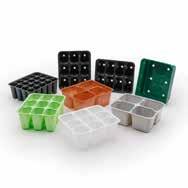

Fruit Attraction
The company has made its industrial avocado ripening measurement system even more effIcient, and it will take it to Fruit Attraction along with its solutions for horticulture and packaging
The company ILIP, the leading manufacturer of packaging solutions, with head offices in Bologna (Italy), is returning to Fruit Attraction, Hall 9, stand B21. On the international stage of Fruit Next Forum 5, they will present the new version of the Smart Ripe Trolley, the innovative IoT (Intelligence of Things) system to monitor the ripening process of tropical fruit in industrial settings, designed specifically for avocados. Following its launch at the trade fair Fruit Logistica 2023, they will present it at Fruit Attraction, where the avocado is the star at this edition. This launch will take place next Wednesday, 9th of October, from 5.30 to 6.30 pm in hall 4.
Hortipack and Tray to Tray
ILIP confirms its commitment to the research and development of new sustainable packaging, taking Hortipack to the trade fair, the complete range of professional solutions (boxes and fruit nest trays, plant pots and seed trays) for horticulture and floriculture made using recycled PET and PS. Thanks to the use of up to 90% recycled material and the recyclable nature of their references, Hortipack contributes to reducing the environmental impact and promoting the
circular economy. Amongst the most innovative products are the pre-cut fruit nest trays, ideal for optimising retail sales operations and transport, and the R-PET seed tray, designed to link up with XPS seed trays (expanded extruded polystyrene) for sowing tomatoes for industry, chicory, and tobacco. This linking allows the XPS seed trays to be reused over several years (as they remain underneath without becoming contaminated), guaranteeing perfect sterility.
ILIP’s range devoted to packaging fresh produce should also not be missed, which includes baskets, trays and fruit nest trays, made from plastic, bioplastic and R-PET, designed to protect and give value to fruit and vegetables, lengthening their shelf life and, therefore, reducing food waste. ILIP’s packages, in addition to guaranteeing excellent conservation, have been developed with a view to reducing their environmental impact using recycled and recyclable materials and down-gauging, that is to say, designing packages with less weight, while maintaining the same benefits.
The company’s R-PET packages also come from a process called T2T R-PET® (T2T = tray to tray), that is to say, the recycling of post-consumer bo-
ttles and trays from which they obtain new trays that are suitable for food, therefore avoiding the use of the corresponding amount of virgin raw material. This process is possible thanks to the fact that ILIP belongs to the ILPA Group, which includes companies that cover all the phases of recycling and conversion of PET and R-PET using bottles and trays from household waste from which the second raw material is extracted that ILIP uses for its packaging. The total control of the R-PET value chain allows the company to stand out on the European panorama as an example of the application of the circular economy principles.
They will present their new version of the Smart Ripe Trolley on Wednesday, 9th of October, at 5.30 pm in Hall 4



































Gracias a la capacidad de reciclaje de envases para alimentarios de PET posconsumo de 60 000 toneladas al año, contribuimos a la realización de la economía circular de los embalajes para alimentos y al logro de los objetivos de reciclaje italianos y europeos y ayudamos a mejorar la sostenibilidad medioambiental en las comunidades en el que operamos.
La inestabilidad en el Canal de Suez en el comercio entre África Oriental y Europa ha creado desafíos importantes para los productores. También ha obstaculizado el desarrollo de mercados a lo largo de esta ruta comercial, como Turquía y Egipto, donde el consumo de aguacate acababa de empezar a crecer desde unos cimientos muy bajos. En este contexto, entrevistamos a Zac Bard, CEO de WAO para conocer el presente y futuro del ‘oro verde’ en la geografía global.
India se abre cada vez más al aguacate y WAO ha dado recientemente el primer paso en la promoción en este país. ¿Cuáles son las cifras de consumo de aguacate y las previsiones a futuro? ¿Cuál será vuestra estrategia allí?
India es uno de los mercados de aguacate de más rápido crecimiento del mundo. Aunque la base es pequeña, el crecimiento en los últimos años ha sido sorprendente, con las importaciones disparándose en un asombroso 11.585% desde 2014-15 hasta 2023-24. El consumo actual de aguacate importado en la India es de aproximadamente 4.000 toneladas, y WAO espera un crecimiento significativo en los próximos años.
La campaña de WAO en India para 2024-25 combina estrategias en medios impresos, sociales y digitales, con la participación de destacados chefs, médicos y nutricionistas indios. Además, personas influyentes del mundo de la alimentación mostrarán cómo el aguacate se está abriendo camino en la comida callejera india. El objetivo de la campaña es posicionar el aguacate no sólo como un ingrediente extremadamente saludable, sino también como un alimento sumamente sabroso.
WAO también colabora con destacados técnicos gastronómicos para elaborar recetas indias con aguacate. En la actualidad, muchos establecimientos de restauración de India utilizan aguacates, pero principalmente para recetas occidentales. WAO cree que una vez que los aguacates ganen un puesto en la comida india convencional y en las diversas cocinas indias, surgirán muchas nuevas oportunidades de consumo, impul-
Es probable que la expansión prevista en Asia
cambie las reglas del juego del sector
sando aún más la demanda. Son tiempos apasionantes para el aguacate en India.
¿Cuáles son las perspectivas a largo plazo del mercado mundial del aguacate y qué factores determinarán el crecimiento o la desaceleración del sector?
Creo que el futuro depara perspectivas apasionantes para la industria del aguacate. Estados Unidos, el mayor mercado del mundo, sigue creciendo a un ritmo asombroso, impulsado por los esfuerzos de marketing del Hass Avocado Board y el suministro constante durante todo el año. Aunque el consumo es elevado en la costa oeste, todavía existe un importante potencial de crecimiento en la costa este y en las regiones centrales.
México, Israel y Chile lideran el consumo per cápita de aguacate, superando los 8 kg por persona, gracias a una sólida producción nacional. Esto demuestra el potencial que existe cuando un país adopta el cultivo del aguacate. Estamos empezando a ver tendencias similares en Asia, donde el crecimiento está empezando a despegar. El consumo per cápita en Europa es actualmente inferior al de EE.UU., pero sigue existiendo un importante potencial de crecimiento. Los mercados consolidados siguen expandiéndose, mientras que los nuevos, como Alemania, Italia y Europa del Este, muestran un desarrollo prometedor. WAO desempeña un papel clave en el impulso de este crecimiento en los mercados europeos. Respecto a Canadá y Japón, cada uno de los cuales consume unas 100.000 toneladas anuales, aún tienen margen de expansión. Oriente Medio también ha experimentado un crecimiento significativo, aunque se enfrenta a dificultades causadas por la exportación de fruta inmadura que no madura adecuadamente. Es probable que la mejora

Crece la producción de guacamole, aceite de aguacate y aguacate congelado
de la calidad de la oferta acelere el crecimiento del mercado en Oriente Medio. Una importante oportunidad se encuentra en Asia, donde vive más del 60% de la población mundial. Los aguacates son conocidos desde hace poco en muchos de estos países, que están experimentando un crecimiento de la riqueza y de la clase media. A medida que aumenta el número de personas que viajan y disfrutan del aguacate en el extranjero, son más los que vuelven a casa deseosos de consumirlo en su propia gastronomía. Aunque parte de una base pequeña, el consumo en Asia está a punto de crecer exponencialmente, con el potencial de convertirse en un gran consumidor en el futuro. El desarrollo de los cultivos de aguacate en países como China, India y Vietnam apoya aún más esta tendencia, ya que la producción nacional a menudo conduce a un alto consumo.
Aunque habrá fluctuaciones en el tamaño de las cosechas debido a fenómenos como El Niño, la tendencia general del consumo de aguacate es ascendente. Mayores cosechas en determinados años ayudarán a

penetrar en nuevos mercados e impulsar la demanda.
En resumen, aunque todavía hay margen de crecimiento en los mercados existentes, es probable que la expansión prevista en Asia cambie las reglas del juego del sector del aguacate.
¿Cómo han fluctuado los precios del aguacate en los últimos años y cuáles son las perspectivas para los próximos? ¿Qué factores influyen en esta variación de los precios?
La demanda mundial de aguacates aumenta constantemente, lo que hace subir los precios en todo el mundo. Dentro de cada temporada, los precios fluctúan en función del volumen mundial. El Niño hace que el crecimiento gradual de la producción provoque picos y caídas estacionales, pero estas fluctuaciones se gestionan en el mercado a través de los países en desarrollo.
En México hay productores que ya no están renovando las certificaciones requeridas para exportar a Europa debido a los altos costes y precios que obtienen por los aguacates. ¿Ha notado cambios en el flujo de import-export entre los diferentes operadores mundiales?
Recientemente Jalisco, el segundo estado productor de aguacate de México, accedió al mercado estadounidense. Como resultado, gran parte de su producción abastece ahora al cercano mercado estadounidense. En Asia, África está empezando a desempeñar un papel importante, con Kenia, Tanzania y Sudáfrica accediendo al mercado de la zona. África tiene una ventaja geográfica para servir a los mercados asiáticos. Preveo que esta evolución impulsará aún más el crecimiento de los mercados asiáticos en el futuro.
¿Qué impacto está teniendo el cambio climático en las zonas tradicionales de cultivo de aguacate y cómo se están adaptando los productores?
Las sequías están presionando a algunas regiones debido a la reducción de las precipitaciones, aunque un buen año de lluvias puede restablecer rápidamente las condiciones normales. Mientras tanto, otras zonas están experimentando un aumento de las precipitaciones. Como resultado, la producción mundial de aguacate se está estancando o disminuyendo en las regiones más afectadas por el cambio climático, mientras que las zonas menos afectadas están creciendo rápidamente. Es natural que las empresas migren a regiones con una ventaja competitiva. Los agricultores, incluidos los productores de aguacate, se enfrentan a condiciones meteorológicas
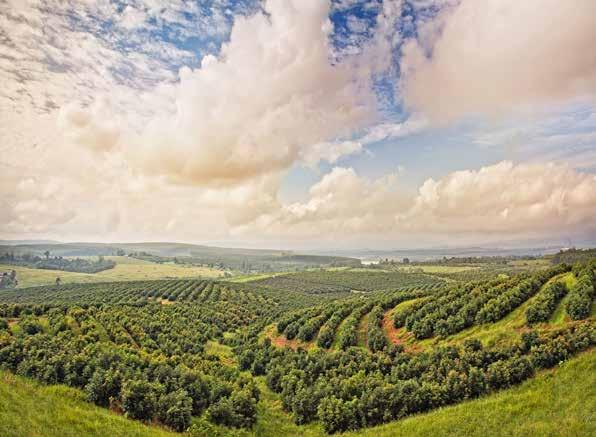
El mercado de aguacate en India ha crecido un 11.585% desde 2014. Ya importan 4.000 t

más adversas debido al cambio climático: más o menos lluvia, temperaturas máximas más altas, temperaturas mínimas más bajas, granizo, heladas, etc. Sin embargo, a los aguacates les ha ido relativamente bien en comparación con otros cultivos, con variaciones de producción de sólo el 15-20%, lo que es mucho menos grave que lo observado con otros cultivos.
¿Qué innovaciones observa en los productos derivados del aguacate y cómo influyen en la diversificación del mercado? La producción de guacamole, aceite de aguacate y aguacates congelados (IQF) va en aumento. Si bien en Estados Unidos ha sido un gran negocio durante muchos años, ahora Europa e incluso en Asia están ganando terreno. A pesar de ser un cultivo relativamente pequeño en la producción mundial de fruta, los aguacates se utilizan de forma eficiente, ya que la producción de aceite y guacamole emplea la fruta no comercializable, lo que garantiza un desperdicio mínimo. Como la producción mundial sigue creciendo junto con la demanda, espero que en el futuro surjan más productos derivados del aguacate.

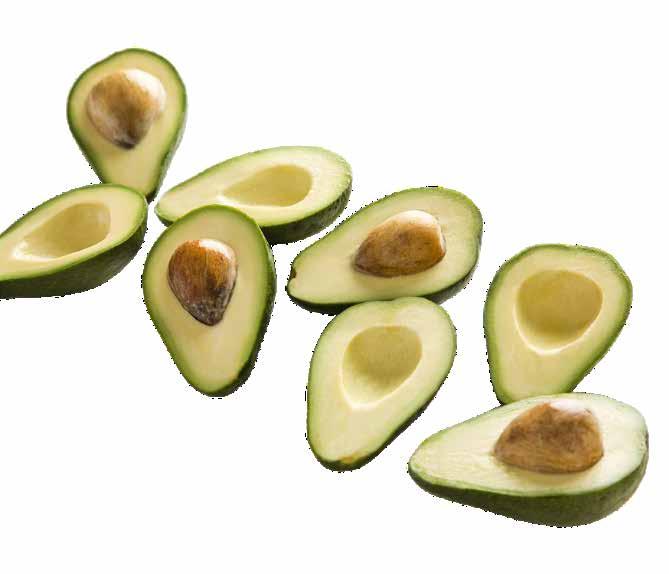
El aguacate es el producto estrella de Fruit Attraction este año, y WAO ha trabajado en colaboración con IFEMA y los productores españoles para organizar el Congreso del Aguacate que se celebra el 7 de octubre. Este evento está abierto a todo el sector e incluirá mesas redondas sobre el futuro de la logística, las perspectivas de los minoristas y la sostenibilidad del agua. “Seguro que inspirará y pondrá en contacto a productores e importadores de aguacate de todo el mundo. Además, estamos comprometidos en hacer del aguacate la fruta clave, con apoyo adicional de acciones de marketing en el aeropuerto, en las estaciones de metro y en la estación de tren de Madrid durante este año”. También el 7 de octubre, WAO celebrará su reunión anual. Este año consistirá en un almuerzo exclusivo para miembros, con la participación de expertos invitados y la presentación de datos internacionalmente actualizados.
The avocado is the star product at Fruit Attraction this year, and the WAO has worked alongside IFEMA and the Spanish producers to organise the Avocado Congress to be held on the 7th of October. This event is open to the entire sector and will include debates about the future of the logistics, the prospects of the retailers and water sustainability. “I am sure that it will inspire and bring together avocado producers and importers from all over the world. Additionally, we are committed to making avocado into a key fruit, with additional support by marketing actions at the airport, at metro stations, and at the Madrid train station during this year.” Also on the 7th of October, the WAO will hold its Annual Meeting. This year it will consist of an exclusive meal for members, with the participation of guest experts and the presentation of internationally up-dated data.

An interview with Zac Bard, CEO of the World Avocado Organisation (WAO)
Instability in the Suez Canal in trade between Eastern Africa and Europe has created important challenges for producers. It has also hindered the development of markets all along this trade route, such as Turkey and Egypt, where avocado consumption had just begun to increase, starting out from a very low base. Within this context, we interviewed Zac Bard, CEO of the WAO, in order to discover the present and future of the ‘green gold’ all over the world.
India is increasingly opening up to avocados, and the WAO has recently started a promotion campaign in this country. What are the avocado consumption figures and the forecasts for the future? What will your strategy be there?
India is one of the fastest growing avocado markets in the world. Although the base is small, growth in recent years has been surprising, with imports shooting up by an astounding 11,585% between 2014-5 and 2023-24. The current consumption of imported avocados in India is approximately 4,000 tonnes and the WAO expects a significant growth over the next few years.
The WAO’s campaign in India for 2024-25 combines strategies in the written press, along with social and digital media, with the participation
The production of guacamole, avocado oil, and frozen avocados is growing
of renowned Indian chefs, doctors and nutritionists. In addition, influential people from the food industry will show how avocados are cutting a path in Indian street food. The campaign’s target is to position the avocado not only as an extremely healthy ingredient, but also as a very tasty food.
The WAO is also working alongside prominent gastronomic technicians to prepare Indian recipes with avocados. Currently, many Indian restaurants use avocados, but mainly in Western recipes. The WAO believes that once avocados gain a place in conventional Indian food and in the different Indian cuisines, many new consumption opportunities will arise, boosting the demand even more. These are exciting times for avocados in India.
What are the long-term prospects for the world avocado market, and which factors will determine the sector’s growth or downturn?
I think that the future holds exciting prospects for the avocado industry. The United States, the largest market in the world, continues to grow at an incredible rate, boosted by the marketing efforts of the Hass Avocado Board and the constant supply all year long. Although the consumption is high on the West Coast, there is still potential for growth on the East Coast and in the central regions.
Mexico, Israel, and Chile lead the consumption per capita of avocados, exceeding 8 kg per person, thanks to a solid national production. This shows the potential that exists when a country adopts avocado growing. We are starting to
see similar trends in Asia, where the growth is starting to take off.
Consumption per capita in Europe is currently lower than in the USA, but there is still an important growth potential. The consolidated markets continue to expand, while the new ones, such as Germany, Italy, and Eastern Europe are showing a promising development. The WAO is playing a key role in boosting this growth on the European markets.
Regarding Canada and Japan, each of which consumes around 100,000 tonnes per year, they still both have room for expansion. The Middle East has also experienced a significant growth, although it is facing up to difficulties caused by the export of immature fruit that does not ripen correctly. It is likely that an improvement in the quality of the offer should speed up the growth of the Middle Eastern market.
An important opportunity can be found in Asia, where over 60% of the world population live. Avocados have only recently become popular in many of these countries, which are experiencing a growth in wealth and in the middle class. As the number of people who travel and enjoy avocados abroad increases, those who return home wishing to eat them in their own cuisine will also rise. Although it is starting out from a small base, con- sumption in Asia is about to see an exponential growth, with the potential of becoming a great consumer in the future. The development of avocado crops in countries such as China, India, and Vietnam is upholding this trend even more, as national production often leads to high consumption. Although there will be fluctuations in the size of the harvests due to phenomena such as El Niño, the general trend for avocado consumption is rising. Larger harvests in some years will help to penetrate new markets and boost the demand. In short, although there is still room for growth on the existing markets, it is likely that the expansion predicted in Asia will change the rules of the game in the avocado sector.

import-export flow between the different world operators?
Recently, Jalisco, the second State avocado producer in Mexico, gained access to the North American market. As a result, a large part of its production now supplies the nearby American market.
In Asia, Africa is beginning to play an important role, with Kenya, Tanzania and South Africa entering the region’s market. Africa has a geographical advantage for serving the Asian markets. I foresee that this evolution will boost the growth of the Asian markets even more in the future.
What impact is climate change having on the traditional avocado cultivation regions and how are the producers adapting?
The droughts are putting pressure on some regions due to the reduction in rainfall, although a good year of rain can quickly re-establish normal conditions. Meanwhile, other regions are experiencing an increase in rainfall. As a result, the world avocado production is either coming to a standstill or decreasing in the regions most affected by climate change, while the regions that are least affected are growing fast. It is natural for the companies to migrate to regions with a competitive advantage. The farmers, including avocado producers, are facing up to worsening weather conditions due to climate change: more or less rainfall, higher maximum temperatures, lower minimum temperatures, hail, frost, etc. However, avocados have survived relatively well, compared to other crops, with production variations of only 15-20%, which is much less serious than those observed with other crops.
What innovations can be seen in the products derived from avocados and how do they influence the diversification of the market?
How have avocado prices fluctuated in recent years and what are the prospects for the next few years? What factors influence this variation in prices?
The world demand for avocados is constantly increasing, making the prices rise all over the world. Within each season, the prices fluctuate in terms of the world volume. El Niño means that the gradual growth of the production causes seasonal peaks and troughs, but these fluctuations are managed on the market through the developing countries.
In Mexico, there are producers who are no longer renewing the certificates required for exporting to Europe owing to the high costs and the prices that are obtained for their avocados. Have you observed any changes in the
The production of guacamole, avocado oil, and frozen avocados (IQF) are all on the rise. Although they have been an important business in the United States for many years, they are now gaining ground in Europe and even in Asia. In spite of being a relatively small crop in world fruit production, avocados are used efficiently, as the production of oil and guacamole uses the non-saleable fruit, which guarantees a minimum waste. As the world production continues to grow along with the demand, I hope that in the future more products derived from avocados appear.
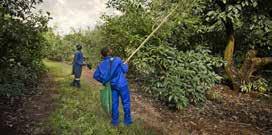
The avocado market in India has grown by 11,585% since 2014. They are now importing 4,000 t
La Comunidad Valenciana se aproxima a las 4.000 hectáreas de cultivo de aguacate, con una producción cercana a las 20.000 toneladas. Este año, se estrena su marca de calidad: ‘Aguacates CV’
Fruit today habló con Celestino Recatalá, presidente de ASOPROA (Asociación de Productores de Aguacate) quién señaló los pormenores del cultivo y puso de relieve la importancia de la recién creada marca de calidad.
¿Se puede decir que esta campaña será el estreno comercial de ‘Aguacates de la Comunidad Valenciana’?
Sí, efectivamente. La marca de calidad se presentó oficialmente al finalizar la temporada anterior, por eso, comercialmente, estamos de estreno en esta campaña.
¿Cuáles son sus objetivos principales? Tenemos que realizar un esfuerzo conjunto para poner en valor un producto de proximidad y preparar nuestro futuro. Un futuro que queremos que perdure en el tiempo, con la rentabilidad de precios que estamos obteniendo en estos últimos años, unos precios que son razonables. Hay que dar a conocer que en la Comunidad Valenciana existe producción de aguacates y que el producto de proximidad es el más sostenible.
¿La marca de calidad incluye todas las variedades?
Sí, efectivamente, tanto Hass, como Lamb Hass, Bacon o Fuerte. Es una forma de ha-
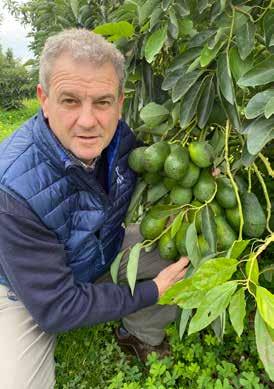
cerla fuerte y, sobre todo, de que el periodo de producción abarque muchos más meses.
¿Cuál es la evolución cuantitativa del cultivo?
En estos momentos estamos en una constante de crecimiento que ronda las 350 hectáreas anuales y, lo que es patente, es que la demanda de aguacate sigue elevada.
Están inmersos en un proyecto colaborativo denominado Agufert.
¿En qué consiste?
Entre otras cosas, como el proceso de maduración del Hass frente al Lamb Hass es muy diferente, desde Agufert se está estudiando la recolección del Lamb Hass para llevarlo listo al lineal. Creo que ya hemos obtenido bastantes datos sobre la sostenibilidad del Lamb Hass y los operadores comerciales lo conocen mucho mejor.
¿A cuánto ascendió la producción en la pasada cosecha autonómica?
Llegamos a las 21.000 toneladas, pero la que empieza este otoño será mayor gracias a la entrada en producción de las plantaciones más jóvenes. Las primeras recolecciones están previstas para finales de octubre y noviembre con las variedades Bacon y Fuerte, luego vendrá el Hass y a partir de febrero el protagonista indiscutible es el Lamb Hass, que ocupa el 70% de toda la oferta.
La variedad Lamb Hass supone el 70% de la Comunidad Valenciana
The Community of Valencia has approximately 4,000 hectares of avocado crop, with a production of around 20,000 tonnes. This year, they are launching their quality brand: ‘Aguacates
Fruit today talked to Celestino Recatalá, Chairman of ASOPROA (Asociación de Productores de Aguacate/Avocado Producers Association) who gave us details about the crop and put the spotlight on the importance of the recently created quality brand.
Can we take it that the commercial launch of ‘Aguacates de la Comunidad Valenciana’ will take place during this campaign?
Yes, indeed. The quality brand was officially presented at the end of the previous season; therefore, commercially, we are launching it this campaign.
What are its main goals?
We have to carry out a joint effort to showcase a local produce and prepare our future. A future that we want to last for a long time, with the profitability of the reasonable prices that we have been obtaining in recent years. We must make it

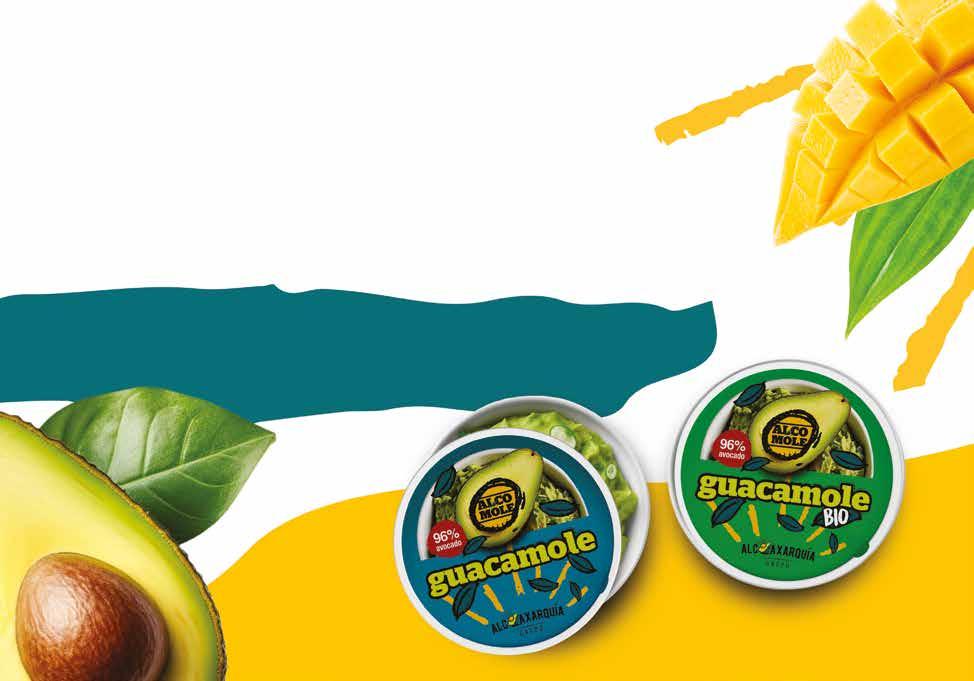
known that there are avocado productions in the Community of Valencia and that local produce is the most sustainable.
Does the quality brand include all the varieties?
Yes, indeed, Hass, Lamb Hass, Bacon or Fuerte. It is a way of making the brand stronger and, particularly, to ensure that the production period covers many more months.
What is the crop’s quantitative evolution?
At the moment, we are constantly growing by around 350 hectares per year and it is obvious is that the demand for avocados remains high. You are immersed in a collaborative project called Agufert. What does it consist of?
Amongst other things, how the Hass ripening process is completely different to that of the Lamb Hass. At Agufert, they are studying the Lamb Hass harvest to take it ready to eat to the supermarket shelves. I think that we have alre-
ady obtained enough data about the sustainability of Lamb Hass and the commercial operators know much more about it now.
What was the production figure for the last Valencian harvest?
We reached 21,000 tonnes, but the campaign about to start this autumn will be much greater thanks to younger plantations coming into production. The first harvests are forecasted for the end of October and November with the Bacon and Fuerte varieties; then Hass will appear and from February onwards, the indisputable leader will be Lamb Hass, which makes up 70% of the entire offer.

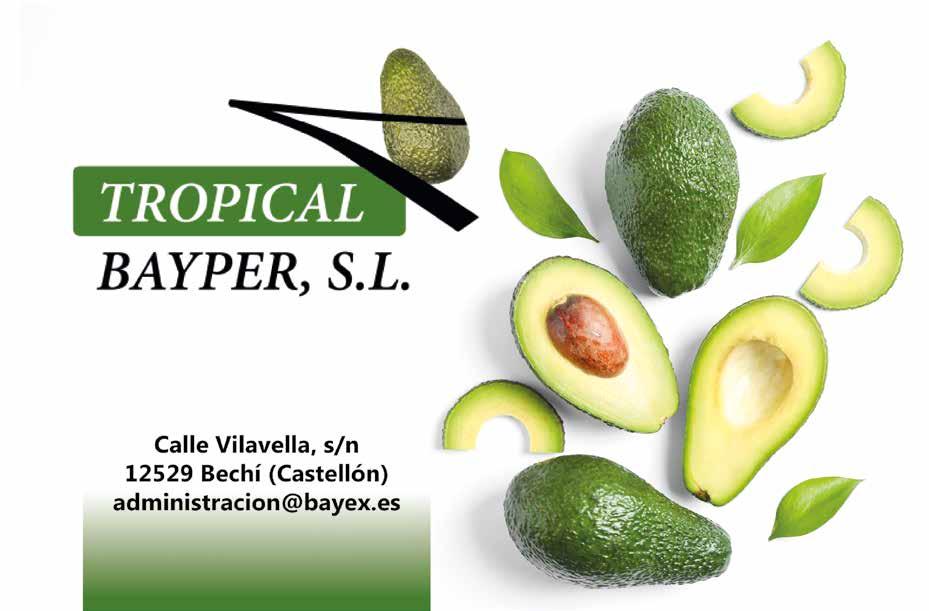
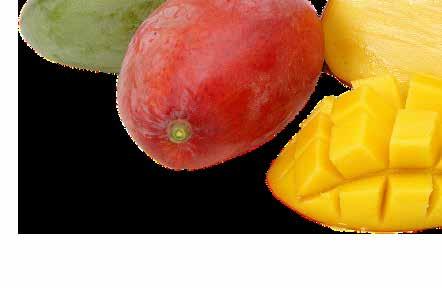
Aunque desde Asociación Española de Tropicales aseguran que “la situación hídrica
continúa siendo mala sin paliativos”, prevén cifras similares a las de 2023/24
La situación hídrica actual en la comarca de La Axarquía, la principal zona productora de tropicales de la geografía nacional, junto a la Costa Tropical de Granada, es “muy preocupante”. A principios de septiembre estaba “igual o peor” que en la campaña anterior y las necesarias precipitaciones continuaban sin llegar, más allá del paréntesis que hubo a mediados de primavera, y que está siendo la “tabla de salvación” para las escasas reservas con las que cuenta el sector en estos momentos.
Desde la Asociación Española de Tropicales (AET), el presidente, Álvaro Palacios, asevera que “la situación continúa siendo mala sin paliativos, por lo que, si nada lo remedia, continuará teniendo consecuencias en la producción de mango y aguacate”. El sector cerró la campaña de aguacate 2023/24 con unas 60.000 toneladas, lo que supuso una merma del 15 % respecto al ejercicio anterior, en el que tuvo lugar la caída más acusada con abandono de fincas y talas. En cuanto al mango, al ser un cultivo más resistente frente a las condiciones meteorológicas de incremento de la temperatura y escasez de precipitaciones, el balance final de la campaña fue de unas 12.000 toneladas. Ahora, las previsiones para la temporada 2024/25 indican que la cosecha de mango estará en unos números similares. Y, en cuanto al aguacate, la campaña volverá a ser complicada, pero esperan que las cifras puedan ser parecidas a las del ejercicio 2023/24. A pesar de que las administraciones han llevado a cabo algunos avances como la conexión de canales terciarios, con la puesta a disposición de aguas regeneradas de EDAR’s, urge acelerar las infraestructuras. Así lo manifiesta Álvaro Palacios: “estas soluciones siguen siendo insuficientes y continuamos esperando avances más concretos y que lleguen con la rapidez que requiere el campo, que está contra las cuerdas”. La tramitación de la Desaladora de Vélez Málaga es “básica, pero continúa siendo demasiado lenta y hablamos de plazos que se dilatan en el tiempo. Sobre la concesión de los riegos


Álvaro Palacios
La tramitación de la Desaladora de Vélez Málaga es
de emergencia que citaba, hemos de decir que los 3 hectómetros cúbicos que se han concedido de La Viñuela están llegando a través del reparto que se ha hecho a las comunidades de regantes”.
De unos años a esta parte el problema es siempre el mismo: “nos topamos con unas infraestructuras hídricas y una política hidráulica que nos merma y limita. Y es un lastre porque nos impide crecer y, por tanto, generar riqueza, empleo y valor añadido a un sector pujante. En este sentido, debemos seguir luchando y reclamando ante las administraciones las infraestructuras que necesitamos. El consumo de mango y de aguacate continúa en ascenso en la UE, al igual que en España, y deberíamos aprovechar nuestra posición de ventaja para dar respuesta a esta creciente demanda”, concluye el presidente de la AET.
185 M€ en exportación de aguacate andaluz El mercado mundial fluctúa. Desde hace unos años Colombia se ha convertido en uno de los actores principales de la exportación. El consumo sube en Asia. En México hay productores que están dejando de renovar certificaciones necesarias para exportar a Europa debido a los altos costes y las cotizaciones que obtienen por el aguacate... Una situación que, a ojos del presidente de la AET debería suponer una extraordinaria oportunidad para los productores andaluces y españoles. “Evidencia que podríamos tener una situación de partida ventajosa, pues somos la principal región productora de la Unión Europea. Podríamos apostar mucho más
por este producto en Andalucía y en España y seguir con el cultivo de aguacate”. El valor de las exportaciones de aguacate andaluz entre enero y mayo de 2024 se vio incrementado un 9,8% con respecto al mismo período del año anterior tras haber alcanzado los 185,2 millones de euros, según la Consejería de Agricultura, Pesca, Agua y Desarrollo Rural de la Junta de Andalucía. En cuanto al volumen, se registró un aumento de un 11,9%, totalizando 54.397 toneladas. El valor de las ventas de aguacates en el exterior durante los cinco primeros meses de este año supone un 2,4% del valor total del conjunto de las exportaciones andaluzas en el mismo período, y un 82,4% de las exportaciones españolas de esta subtropical.
Andalucía exportó en 2023 un total de 110.764 toneladas de aguacates que alcanzaron un valor de 340,7 millones de euros en los mercados de destino.
Las exportaciones de aguacate por parte de las provincias de Granada y Málaga agrupan el 97,5% del total andaluz. Hasta mayo, durante 2024, en Málaga sumaron un valor de 156,4 millones de euros. En 2021

La AET espera que se alcancen unas 60.000 t de aguacate y 12.000 t de mango 2024/25
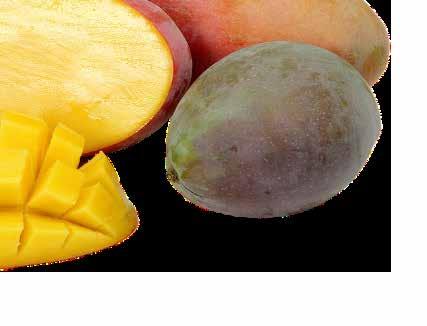
las ventas alcanzaron los 309,9 millones de euros; en 2022, los 298,8 millones de euros, y en 2023, 295,7 millones de euros. Por su parte, los productores de Granada vendieron de enero a mayo frutos por valor de 24,1 millones de euros. En 2021 las exportaciones de dicha provincia alcanzaron un valor de 33,7 millones; en 2022, de 42,7, y en 2023 sumaron 30,3. Los principales clientes de la provincia granadina entre enero y mayo de 2024 fueron Francia (7,2 millones de euros),
Hasta mayo el valor de la exportación de aguacate creció un 9,8% alcanzando los 185,2M€
Países Bajos (6,8), Alemania (3,1), Finlandia (2,9) y Dinamarca (1,03).
Por su parte, las ventas malagueñas en las mismas fechas se centraron en Francia (73,6 millones de euros), Países Bajos (30,4), Alemania (19,9), Reino Unido (7,99) y Austria (5,9).
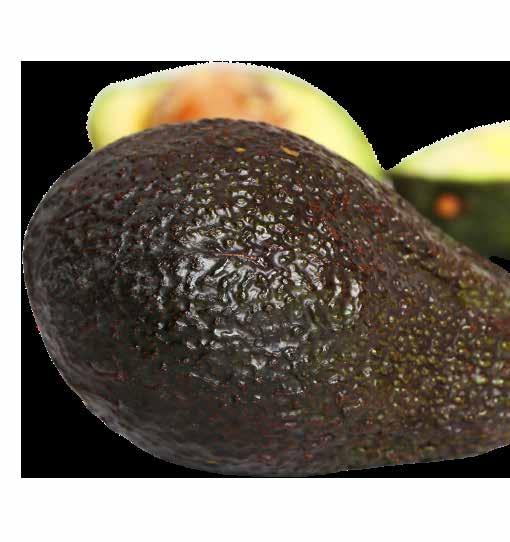
Although sources at the Asociación Española de Tropicales (Spanish Tropical Fruit Association) assure that “the water situation continues to be unreservedly bad,” they are forecasting fIgures similar to those for 2023/24
The current water situation in the region of La Axarquía, the main tropical fruit production area in Spain, alongside the Costa Tropical de Granada, is “highly concerning.” At the beginning of September, it was “the same as or worse than” in the previous campaign, and the necessary rainfall was yet to come, with the exception of the mid-spring parenthesis and that has been the “lifeline” for the little reserves held by the sector at the moment.
The Chairman of the Asociación Española de Tropicales (AET), Álvaro Palacios, assures that “the situation continues to be unreservedly bad, meaning that, if there is no change, it will continue to affect the mango and avocado production.”
The sector closed the 2023/24 avocado campaign with around 60,000 tonnes, which meant a decrease of 15% compared to the previous year, in which the sharpest drop took place with farms and harvests being abandoned. With regard to mangos, as it is a crop that is hardier against weather conditions with increased temperatures and a shortage of rainfall, the final balance for the campaign reached around 12,000 tonnes. Now, the forecasts for the 2024/25 season indicate that the mango harvest will reach similar figures. And, with respect to avocados, the campaign will once again be complicated, but they expect the figures to be similar to those for 2023/24.
In spite of the fact that the regional governments have made achieved some advances, such as the connection of tertiary channels, with regenerated water from WWTS’s being made available, the need to speed up the infrastructures has become urgent. As stated by Álvaro Palacios: “these solutions continue to be insufficient and we are still waiting for more specific advances, needed to arrive with the speed required by the fields, which are up against the ropes.” The processing of the Vélez Málaga Desalination Plant is “basic, but it is still too slow, and we are
talking about deadlines that get delayed over time. Regarding the concession of the emergency irrigation that they quoted, we have to say that the 3 cubic hectometres that have been granted from La Viñuela are arriving through the distribution that has been made to the irrigation communities.”
For some years now this problem has always been the same: “we come up against water infrastructures and a hydraulic policy that undermine and limit us. And this is a handicap because it prevents us from growing and, therefore, from generating wealth, employment and added value to a thriving sector. Accordingly, we must continue to fight and to demand the infrastructures that we need from the regional governments. Mango and avocado consumption continues to rise in the EU, as it does in Spain, and we must make the most of our advantageous position to respond to this growing demand,” the chairman of the AET concludes.
185 M€ in Andalusian avocado exports
The world market is fluctuating. For some years now, Colombia has become one of the main agents for export. Consumption is rising in Asia. In Mexico, there are producers who are not renewing the certificates necessary to export to Europe due to the high costs and the prices they obtain for avocados… A situation which, in the view of the chairman of the AET, should mean an extraordinary opportunity for the Andalusian and Spanish producers. “It proves that we could be starting in an advantageous situation, as we are the main producing region in the European Union. We could commit a great deal more to this product in Andalusia and in Spain and continue with the avocado crop.”
The value of Andalusian avocado exports between January and May 2024, increased by 9.8% compared to the same period in the previous year, reaching 185.2 million euros, according to the Ministry of Agriculture, Fishing, Water and Rural Development of the Andalusian Regional
The processing of the Vélez Málaga Desalination Plant is basic, but it continues to be too slow
Government. Regarding the volume, an increase of 11.9% was recorded, making a total of 54,397 tonnes.
The value of avocado sales abroad during the first five months of this year made up 2.4% of the total value of all the Andalusian exports in the same period, and 82.4% of the Spanish exports of this subtropical fruit.
In 2023, Andalusia exported a total of 110,764 tonnes of avocados, reaching a value of 340.7 million euros on the destination markets. Avocado exports from the provinces of Granada and Malaga gather together 97.5% of the total from Andalusia. Up to May, 2024, in Malaga they totalled a value of 156.4 million euros. In 2021, sales reached 309.9 million euros; in 2022, 298.8 million euros, and in 2023, they reached 295.7 million euros.
Producers from Granada, on the other hand, sold fruit for a value of 24.1 million euros from January to May. In 2021, the exports from this province reached a value of 33.7 million; in 2022, 42.7 and in 2023 they totalled 30.3 million euros.
The main clients of the Granada province between January and May were France (7.2 million euros), the Netherlands (6.8), Germany (3.1), Finland (2.9) and Denmark (1.03).
The sales from Malaga on the same dates concentrated on France (73.6 million euros), the Netherlands (30.4), Germany (19.9), United Kingdom (7.99) and Austria (5.9).
La temporada de aguacate chileno, recién comenzada mantiene unas fuertes expectativas de crecimiento según el portal simfruit.cl.
El Comité de Paltas de Chile estima que la cosecha para el ciclo 2024-25 alcanzará las 200.000 toneladas, lo que supone un aumento del 33,3% en comparación con las 150.000 toneladas del periodo anterior.
Carmen Gloria Lüttges, presidenta del gremio, atribuye este crecimiento a un mejor cuajado de la fruta en las hectáreas productivas, debido a unas condiciones climáticas más favorables, marcando esta temporada como la mejor de los últimos tres años. Del total de la producción, se espera que el 55%, equivalente a 110.000 toneladas, se destinen al consumo interno. Lüttges resalta que el mercado chileno continúa siendo una prioridad, considerando que Chile es uno de los mayores consumidores de palta Hass a nivel mundial, solo superado por México. Este hecho subraya la importancia de la palta en el país y su tradición de consumo, destacándola como uno de los cultivos con mayor porcentaje de producción destinada al mercado local.
Las exportaciones
Las previsiones apuntan a que unas 90.000 toneladas de aguacate Hass chilena se distribuirán a nivel internacional, con Europa como el destino principal, acaparando el 74% de las exportaciones.
Le siguen Latinoamérica con un 10,9%, Asia con un 10,2%, y Estados Unidos con un 5,3%. Lüttges menciona que Argentina desempeñará un papel importante en el mercado latinoamericano, debido al creciente
The Chilean avocado season, which has just started, is upholding important growth expectations according to the portal simfruit.cl.
The Chilean Avocado Committee estimates that the harvest for the 2024-25 cycle will reach 200,000 tonnes, which means a 33.3% increase compared to the 150,000 tonnes from the previous period.
Carmen Gloria Lüttges, the Chairwoman of the guild, attributes this growth to improved setting of the fruit in the production hectares, owing to more favourable weather conditions, marking this season into the best of the past three years. Of the total production, it is expected that 55%, equivalent to 110,000 tonnes, will go to domestic consumption. Lüttges emphasises that the Chilean market continues to be a priority, considering that Chile is one of the largest consumers of Hass avocados in the world, only surpassed by Mexico. This fact underscores the importance of the avocado in the country and the tradition of its consumption, emphasising it as one of the crops with the highest production percentage for the local market.
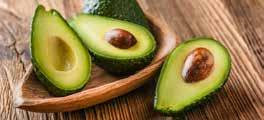
The forecasts point towards the fact that around 90,000 tonnes of Chilean Hass avocados will be distributed internationally, with Europe as the main destination, taking up 74% of the exports. Europe is followed by Latin America with 10.9%, Asia with 10.2% and the United States with 5.3%.
Lüttges mentions that Argentina will play an important role on the Latin American market, due to its growing interest in the nutritional properties and excellent flavour of this fruit.
The executive also indicates that “the figures will be constantly updated over the season, as it develops.”
interés por las propiedades nutricionales y el excelente sabor de esta fruta.
La ejecutiva, señala además que “las cifras se actualizarán constantemente a lo largo de la temporada, conforme se desarrolle la misma”.



90.000 toneladas de aguacate chileno llegarán al mercado europeo







































Cultipalta, empresa perteneciente al Grupo Cultivar, referente en importación y distribución de aguacates y mangos, anuncia la apertura de su nuevo almacén en Mercabarna, Barcelona. Esta instalación especializada en la maduración, selección, confección y distribución de aguacates y mangos representa un importante avance en la expansión de las operaciones de Cultipalta.
El nuevo almacén, que abarca más de 8.000m² construidos, está equipado con tecnología de vanguardia para la maduración controlada y la selección precisa de aguacates y mangos ajustándose a los requerimientos de cada cliente. Estas instalaciones permitirán a la firma optimizar procesos e incrementar volúmenes, garantizando que la fruta llegue a sus clientes en su óptimo punto de maduración, con la máxima frescura y calidad.
Las nuevas instalaciones están equipadas con la más avanzada tecnología, lo que permite optimizar el uso de los recursos y minimizar las emisiones de CO2. Gracias a estas mejoras, se con-
sigue una significativa reducción de la huella de carbono, contribuyendo a un modelo más sostenible y respetuoso con el medio ambiente.
“Estamos comprometidos a ofrecer el mejor producto y servicio a nuestros clientes y este nuevo centro nos permitirá mejorar nuestra eficiencia y capacidad de respuesta a la creciente demanda de aguacates y mangos”, señalan desde la empresa.
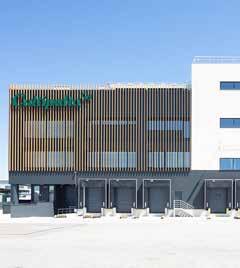
Cultipalta opens its new warehouse
Cultipalta, a company belonging to the Cultivar Group, a benchmark in avocado and mango importing and distribution, is announcing the opening of its new warehouse in Mercabarna, Barcelona. This installation, specialised in the ripening, selection, preparation and distribution of avocados and mangos, represents an important step forward in Cultipalta’s expansion operations.
The new warehouse, which covers a constructed area of over 8,000m², is equipped with the latest technology for controlled ripening and precise selection of avocados and mangos, adjusting to each client’s requirements. These installations will allow the company to optimise processes and increase volumes, guaranteeing that the fruit reaches its clients at its optimum point of ripeness, with maximum freshness and quality.
The new installations are fitted with state-of-the-art technology, allowing the use of resources to be optimised and the CO2 emissions to be minimised. Thanks to these improvements, a significant reduction in the carbon footprint has been achieved, contributing to a more sustainable and environmentally-friendly model. “We are committed to offering the best produce and service to our clients and this new centre will allow us to improve our efficiency and capacity to respond to the growing demand for avocados and mangos,” sources from the company indicate.

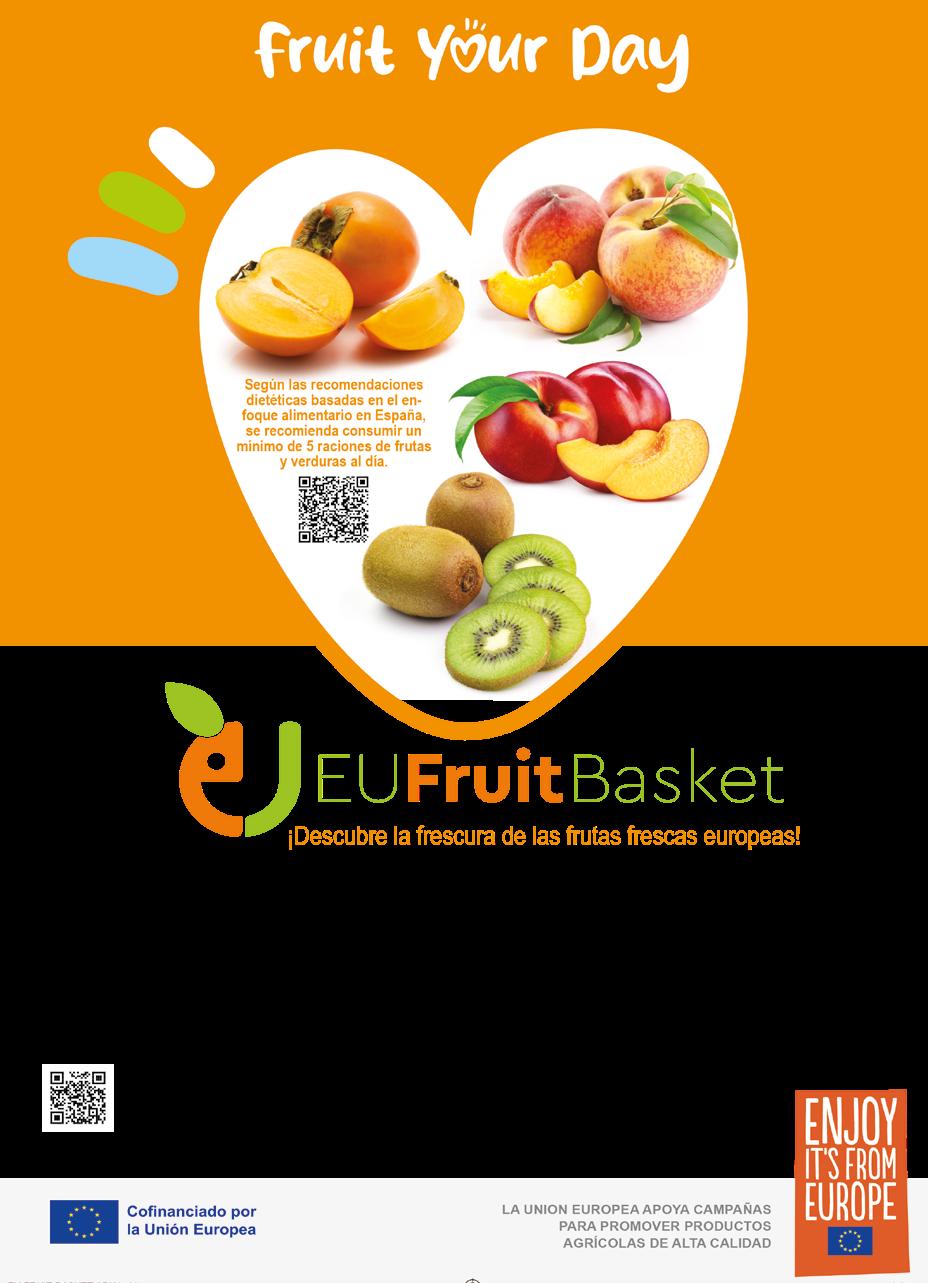
Las previsiones de aguacate crecen ligeramente y se mantienen en mango, mientras ultiman su nueva sede para pistacho en Baza

Prudencio López, gerente de Natural Tropic, espera una campaña de subtropicales marcada por la estabilidad. “Las cifras serán muy similares a las del ejercicio pasado en mango, con un millón y medio de kilos y en aguacate esperamos un crecimiento del 8%. También mantenemos la estabilidad en la línea de procesado con nuestro guacamole. En cuando a facturación, esperamos crecer un 8%”. Entre sus novedades destaca la puesta en marcha de nueva maquinaria que permite seleccionar y clasificar la fruta según el punto de maduración y coloración deseado.
Ya en otro ámbito, refuerzan su apuesta por la diversificación a través de la línea de pistacho iniciada hace tres años, y la puesta en marcha de sus nuevas instalaciones en Baza (Granada).
Agua para crecer
En mango, la escasez hídrica y problemas en la fase de floración han comprometido el cuaje de los frutos mermando los volúmenes. Además, la presión de otros
orígenes, con bajas cotizaciones, empuja a la baja los precios del producto nacional. No obstante, el gerente de Natural Tropic recuerda que el consumidor europeo muestra su preferencia por el mango de España, y prevé una buena campaña comercial.
A nivel operativo, la escasez hídrica sigue lastrando la actividad del sector en la Axarquía. “Necesitamos una desaladora. Mientras no se lleve a cabo, solo tendemos el agua para mantener los cultivos, pero no podremos producir como deberíamos y tampoco podremos crecer”. López reitera la necesidad de que las administraciones lleven a cabo los proyectos pendientes para dotar de agua desalada y regenerada a un sector que emplea a miles de personas en Málaga y la Costa de Granada.
Pistacho: nueva sede y formatos pequeños
Desde octubre sus nuevas instalaciones de pistacho en Baza estarán listas. El año pasado empezaron a comercializar producto, y en este ampliarán los
volúmenes hasta alcanzar las 400t entre producción propia y de agricultores socios de Andalucía y Castilla-La Mancha. López confía en la proyección de este cultivo y ha planeado una estrategia de crecimiento a 5 años vista. Este 2024 dan el siguiente paso, tras la puesta en marcha de la sede granadina y la instalación de nueva maquinaria de procesado, que les permitirá comercializar formatos más pequeños. Su objetivo es convertirse en “especialistas en pistacho”, como ya lo son en subtropicales, y alcanzar los volúmenes necesarios para abastecer a los clientes todo el año.
Este año esperan sumar un 8% más de producción de aguacate
The avocado forecasts have risen slightly and they are maintaining the fIgures in mangos, while they are fInalising their
Prudencio López, Manager at Natural Tropic, expects a sub-tropical fruit campaign marked by stability. “The figures will be very similar to last year’s in mangos, with one and a half million kilos; and in avocados we expect an 8% growth. We are also maintaining stability in the processing line with our guacamole. With regard to invoicing, we expect to grow by 8%.” Amongst the company’s new developments, the start up of new machinery that allows fruit sorting and classification according to the desired point of ripeness and colouring stands out.
In another area, they are strengthening their commitment to diversification through the pistachio nut line started three years ago, and the start up of their new installations in Baza (Granada).
In mangos, the water shortage and problems in the flowering phase have compromised the setting of the fruit, decreasing the volumes.

In addition, the pressure from other sources, with low prices, is pushing the prices of Spanish national produce down. However, the Manager at Natural Tropic recalls that European consumers show preference for Spanish mangos, and he forecasts a good sales campaign.
On an operational scale, the water shortage continues to reduce the sector’s activity in La Axarquía. “We need a desalination plant. Until this is carried out, we will only have enough to maintain the crops, but we will not be able to produce as we should, and we will also not be able to grow.” López repeats the need for the local governments to carry out the pending projects to provide desalinated and regenerated
This year they expect an extra 8% in avocado production
Pistachio: the new plant and small formats
The new pistachio installations in Baza will be ready in October. Last year they started marketing produce, and this year they will increase the volumes until reaching 400 tonnes including their own production and that of associate farmers from Andalusia and Castilla-La Mancha. López is placing his trust in the projection of this crop and has planned a 5-year growth strategy. This year, 2024, they are taking the next step, following the start up of the plant in Granada and the installation of new processing machinery, which will allow them to market smaller formats. Their goal is to become “specialists in pistachio”, as they already are in sub-tropical fruit, and reach the volumes necessary to supply clients all year round.
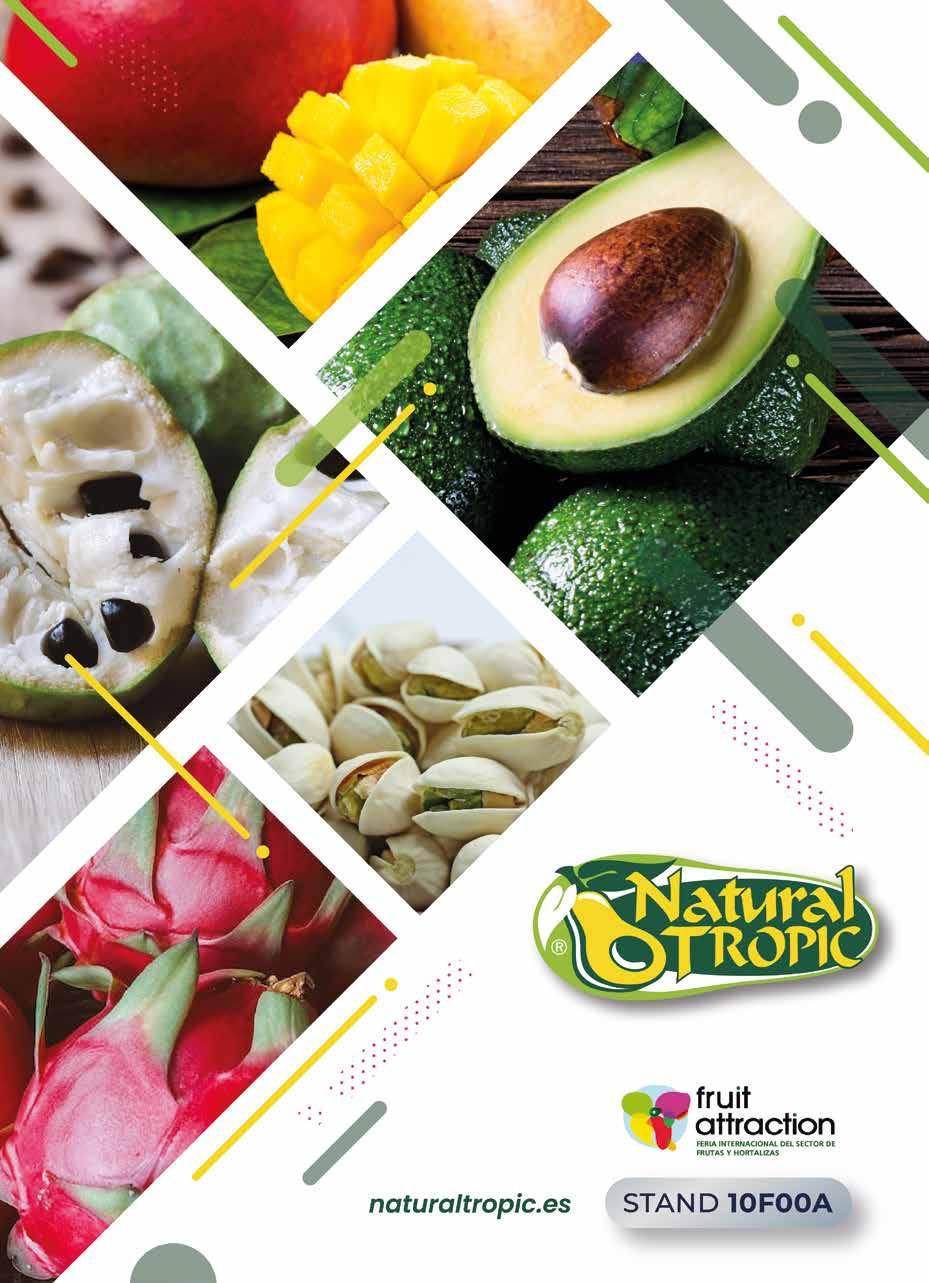
Es el objetivo de Compañía Aguacatera del Sur, que acude a Fruit Attraction con “muchas y muy buenas expectativas”
Para el nuevo curso 2024/25, Compañía Aguacatera del Sur tiene en mente un objetivo claro: mejorar las ventas de producto ‘ready to eat’. “Es un segmento muy competitivo, donde cada vez hay más actores y trabajan muy bien, dicho sea de paso. Lograr fidelización y captación en base a marca no parece una tarea sencilla, pero nuestra presencia y constancia durante los últimos años tiene que seguir siendo nuestra mejor garantía de servicio a los clientes”. La empresa estará presente en Fruit Attraction con “muchas y muy buenas expectativas”, tras hacer un análisis realista de la situación del 2024. Ponderando en todo momento lo factores exógenos que han ido formando las condiciones para que el mercado se desarrolle de la manera (fluida) en que lo ha hecho”. Según Compañía Aguacatera del Sur, este año la campaña de verano en aguacate ha transcurrido entre condiciones “muy particulares, aunque claramente cíclicas. Venimos de atravesar un Fenómeno El Niño potente, y eso ha tenido un efecto muy acentuado en determinadas zonas de producción que concentran un volumen importante en relativamente pocas semanas. Hablamos específicamente de una caída de volumen y calibres, casi sin precedentes en la zona norte del Perú. Eso ha condicionado en gran medida el comportamiento de la oferta global desde Perú”. La demanda ha soportado volúmenes mucho menores al potencial de la oferta. Estos niveles, aunque parcialmente, empezarán a recuperarse en 2025, adelantan. Durante la campaña de invierno la temporada local de aguacate en España coincide con la de productores “no mediterráneos” de Colombia, Chile y México. “Los dos primeros tienen importantes miras, en EE.UU. en el caso de Colombia, y en su mercado local y luego en EE.UU., en el caso de los exportadores chilenos”.

con la producción de California (que además valora mucho a México como origen por su proximidad de servicio), ocurre también en Chile en su bien educado mercado local, y
“We
Desde Compañía Aguacatera del Sur opinan que siempre va a haber un “premium” comercial para la fruta local. “Ocurre en USA

Siempre va a haber un ‘premium’ comercial para la fruta local.
Ocurre en EE.UU., Chile y Europa
claramente ocurre en Europa, donde podemos experimentar las cualidades organolépticas de un aguacate cosechado en su punto óptimo de maduración”.
This is the goal of Compañía Aguacatera del Sur, which is coming to Fruit Attraction with “many, very high expectations”
For the new 2024/25 season, Compañía Aguacatera del Sur has its sights set on a clear goal: improving the sales of ‘ready to eat’ products. “It is a highly competitive segment, where there are more and more agents, who, incidentally, work very well. Managing loyalty and catchment based on the brand does not seem a simple task, but our presence and constancy in recent years must continue to be our best guarantee of service to our clients.”
The company will be present at Fruit Attraction with “many, very high expectations”, after carrying out a realistic analysis of the 2024 situation. At all times, we have been deliberating on the exogenous factors that have been shaping the conditions to ensure the market developed in the (fluid) way it has.”
According to Compañía Aguacatera del Sur, this year the summer avocado campaign has taken place under conditions that are “very particular, although clearly cyclic. We have just gone through a powerful phenomenon of El Niño, and this has had a very marked effect in certain production areas where an important volume is concentrated over relatively few weeks. We are
specifically talking about a drop in volume and size, virtually without precedent in the northern area of Peru. To a large extent, this has conditioned the behaviour of Peru’s global offer.”
The demand has had to bear volumes that are much lower than the potential offer. These levels will start recovering, although only partially, in 2025, sources from the company advance.
During the winter campaign, the local avocado season in Spain coincides with that of the “non-Mediterranean” producers from Colombia, Chile, and Mexico. “The first two have significant sights set on the USA in the case of Colombia, and on their local market and then the USA, in the case of Chilean exporters.”
Sources from Compañía Aguacatera del Sur believe that there is always going to be a commercial “premium” for local fruit. “It happens in the USA with the Californian production (which also values Mexican production greatly due to its proximity); it also happens in Chile in its well-mannered local market, and it clearly happens in Europe, where we can experience the organoleptic qualities of an avocado harvested at its optimum point of ripeness.”
Infia Ibérica CENTRAL
Polígono S.P.I. 2, Parcela 5
Tel. 961 465 227
Fax. 961 465 152 infia@infia.es
46530 PUZOL - Valencia
Infia Ibérica HUELVA
Pol. Ind. San Jorge, Parcelas 113-119
Tel. 959 350 030
Fax. 959 530 171 infia@infia.es
21810 PALOS DE LA FRONTERA - Huelva
Infia Ibérica ALMERÍA
Pol. La Redonda - Calle Bremen nº 4
Tel. 950 581 330
Fax. 950 581 140 infia@infia.es
04700 EL EJIDO -Almería


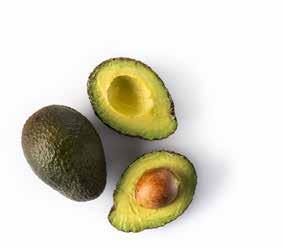
Con un incremento anual de 350 hectáreas, la Comunidad Valenciana avanza en su producción. Además, numerosos operadores malagueños se han decantado por una tierra que, de momento, no tiene difIcultades de agua
Fruit Today magazine habló con Vicente Bayona, director de Tropical Bayper, y uno de los pioneros en la introducción de esta fruta en la Comunidad.
¿Cómo se cerró la temporada de Lamb Hass?
Con números positivos y una campaña que, tanto para el productor como para el comercializador, podemos calificar de positiva.
Usted, como distribuidor de planta de Viveros Brokaw conoce muy bien cuál es el desarrollo del sector.
Sí, efectivamente, la petición de planta por parte de los agricultores es muy elevada, señal inequívoca de que el cultivo sigue en plena expansión. Incluso tenemos reservas hechas para el año que viene.
Deduzco que es una apuesta muy firme. Por supuesto. Un asunto que llevábamos con mucha determinación es que se debe plantar en aquellas comarcas o zonas con microclimas más adecuados. La comarca de Les Valls fue pionera en su introducción, pero ahora el cultivo se ha extendido por la zona norte de Castellón, por el área de Benicassim, por la comarca de La Safor y también por Villavieja y Betxí. Otro de nuestros compromisos parte de ser respetuosos con los cultivos y con el medio ambiente.
¿Consume tanta agua el aguacate como se dice?
No, es un mito. La realidad es que consume los mismos litros que los cítricos. Y a las pruebas me remito, en las sociedades de riego valencianas no se destina más agua para el aguacate que para los cítricos.
¿Hemos avanzado en el conocimiento de la maduración de la variedad Lamb Hass? Sí, y se está haciendo de manera eficaz, tanto en origen como por parte de los compradores. La tecnología ha hecho su papel porque ya tenemos acceso a la comprobación de la materia seca. El sistema ha funcionado, es rápido y proporciona infor-

mación real sobre cuándo debe comenzar la recolección de la variedad.
¿Qué novedades han introducido en la central de confección?
Hemos aumentado nuestra capacidad de frío y hemos puesto más líneas de reempaquetado tanto en mallas como en flow pack, además de toda la tecnología necesaria para llegar a las plataformas de distribución.
La comarca de Les Valls fue la pionera en el cultivo de Lamb Hass

With an annual increase of 350 hectares, the Region of Valencia is moving forward in its production. Additionally, many operators from Malaga have opted for a region which, at present, does not suffer from any water diffIculties
Fruit Today magazine talked to Vicente Bayona, Manager of Tropical Bayper and one of the pioneers in the introduction of this fruit in Valencia.
How did the Lamb Hass season close?
With positive numbers and a campaign which, both for producers and for marketers, can be qualified as positive.
You, as a plant distributor company from Viveros Brokaw, are very up to date about the development of the sector.
Yes, indeed. Requests for plants by farmers are very high, a clear sign that the crop continues to be in full expansion. We even already have some reservations made for next year. I surmise that it is a very firm commitment. Of course. One matter that we are very determined about is that they must be planted in the regions or areas with highly suitable micro-climates. The region of Les Valls was a pioneer in this introduction, but now the crop has extended along the northern area of Castellón, through Benicassim, through the region of La Safor and also in Villavieja and Betxí. Another of our commitments involves
being respectful with the crops and with the environment.
Do avocados consume as much water as is claimed?
No, it is a myth. The truth is that they consume the same litres as citrus trees. The evidence is there: in the Valencian irrigation communities no more water is destined to avocados than to citrus fruit trees.
Have we gained more knowledge about the ripening of the Lamb Hass variety?
Yes, and it is being carried out in an effective way, both at the source and by the buyers. Technology has played its role because we already have access to the verification of the dry matter. The system has worked; it is fast and it provides real information about when the variety’s harvest should be started.
What new developments have been introduced in the preparation centre?
We have increased our chilling capacity and we have introduced more repacking lines, both in nets and in flow packs, in addition to all the technology necessary to reach the distribution platforms.


Presenta una nueva gama de recetas de guacamole y mostrará la versatilidad del aguacate de la mano de los Hermanos Torres
TROPS llega a Fruit Attraction con sorpresas. La empresa acogerá a los visitantes en un stand renovado, con elementos decorativos que evocan la naturaleza y el origen de sus productos. El aguacate será el producto estrella, pero también su mango gozará de un gran protagonismo.
El director general, Víctor Luque, recuerda que “en TROPS controlamos todas las etapas en la vida de nuestros aguacates y mangos. Esto nos permite ofrecer productos de alta calidad y listos para el consumo, y así pretendemos transmitirlo con el diseño de nuestro stand”. Estos días, su novedad más importante será el lanzamiento de nuevos productos de IV Gama. “Vamos a presentar una nueva gama de recetas de guacamole bajo la marca TROPS. El aguacate es un ingrediente versátil y lleno de posibilidades. Por eso, hemos creado una serie de recetas que permitirán explorar nuevos sabores y texturas, siempre con la calidad como prioridad: Del mejor aguacate, el mejor guacamole”, detalla Víctor Luque. Durante esta edición ofrecerán degustaciones de sus productos a través de preparaciones originales y creativas. El martes 8 de octubre harán un taller de cocina en vivo en el espacio Factoría Chef, donde los asistentes aprenderán a cocinar de forma saludable con aguacate TROPS. Y el miércoles 9 podrán descubrir nuevas recetas con aguacate de la mano de los Hermanos Torres en su stand 10E02.
Aumentos en mango y aguacate
La pasada campaña de aguacate y mango no fue buena en cuanto a producción en la península ibérica debido a la sequía que viene padeciendo el país en los últimos años. Aun así, en TROPS los volúmenes se mantuvieron en aguacate gracias al crecimiento que están experimentando en Portugal, Cádiz y la C. Valenciana, donde están desarrollando nuevos centros de recogida para dar a los agricultores el mejor servicio de cercanía.
Este año, prevén un incremento cercano al 20% en mango respecto a la campaña anterior, pero lejos de los volúmenes normales que se esperarían. En aguacate es pronto para confirmar volúmenes,

crecen
en
aguacate
y
consumo
de
mango. Hay una oportunidad que debemos atender
pero “viendo los árboles, somos algo más optimistas de cara a la próxima campaña”. “La calidad de ambas frutas sigue creciendo y ese debe ser el camino, dar al consumidor una fruta con la máxima garantía. Cuando un consumidor elige la marca TROPS, está seguro de comprar una fruta sabrosa y

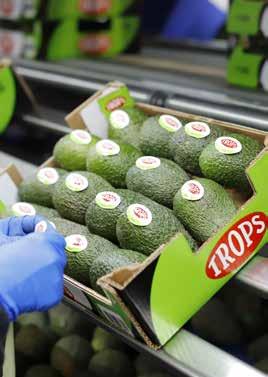
con las máximas garantías de origen y trazabilidad”.
En materia de precios, prevén que se mantengan estables, ya que la demanda en Europa crece y esperan que el incremento de la oferta sea absorbido por el aumento de la demanda.
Mercados mundiales como EEUU, Europa y China aumentan el consumo de aguacate y mango. “Hay una oportunidad que debemos atender. Afortunadamente la inflación está bajando y debe ayudar a que los consumidores actuales y futuros sigan esa senda de crecimiento”.
Respecto al problema hídrico, Luque es tajante: “El agua debe ser una cuestión de Estado en cualquier país, es la base de crecimiento sostenible de cualquier sociedad, invertir en infraestructuras hídricas asegura un futuro para esas zonas. En nuestro caso, las administraciones deben acelerar los proyectos tanto en aguas regeneradas, donde debemos avanzar y ser capaces de reutilizar toda esa agua que se vierte al mar, como en desaladoras para completar la oferta hídrica”.
También los productores “debemos seguir avanzando en prácticas agronómicas más sostenibles, invirtiendo en tecnología para sensorizar el campo, por ejemplo, para realizar el uso más eficiente de los recursos”.
The company is presenting a new range of guacamole recipes and the Torres Brothers will help show the versatility of avocados
TROPS is coming to Fruit Attraction with a few surprises up its sleeves. The company will welcome visitors to a renewed stand, with decorative elements that evoke the nature and origin of its products. Avocados will be the star produce, but mangos will also enjoy an important position.
The General Manager, Víctor Luque, recalls that “at TROPS we control all the different life stages of our avocados and mangos. This allows us to offer high-quality products, ready-to-eat and we want the design of our stand to transmit this.”
At this point, its most important new development will be the launch of new Convenience products.
“We are going to present a new range of guacamole recipes under the TROPS brand. Avocados are versatile ingredients, full of possibilities. For this reason, we have created a series of recipes that will allow new flavours and textures to be explored, always with quality as our top priority: The best avocado makes the best guacamole,” Víctor Luque explains.
During this edition, they will offer tastings of their products through original, creative preparations.
On Tuesday, the 8th of October, they will host a live show cooking session in the Factoría Chef space, where visitors will learn how to cook TROPS avocados in a healthy way. And on Wednesday, the 9th, they will be able to discover new avocado
recipes alongside the Torres Brothers on their stand10E02.
in mangos and avocados
The last avocado and mango campaign was not very good regarding production on the Iberian mainland owing to the drought that the country has been suffering from in recent years. Even so, at TROPS the volumes were maintained in avocados thanks to the growth they are experiencing in Portugal, Cadiz and the Valencian Region, where they are developing new collection centres to give farmers the best local service.
This year, they forecast an increase of around 20% in mangos compared to the previous one, but this is still a long way from the normal volumes that they should expect. In avocados, it is still early to confirm volumes, but “looking at the trees, we are slightly more optimistic about the next campaign.”
“The quality of both fruits continues to rise, and this must be the road to take, giving consumers fruit with maximum guarantees. When a consumer chooses the TROPS brand, they are certain they are buying a tasty fruit with the maximum guarantees of origin and traceability.”
With regard to prices, they predict that they will remain stable, as demand in Europe is growing
and they expect that the increase in offer will be absorbed by the increase in the demand. World markets such as the USA, Europe and China are increasing their avocado and mango consumption. “We must take advantage of this opportunity. Fortunately, inflation is dropping and it must help both today’s clients and those of the future in order to continue this growth track.”
Regarding the water problem, Luque is categorical: “Water must be a question of State in any country; it is the basis for sustainable growth in any society, investing in water infrastructures guarantees a future for these areas. In our case, the administrations must speed up the projects both in regenerated water, where we must move forward and be able to reuse all this water that is dumped into the sea, and in desalination plants to complete the water offer.”
As producers, “we must also continue to move forward in more sustainable agronomical practices, investing in technology to put sensors in the fields, for example, in order to be able to make a more efficient use of the resources.”
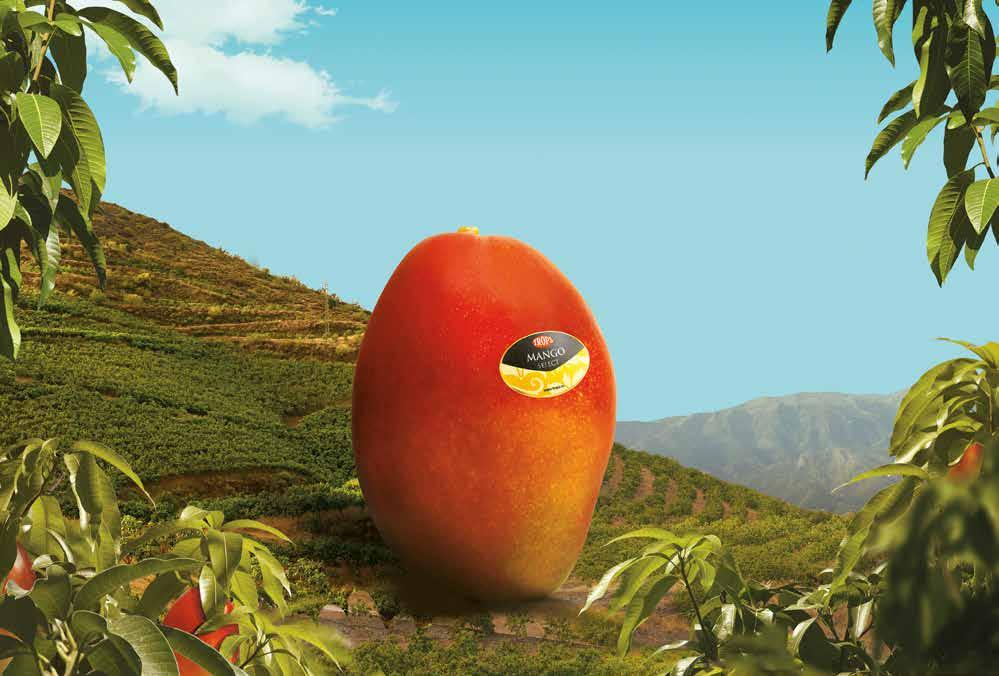

Bio Procam comienza el ‘curso’ con novedades importantes. Este año refuerzan su apuesta por las certificaciones adicionales a la del sello Agricultura Ecológica con una superficie “mucho mayor” certificada por Naturland y Biosuisse en aguacate, mango y pepino, cuenta el gerente, Fernando Martín.
Además, diversifican su portfolio incorporando nuevas referencias: pimiento italiano dulce rojo, cherry rama “de sabor excelente” y pepino snack. “Vamos a empezar a pequeña escala con invernaderos completos y todas las certificaciones”. En su catálogo tienen pepino holandés y francés, aguacate, mango, tomate rama, pera, marmande, beef, calabacín, berenjena, judía y pimiento California.
El equipo estará en Fruit Attraction (stand 9B10) para mostrar sus novedades y revisar los últimos detalles de la programación de la campaña.
Este año producirán unos 10 mill. kg entre todas sus referencias a pesar de que en mango y aguacate habrá un 30% menos que en un año normal. “Aunque en nuestra zona hay agua, el clima está afectando a la floración y llevamos 3 años con menos volumen pese a tener más superficie”. El aumento de hectáreas va “poco a poco, pero es sostenido. Somos una OPFH”. Su zona más importante está en la Costa Tropical de Granada, en Cádiz tienen nuevos socios agricultores de aguacate, en Axarquía de mango y en Almería de hortalizas.
Bio Procam is starting the ‘school year’ with important new developments. This year it is strengthening its commitment to certifications in addition to that of Ecological Agriculture with a “much larger” surface area certified by Naturland and Biosuisse in avocados, mangos, and cucumbers, the Manager, Fernando Martín, explains.
Additionally, they are diversifying their portfolio, incorporating new references: Italian sweet red peppers, vine cherry tomatoes “with an excellent flavour” and snack cucumbers. “We are going to start out on a small scale with full greenhouses and all the certifications.”
Its catalogue contains Dutch and French cucumbers, avocados, mangos, tomatoes of all types (vine, plum, Marmande, beefsteak), courgettes, aubergines, beans, and California peppers.
The team will be at Fruit Attraction (stand 9B10) to show their new developments and to go over the final details of the campaign’s programming. This year, they will produce around 10 million kg, amongst all their references, in spite of the fact that there will be 30% less than a normal year in mangos and avocados. “Although there is water in our region, the weather conditions are affecting flowering, and we have produced less volume with more surface area over the past 3 years.” The increase in hectares is moving forward “little by little, but it is continuous. We are an OPFH (fruit and vegetable producer organisation)”. Its most important area lies in the Granada Costa Tropical; in Cadiz, they have new associate farmers in avocados; in Axarquia, in mangos; and in Almeria, in vegetables.
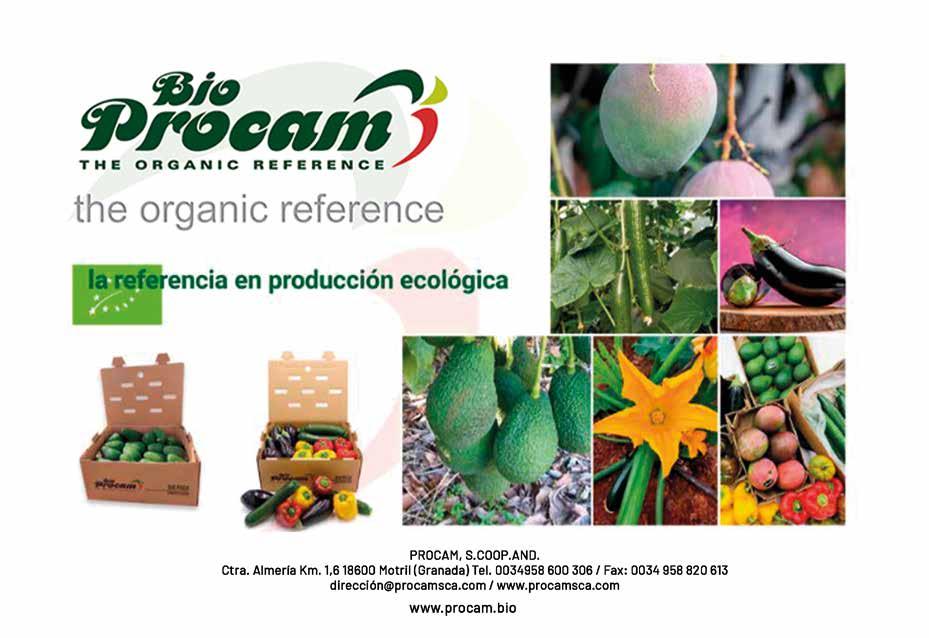
No renunciamos a nuestra tradición, pero tampoco nos quedamos atrás. Apostamos por el relevo generacional, por dar voz y oportunidad a los jóvenes.
Dueños de la tierra. Dueños de lo que producimos.

Mª ÁNGELES, PAQUI, RAMÓN, MIGUEL ÁNGEL, TAHIRI, JESÚS, MIGUEL, ROSENDO, Mª ISABEL Y JUAN. AGRICULTORES.
FOTOGRAFÍA. RODRIGO VALERO

solución de Ecoculture es efIcaz contra estrés abiótico y reduce signifIcativamente los efectos
Los cambios drásticos en el clima y la amenaza constante de plagas y enfermedades son dos de los retos más difíciles en la agricultura. Para proteger las plantas, una solución efectiva es el uso de tecnologías que aumentan el nivel de antioxidantes, ayudando a mantener la integridad celular, fortaleciendo las plantas frente a condiciones adversas y haciéndolas más robustas y productivas a lo largo de su ciclo vital. XStress, desarrollado por Ecoculture, ha demostrado ser una herramienta eficaz en la lucha contra el estrés abiótico causado por condiciones ambientales desfavorables y reduce significativamente los efectos de enfermedades causadas por virus, hongos y bacterias.
Su efectividad se ha observado en cultivos con lasiodiplodia en mango brasileño, con menos incidencia en las áreas tratadas; funciona con éxito en combatir el mal de Panamá en plátanos y el ‘greening’ en cítricos sudamericanos; y recientemente en tomate ha logrado reducir los síntomas del virus rugoso, permitiendo que las plantas afectadas sigan produciendo.
La familia de hongos Botryosphaeriaceae incluye varios géneros fitopatógenos que causan enfermedades en una gran variedad de plantas y son una de las principales amenazas del aguacate. Pueden provocar enfermedades graves que afectan a su salud y producción, provocando pérdida de rendimiento y calidad, muerte regresiva, muerte o necrosis descendentes de las ramas; chancro de ramas y pudrición del fruto o pedúnculo. Con el programa XStress se ha conseguido reducir la afectación en más de un 70% en ensayos en cultivos de 1-2 años de Hass en fincas de Málaga que
presentaban daños moderados por el hongo y habían llegado a causar la muerte de alguna planta. Según el gerente, Ángel Ruiz Serna, “XStress mejora la absorción de nutrientes esenciales, lo que fortalece las defensas naturales de las plantas y las hace menos susceptibles a los patógenos. Esta tecnología permite que las plantas convivan con las enfermedades, manteniendo crecimiento y productividad en niveles óptimos”.
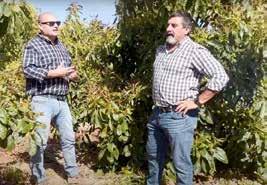
Ecoculture’s solution is effective against abiotic stress, and it signifIcantly reduces the effects of diseases
Drastic changes in the climate and the constant threat of pests and diseases are two of the most difficult challenges in agriculture. To protect the plants, an effective solution is the use of technologies that increase the level of antioxidants, helping to maintain cellular integrity, strengthening the plants against bad weather conditions, and making them hardier and more productive throughout their life cycle. XStress, developed by Ecoculture, has been shown to be an effective tool in the fight against abiotic stress caused by unfavourable environmental conditions and it significantly reduces the effects of diseases caused by viruses, fungi and bacteria.
Its effectiveness has been observed in crops with Lasiodiplodia in Brazilian mangos, with less incidence in the treated areas; it works successfully in fighting against Panama disease in bananas and ‘greening’ in South American citrus fruit; and recently it has managed to reduce the symptoms of ToBRFV on tomatoes,
allowing the affected plants to continue producing fruit.
The fungi family Botryosphaeriaceae includes several plant pathogen genres that cause disease on a wide variety of plants, and they are one of the main threats to avocados. They can cause serious diseases that affect their health and production, causing losses in yield and quality, regressive death or descending necrosis of the branches, along with branch chancre and rotting of the fruit or stalks. With the XStress programme, affectation has been reduced by over 70% in trials on 1-2 year old Hass crops on farms in Malaga that showed moderate damage due to the fungi, and which had even caused the death of some plants.
According to the manager, Ángel Ruiz Serna, “XStress improves the absorption of essential nutrients, which strengthens the plants’ natural defences and makes them less susceptible to the pathogens. This technology allows the plants to live alongside the diseases, maintaining their growth and productivity at optimum levels.”


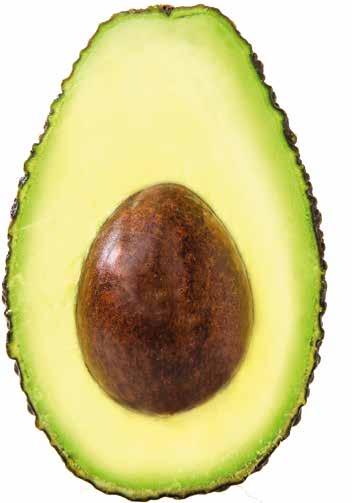
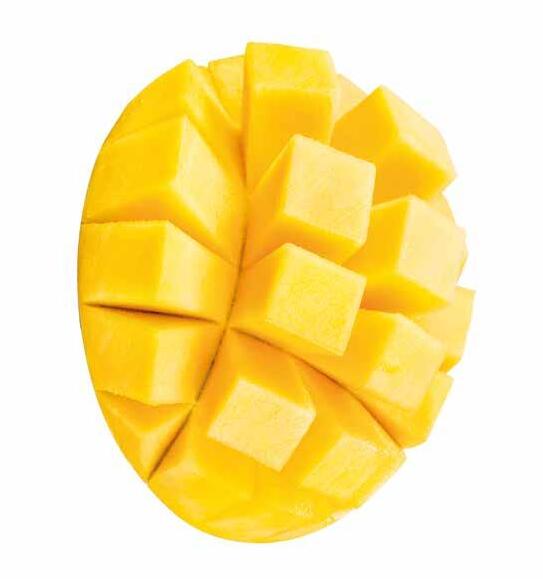

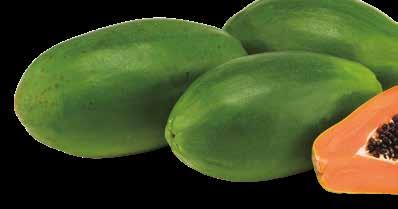
CapGen Seeds ha comenzado la campaña 2024-25 con un fuerte impulso internacional, ampliando su presencia en mercados clave como México, Marruecos e Italia. Este crecimiento refleja su apuesta por ofrecer soluciones innovadoras, manteniendo su foco en investigación y desarrollo.
La gran novedad es la apertura de CapGen Seeds Italia, con sede en Sicilia. En esta región, está introduciendo la papaya Alicia, una variedad desarrollada para el cultivo en invernaderos y condiciones no tropicales, lo que la convierte en una excelente opción para el clima mediterráneo. Alicia se distingue por su alto contenido en beta-licopenos, firmeza y aroma perfumado. “La apertura en Italia es un paso estratégico para nosotros. Estamos convencidos de que la papaya Alicia será un éxito en Sicilia”, afirmó Rafael Cremades, director general de CapGen Seeds.
En mercados como México y Marruecos, donde ya tiene una fuerte presencia, ha experimentado un notable crecimiento, impulsado por el éxito de sus variedades de tomate, pimiento y pepino, adaptadas a las condiciones específicas de estas regiones. La resistencia a enfermedades y el mayor rendimiento han sido esenciales en su éxito.
Acuerdos clave en Asia
Su crecimiento internacional también incluye importantes acuerdos en mercados clave como India y China, donde la demanda de semillas de alta calidad está en constante
aumento. Estos acuerdos posicionarán a la empresa como un actor relevante en Asia. “La entrada en mercados tan competitivos como India y China marca un hito importante para nosotros”.
CapGen Seeds continúa innovando con nuevas variedades, como un tomate pera resistente al virus ToBRFV, y variedades pre-comerciales de pimiento y pepino para ciclo temprano. Estas soluciones permitirán a la compañía seguir creciendo en el mercado local en zonas clave como Almería, Costa de Granada y campo de Cartagena. Variedades exitosas del año anterior, como el pimiento California Gaudí, resistente a oídio y nemátodos, y el tomate Cherry Pera Gavilán, ideal para ecológico, seguirán siendo importantes esta campaña. En pepino, Martínez y Españolo continúan estableciéndose en el mercado español.
The great new development is the opening of CapGen Seeds Italia, where they are introducing the papaya Alicia
CapGen Seeds has started off the 2024-25 campaign with an important international boost, extending its presence on key markets such as Mexico, Morocco, and Italy. This growth reflects its commitment to offering innovative solutions, maintaining its spotlight on research and development.
Amplían su presencia en mercados clave como México, Marruecos, Italia, India y China

The great new development is the opening of CapGen Seeds Italia, with head offices in Sicily. In this region, they are introducing the papaya Alicia, a variety developed for greenhouse crops and non-tropical conditions, which turns it into an excellent option for the Mediterranean climate. Alicia stands out for its high beta-lycopene content, its firmness and perfumed aroma. “This opening in Italy is a strategic step for us. We are convinced that the papaya Alicia will be successful in Sicily,” Rafael Cremades, General Manager of CapGen Seeds, affirms. On markets such as Mexico and Morocco, where it already has an important presence, it has experienced considerable growth, boosted by the success of its tomato, pepper, and cucumber varieties, adapted to the specific conditions of these regions. Resistance to disease and greater yield have been essential parts of their success.
The company’s international growth also includes important agreements on key markets such as India and China, where the demand for high quality seeds is constantly on the rise. These agreements will position the company as a relevant agent in Asia. “Entering markets as competitive as India and China is marking out an important milestone for us.”
CapGen Seeds continues innovating with new varieties, such as a plum tomato that is resistant to ToBRFV, and pre-commercial varieties of peppers and cucumber for early cycle. These solutions will allow the company to continue growing on the local market in key regions such as Almeria, Costa de Granada, and Campo de Cartagena.
Successful varieties from the previous year, such as the California pepper Gaudí, resistant to powdery mildew and nematodes, and the plum cherry tomato Gavilán, ideal for ecological crops, will continue being important during this campaign. In cucumbers, Martínez and Españolo are continuing to establish themselves on the Spanish market.
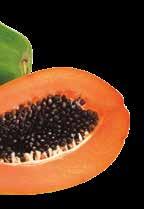
La campaña de mango de este año ha comenzado con precios bastante altos tanto en origen como en el eslabón de la comercialización. “Estamos viendo casi el doble de precios que hace 2 o 3 años. Habrá que ver si compensa por el descenso de los volúmenes”, explica el responsable comercial de Novofrut, José Francisco Novo.
La empresa granadina sigue la misma línea de años anteriores, con una superficie de 100 has entre propias y gestionadas por ellos. En mango esperan producir 500.000 kilos. En aguacate prevén unos volúmenes similares a los de 2023, rondando 1 millón. Y en chirimoya crecerán un 10%, acercándose a los 3 millones de kg, el 80% para el mercado nacional. Sobre este producto, Novo piensa que falta promoción en otros países de centro y norte de Europa. “En Portugal el consumo es similar al de España”.
Los mercados más importantes para Novofrut son Reino Unido, Portugal, Italia y países escandinavos. La empresa de carácter familiar tiene un gran porcentaje
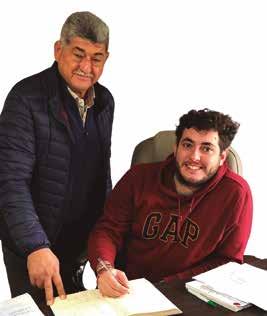
de producción propia, y destaca, entre sus ventajas, por la calidad y rapidez de respuesta.
Sobre los retos del sector, Novo sigue enfatizando en la falta de agua. “Estamos aburridos, se ríen de nosotros. Con un presupuesto mínimo se podría solucionar el problema hídrico y se devolvería con creces en seguros sociales, impuestos…”.
TROPICAL FRUIT
This year’s mango campaign has started off with reasonably high prices, both at source and on the marketing link. “We are seeing almost double the prices of 2 to 3 years ago. We will have to see if this compensates for the drop in volumes,” explains the Sales Manager at Novofrut, José Francisco Novo. The company from Granada continues along the same lines as previous years, with a surface area of 100 has between their own fields and those managed by them. In mangos, they expect to produce 500,000 kilos. In avocados, they forecast volumes that will be similar to those from 2023: around 1 million. And in custard apples, they will grow by 10%, approaching 3 million kg., 80% of which goes to the Spanish national market. Regarding this product, Novo thinks that there is a lack of promotion in other countries in central and northern Europe. “Portugal’s consumption is similar to Spain’s.” Novofrut’s most important markets are the United Kingdom, Portugal, Italy, and the Scandinavian countries. The family-run company has a large percentage of its own production and, amongst its advantages, its quality and fast response stand out. With regard to the sector’s challenges, Novo continues to emphasise the water shortage. “We are bored; they are laughing at us. With a minimum budget, the water problem could be resolved and this would be returned tenfold in social security payments, taxes…”
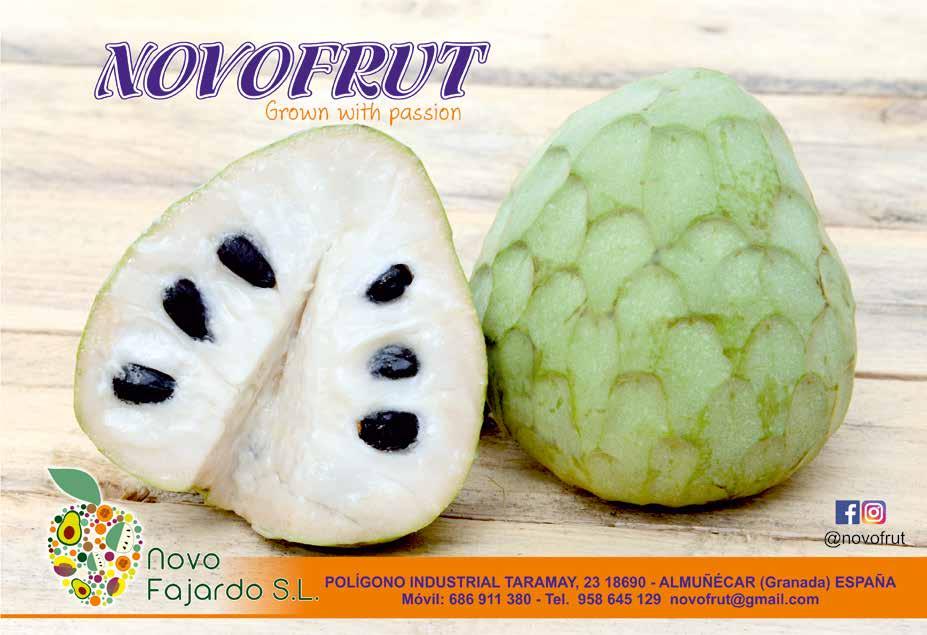
La sequía ha hecho repensar al sector la viabilidad de cultivos ubicados en el sur de España, frente a nuevas opciones atractivas como Asturias y Valencia
La campaña española de aguacate en 2023 cerró con un balance “desastroso”, y la de 2024 volverá a estar marcada por la sequía, con el consiguiente descenso productivo en la principal zona productora, la provincia de Málaga. El año pasado hubo un descenso de la producción del 60% y se llevaron a cabo talas en el 30 % de las explotaciones, según datos de la Asociación Española de Frutas Tropicales (AET).
En este contexto de escasez hídrica y pérdida de rentabilidad hay agricultores del sur de España que se están replanteado la viabilidad de los cultivos, mientras que productores de provincias como Huelva, Cádiz y Valencia, han optado por el aguacate desplazando cultivos más tradicionales.
El presidente de la AET, Álvaro Palacios, ha explicado en declaraciones a Efeagro que muchos productores de limón y naranjas se han pasado al cultivo de aguacate ya que “solo requiere buen clima y un poco más de
agua” y, a su vez, ofrece una mayor rentabilidad.
Una tendencia que confirma un estudio elaborado por las Universidades de Huelva y Extremadura y AGQ Corporación Tecnológica, en el que señalan que Andalucía y Valencia son las regiones climáticamente más adecuadas para el cultivo del agua-
primera vez el potencial de esta zona como productora de aguacate. “Vi un árbol muy alto, identifiqué que era un aguacatero y que tenía frutos”, recuerda en una entrevista con Efeagro. A partir de ahí, hizo un recorrido por la zona cantábrica en 2009 y, para su sorpresa, descubrió que “había miles de ellos”.
Muchos productores de cítricos se han pasado al cultivo de aguacate
cate.
Según los investigadores, el cultivo de este producto es posible en determinadas zonas del sur andaluz y Valencia, pero no en el resto de la península, la empresa Aguacastur, especializada en el cultivo de aguacate en el norte ibérico, ha demostrado que Asturias puede ser una excepción. En Salas (Asturias), Andrés Ibarra, uno de los creadores de Aguacastur, intuyó por
The Spanish 2023 avocado campaign closed with a “disastrous” balance, and the 2024 campaign will once again be marked by the drought, with the subsequent drop in produce in the main production area, the province of Malaga.
Last year, there was a 60% drop in production and trees were felled on 30% of the farms, according to data from the Spanish Tropical Fruit Association (AET).
In this context of water shortage and loss of profitability, there are farmers in southern Spain who are reconsidering the feasibility of the crops; while producers from provinces such as Huelva, Cadiz and Valencia, have opted for avocados taking over from more traditional crops.
The Chairman of the AET, Álvaro Palacios, declared to Efeagro that many lemon and orange producers have moved over to growing avocados as “they only need good weather and a little more water” and, in turn, they offer greater profitability.
A trend that is confirmed by a study carried out by the Universities of Huelva and Extrema-

A partir de ahí empezaron con su propia plantación y, aunque en el comienzo obtuvieron “muchas críticas”, después de que las plantas pasaran su primer invierno y comenzaran a crecer hubo un “cambio de opinión”.
En general, la idea de cultivar aguacates en el norte del país genera “extrañeza” por las diferencias climáticas entre Málaga y esta área; no obstante, Ibarra señala que el clima en México, principal productor y exportador global, es “el mismo que el del norte de España”.
dura and AGQ Corporación Tecnológica, in which they indicate that Andalusia and Valencia are the regions that are climatically most suitable for avocado growing.
According to the researchers, this crop may be grown in some areas of southern Andalusia and Valencia, but not the rest of the mainland, the company Aguacastur, specialising in avocado growing in northern Spain, has shown that Asturias can be the exception to the rule.
In Salas (Asturias), Andrés Ibarra, one of the creators of Aguacastur, sensed the potential of this region as an avocado producer for the first time. “I saw a very tall tree and I identified it as an avocado tree and that it had fruit on it,” he recalled in an interview with Efeagro. From this point on, he travelled around the Cantabrian region in 2009 and to his surprise, he discovered that “there were thousands of them.”
He subsequently started his own plantation and although at the start he had “many criticisms”, after the plants passed their first winter and started to grow there was a “change of mind.”
In general, the idea of cultivating avocados in the north of the country generates “surprise” due

La empresa cuenta ya con 4 inversores de segundas generaciones de españoles que emigraron a México y que han decidido volver y apostar por este cultivo.






The drought has made the sector rethink the feasibility of crops located in southern Spain, compared to the new attractive options such as Asturias and Valencia
to the different weather conditions between Malaga and this area; however, Ibarra indicates that the climate in Mexico, the main global producer and exporter, is “the same as in the north of Spain.”
The company now has 4 investors of second generation Spaniards who emigrated to Mexico and have decided to return and to opt for this crop.
Many citrus fruit producers have moved over to avocado growing






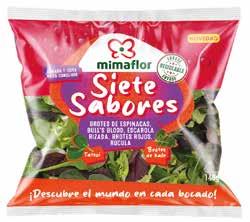





















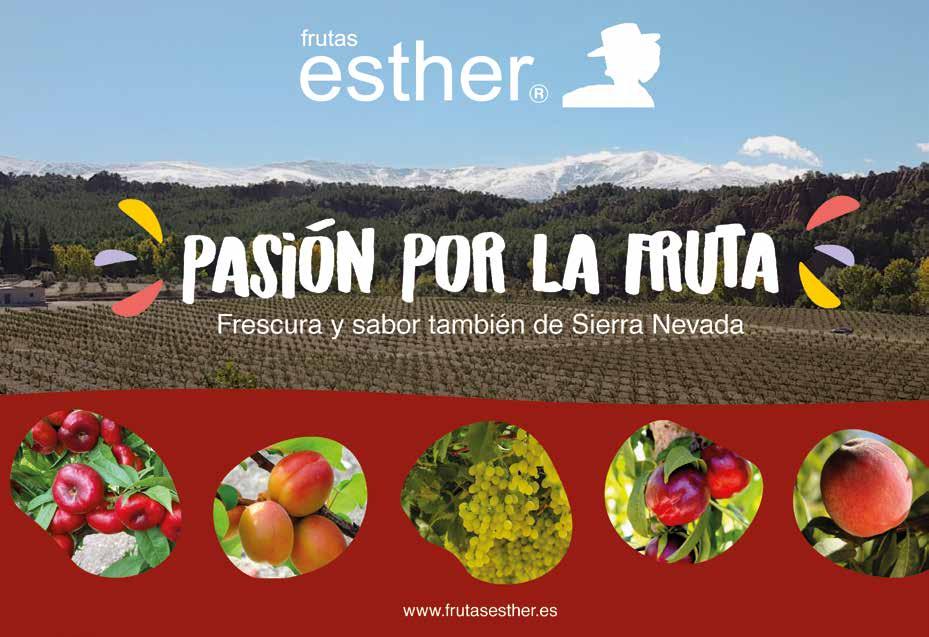
La cosecha española de manzana crecerá un 9,4% y la de pera bajará un 14,8%. Sin embargo, en Europa la tendencia es inversa ya que la manzana desciende un 11,3% y la pera crece un 4,9%
En España, y según fuentes de Cooperativas Agro-alimentarias de España, la próxima cosecha de fruta de pepita será superior a la de la campaña pasada, especialmente en lo que se refiere a la manzana que, con una producción de 566.509 toneladas, registrará un incremento del 9,36% respecto a la campaña anterior y del 16,21% respecto a la media de los últimos 10 años. En cuanto a la pera, la producción prevista, de 243,882 t, disminuirá en un 14,82% comparada con el año pasado, y estará un 22,14% por debajo de la media de las últimas campañas.
Por variedades, las Golden siguen siendo mayoritarias, con unas previsiones de cosecha de 263.743 toneladas, casi por encima de la mitad del total. Les siguen las del grupo Gala, que alcanzarán 99.008 toneladas. En cuanto a las peras, la Conferencia supone casi la mitad del total y su producción será de 116.675 toneladas, un 19% menos que en la campaña pasada; la Ercolini-Coscia con 34.059 t y la Blanquilla con 29.846 t, son los siguientes grupos en volumen de producción, que tendrán por un lado un incremento del 3% y, por otro, una fuerte caída del 10,95%, respecto al año pasado, respectivamente.
En Europa
A nivel europeo, se prevé una producción total de manzanas de 10,2 millones de toneladas, un 11,3% por debajo de la campaña pasada. En la mayoría de los principales países productores se prevé una caída de la producción de manzanas respecto a la campaña pasada: Polonia (3,19 millones de toneladas, -19,6%), Italia (2,2 millones de
En cuanto a la producción de pera, se estima en 1,79 millones de toneladas, lo que supone un incremento del 4,9% respecto al año pasado. En este caso, los principales países productores, Bélgica y Países Bajos, han sufrido caídas de sus producciones, quedando lejos de su potencial en el caso de Bélgica y alcanzando únicamente las 280.000 t y 327.000 t, respectivamente. Italia, importante país productor, también recupera su potencial y se estima un aumento
Polonia, principal productor europeo de manzana, baja casi un 20% su producción
de la producción del 120,5% respecto a la campaña pasada, llegando a la 405.000 t.
Las variedades
En cuanto a las principales variedades en Europa, la producción de Golden Delicious se reducirá un 10,2% hasta un total de 1.972.514 t. Se espera que Gala, la segunda variedad más importante, disminuya un 11,1% (1.350.835 t). La producción de Red Delicious crecerá (+2,8%), mientras que la Idared será un 18,4% inferior a la de 2023. Los problemas de algunos países durante la época de la floración, entre ellos Alematoneladas, -0,6%) y Francia (con 1,5 millones de toneladas, -3%).
nia que ha experimentado un importante descenso en el este y el norte del país, han lastrado la evolución de unas adecuadas cosechas.
Polonia, el mayor productor europeo, corre la misma suerte y la World Apple and Pear Association (WAPA) le estima un importante descenso que repercutirá, sin duda, en la industria del procesado. También se registra un signo negativo en Benelux y Francia. En cuanto a Italia, los datos prevén un ligero descenso de la producción.
En un contexto de gran transformación de los mercados internacionales, dominados por las incertidumbres geopolíticas y las incógnitas climáticas, se hace más necesario que nunca adoptar estrategias de producción y comercialización muy definidas y concretas para ofrecer un producto de alta calidad que pueda responder cada vez mejor a las necesidades de los clientes. Cada vez cobran más importancia las técnicas de protección de cultivos, como los sistemas antiheladas y las redes antigranizo. Otro de los pilares fundamentales es la innovación varietal, con la identificación de variedades más resistentes a unas condiciones climáticas en constante cambio.
Italia recupera su fuerza en la producción de pera


La pera
Por otro lado, se estima que la cosecha de peras alcanzará de 1.790.229 t. Este aumento se debe a la recuperación de la producción italiana (+120,5% respecto a 2023) y a pesar de la reducción de las cifras en Bélgica y Holanda (-26,6% y -8,7% respectivamente). En 2024, se estima que la producción de peras Conferencia disminuirá un 13,5%, hasta las 776.128 t. La producción de peras William BC, por otro lado, debería crecer un 33,8%. Se prevé que la producción de
Abate Fetel se recupere hasta las 124.832 t (+131,8%).
En líneas generales, las perspectivas para la temporada son positivas y se deberían ofrecer oportunidades de mejores rendimientos para un sector que, todavía sigue enfrentado a los desafíos de la inflación y el aumento de costes de los últimos meses.
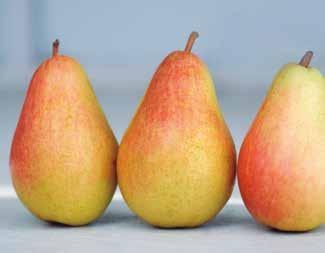
Italia recupera su fuerza en la producción de pera
The Spanish apple harvest will grow by 9.4% and the pear harvest will decrease by 14.8%. However, the opposite is true regarding the trend in Europe, as apple harvests are falling by 11.3% and pears are rising by 4.9%.
In Spain, according to sources from Cooperativas Agro-alimentarias de España, the next pip fruit harvest will be larger than one from the previous campaign, particularly with respect to apples. With a production of 566,509 tonnes, it will record a 9.36% increase compared to the previous campaign, and 16.21% with regard to the average over the past 10 years. As for the pear situation, the production forecast of 243,882 t, will drop by 14.82% compared to last year, and it will be 22.14% below the average for the latest campaigns.
In terms of varieties, Golden continues to have the largest volume, with harvest forecasts of 263,743 tonnes, almost over half of the total. They are followed by apples from the Gala group, which will reach 99,008 tonnes. As for pears, Conference pears make up almost half of the total, and their production will reach 116,675 tonnes – 19% less than the previous campaign; Ercolini-Coscia with 34,059 t and Blanquilla with 29,846 t are the following groups in production volume, the former of which will see a 3% increase, while on the other, the second variety will experience a significant drop of 10.95% compared to last year, respectively.
On a European scale, a total apple production of 10.2 million tonnes is forecasted, 11.3% less than the previous campaign. In most of the main producing countries, a drop in apple production is foreseen compared to the previous campaign: Poland (3.19 million tonnes, -19.6%); Italy (2.2 million tonnes, -0.6%) and France (with1.5 million tonnes, -3%).
With regard to pear production, it is estimated at 1.79 million tonnes, which means a 4.9% increase compared to last year. In this case, the main producing countries, Belgium and the Netherlands, have seen reductions in their pro-
ductions, leaving Belgium far from its potential and only reaching 280,000 t and 327,000 t, respectively. Italy, an important producing country, is also recovering its potential and it estimates an increase in the production of 120.5% compared to the latest campaign, reaching 405,000 t.
With respect to the main varieties in Europe, Golden Delicious production will decrease by 10.2%, reaching a total of 1,972,514 t. It is expected that Gala, the second most important variety, will drop by 11.1% (1,350,835 t). Red Delicious production will grow (+2.8%), while Idared will be 18.4% lower than the 2023 harvest. The problems experienced in some countries during the flowering season, amongst them Germany, which experienced a significant drop in the eastern and northern areas of the country, have held back the evolution of adequate harvests.
Poland, the largest European producer, suffered the same fate and the World Apple and Pear Association (WAPA) estimates an important drop that without any doubt will affect the processing industry. A negative sign is also being recorded in Benelux and France. With respect to Italy, the data forecasts a slight drop in production.
Within a context of significant transformation for international markets, dominated by the geopolitical and climatic uncertainties, it becomes more necessary than ever before to adopt highly defined, specific production and marketing strategies to offer high-quality produce that can respond increasingly well to the clients’ requirements.
Crop protection techniques are becoming more and more important, such as anti-frost systems and anti-hail nets. Another of the essential points is variety innovation, with the identifica-

tion of varieties that are more resistant to the constantly changing weather conditions.
Moreover, it is estimated that the pear harvest will reach 1,790,229 t. This increase is due to the recovery of the Italian production (+120.5% compared to 2023), in spite of the drop in the figures from Belgium and Holland (-26.6% and -8.7% respectively). In 2024, it is estimated that the Conference pear production will drop by 13.5%, to 776,128 t. William BC pear production, on the other hand, should grow by 33.8%. The forecast shows a recovery in Abate Fetel production, reaching a figure of 124,832 t (+131.8%).
In general, the prospects for the season are positive and should offer opportunities for better yields in a sector which continues to face up to the challenges of rising inflation and costs in recent months.

Poland, the main European apple producer, is dropping its production by almost 20%
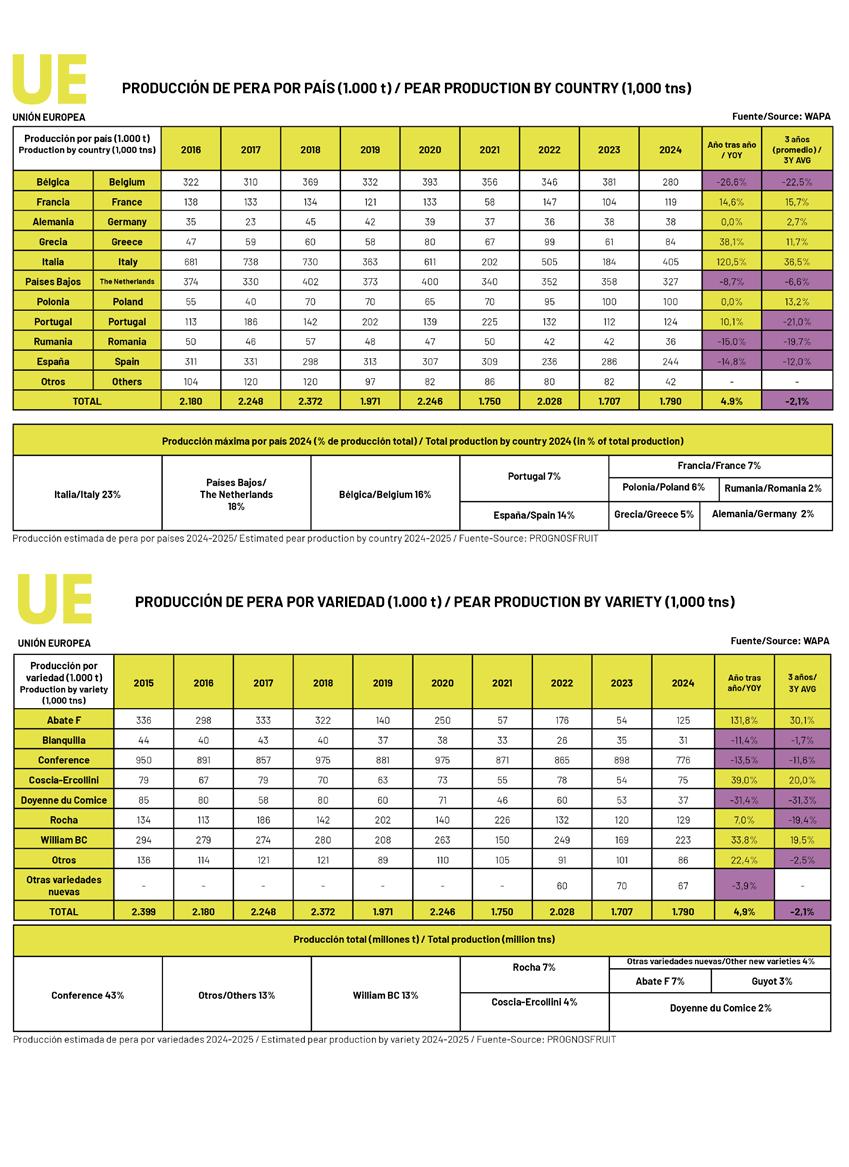
Se llaman T-REX®/CIVT15* y TIGERGALA®/CIVS15*, y solo están disponibles en los viveros miembros de CIV: Mazzoni Vivai, Tagliani Vivai y Salvi Vivai
Los programas de mejora genética se sitúan en el centro de las actividades del CIV (Consorzio Italiano Vivaisti) y una parte clave del trabajo que dentro de éste se realiza implica la selección de nuevos clones. En este sentido, dentro del segmento de manzanas tempranas, se han seleccionado dos nuevos clones de Gala
que tiene excelentes perspectivas de crecimiento a nivel global.

que presentan características particularmente interesantes.
Coloración temprana con T-REX®/CIVT15* T-REX®/CIVT15* destaca por su coloración temprana en comparación con otros clones de Gala. La producción muestra una excelente uniformidad tanto en maduración como en tamaño, con frutos más grandes y una forma cónica distintiva. La estabilidad de T-REX® ha impresionado a los breeders, quienes han decidido seleccionar este clon por sus ventajas en la producción. Incluso en áreas bajas, donde la coloración temprana es más difícil de conseguir, T-REX® ha demostrado esta característica crucial. También posee un crecimiento más compacto que la Gala tradicional. Los mercados asiáticos están mostrando un fuerte interés en este clon,

TIGERGALA®/CIVS15*, con piel y a rayas Su respuesta a los clones de Gala con piel y rayas es TIGERGALA®/CIVS15*. Este clon, que también se caracteriza por una alta cantidad de rayas con una excelente coloración, extiende sus áreas de cultivo a mercados que son particularmente desafiantes en este aspecto. Frente al cambio climático, que impacta negativamente en los rendimientos, especialmente en áreas bajas, TIGERGALA® se destaca por lograr rayas de tonalidades intensas más temprano que otros clones. Federico Stanzani, director comercial de CIV, explica que: «El interés en Gala T-REX® está creciendo entre los productores debido a sus características distintivas: el color rojo uniforme en toda la superficie y el gran tamaño. La fruta capta la atención de los consumidores y compradores en los lineales».
Variedades exclusivas
T-REX® y TIGERGALA® son productos exclusivos y solo están disponibles en los viveros miembros de CIV: Mazzoni Vivai, Tagliani Vivai y Salvi Vivai. El programa de mejora genética de CIV continúa desarrollando estas y otras variedades, con el objetivo de maximizar los beneficios de producción y las propiedades organolépticas, a la vez que aborda los desafíos que plantea el cambio climático.

The new Gala clones stand out amongst early apples
They are called T-REX®/CIVT15* and TIGERGALA®/CIVS15*, and they are only available in the nurseries that are members of CIV: Mazzoni Vivai, Tagliani Vivai, and Salvi Vivai
Genetic improvement programmes are at the heart of the CIV’s activities (Consorzio Italiano Vivaisti), and a key part of the work that is being carried out there involves the selection of new clones. Accordingly, within the early apple segment, they have selected two new Gala clones with particularly interesting characteristics.
Early colouring with T-REX®/CIVT15*
T-REX®/CIVT15* stands out due to its early colouring compared to other Gala clones. The production shows an excellent uniformity, both in ripening and in size, with larger fruit, showing a distinctive conical shape.
The stability of T-REX® has impressed the breeders, who have decided to select this clone owing to its production advantages. Even in lower areas, where early colouring is more difficult to achieve, T-REX® has proven this key characteristic. It also has a more compact growth than the traditional Gala. The Asian markets are showing great interest in this clone, which has excellent growth prospects worldwide.
TIGERGALA®/CIVS15*, with striped peel
The organisation’s response to Gala clones with striped peel is TIGERGALA®/CIVS15*.
This clone, which is also characterised by its large amount of stripes with excellent colouring, is extending its crop areas to markets that are particularly challenging for this aspect. In the face of climate change, which has a negative impact on yields, particularly in lower areas, TIGERGALA® stands out due to its dark-coloured stripes that come earlier than in other clones.
Federico Stanzani, the Sales Manager at CIV, explains that: “Interest in Gala T-REX® is growing amongst producers owing to its distinctive characteristics: its uniform red colour covering its entire surface and its large size. The fruit is drawing the attention of consumers and buyers on the supermarket shelves.”
Exclusive varieties
T-REX® and TIGERGALA® are exclusive products and they are only available in the nurseries that are members of CIV: Mazzoni Vivai, Tagliani Vivai and Salvi Vivai.
CIV’s genetic improvement programme continues to develop these and other varieties, aimed at maximising production gains and organoleptic properties, at the same time as tackling the challenges set forth by climate change.

El inicio de la campaña de comercialización de VOG viene acompañado de una minuciosa planiFicación de las actividades de comunicación y captación de consumidores
El consorcio se encuentra preparado para afrontar los nuevos retos de la actual campaña marcada por un consumo que no despega en todos los destinos, dificultades geopolíticas cambiantes y aumento de la producción extraeuropea. Según las previsiones de producción europeas, Tirol del Sur se encuentra en una buena situación a pesar del descenso generalizado de volúmenes. De hecho, las cantidades de manzanas de mesa registran un descenso muy escaso con respecto al total, y en términos cualitativos se dan todos los requisitos para satisfacer a los consumidores y los mercados.
“Los retos son muchos y hay varios factores aún imprevisibles, como las crisis geopolíticas y los volúmenes de producción extraeuropeos. Seguramente partimos de una buena posición, desde la que será importante mantener nuestra promesa de calidad”, comenta Klaus Hölzl, director de ventas de VOG.
Gracias a un buen comportamiento de las ventas en los meses de primavera y verano, el consorcio mantuvo su privilegiada posición en el mercado y alcanzó sus objetivos de ventas. En cuanto a las exportaciones, crecieron los mercados extraeuropeos, en particular Sudamérica y Centroamérica.
Mercados europeos
El principal mercado de VOG, mostró un comportamiento muy dinámico a lo largo de todo el año pasado. “En el mercado italiano hemos conseguido aumentar las ventas, sobre todo con nuestra marca Marlene®, Hija de los Alpes, pero también con manzanas como Pink Lady®, Kanzi® y Envy™ y muy buenos resultados de Cosmic Crisp®, RedPop® y Giga® – comenta Hölzl.
Dada su proximidad, España representa un mercado importante para VOG. Es un destino especialmente relevante para Marlene® y Kanzi®, pero también crece el interés por nuevas propuestas como Envy™, Crimson Snow® y Cosmic Crisp®.
El gigante germano demostró ser un mercado complejo en la temporada 2023/2024 por la fuerte competencia de otros países europeos. El ejercicio que acaba de comenzar debería abrir nuevas posibilidades para VOG, gracias a una menor competencia y a

una disponibilidad garantizada durante todo el año, incluidos los productos ecológicos.
Mercados extraeuropeos
A pesar de la difícil situación internacional, los mercados no europeos como Oriente Medio y Sudamérica, han experimentado un importante crecimiento en los últimos años.
“La diversificación de mercados es uno de nuestros puntos fuertes –explica Hölzl– ya que nos permite llevar las manzanas a nuevos territorios y satisfacer las necesidades de los consumidores de distintas partes del mundo”.
Estrategias de marca
La primera campaña en ponerse en marcha es la de Marlene®, marca que cumple 30 años. Para atraer a los consumidores, la Hija de los Alpes continuará su historia sobre el origen, la cultura y el mundo gustativo de sus variedades. Si la invitación a la experiencia culinaria estimuló a los consumidores a explorar el lado gourmet de la manzana, la nueva temporada amplificará aún más la inspiración con la que celebrar el arte de la manzana.
“El hilo conductor que une a todas nuestras marcas es el concepto de que una manzana es algo más que una fruta: es una forma de expresar valores y estilos de vida. Por este motivo, el diálogo constante con el consumidor es esencial para afrontar los retos de un mercado complejo y en constante transformación”. – concluye Hannes Tauber, responsable de marketing del Consorcio.


El consorcio dispone de un surtido amplio y de calidad, así como de numerosas marcas

The start of the VOG marketing campaign is accompanied by the carefully detailed planning of communication and
The consortium is ready to face up to the new challenges of the current campaign, marked by a consumption that is not taking off in all the destinations, changing geopolitical difficulties and an increase in production from outside Europe.
According to the European production forecasts, South Tyrol is in a good position, in spite of the generalised drop in volumes. In fact, a very small drop has been recorded in the amounts of eating apples compared to the total. And in qualitative terms, they bring together all the requirements to satisfy both consumers and markets.
“There are many challenges and there are several factors that are still unforeseeable, such as geopolitical crises and production volumes from outside Europe. We are certainly starting off in a good position, from which it will be important to maintain our promise of quality,” Klaus Hölzl, the Sales Manager at VOG, comments.
Thanks to the good sales behaviour in the spring and summer months, the consortium maintained its privileged position on the market and reached its sales targets. Regarding exports, they grew on the markets outside Europe, particularly in South and Central America.
The European markets
VOG’s main market showed a highly dynamic behaviour over last year as a whole. “On the Italian market we have managed to increase sales, particularly with our brand Marlene®, Daughter
of the Alps, but also with apples such as Pink Lady®, Kanzi® and Envy™ and we have had very good results for CosmicCrisp®, RedPop® and Giga®, Hölzl remarks.
Given its proximity, Spain is an important market for VOG. It is a particularly relevant for Marlene® and Kanzi®, but interest is also growing for the new proposals such as Envy™, Crimson Snow® and CosmicCrisp®.
Germany was seen to be a complicated market in the 2023/2024 season due to the important competition from other European countries. The season that has just started should open up new possibilities for VOG, thanks to reduced competition and to the guaranteed availability throughout the entire year, including ecological produce.
In spite of the difficult international situation, non-European markets such as the Middle East and South America have experienced an important growth in recent years. “Market diversification is one of our strong points,” Hölzl explains, “as it allows us to take the apples to new lands and to meet the needs of consumers from different parts of the world.”
The Marlene® is the first campaign to start up, a brand that is celebrating its 30 year anniversary. To attract consumers, the Daughter of the Alps will continue its story about the origin, the culture and the gustatory world of its varieties.
If the invitation to the culinary experience stimulated consumers to explore the gourmet side of the apple, the new season will amplify the inspiration even more by celebrating the art of the apple.
“The connecting thread that brings together all our brands is the concept that an apple is something more than a fruit: it is a way of expressing values and lifestyles. For this reason, the constant dialogue with the consumers is essential in order to face up to the challenges of a complicated and ever-changing market,” concludes Hannes Tauber, the consortium’s marketing manager.
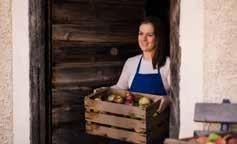
The consortium has an extensive, high quality range, as well as many brands
Algunas de nuestras variedades más populares:
REPRESENTANTE DE VENTAS PARA EL VIVERO DE CALIDAD DE ITALIA.

Conócenos y vende nuestros manzanos en uno de estos países: Alemania, Austria, Francia o España.
Esta posición se puede combinar perfectamente con tu explotación agrícola y es ideal como ingreso adicional.
Envíanos un correo a: administration@griba.it
Nuestra página web: www.griba.it/en/we-are-looking-for-you





Puede encontrar todas nuestras variedades en:
www.griba.it
Las producciones sorianas de Nufri alcanzarán los 35 millones de kilos, con muy buenas expectativas en los mercados
Fruit Today habló con Iván Elías, director de comercial de la firma, quien además nos comentó otros pormenores de lo que puede ser la temporada.
¿Cuáles son las previsiones de cosecha tanto para las producciones de Lleida como para las de la Finca de La Rasa? ¿De qué volúmenes hablamos?
En la zona de Lleida, la previsión de cosecha de manzanas para esta campaña es bastante alentadora, con expectativas de una producción normal, igual que en Soria, donde la plantación ya se encuentra en su máximo productivo, aproximadamente 35 millones de Kilos.
Para ambas ubicaciones, ¿cuáles son las similitudes y diferencias de producción?
Las condiciones climatológicas de ambas ubicaciones son distintas, por lo que desde hace años trabajamos en una gestión eficiente de producción de cada variedad en el lugar donde mejor se adapta y de este modo, somos capaces de ofrecer la mejor manzana, de la mejor calidad, de origen español.
En Lleida, se apuesta por variedades tempranas como la Gala, la Tutti o la amarilla Opal y verde Granny Smith, ya que las condiciones que nos ofrece este lugar son inigualables. En cambio, en La Rasa, Soria, gracias al contraste térmico entre el día y la noche, se apuesta por variedades bicolores como la Fuji, Evelina, Sweetango y Envy, además de la Golden. La oportunidad que nos brindan ambas áreas nos permite que cada variedad adquiera unas características organolépticas inigualables.
¿En qué situación se encuentra la reconversión varietal hacia árboles con menos necesidades hídricas?
Aproximadamente al 50% de la primera fase. Hablamos de la Tutti, una variedad que ha supuesto un gran avance en eficiencia de producción. Estamos muy contentos de sus resultados, siendo la satisfacción doble debido a que es el resultado de más de 10 años de investigación y desarrollo por parte de Fruit Futur, asociación de la que forma-
mos parte con otros productores locales y empresas internacionales.
El descenso de consumo de frutas y hortalizas es preocupante, ¿tiene el Grupo Nufri preparada alguna campaña de promoción? Estamos convencidos de que el consumo de frutas y hortalizas puede mejorar significativamente si los productos que se encuentran en los lineales son de alta calidad y sabor. Tanto los distribuidores
Tutti es la respuesta a 10 años de investigación
como los agricultores debemos asumir el compromiso de ofrecer productos deliciosos y frescos durante todo el año para asegurar una rotación constante en los lineales. Esta es una responsabilidad colectiva que requiere la colaboración y el esfuerzo de todos los actores del sector.
¿Cuál ha sido la evolución de la manzana Livinda?
Livinda se creó y pensó para frenar la importación de manzanas y poner en valor la producción nacional. La mayoría de las manzanas premium de los lineales eran de importación. Convencidos de que nuestras manzanas eran tan ricas de comer como las importadas, nació Livinda, y una década después la distribución y consumidor ya se han dado cuenta de ello, por tanto, ahora el reto pasa por lograr esa diferenciación en el punto de venta, que nuestra marca se distinga por ser de origen español.
Dentro de las variedades que no pertenecen a

ningún club, ¿cuáles son las que funcionan mejor a nivel comercial?
No se trataría de diferenciar las manzanas por si son parte de un club o no, se trata de diferenciarlas por si comen bien o no. Las manzanas club son nuevos clones con características organolépticas que se acercan más a los gustos del consumidor actual.

Hoy en día, para conseguir una manzana rica de comer no basta con cultivarla como se hacía antes: ahora hay que protegerlas con malla, no solo por el granizo, sino también para que consigan una coloración adecuada y tengan menores defectos en la epidermis. Se debe ser eficiente con los recursos y no me refiero solo a los hídricos, y todo ello lo logramos a través de tecnología. Los costes operativos han aumentado, y el agricultor tiene que vivir, vivir bien. Por ello es fundamental que la distribución y el consumidor, entiendan lo que hay detrás de una rica manzana para comprender que una manzana, sea club o no, tiene un coste
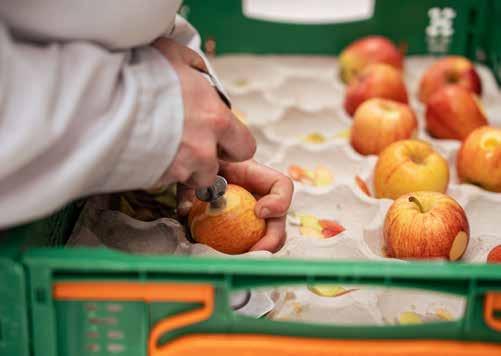
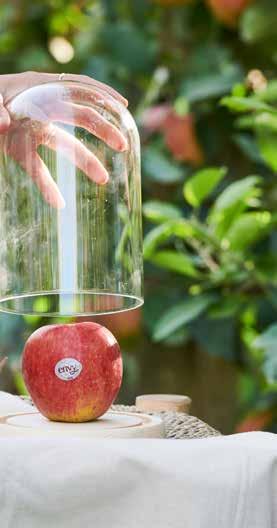
por su alta demanda
de producción muy elevado en todos los aspectos.
¿Qué se espera de una variedad como Envy?
Este año se espera una campaña excepcional tanto en cantidad como en cualidad, e irá acompañada de una campaña de comunicación 360º con el objetivo de crecer en penetración y notoriedad. Porque tal como hemos podido observar estos últimos años, Envy es una manzana que responde a todas las características organolépticas que demanda el consumidor: crujido, dulzor, jugosidad... y Afortunadamente, disponemos de más demanda que oferta, por lo que seguiremos plantando y apostando por esta variedad.
La Rasa has reached its highest production point
Nufri’s productions in Soria will reach 35 million kilos, with very good prospects on the markets
Fruit Today talked to Iván Elías, the company’s Sales Manager, who also commented on other details of how the season could turn out.
What are the harvest forecasts, for both the Lerida productions and those from La Finca de La Rasa? What volumes are we talking about?
In the Lerida region, the apple harvest forecast for this campaign is quite promising, with expectations of a normal production, the same as in Soria. There, the plantation is already at its highest production point, approximately 35 million kilos.
What are the production similarities and differences for the two locations?
The weather conditions of the two locations are different; therefore, for some years we have been working on an efficient production management for each variety in the place it adapts to best and in this way, we can offer the best apples, with the best quality, grown in Spain. In Lerida, early varieties are opted for, such as Gala, Tutti or the yellow Opal and the green Granny Smith, as the conditions in this area are unbeatable. On the other hand, at La Rasa, Soria, thanks to the day and night thermal contrast, two-coloured varieties such as Fuji, Evelina, Sweetango and Envy, in addition to Golden, have been chosen. The opportunity given to us by both areas allows each variety to acquire unbeatable organoleptic characteristics.
What point has the variety reconversion towards trees with less water requirements reached?
Approximately 50% of the first phase. We are talking about Tutti, a variety that has meant a great advance in production efficiency. We are very happy with its results, and this is doubly satisf-
ying owing to the fact that it is the result of over 10 years of research and development by Fruit Futur, an association we belong to with other local producers and international companies.
The drop in fruit and vegetable consumption is concerning; does the Nufri Group have any kind of promotional campaign ready?
We are convinced that the consumption of fruit and vegetables could improve significantly if the products found on the supermarket shelves are of high quality and tasty. Both distributors and farmers must take on the commitment to offer delicious, fresh products all year long to guarantee a constant rotation on the supermarket shelves. This is a group responsibility that requires collaboration and effort by all the agents in the sector.
How is the Livinda apple evolving?
Livinda was created and designed to slow down apple imports and to bring value to the national production. Most of the premium apples on the supermarket shelves were imported. Livinda was born from the conviction that our apples were as delicious to eat as the imported ones, and a decade later, both distribution and consumers have realised that this is true; therefore, now the challenge involves achieving this differentiation at the points of sale, showing that our brand stands out for being Spanish-grown.
Within the varieties that do not belong to any clubs, which are the ones that work best on a commercial scale?
The idea is not to differentiate whether the apples are part of a club or not, but rather to differentiate them by whether they are good to eat or not. The club apples are new clones with
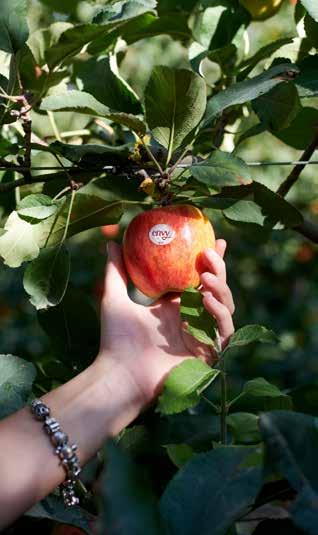
is the answer to 10 years of research
organoleptic characteristics that get closer to the tastes of today’s consumers.
Nowadays, in order to obtain apples that are good to eat, it is not enough just to follow traditional growing methods: now they must be protected with netting, not only due to hail, but also to ensure they achieve the right colouring and have fewer defects on their epidermis. This cultivation must be efficient in the use of the resources, and I am not only referring to water. And all of this is achieved using technology. Operating costs have increased and the farmers have to live, and to live well. For this reason it is essential for the distribution and consumers to understand what is behind a delicious apple in order to discover that in all aspects an apple, whether it is a club apple or not, has a very high production cost.
What is expected of a variety such as Envy?
This year, an exceptional campaign is expected, both in quantity and in quality, and it will be accompanied by a 360º communication campaign, aimed at growing in penetration and visibility. Because, as we have been able to observe in recent years, Envy is an apple that responds to all the organoleptic characteristics demanded by consumers: crunchiness, sweetness, juiciness… and fortunately, we have more demand than offer. Thus, we will continue planting and opting for this variety.
Cuando se cumple un año de la adquisición de su primera línea robotizada, la cooperativa catalana ya está preparada para nuevas inversiones que deben ver la luz en 2026
Fruit Today magazine habló con Alex Creixell, gerente de Giropoma-Costa Brava, sobre las recientes acciones que están llevando a cabo para ampliar sus instalaciones.
Su actividad inversora no cesa y no es un pequeño montante
Debemos seguir avanzando y, por eso, ya estamos centrados en el plan urbanístico que nos permitirá ampliar el espacio adyacente a la nave actual para acometer el próximo proyecto, 30 nuevas cámaras de frío que almacenarán unos 10 millones de kilos de fruta.
¿De qué plazos hablamos?
Nuestra intención es empezar la obra en 2026 y que esté acabada para la primera cosecha del mismo año.
A un año vista, ¿cuál es el balance de la línea absolutamente robotizada?
a sus cualidades: es buena de comer, crocante y, en general, gusta mucho.
Con Pink Lady, este año, llegamos a los 7 millones de kilos
Inmejorable y, sobre todo, nos ha permitido lidiar mejor con los problemas de mano de obra.
¿Cómo han transcurrido los primeros momentos de cosecha? ¿Cómo están las Galas?
Empezamos con bastante preocupación porque fueron semanas de mucho calor y a las Galas, si no tienen contraste térmico entre el día y la noche, les cuesta coger color. Pero al final, ha resultado una producción normal, aunque algo inferior a la del año pasado. En estos momentos (mitad de septiembre) ya estamos con la Golden y la Red Delicious.
¿Qué cambios varietales o referencias se observan en Giropoma?
Nuestra política va encaminada a mantener las variedades de la IGP Poma de Girona: Golden, Gala, Red Delicious y Granny Smith. Fuera de ello, nuestra apuesta es muy fuerte por tres variedades club: Pink Lady, de la que esperamos llegar a los 7 millones de kilos, Joya y Candine. Con esta última alcanzaremos el millón de kilos y tenemos muchas expectativas puestas en ella debido

¿Cómo serán los calibres de este año? Diría que serán un poco justos. Tuvimos una floración muy buena pero los aclareos no funcionaron bien y se quedó mucha fruta en el árbol. Hicimos un aclareo manual, el cual siempre se hace tarde porque hay que observar el calibre para ver cuál arrancas y cuál no. Creo que el calibre que hemos conseguido se ha debido más al exceso de frutas en el árbol.
Este año se produce un aumento de cosecha en Girona y una bajada generalizada en Europa. ¿Cree que esto puede derivar en alguna consecuencia?
No creo que influya especialmente, todo y que sabemos que la mitad o un poco más de las manzanas que se comen en España son de importación.
¿Cuáles son los retos a los que se enfrenta la manzana de Girona?
Personalmente creo que es el cambio climático y es un hecho que no está en nuestras manos. Hemos realizado todo aquello que podemos para disipar sus consecuencias. Entre ello está mantener unas producciones donde el riego por goteo alcanza el 90% del cultivo y contamos con sistemas de control de humedad en el suelo. Pero realmente nos preocupa el tema del agua y las escasas reservas con las que contamos. Otro factor importante es la falta de frío en los meses que hace falta. La manzana lo necesita para su correcto desarrollo. Los inviernos están siendo excesivamente cálidos.
¿Han tenido algún episodio climático reciente que les haya importunado? En general ha sido un año tranquilo. Tuvimos un pequeño incidente de pedrisco en una zona, pero no afectó a más de 10

LA LÍNEA ROBÓTICA PERMITE LUCHAR MEJOR CON LOS PROBLEMAS DE MANO DE OBRA
hectáreas y no tuvo importancia a nivel de volumen.
El consumo de manzana sigue a la baja y es un hecho preocupante, ¿qué hacemos ante este problema?
Creo que una de las soluciones pasa porque las manzanas que van al mercado deben ser muy buenas, tener su grado de madurez y de azúcar adecuado y esto, desgraciadamente, no siempre es así.
One year after the acquisition of its fIrst robotic line, the Catalonian cooperative is already getting ready for new investments that must take place in 2026
Fruit Today magazine talked to Alex Creixell, Manager of Giropoma-Costa Brava, about the recent actions that are being carried out to extend the installations.
Your investment activity is non-stop and the amount involved is not small.
We must continue moving forward and, to do this, we are already concentrating on the urban plan that will allow us to extend the space adjacent to the present warehouse to take on the next project: 30 new chilling chambers that will store around 10 million kilos of fruit.
What timescale are we talking about?
Our intention is to start the building work in 2026 and for it to be finished in time for the first harvest of the same year.
After a year, what is the balance regarding the completely robotic production line?
Unbeatable and, above all, it has allowed us to deal better with the labour problems. How have the first moments of the harvest been? How are the Galas?
We started off very worried because we had weeks with a great deal of hot weather, and if the Galas do not have a thermal contrast between the day and the night, it is difficult for them to change colour. But, in the end, it has turned out to be a normal production, although slightly lower than last year’s. At the moment (mid-September) we are already working with Golden and Red Delicious.
What variety or reference changes can be seen at Giropoma?
Our policy is aimed at maintaining the varieties of the PGI Poma de Girona, and these are Golden,
Gala, Red Delicious, and Granny Smith. Outside these, we are very strongly committed to three club varieties: Pink Lady, of which we expect to harvest 7 million kilos, Joya, and Candine. We will reach one million kilos with the latter variety and we have high expectations of it owing to its qualities: it is good to eat, crunchy and, in general, it is very popular.
What will the calibres be like this year? I would say they will be just about okay. We had very good flowering, but the thinning didn’t work well, and a great deal of fruit remained on the trees. We carried out a hand thinning, which is always done later because the calibre has to be observed in order to see which ones will be removed and which ones won’t. I think that the calibre that we have achieved has more to do with the excess fruit on the trees.
This year there is an increase in the harvest in Girona, and a generalised drop in Europe. Doyou think that this could have any consequences?
I don’t think it will have a particular influence; all things considered, we know that half or slightly more of the apples eaten in Spain are imported. What are the challenges being faced by Girona apples?
Personally, I think that it is climate change, and it is a fact that this is not in our hands. We have done everything we can to allay its consequences. Amongst these, is maintaining productions where drip irrigation reaches 90% of the crop and we have humidity control systems in the soil. But we are really worried about water and our lack of reserves. Another important factor is
the lack of cold weather in the months when it is necessary. Apples need it for a correct development. The winters have been too warm.
Have there been any recent weather episodes that have bothered you?
In general, it has been a calm year. We had a small incident involving hailstones in one area, but it only affected around 10 hectares and had no importance in terms of the volume.
Apple consumption continues to drop and it is a concerning fact for the sector. What should we do when faced with this problem?
I think that one of the solutions is that the apples that go to the market must be good, with the right degree of ripeness and correct sugar level and this, unfortunately, is not always the case.
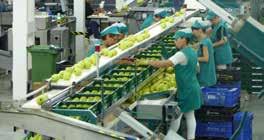
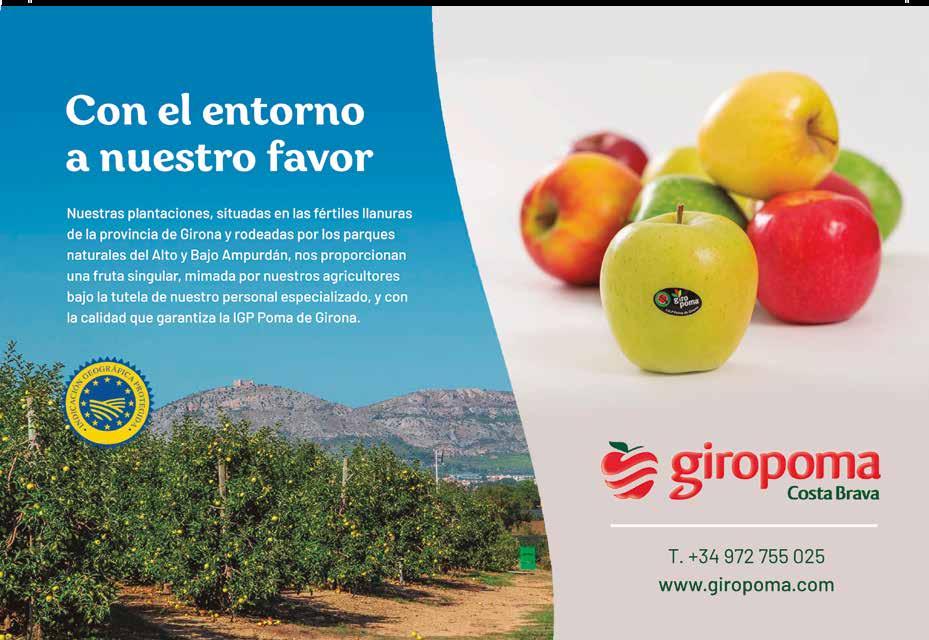
Acabada hace pocas semanas la cosecha de Gala y con casi el 50% de la Golden recogida, Fruit Today entrevistó a Miquel Roig, director general de la empresa catalana Fructícola Empordà, quién prevé una campaña sin muchos altibajos.
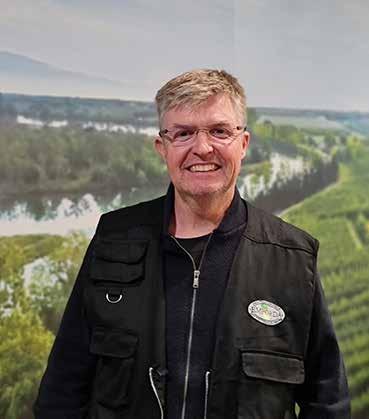
¿Qué valoración puede hacer del primer mes de cosecha?
En Galas tendremos un 12% más de volumen que el año pasado, año en el que faltó producto. Esto significa que todavía no hemos recuperado el potencial productivo que teníamos. El número de piezas existe, pero con los calibres ligeramente más cortos, no hay el número de kilos previstos. Respecto a la Golden, y cuando estamos en el ecuador de la cosecha, creo que
tendremos una cosecha normal, en el mismo nivel que el año pasado, con unos nueve millones de kilos.
A pesar de todo, los niveles de azúcar y dureza del producto son iguales a los años anteriores, con lo que la calidad está garantizada. Respecto a los precios de mercado son muy parecidos a los del año pasado y esperamos que, a medida, que
Hemos empezado con precios parecidos aL AÑO PASADO y esperamos que puedan SUBIR
pasen los meses y pueda faltar producto, podamos ir incrementándolos.
Dos variedades más noveles para ustedes son Tessa y la H-84. Esta última de investigación del IRTA junto con Fruit Futur, de la que ustedes son socios fundadores ¿cómo se ve su desarrollo? Las previsiones con Tessa se sitúan en unas 600 toneladas. El año pasado fue una variedad que se vendió muy bien, aunque de momento seguimos con 30 hectáreas y seguimos estudiando su comportamiento
para continuar con las inversiones. Respecto a la H-84, este año es la primera campaña comercial, con unos volúmenes todavía pequeños.
Girona se sitúa como una de las zonas de más alta especialización y las inversiones en el sector una constante. ¿Qué es lo más destacable en su entidad?
La campaña pasada inauguramos instalaciones frigoríficas para unos seis millones y medio de kilos. Este año hemos desarrollado inversiones en campo y continuamos acrecentando las placas solares en el recinto de confección. Tenemos definida una ampliación de la central de gran envergadura en unos terrenos adyacentes a la actual nave, pero es un proyecto que verá la luz en unos dos años. Se nos hace absolutamente imprescindible para continuar con nuestra expansión en la gran distribución.
¿Le preocupa la bajada de consumo?
En general sí, pero a nuestros clientes, no les ha afectado. Creo que, al final, la cuestión consiste en seleccionar la calidad del producto. La calidad siempre tiene salida. El problema se origina cuando no la hay y se provocan problemas en la venta y sobre todo, en la fidelización.
With the Gala harvest having fInished a few weeks ago, and with almost 50% of the Golden collected, Fruit Today interviewed Miquel Roig, the General Manager of the Catalan company Fructícola Empordà, and he foresees a campaign without many ups and downs.
What is your valuation of the first month of the harvest?
In Galas, we will have 12% more in volume than last year, when there was a shortage of produce. This means that we still haven’t recovered our previous production potential. We have the number of pieces, but with slightly smaller calibres, and therefore, the forecasted number of kilos won’t be reached.
Regarding Golden, at the midpoint of the harvest, I think that we will have a normal harvest, at the same level as last year, with around nine million kilos.
In spite of everything, the sugar levels and the hardness of the produce are the same as in previous years, meaning that the quality is guaranteed. With respect to the market prices, they are very similar to last year’s and we hope that, as the months go by and there is a reduction in the

amount of produce, we will be able to increase them.
Two new varieties for you are Tessa and H-84. The latter coming from research of the IRTA along with Fruit Futur, of which you are founding members, how is it developing?
The forecasts with Tessa are around 600 tonnes. Last year, it was a variety that sold very well, although at present we still only have 30 hectares, and we continue studying its behaviour to continue with the investments. Regarding H-84, this year is its first commercial campaign, with volumes that are still small.
Gerona has become one of the regions with the highest specialisation and with constant investments in the sector. What stands out most from your organisation?
During the last campaign we opened some new cooling rooms with a capacity for around six and
a half million kilos. This year we have developed investments in the fields, and we continue increasing the solar panels in the preparation facilities. We have defined a significant enlargement of the central installations on land adjacent to the current building, but it is a project that will come into being in around two years’ time. This will be absolutely essential for us to continue with our expansion in the large distribution area. Are you worried about the drop in consumption?
In general, I am, but our clients haven’t been affected. I think, that in the end, the question consists of selecting quality produce. Quality will always sell. The problems start when there is no quality and this causes problems in the sales and, above all, in customer loyalty.






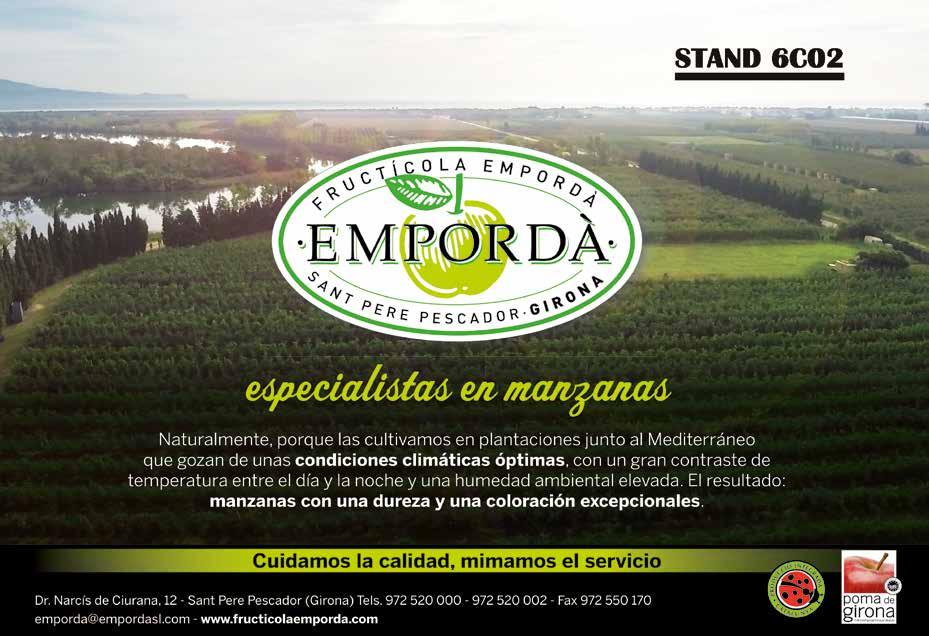
La producción de kaki española se ha reducido en los últimos años, pero la comarca de La Ribera se mantiene como la zona más productiva y con mayor calidad del producto
Esta zona, coincide precisamente con el área originaria de la fruta y es la que ostenta la figura de calidad D.O. Kaki Ribera del Xúquer. Fruit Today magazine habló con Cirilo Arnandis, presidente de la Denominación de Origen.
¿Cómo se presenta la actual temporada? Nuestras previsiones apuntan a una cosecha que puede alcanzar las 110.000 toneladas de producto, aunque siempre estamos a merced de la climatología. Este año, nos enfrentamos a la gran sequía que hubo durante el invierno en La Ribera. Prácticamente desde septiembre del año pasado no ha llovido y eso ha repercutido en las floraciones de primavera, que fueron más débiles de las esperadas. Calculo que, al final, la producción será similar a la del año pasado, lo que nos permitirá mantener a todos nuestros clientes.
El problema del cotonet y la mosca blanca parece que este año están tomando mucho protagonismo.
Desgraciadamente así es. No contamos con las materias activas adecuadas para combatirlo, todo y que practicamos la lucha biológica desde hace años, pero el problema persiste. De momento las autorizacio-

nes excepcionales con el Ministerio están paralizadas. En esta campaña y, desde mitad de agosto el problema se ha recrudecido debido al fuerte calor y la inexistencia de lluvia. Solo una bajada de temperaturas y la lluvia son los elementos capaces de apaciguar la plaga.
La eliminación de sustancias activas es una constante.
Sí y crece cada campaña. Es probable que el año que viene nos encontremos todavía más indefensos que hoy. Mientras no haya
soluciones más viables, al menos, lo importante sería mantener las que ya tenemos.
¿El sector ha tocado techo productivo?
Creo que sí, pero no en la comarca de la Ribera. Si existen oportunidades de crecimiento es aquí, donde el kaki alcanza su máxima calidad debido a la climatología, a la tierra, al agua, a todo aquello que ha hecho del Rojo Brillante un producto excepcional. Más del 90% de la producción nacional del Rojo Brillante se encuentra en su zona originaria. El reto fundamental pasa en poder combatir las plagas y poder mantener la excelencia de esta fruta en la comarca.
¿La promoción ha sido una constante en la D.O.?
Por supuesto y continuamos en la misma línea, aunque con cierta renovación visual. Mantenemos un hilo conductual de nuestras campañas y la inversión para comunicación tanto para España como para Europa, se estima en un millón de euros.
Es esencial controlar
las plagas para seguir produciendo
Spanish persimmon production has dropped in recent years, but the region of La Ribera remains the most productive area, with the greatest product quality
This zone precisely coincides with the fruit’s original area, and it is the one that holds the quality figure ‘D.O. Kaki Ribera del Xúquer’. Fruit Today magazine talked to Cirilo Arnandis, Chairman of the Denomination of Origin.
How is the current season going?
Our forecasts are indicating a harvest that could reach 110,000 tonnes of product, although we are always at the mercy of the weather. This year, we are facing the great drought that occurred during the winter in La Ribera. There has been virtually no rainfall since September and this has affected the spring flowering, which was much weaker than expected. I calculate that, in the end, the production will be similar to last year’s, which will allow us to maintain all our clients.
This year the problem of mealybugs and white flies seems to be very prominent. Unfortunately, this is very true. We don’t have any suitable active materials to fight them, and

even though we have been using biological pest control for many years, the problem persists. At the moment, the exceptional authorisations from the Ministry have been stopped. In this campaign, since mid-August the problem has got worse due to the intense heat and the lack of rainfall. The only elements that will be able to ease the pest problem are a drop in temperature and rainfall.
The elimination of active substances is constant.
Yes, and this increases every campaign. It is likely that next year we will be even more defenceless than today. While there are no more feasible solutions, the important point will at least be to maintain the ones that we have. Has the sector reached its peak, productively speaking?
I think so, but not in La Ribera region. If there are any growth opportunities, they are here, where persimmons reach their maximum quality due
to the weather conditions, the soil, the water, and to everything that has made Rojo Brillante into an exceptional product. Over 90% of the Spanish production of Rojo Brillante is found in its original area. The basic challenge lies in being able to fight the pests and be able to maintain the excellence of this fruit in the region. Has promotion been constant in the D.O.?
Of course, and we are continuing along the same lines, although with some visual renewal. We will maintain a connecting thread throughout our campaigns and the investment in communication, both for Spain and for Europe, is estimated at one million euros.
It is essential to control pests to continue producing
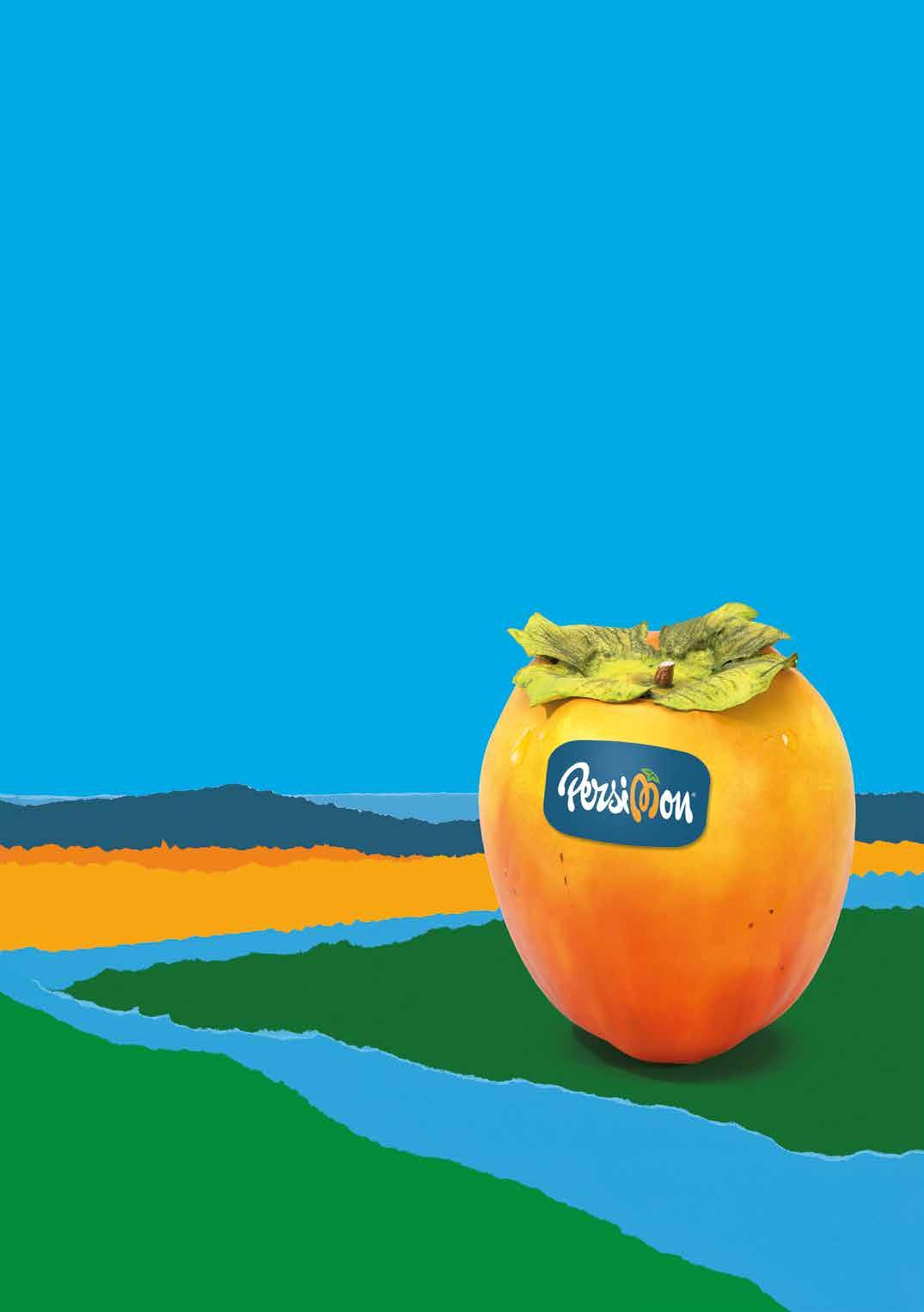

Kaki Persimon®, una identidad renovada con lo mejor de siempre.

Ángel Cebriá,
nuevo product manager de kaki de Anecoop, revisa con Fruit Today magazine la actual campaña y sus desafíos futuros
En los últimos años ya no se vive una expansión sino más bien una reducción del cultivo. ¿Qué se puede hacer para frenar esta tendencia?
Por lo que respecta al Grupo Persimon de Anecoop y a las cooperativas que lo integran, ya hace varias temporadas que mantenemos nuestra superficie de producción en niveles similares, si bien es cierto que vamos renovando plantaciones y sustituyendo las que ya son poco productivas. Esto se ha podido conseguir a base de ir mejorando el resultado para nuestros agricultores.
Es un cultivo muy complejo y requiere de un alto nivel de especialización en el campo, almacén y comercialización.
¿Seguimos con los problemas fitosanitarios y la imposibilidad real de poder combatirlos de forma contundente?
El efecto negativo de las plagas se nota todos los años en mayor o menor medida. Hoy por hoy, tenemos las manos atadas porque no existen medios lo suficientemente rápidos y efectivos que nos ayuden contra este tipo de afecciones.
¿Cuándo se logrará de una forma fehaciente alargar la campaña?
Ya se conocen materiales que adelantarán la campaña y que en los próximos años tendrán más notoriedad. Por la parte final,
Uno de nuestros retos pasa por aumentar el volumen exportado a destinos lejanos
de momento, no tenemos alternativa que supere en calidad al Rojo Brillante.
¿Cómo se cerró la campaña anterior? Nuestra comercialización se situó cerca de las 110.000 toneladas, superando de largo la campaña anterior, que fue récord de baja producción. Aunque, el precio medio de venta fue inferior, el aumento de kilos/ha mejoró la rentabilidad del agricultor.
¿Qué expectativas se barajan para la actual?
Esperamos una campaña similar en volumen.
La fruta viene con buena calidad y sabor, aunque con falta de calibre gordo y mayor predominio de calibres medianos.
¿Cuáles son los desafíos de Anecoop con el kaki?
El principal pasa por la protección de la base productiva, que ofrezca a los agri-
Anecoop maintains its surface area of
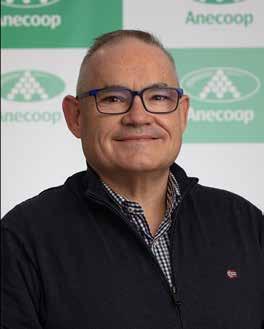
cultores una rentabilidad sostenida en el tiempo.
Además, existen otros muchos como la mejora de los rendimientos y el control de las plagas. En otro orden de cosas hay que abordar las nuevas tendencias legales respecto a los materiales de envasado para facilitar un comercio más sostenible. Otro reto es aumentar el volumen exportado a destinos lejanos, como Asia Occidental. Y por supuesto, el desarrollo de nuevas variedades para alargar el calendario.
Ángel Cebriá, the new persimmon product manager at Anecoop, reviews the current campaign and its future challenges with Fruit Today magazine
In recent years, the previous expansion has turned into a reduction in the crop. What can be done to bring a halt to this trend?
With regard for the Persimon Group at Anecoop and the cooperatives that form it, we have been maintaining our production surface area at similar levels for several years now, although it is true that we are renewing plantations and replacing the ones that are not very productive. This has been achieved by improving the results for our farmers. It is a very complicated crop, and it requires a high level of specialisation in the fields, warehouses, and in marketing.
Do you still have plant protection problems and are suffering from the real impossibility of being able to fight them forcefully?

The negative effect of pests can be observed every year, to some extent or other. Today, our
hands are tied because there are no means that are sufficiently fast and effective that can help us against these types of diseases. When will you manage to reliably extend the campaign?
There already are materials that will bring the campaign forward, and over the next few years these will become more well-known. At the end of the season, at present, we have no alternative with better quality than the Rojo Brillante. How did the previous campaign close?
Our marketing reached almost 110,000 tonnes, exceeding the previous campaign by far, which had had a record in low production. Although the average selling price was lower, the increase in kilos/ha improved the farmers’ profitability. What are the expectations for the current campaign?
We expect a campaign that is similar in volume. The fruit is growing with good quality and flavour,
although with a shortage of large calibre, and a predominance of medium calibres. What are Anecoop’s challenges with persimmons?
The main challenge involves the protection of the production base, which will offer farmers a profitability that is sustained over time. In addition, there are many other factors such as an improvement in yields and pest control. On a different subject, the new legal trends regarding packaging materials to make a more sustainable trade more feasible must be tackled. Another challenge involves increasing the volume exported to distant destinations, such as Western Asia. And of course, the development of new varieties to lengthen the farmers’ calendar.
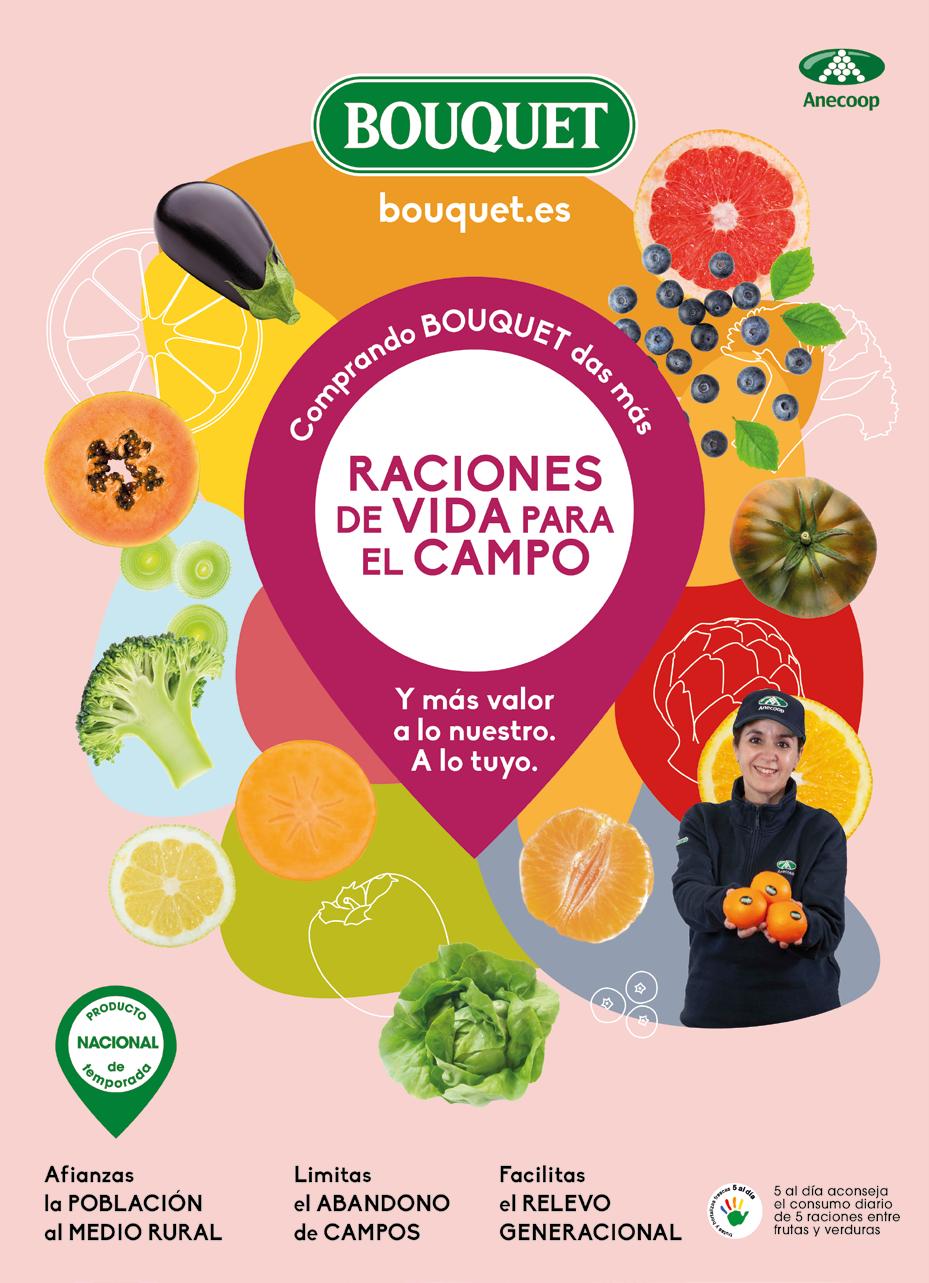
Por primera vez se dispone de datos objetivos sobre el consumo español de kaki debido a que ya fIgura desglosado en el panel alimentario del MAPA.
El consumo no llega al kilo por habitante y año. Concretamente se queda en 0,70 kilos, y sigue existiendo una parte importante de la población que todavía no lo conoce. Desde la Asociación Española del Kaki, se pretende corregir esta deficiencia. Fruit Today magazine entrevistó a su director, Pascual Prats.
¿La nueva campaña de comunicación puesta en marcha por la asociación podría actuar de acicate para mejorar el consumo?
Bueno, eso es lo que pretendemos desde la Asociación. Es una campaña integradora y simple para no confundir al consumidor y su slogan es: “Se llama kaki”. Este es el primer año del nuevo proyecto europeo en el que estamos inmersos.
¿Cómo se ve el comienzo de temporada? Estamos en un potencial máximo de 340 millones de kilos, aunque después de esta cifra vienen las rebajas climáticas o los problemas acuciantes de cotonet. Por lo que al final, será otra cifra.
Respecto al calibre será ligeramente inferior al de la campaña anterior y el comienzo de cosecha se da según las previsiones estipuladas.
Frente a una gran expansión que se auguraba hace años, el cultivo ha sufrido una
merma. ¿En qué momento nos encontramos?
En los últimos 6 años, el cultivo se ha reducido un 20%”
Sí, efectivamente de las 18.000 hectáreas hemos pasado a las 16.000. En los últimos años seis años, la superficie se ha reducido un 20%. En este sentido, comercialmente mantenemos mayor maniobra con la oferta de producto.
¿Puede el calibre ser un hándicap para las exportaciones?
Puede serlo, pero depende de los mercados, porque no todos demandan un calibre grueso. El problema puede darse en los precios; de hecho, el precio de las primeras cestas de un kilo es inferior al obtenido el año pasado, aunque esperamos que remonte.
¿Qué nuevos países destacan en el plano comercial?
Hay un notable interés por nuestro producto en países como Arabia Saudita, Jordania, Dubai. En este sentido tenemos suerte porque no son mercados que demanden calibres grandes, pero el inconveniente es otro,

el problema logístico. La situación geopolítica mundial es inestable y los problemas de tránsito en el Mar Rojo persisten.
¿Cuál es el mayor reto al que se enfrenta la producción de kaki?
Además de los sinsabores que nos puede dar el clima y frente al que nada podemos hacer, el mayor desafío es el control de plagas y enfermedades como el cotonet para el que nos enfrentamos con lucha biológica, que no resulta totalmente efectiva. Necesitamos materias activas eficaces, y eso es nuestra eterna lucha con la Administración.
For the fIrst time there is objective data about Spanish persimmon consumption, as it now appears in detail on the MAPA food panel.
Consumption does not reach one kilo per inhabitant/year. Specifically, it is 0.70 kilos, and there is still an important part of the population who have yet to discover this fruit. The Spanish Persimmon Association intends to correct this deficiency. Fruit Today Magazine interviewed its Manager, Pascual Prats.
Could the new communication campaign started up by the association act as an incentive to improve consumption?
Well, that is the Association’s intention. It is a comprehensive, simple campaign in order to not confuse consumers and its slogan is: “Se llama kaki” (It is called persimmon). This is the first year of the new European project in which we are immersed.
How do you see the start of the season?
We have a maximum potential of 340 million kilos, although the reductions due to weather conditions or the overwhelming problems of

mealybugs must be subtracted from this figure. This means that, in the end, it will be a different amount.
With respect to the calibre, it will be slightly smaller than that of the previous campaign. And the start of the harvest is taking place according to the prescribed forecasts. Compared to the great expansion that was predicted years ago, the crop has suffered from a decline. Where are we now?
Yes, indeed, we have dropped from 18,000 hectares to 16,000. Over the past six years, the surface area has been reduced by 20%. Accordingly, we have more room to manoeuvre commercially with the produce available. Could the calibre be a handicap for exports? It could be, but this depends on the different markets, because not all of them demand large calibres. The problem could arise in the prices; in fact, the price of the first one kilo baskets is
lower than last year, although we hope it will climb back up.
What new countries stand out in the commercial arena?
There is considerable interest for our produce in countries such as Saudi Arabia, Jordan, and Dubai. Accordingly we are lucky because they are not markets that demand large calibres, but the disadvantage lies in logistics problems. The world geopolitical situation is unstable and travelling problems in the Red Sea continue. What is the greatest challenge faced by persimmon production?
In addition to the heartaches that the weather could give us, against which we can do nothing, the greatest challenge is the control of pests and diseases such as mealybugs, where we must use biological pest control, which is not completely effective. We need effective active materials, and this is our eternal fight with the Administration.
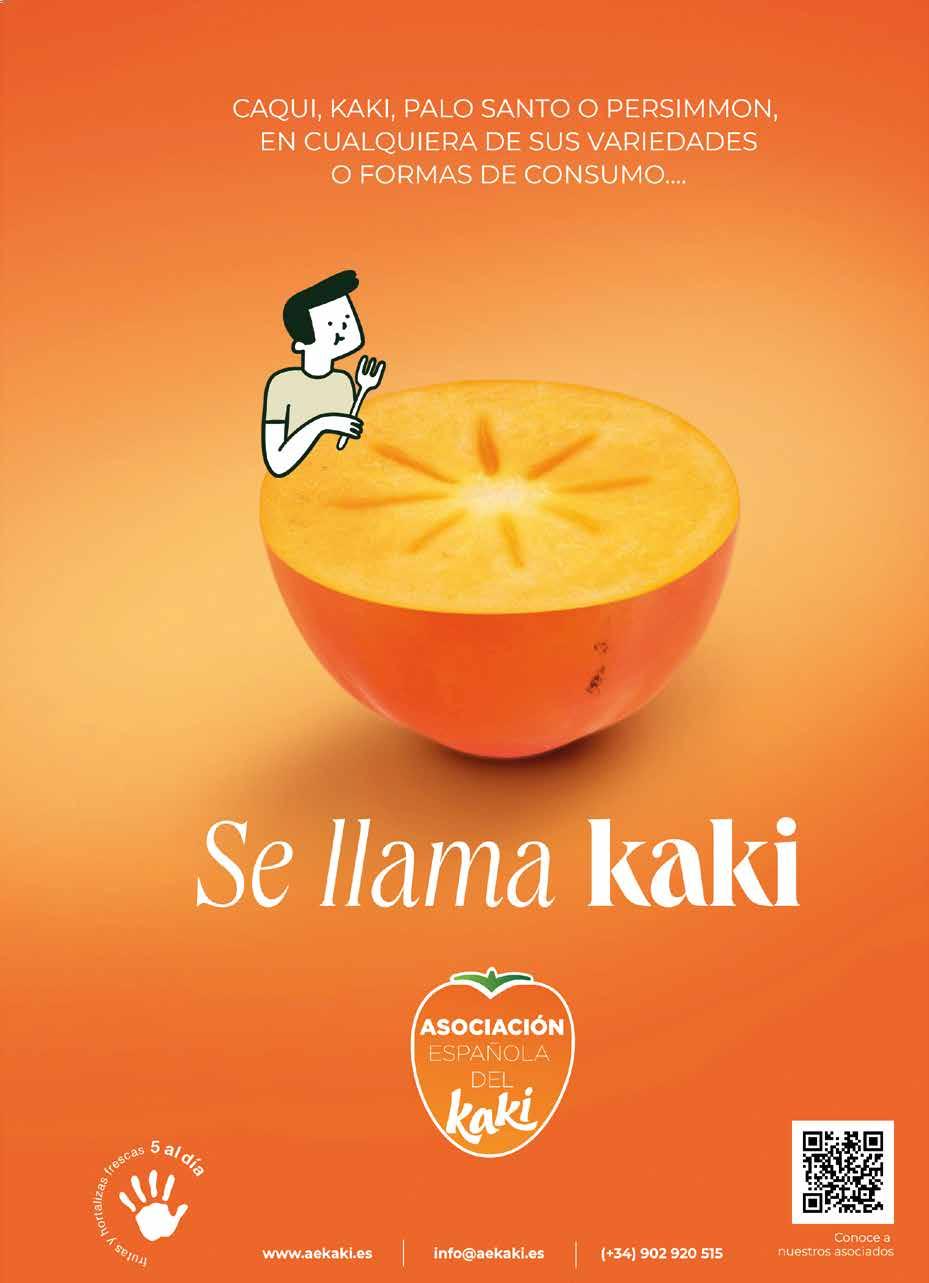
El Ministerio de Agricultura, Pesca y Alimentación español (MAPA) prevé un aforo citrícola inicial de 5,842 millones de toneladas para la campaña 2024/2025, que comenzó el pasado 1 de septiembre. Será la tercera campaña consecutiva en la que el aforo se queda por debajo de los 6 millones de toneladas
La directora general de Producciones y Mercados Agrarios, Elena Busutil, en la reunión sectorial de cítricos, fue la encargada de dar a conocer las cifras. Una ocasión en la FEPEX aprovechó para trasladar su preocupación por la falta de agua, de fitosanitarios y la competencia de países terceros, especialmente Sudáfrica y Egipto.
El cálculo del aforo nacional está basado en datos facilitados por las comunidades autónomas productoras y muestra una reducción de
casos, la vecería han sido factores decisivos en el volumen de producción, según el MAPA.
El 72% de las naranjas españolas son variedad navel
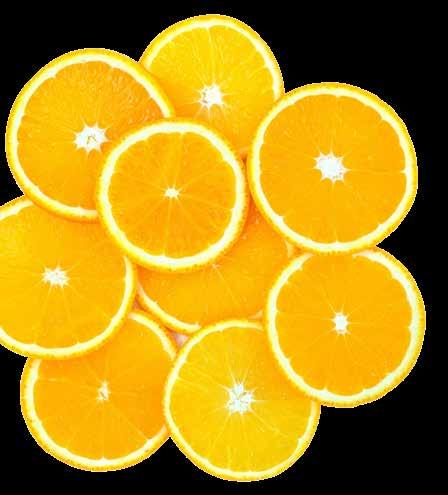
65.000 toneladas, un 1% por debajo de las cifras provisionales de la temporada 2023/2024. También son un 8,6 % inferiores a la media de las últimas cinco campañas.
Los efectos de la continuada sequía, el excesivo calor en periodos clave durante el desarrollo de los cítricos y, en algunos

En la reunión, FEPEX coincidió en que la falta de agua es uno de los factores que más influyen en la producción y mostró su preocupación especialmente de cara a la próxima temporada. Javier Esparza, presidente de Asociafruit, asociación integrada en FEPEX y productor de cítricos en Andalucía, destacó también la problemática por la progresiva desaparición de productos fitosanitarios que dificulta el tratamiento correcto de los cultivos y la eliminación de las plagas, así como la creciente competencia de países terceros, como Sudáfrica y especialmente Egipto, donde la producción de cítricos está extendiéndose en amplias zonas de cultivo.
Aumento de naranjas
En cuanto al desglose de las previsiones presentado por el MAPA, se expuso que el comportamiento productivo es diferente según el tipo de cítrico. Las previsiones para la naranja aumentan respecto a la pasada campaña y, en contraste, bajan especialmente para el limón y también para los pequeños cítricos; mientras que se mantienen en los mismos niveles para el pomelo. En concreto, de naranjas se producirían 2,975 millones de toneladas, lo que la situaría en un 8,8 % (242.500 toneladas) más que la pasada campaña, pero un 8,2 % (-266.000 toneladas) por debajo de la media. Este cítrico es el de mayor producción, ya que representa el 51 % del volumen del total. El 72 % de las naranjas que se producen
en España corresponden a variedades del grupo navel.
La producción de pequeños cítricos se elevaría a 1,831 millones de toneladas, una cantidad un 3,3 % (62.400 toneladas) inferior a la pasada y un 9,6% por debajo de la media. Este tipo de cítricos supondría el 31,3 % del total. Las satsumas representarían el 6,1% de este grupo; las clementinas, el 49,9 % y el resto de las mandarinas e híbridos, el 44 %.
Disminución del limón
La producción de limones, después del récord productivo de la pasada campaña, retrocedería y se fijaría en 953.661 toneladas. Esta cantidad supondría un 20,5 % (241.650 toneladas) menos que la registrada en la última temporada y un 9,9 % inferior a la media. El 73,1 % serían limones de la variedad fino y el 26,3 % del tipo verna. En el caso del pomelo, con una previsión de 86.305 toneladas, superaría a la pasada campaña en un 0,6 % (+2.560 toneladas), y también se situaría por encima de la media en un 8,3 %, con lo que se prevé de nuevo una campaña récord.
La desaparición de productos fItosanitarios difIculta el tratamiento correcto de los cultivos
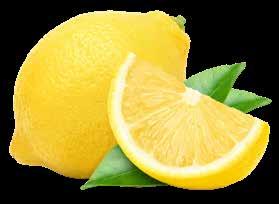
The Spanish Ministry of Agriculture, Fishing and Food (MAPA) forecasted an initial citrus fruit capacity of 5,842 million tonnes for the 2024/2025 campaign, which started on the 1st of September
The General Manager for Productions and Agricultural Markets, Elena Busutil, was in charge of informing about the figures at the sectorial citrus fruit meeting. FEPEX took advantage of this event to pass on their concern about the scarcity of water, about plant protection products and competition from third countries, particularly South Africa and Egypt.
The calculation of the Spanish national capacity is based on data provided by the producing autonomous regions and shows a reduction of 65,000 tonnes, 1% below the provisional figures for the 2023/24 season. They are also 8.6% lower than the average for the past five campaigns.
The effects of the continuing drought, the excessive heat in key periods during the development of the citrus fruit and, in some cases, alternating crops have been decisive factors in the production volume, according to the MAPA.
At the meeting, FEPEX coincided in the fact that water shortage is one of the factors that effects production most and they showed their concern, particularly when looking towards the next season. Javier Esparza, Chairman of Asociafruit, an association integrated into FEPEX and a citrus fruit producer in Andalusia, also emphasised the problems regarding the progressive disappearance of plant protection products that make it difficult to treat the crops correctly and eliminate pests, as well as the growing competition
from third countries, such as South Africa and particularly Egypt, where citrus fruit production is spreading in extensive areas of cropland.
The disappearance of plant protection products is making it diffIcult to correctly treat the crops
Regarding the breakdown of the forecasts presented by the MAPA, it was shown that the productive behaviour differs according to the type of citrus fruit. The orange forecasts increased compared to the previous campaign; while on the other hand, there is a particular drop in lemons, and also in small citrus fruit, although the same levels are being maintained for grapefruit. Specifically, they will produce 2,975 million tonnes, which would make the production 8.8% (242,500 tonnes) higher than in the last campaign, but 8.2% (-266,000) tonnes) below the average. This citrus fruit is the one with the highest production, as it represents 51% of the total volume. 72% of the oranges produced in
Spain correspond to varieties from the navel group.
The production of small citrus fruit will rise to 1,831 million tonnes; 3.3 % (62,400 tonnes) lower than the last campaign and 9.6% below the average. This type of citrus fruit makes up 31.3% of the total. Satsumas represent 6.1% of this group; clementines 49.9% and the remaining mandarins and hybrids, 44%.
A drop in lemons
Following last campaign’s record production, lemon production will drop and reach 953,661 tonnes. This amount will mean 20.5% (241,650 tonnes) less than recorded in the last season and 9.9 % below the average. 73.1 % will be lemons of the fino variety, and 26.3% will be of the verna type.
Grapefruit, with a forecast of 86,305 tonnes, will be above figures for the last campaign by 0.6 % (+2.560 tonnes), and it would also be 8.3% above the average, with what is being predicted to be another record campaign.
72% of Spanish oranges are of the navel variety
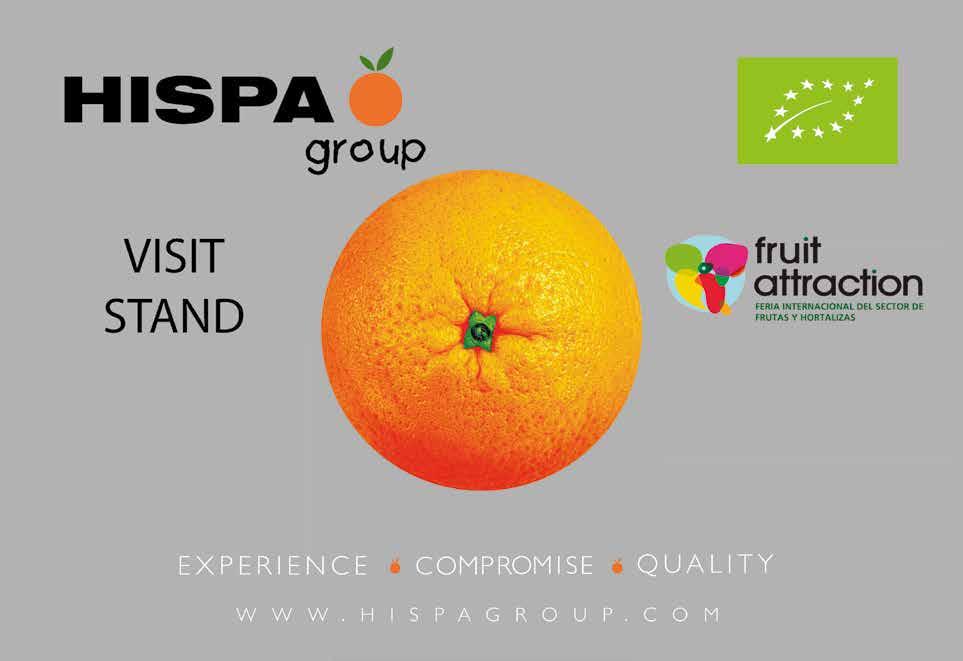
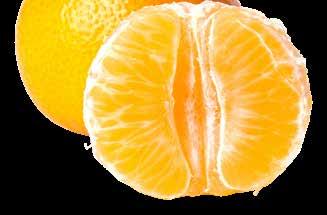
Andalucía y la Comunidad Valenciana presentan previsiones dispares, la primera con un aumento de producción del 19,2% y la segunda con una disminución del 16,2%
En Andalucía se espera una recuperación de cosecha respecto a la campaña anterior como consecuencia del aumento de las precipitaciones en primavera y las dotaciones de riego, que han mejorado el estado vegetativo de las plantaciones. Esto supone un aumento de un 19,2% con respecto a 2023-2024 (+2,26 millones de toneladas) y, en el territorio nacional, se espera que la comunidad andaluza coseche el 38,8% de la producción española (5,84 millones de toneladas)”.
En cuanto a las diferentes especies, las naranjas dulces concentran el 69,4% de la producción (1.570.467 t) y registran un incremento del 22,4% en comparación con 2023-2024. Le siguen las mandarinas, que suponen el 25% (564.985 t) y aumentan un
22,4% con respecto a la campaña anterior; así como los limones, que descienden un 22,8%, alcanzando las 88.022 t (3,9% de la producción total).
Comunidad Valenciana
En el ámbito de la Comunidad, la producción de naranjas dulces se reducirá en un 2,4% respecto a la campaña 23/24 y supondrá un 16,2% menos que la media de las últimas cinco. En lo que respecta a pequeños cítricos, se incrementará la producción de satsumas (+33,9%), y se reducirá ligeramente la del subgrupo de híbridos (-1,4%). No obstante, el cambio más notable se encuentra en el subgrupo de clementinas, y especialmente de la variedad Clemenules (-28,5%). Ante esta situación, el presidente de Federació de Coo-
campaign; while lemons have dropped by 22.8%, reaching 88,022 tonnes (3.9% of the total production).
The Valencian Community
perativas Agro-alimentàries de la Comunitat Valenciana, Cirilo Arnandis, destaca que “el comportamiento comercial de la campaña no será igual que la anterior, habida cuenta de las variaciones en la distribución por grupos de variedades. Esperamos una primera parte de campaña con mayor dinamismo, para la que todavía tenemos que estar pendientes del efecto sobre los calibres finales que puedan tener las lluvias de las últimas semanas. En la segunda parte de campaña, no obstante, tendremos que estar pendientes del inicio de la exportación de terceros países, especialmente Egipto, y de las posibles variaciones que se puedan producir en las revisiones de los aforos”.
Andalusia and the Valencian Community are presenting very different forecasts; the former with a 19.2% increase in production and the latter with a 16.2% decrease. In Andalusia, a recovery is expected in the harvest compared to the previous campaign as a result of the increase in springtime rainfall and in irrigation resources, which have improved the vegetative condition of the plantations. This means a 19.2% increase compared to the 20232024 campaign (+2,26 million tonnes), and in Spain it is expected for the Andalusian region to harvest 38.8% of the domestic production (5,84 million tonnes)”.
Regarding the different species, sweet oranges concentrate 69.4% of the production (1,570,467 tonnes) and a 22.4% increase has been recorded compared to 2023-2024. These are followed by mandarins, which make up 25% (564,985 tonnes) and a 22.4% increase regarding the previous
Within the Valencian Community, sweet orange production will be reduced by 2.4% compared to the 23/24 campaign, and it will mean 16.2% less than the average over the last five campaigns. With regard to small citrus fruit, the production of satsumas (+33.9%) will increase and the subgroup of hybrids (-1.4%) will be slightly reduced. However, the most appreciable change may be found in the clementine subgroup, and particularly in the Clemenule variety (-28,5%). Against this backdrop, the Chairman of Federació de
Cooperativas Agro-alimentàries de la Comunitat Valenciana, Cirilo Arnandis, underscores that “the commercial behaviour of the campaign will be the same as the previous one, taking into account the variations in the distribution according to the groups of varieties. We expect the first part of the campaign to be more dynamic, for which we will still have to wait and see the effect on the final calibres that the rainfall over recent weeks could have. In the second part of the campaign, however, we will have to keep an eye on the start of the exports from third countries, particularly Egypt, and on the possible variations that could arise in the reviews of the capacities.”









































































































































































































































La campaña de Leanri en 2024 ha sido, como en las anteriores, una excelente oportunidad para evaluar la respuesta de los consumidores, quienes valoran especialmente su apariencia, el fácil pelado, la textura
Leanri destaca por características agronómicas notables, como su vigor, tamaño y la eficiencia en el uso de agua y fertilizantes. Además, desde una perspectiva comercial, presenta un excelente comportamiento en almacén, cámara y transporte, lo que facilita su distribución. Sin embargo, lo que realmente la distingue ante el consumidor es su extraordinario sabor, lo que refuerza su aceptación en el mercado.
Las exigencias de cultivo de Leanri están determinadas principalmente por el vigor de la variedad, especialmente en los primeros años de producción. Para garantizar un buen cuajado, es crucial regular adecuadamente el riego y el abonado. En estas primeras etapas, también es fundamental aplicar estrategias específicas como el rayado de troncos y la administración de ácido giberélico. Otras técnicas, como el arqueo de ramas, han demostrado ser efectivas para incrementar la producción, lo que refuerza la importancia de un manejo técnico adecuado.
Además de su rendimiento, Leanri se presenta como una variedad sostenible, una
ventaja clave en los tiempos actuales. Su tendencia a desarrollar calibres altos implica una necesidad hídrica significativamente menor en comparación con otras variedades. Esto, combinado con su resistencia al daño solar, incluso bajo condiciones de alta irradiación, convierte a Leanri en una opción ideal para enfrentar las exigencias climáticas actuales.
En cuanto a su atractivo comercial, Leanri no solo destaca por su resistencia y sostenibilidad, sino también por su apariencia visual. Su color naranja intenso, la brillantez de la piel y su forma y tamaño son muy atractivos para el consumidor. Esta primera impresión mejora aún más cuando se consume: es una fruta de fácil pelado, que no mancha, con gajos bien segmentados que se separan sin esfuerzo. Su textura crujiente al comer y su capacidad para fundirse en la boca sin dejar restos, acompañada de un sabor dulce pero equilibrado con un toque de acidez, invitan a seguir consumiéndola una y otra vez.
Por último, Leanri cumple con los requerimientos necesarios para la confección y transporte, lo que asegura que llegue al
administration of gibberellic acid. Other techniques, such arching of branches have been shown to be effective for increasing production, reinforcing the importance of suitable technical handling.
In addition to its yield, Leanri is a highly sustainable variety, a key advantage at present. Its tendency to development high calibres involves a significantly lower water requirement, compared to other varieties. This, combined with its resistance to sun damage, even in conditions of high irradiation, turns Leanri into an ideal option for facing up to the current climatic conditions.
consumidor en condiciones óptimas. Al ser un producto que garantiza la repetición de compra, se reafirma como una opción clave para el futuro de la citricultura, donde la calidad es el principal demandante en el mercado actual.
Leanri tiene una necesidad hídrica inferior a otras variedades

The 2024 Leanri campaign has been, as in the previous ones, an excellent opportunity to assess consumer response, who especially appreciate its appearance, easiness to peel, crunchy texture, lack of fIbre, and its fLavour Leanri stands out due to its considerable agronomic characteristics, such as its hardiness, size, and its efficiency in the use of water and fertilisers. Additionally, from a commercial point of view, its behaviour in the warehouse, chilling rooms, and transport is excellent, which makes distribution easier. However, the attribute that really makes it stand out for consumers is its extraordinary flavour, which strengthens its acceptance on the market. The demands of Leanri cultivation are determined mainly by the hardiness of the variety, particularly in the first months of production. To guarantee a good setting, it is crucial to regulate the irrigation and the use of fertilisers. In these first phases, it is also essential to apply specific strategies such as trunk scratching and the
With regard to its commercial attraction, Leanri not only stands out for its resistance and sustainability, but also for its visual appearance. Its deep orange colour, the

shininess of the peel and its shape and size are all very attractive for consumers. This first impression gets even better when it is eaten: it is an easy-to-peel fruit, which does not drip, with well-defined segments that are easily separated. Its crunchy texture on eating, and its capacity to melt in the mouth without leaving anything behind, accompanied by a sweet, but balanced flavour with a touch of acidity, make consumers want to repeat their choice again and again.
Lastly, Leanri meets all the requirements necessary for preparation and transport, guaranteeing that it reaches consumers in optimum conditions. As it is a product that assures repeat purchases, it is reaffirmed as a key option for the future of citrus fruit growing, where quality is the main factor on today’s market.

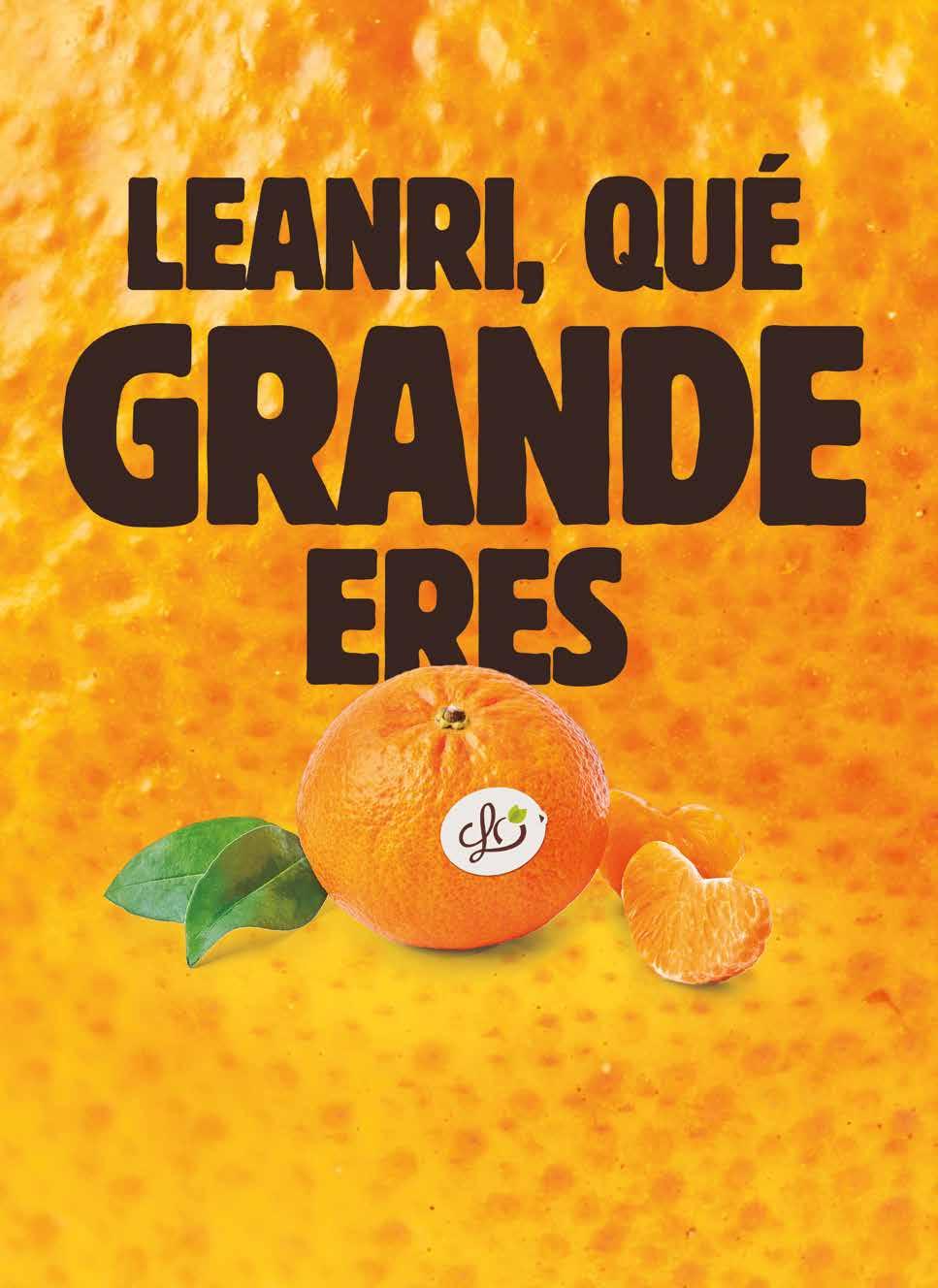

Cítricos Fruittoday 118
Complementamos nuestra gama de pesadoras con esta nueva máquina que es sinónimo de delicadeza y competitividad en el proceso de envasado automático
Disponible en cuatro versiones: 4, 8, 12 y 16 cabezales.

Escanea el código y descarga la ficha técnica.



ORRi ha sido distinguida por su sabor, aspecto visual, luminosidad y fIrmeza de su piel
La mandarina ORRi ha vuelto a hacer historia al recibir, por segundo año consecutivo, el prestigioso Superior Taste Award, otorgado por el International Taste Institute (ITI) de Bruselas. Este galardón, que reconoce la excelencia en sabor y calidad de productos alimentarios a nivel mundial, consolida a ORRi como una de las variedades de mandarinas más apreciadas en el panorama internacional. ORRi ha logrado destacar por su aroma fresco y natural, una textura suave y jugosa y un sabor inigualable que equilibra a la perfección lo dulce y lo ácido. Estos atributos han sido determinantes para que el jurado haya otorgado a ORRi el máximo galardón: tres estrellas, un distintivo reservado solo para productos de calidad sobresaliente. El jurado del ITI está compuesto por más de 200 chefs y sumilleres de renombre internacional, que realizan una evaluación sensorial exhaustiva basada en catas a ciegas. En este proceso, cada producto se valora únicamente por sus características intrínsecas, tales como su apariencia, aroma, sabor y textura.
En este sentido, las características únicas de ORRi, que la diferencian de otras mandarinas en el mercado, han sido una pieza clave para su éxito. En palabras del jurado del ITI, “se trata de una mandarina extraordinaria con una apariencia y sabor auténticos. Su aroma invita a probarla y su sabor encanta”
Este nuevo reconocimiento llega en un momento en que la variedad continúa au-
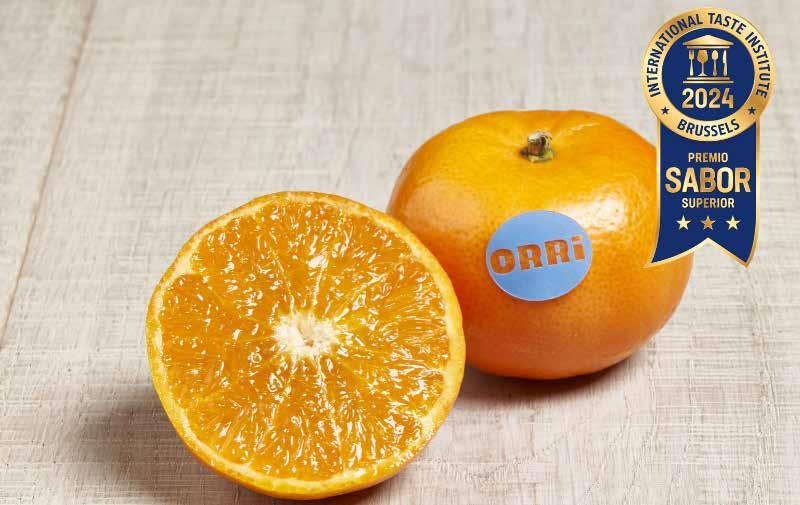
mentando su presencia en puntos de venta de todo el mundo, consolidándose como un referente de sabor y calidad en el mercado internacional. Además, este galardón refuerza aún más su reputación como una mandarina premium que combina innovación y tradición, y se adapta a las exigencias más altas de los mercados internacionales. En este sentido, Guillermo Soler, gerente de ORRi, ha expresado la satisfacción por este logro: “Estamos profundamente
orgullosos de que la mandarina ORRi sea la única variedad en recibir el International Taste Award dos años consecutivos. Este logro es un reconocimiento al arduo trabajo de nuestros agricultores, los profesionales que apuestan por ella y a la fidelidad de los consumidores. Seguimos comprometidos en ofrecer un producto excepcional que no solo deleita, sino que también cumple con los más altos estándares de sostenibilidad y calidad.”
ORRi has been distinguished for its fLavour, visual appearance, luminosity and the fIrmness of its peel
The ORRi mandarin has once again made history by receiving, for the second year running, the prestigious Superior Taste Award, granted by the International Taste Institute (ITI) of Brussels. This award, which recognises excellence in flavour and quality of food products on a worldwide scale, consolidates ORRi as one of the best appreciated mandarins on the international scene. ORRi has managed to stand out due to its fresh, natural aroma, a smooth, juicy texture and an unbeatable flavour that balances sweetness and acidity to perfection. These attributes were determining factors for the jury to have granted ORRi the maximum award: three stars, a label reserved only for products with outstanding quality.
The ITI’s jury is made up by over 200 internationally renowned chefs and sommeliers, who carry out an exhaustive sensorial evaluation, based on blind tasting. In this process, each product is valued only by its intrinsic characteristics, such as appearance, aroma, flavour and texture. Accordingly, ORRi’s unique characteristics, which set it apart from other mandarins on the market, have been a key element for its success. In the words of the ITI’s jury: “it is an extraordinary mandarin, with authentic appearance and flavour. Its aroma invites you to try it, and its flavour is truly captivating.”
This new recognition comes at a time when the variety continues to increase its presence at points of sale all over the world, consolidating itself as a benchmark of flavour and quality on the international market. This award also strengthens its reputation even more as a premium mandarin that combines innovation and tradition, and it adapts to the highest demands of the international markets.
On this aspect, Guillermo Soler, the Manager of ORRi, expressed his satisfaction for this achievement: “We are incredibly proud that the ORRi mandarin is the only variety to receive the International Taste Award two years running. This achievement is an acknowledgement of the hard work carried out by our farmers, the professionals who are committed to it, and to the loyalty of the consumers. We continue to be committed to offering an exceptional product that does not only delight, but that also meets the highest standards of sustainability and quality.”

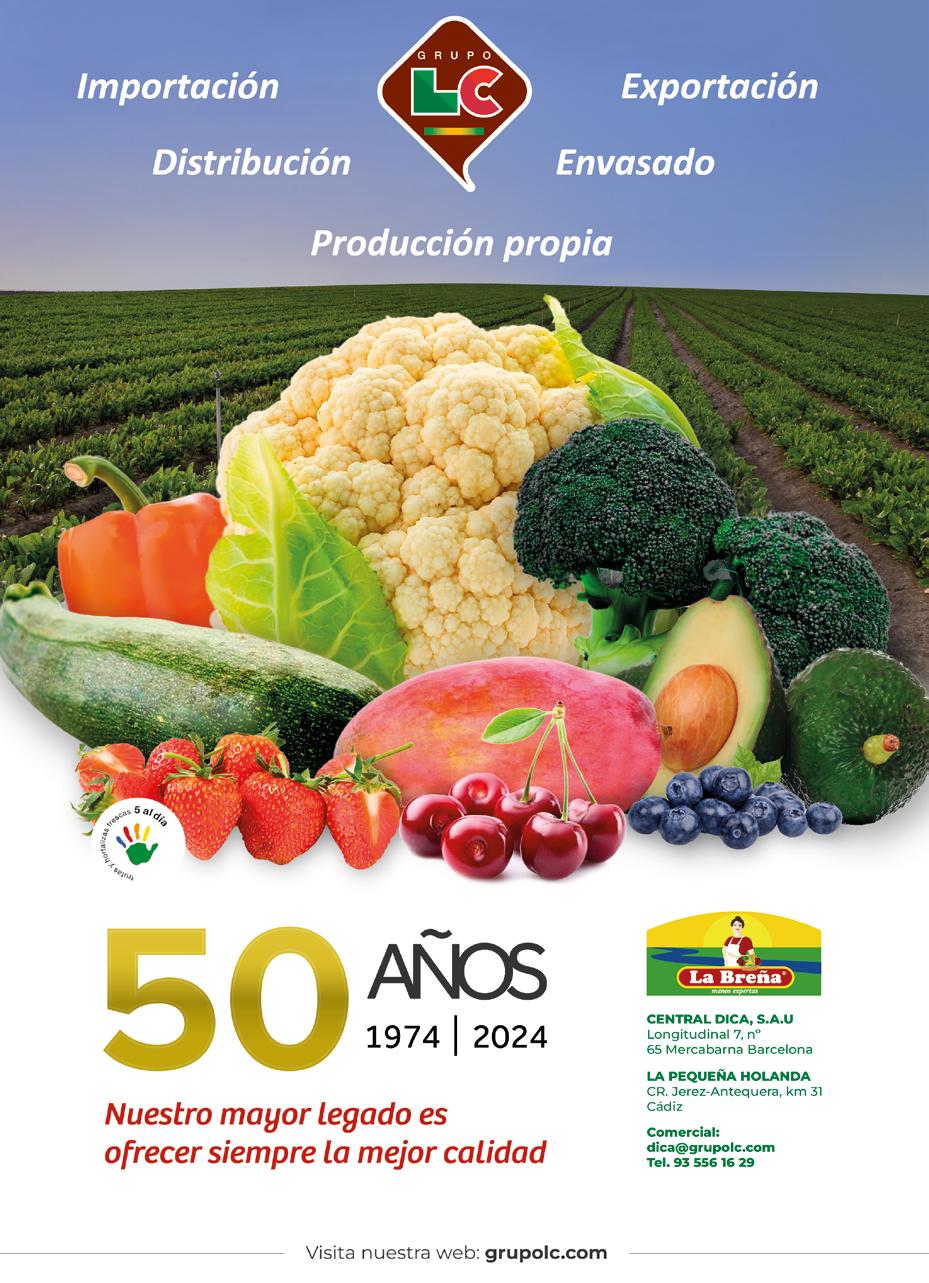
La Región de Murcia acapara el 10% de las exportaciones españolas, pero en mercados de valor, como Dinamarca y Suiza, la penetración murciana supera el 15%; al igual que en Francia
Los esfuerzos se están centrando en el desarrollo del segmento de valor, donde tomates de gran calidad y sabor son protagonistas, diferenciando así la oferta de otros orígenes, donde la capacidad para el desarrollo de estos productos es menor.
Si se analiza la oferta murciana de las empresas de Proexport, ésta ha quedado concentrada en productoras que operan con líneas de mucho valor con estructuras muy evolucionadas, que le permiten sostenerse con mayor alcance en destinos de naturaleza ‘premium’.
Independientemente de la variedad elegida, en España el consumo per cápita de tomate es de 11,22 kilos por persona y año, según el Informe del Consumo Alimentario en España 2023 del Ministerio de Agricultura (MAPA). Esto se traduce en, aproximadamente, un total de 217 millones de kilos de tomate en el último año. Una cifra que se eleva a 13,3 kilos por persona y año, si atendemos al último análisis del portal estadístico alemán ‘Statista’. En total, el tomate representa el 23,4% del consumo total de hortalizas frescas en España y los consumidores gastan alrededor de 990 millones de euros en esta hortaliza.
“Los números no dejan lugar a dudas, la importancia del tomate en la dieta diaria de los españoles es una realidad, ya sea en ensaladas, salsas, guisos o como ingrediente principal en platos tradicionales como el gazpacho y el salmorejo”, señala Juan Hernández, presidente de la sectorial de Tomate de Proexport.
Repercusión Económica
La producción de tomate tiene un impacto económico significativo en España. Este cultivo no solo genera ingresos directos a través de la venta de tomates frescos y procesados, sino que el sector del tomate emplea a miles de trabajadores en las fases de cultivo, cosecha, procesamiento y distribución.
Asimismo, España es un importante exportador de este producto. En 2023, las exportaciones de tomate español alcanzaron cifras récord, con un aumento del 22% en comparación con el año anterior, según datos del MAPA. Los principales destinos de exportación

incluyen países de la Unión Europea como Alemania, Francia y el Reino Unido. Estas exportaciones no solo generan ingresos adicionales para los productores, sino que también fortalecen la balanza comercial del país.
El ejecutivo destaca que “el impacto económico del tomate también se refleja en la inversión en tecnología y sostenibilidad. Los productores hemos adoptado técnicas avanzadas de cultivo, como el riego por goteo y el uso de invernaderos de alta tecnología, para mejorar la eficiencia y reducir el impacto ambiental. Estas inversiones no solo aumentan la productividad, sino que también

Los precios de entrada y de referencia del tomate están sin actualizarse desde hace muchos años
contribuyen a la sostenibilidad a largo plazo del sector agrícola”.
Retos de la campaña 2024/2025
A pesar de su éxito, la producción de tomate en España enfrenta varios desafíos. La competencia internacional, especialmente de países como Marruecos y Turquía, ha aumentado en los últimos años. Además, los cambios climáticos y las fluctuaciones en los precios de los insumos agrícolas pueden afectar la rentabilidad de los productores.
“Los precios de entrada y referencia del tomate llevan sin actualizarse muchos años y son muy negativos para este sector, siendo el cálculo de los mismos perjudicial para la producción de tomate de los países comunitarios, incluida España. Además, los mecanismos de salvaguardia previstos en los acuerdos con terceros países nunca se han aplicado en últimos 25 años, cuando han existido muchas ocasiones de muy bajos precios dónde se debieron establecer las medidas de salvaguardia para proteger
a los productores comunitarios de tomate”, explica el portavoz de Proexport. Actualmente, una de las principales amenazas para el sector es el virus del Rugoso (ToBRFV) que afecta con gran virulencia a las producciones; pero de mano de las casas de semillas, se está trabajando activamente en el desarrollo de variedades resistentes al mismo, mientras se mantienen la calidad.
Junto con el desarrollo de nuevas variedades resistentes al virus del Rugoso, el gran reto, por tanto, sigue siendo el consumidor: llegar a los supermercados con un producto sostenible, con calidad y buen sabor es hoy el gran objetivo, puesto que “creemos que el consumo y la demanda podría incrementarse notablemente, no solo en España, sino también en el conjunto de Europa. El tomate tiene aún mucho recorrido por delante”, concluye Hernández.
La producción marroquí y la turca amenazan la supremacía española
The Region of Murcia corners 10% of Spanish exports, but on high-value markets, such as Denmark and Switzerland, Murcia’s penetration is over 15%, with the same occurring on the French market
Efforts are being concentrated on the development of the high-value segment, where top-quality and flavour tomatoes are the stars, differentiating itself from produce from other sources, where there is less capability for development for these products.
If the offer from Proexport companies from Murcia is analysed, it has become concentrated on producers who operate with high-value lines and very evolved structures that allow them to survive with a more extensive scope in ‘premium’ destinations.
Regardless of the variety chosen, tomato consumption per capita in Spain is 11.22 kilos per person/year, according to the 2023 Spanish Food Consumption Report by the Ministry of Agriculture (MAPA). This is translated into approximately, a total of 217 million kilos of tomatoes over the past year. A figure that rises to 13.3 kilos per person/year, if we take into account the latest analysis by the German statistics portal ‘Statista’.
In total, tomatoes represent 23.4% of the total fresh vegetable consumption in Spain, and consumers spend around 990 million euros on this vegetable.
reached record figures, with a 22% increase compared to the previous year, according to data from the MAPA. The main export destinations include countries from the European Union such as Germany, France and the United Kingdom. These exports do not only generate additional revenue for the producers, but they also strengthen the country’s trade balance. The executive emphasises that “the economic impact of tomato- es is also reflected in the
ternational competition, particularly from countries such as Morocco and Turkey, has increased in recent years. In addition, climate change and price fluctuations of agricultural inputs can also affect the producers’ profitability.
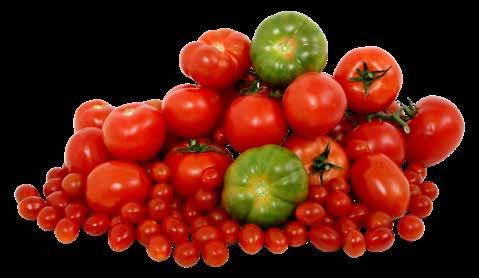
“The figures leave no room for doubt; the importance of tomatoes in the Spanish daily diet is a reality, in salads, sauces, stews or as the main ingredient in traditional dishes such as gazpacho and salmorejo,” points out Juan Hernández, Chairman of the Tomato sector at Proexport.
Economic repercussion
Tomato production has a significant economic repercussion in Spain. This crop does not only generate direct revenue through the sale of fresh and processed tomatoes, but the tomato sector also employs thousands of workers in the cultivation, harvesting, processing and distribution phases.
Likewise, Spain is an important exporter of this produce. In 2023, Spanish tomato exports
Reference and starting prices for tomatoes have not changed in a very long time
investment in technology and sustainability. As producers, we have adopted advanced cultivation techniques, such as drip irrigation and the use of high technology greenhouses to improve efficiency and reduce the environmental impact. These investments not only increase productivity, but they also contribute to the long-term sustainability of the agricultural sector.”
In spite of its success, tomato production is Spain is facing several different challenges. In-
“The reference and starting prices of tomatoes haven’t changed in a very long time, and they are very negative for this sector, with the calculation being highly damaging for tomato production in the European community countries, including Spain. Additionally, over the past 25 years the safeguarding mechanisms foreseen in the agreements with third countries have never been applied, when there have been times with very low prices where the safeguarding steps should have been established to protect the European community tomato producers, the spokesman from Proexport explains. Currently, one of the main threats for the sector is ToBRFV, which is attacking productions with great virulence; but the seed companies are actively working on the development of varieties that are resistant to it, while still maintaining the quality. Along with the development of new varieties resistant to ToBRFV, the great challenge, therefore, continues to be the consumers: reaching the supermarkets with sustainable, high-quality produce with good flavour is the most important goal today, since “we believe that consumption and demand could increase appreciably, not only in Spain, but also in Europe as a whole. Tomatoes still have a long way to go,” Hernández concludes.
Moroccan and Turkish productions are threatening Spain’s supremacy

Con una larga experiencia en tomate bío, Balcón de Níjar regresa a Fruit Attraction (9B07) otorgando el protagonismo al cherry (rama y redondo). Sigue trabajando pimiento Sweet Palermo, otros cónicos dulces, tomate rama y en primavera, sandía. Después de trabajar otras referencias, ha vuelto a centrarse en sus orígenes, descartando líneas menos rentables. “Hemos disminuido un 10% la superficie respecto a hace 4 años”, cuenta el gerente, David Caparrós. “En Centroeuropa se produce más, sobre todo en verano, y los consumidores pagan precios mucho más altos por el producto local. Alemania ha crecido mucho en producción y Dinamarca también. Cuando el consumidor está dispuesto a pagar el doble o el triple por su producto, incluso teniendo menos calidad que los nuestros, poco podemos hacer”.
“El año pasado hubo menos producción en el sur de noviembre a mayo. La campaña se acortó más de un mes y se pagaron mejores precios. Este año los supermercados están
presionando en programas y fuera, con precios inferiores. No quieren más subidas”. En 2024/25 alcanzarán los 3,5 mill.kg (2,5 de cherries). “Veremos cómo va el invierno. Hay mucha incertidumbre por el clima y las plagas”. “Estamos cambiando a variedades con resistencia a ToBRFV. Ya tenemos un porcentaje alto, sobre todo de Enza Zaden”.
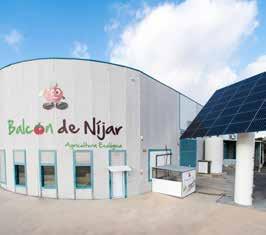
With many years of experience in bio tomatoes behind it, Balcón de Níjar is returning to Fruit Attraction (9B07) giving the starring role to cherry tomatoes (vine and round). The company continues to work with Sweet Palermo, other sweet conical peppers, vine tomatoes and, in the spring, watermelons. After working with other references, it has returned to its origins, rejecting less profitable lines. “We have decreased our surface area by 10% compared to 4 years ago,” the Manager, David Caparrós, explains. “In Central Europe, production has increased, particularly in the summer, and consumers pay much higher prices for local produce. Germany has seen its production grow a great deal, along with Denmark. When consumers are willing to pay double or triple for their own product, even when it has lower quality than ours, there is little we can do.”
“Last year there was less production in the south from November to May. The campaign was cut short by a month, and better prices were paid. This year, the supermarkets are putting pressure on programmes, with lower prices. They do not want any price increases.”
In 2024/25 they reached 3.5 million kg (2.5 of cherry tomatoes). “We will see how the winter goes. There is a great deal of uncertainty due to the weather conditions and to pests.” “We are changing to varieties resistant to ToBRFV. We already have a high percentage, particularly from Enza Zaden”.
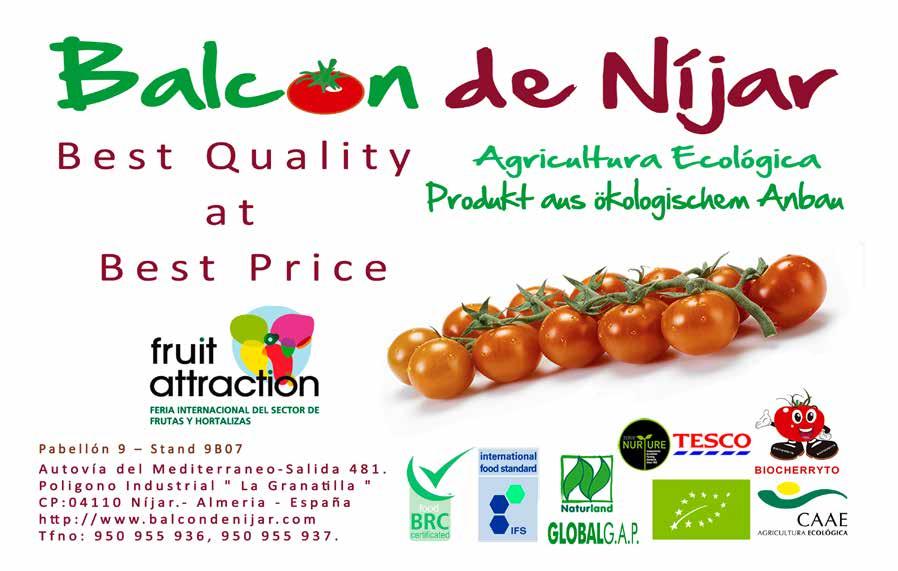



Lo que hay detrás de la etiqueta no se puede imitar




Su modelo se basa en Economía Circular y Desperdicio 0 con una agricultura sostenible, saludable, sabrosa e innovadora para el consumidor y el planeta
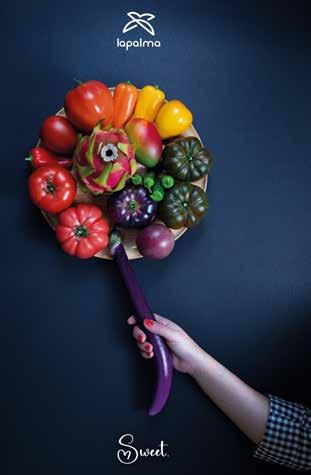
Cooperativa La Palma trabaja con toda la cadena de valor agroalimentaria, con la que comparte el propósito de impactar de forma positiva en el entorno; alimentar con conciencia; usar los recursos naturales con responsabilidad. Y el de asegurar el futuro de la profesión.
Su presidente, Pedro Ruiz, asegura que La Palma se orienta y prepara para contribuir a alimentar de forma saludable y sostenible a 750 mill. de europeos. “Generamos ya crecimiento inteligente, sostenible e integrador, sustentados sobre la innovación y los valores de la economía circular”.
La cooperativa sigue centrada en la mejora del producto y en la Transferencia del Conocimiento para formar a todos los agentes de la revolución alimentaria. Para ello cuenta con uno de los más innovadores sistemas agrícolas, reconocido por instituciones y profesionales.
Su apuesta continúa centrada en una magnífica selección de hortalizas de primerísima calidad con la que son líderes en Mini-Verduras con una amplia variedad de tomate de especialidad, pepino snack y mini-pimiento. Y con nuevas propuestas de tomate de sabor con foco en sus beneficios
nutricionales, así como con una amplia línea de Subtropicales con chirimoya, aguacate y mango a la que incorporan pitahaya, fruta de la pasión y caviar cítrico.
Conscientes de los nuevos modelos de consumo y la preocupación por la salud de las personas y el planeta, han implantado un sistema de producción circular, conectado, sostenible en el que reducen, recuperan, reutilizan, reparan y reciclan. Reforzando su producción de hortalizas frescas de altísima calidad y dando vida a un innovador proyecto de PlantBased Foods y Vegan Foods a base de proteína vegetal, en el que avanzan a gran velocidad.
Cooperativa La Palma ofrece elaboraciones 100% naturales a base de sus productos frescos, con innovadores formatos en envases reciclables o fabricados a partir de materiales orgánicos. Como cremas de verduras, atún rojo vegetal, salsas vegetales, hamburguesas veganas o snacks y productos de ayuda culinaria. Las materias primas son cultivadas por sus socios agricultores en Andalucía, sin aditivos, con energías renovables, reducción de la huella de CO2 y embalajes sostenibles en originales packagings.
Its model is based on the Circular Economy and Zero Waste, with sustainable, healthy, tasty and innovative farming methods both for consumers and for the planet
Cooperativa La Palma works with the entire agrifood value chain, with which it shares the purpose of having a positive impact on its surroundings; feeding with awareness, as well as using the natural resources responsibly. And therefore, that of guaranteeing the profession’s future.
Its chairman, Pedro Ruiz, affirms that La Palma is ready and able to contribute to feeding 750 million Europeans in a healthy, sustainable way. “We are already generating smart, sustainable and integrating growth, upheld by the innovation and values of the circular economy.”
The cooperative continues to concentrate on product improvement and on the Transfer of Knowledge in order to train all the agents about the food revolution. To do this, it has one of the

most innovative agricultural systems, recognised by institutions and professionals.
Its continuous commitment centred on a magnificent selection of top-quality vegetables, where they are leaders in Mini-Vegetables, with a wide variety of speciality tomatoes, snack cucumbers and mini-peppers. And new tasty tomatoes with the spotlight placed on their nutritional benefits, as well as with an extensive line of sub-tropical fruits, with custard apples, avocados and mangos, along with the new additions of pitayas, passion fruit and caviar lime.
Aware of the new consumption models and concern about the health of both people and the planet, they have implanted a circular production system, connected and sustainable with which they reduce, recover, reuse, repair and
recycle. Strengthening their production of very high-quality fresh vegetables and giving life to an innovative Plant Based and Vegan Foods project, with a vegetable protein base, where they are moving forward at great speed.
Cooperativa La Palma offers 100% natural preparations based on their fresh produce, with innovative formats in recyclable containers or that are manufactured using organic materials. These include vegetable creams, vegetable Bluefin Tuna, vegetable sauces, vegan hamburgers or snacks, and products for culinary purposes. The raw materials are cultivated by their associate farmers in Andalusia, without any additives, using renewable energies, CO2 footprint reduction and sustainable, original packaging.
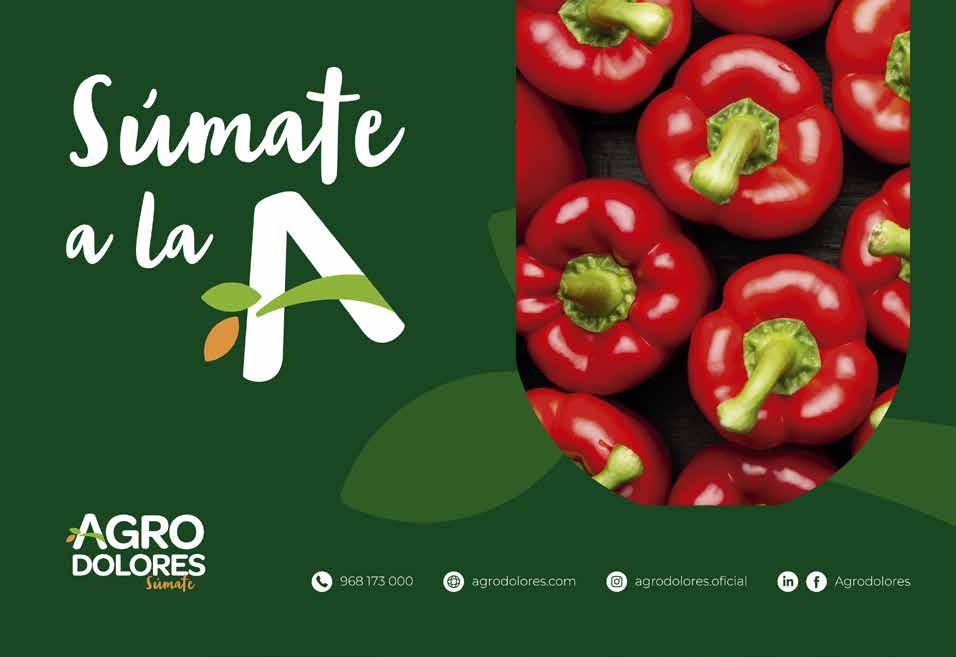
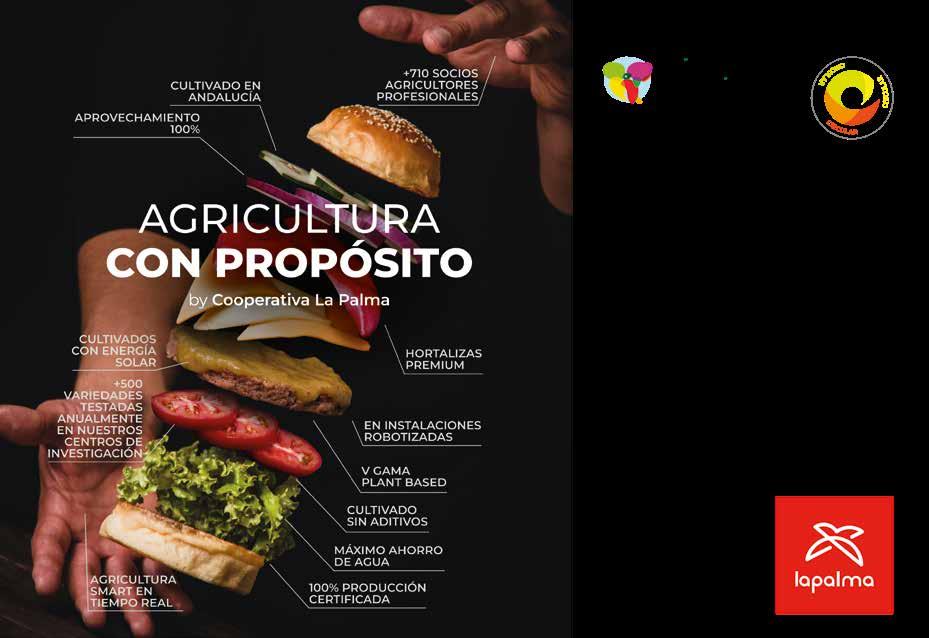
La empresa MUESTRA en Fruit Attraction su apuesta por la salud y el medioambiente
La empresa almeriense Keops Agro ha recibido una de las tres primeras certificaciones de agricultura regenerativa Aenor-Epigen. Este sello avala su modelo de producción, a través del cual obtienen alimentos que aportan salud a las personas y, al mismo tiempo, cuidan el medioambiente.
La empresa agrícola y ganadera especializada en tomate, pimiento, sandía y cítricos, participa en Fruit Attraction con el objetivo de seguir demostrando al sector hortofrutícola su liderazgo.
Del 8 al 10 de octubre los más de 90.000 clientes de 135 países que buscan las últimas tendencias en la industria de las frutas y verduras para rentabilizar su negocio podrán visitarles en el Pabellón 8, stand 8C01.
“Una empresa con más de 20 años de experiencia y especializada en la agricultura regenerativa tiene la obligación de estar presente en este encuentro internacional para profesionales del sector hortofrutícola”, explica María del Mar del Águila, directora Comercial y de Marketing de Keops Agro.
Certificación ecológica
Keops Agro produce amparada por las certificaciones en agricultura ecológica y Aenor-Epigen agricultura regenerativa, desarrollando una línea cuya meta ha sido el control y la producción de todos los inputs necesarios para la obtención de cultivos 100% ecológicos.
“Buscamos herramientas que produzcan alimentos que aporten a la salud del consumidor, sin dejar de lado el cuidado del medioambiente. Lo conseguimos
gracias a nuestra apuesta por la agricultura regenerativa y el certificado Aenor-Epigen, una certificación que avala nuestra producción con técnicas sostenibles que favorecen la captura activa de carbono en el suelo y la máxima expresión natural de los alimentos. Recientemente hemos obtenido
esta certificación, lo cual nos ilusiona enormemente”.
Todo ello se ve reflejado en la calidad de sus productos, cuya bandera es la gama de sabor Karamel. Además, Keops Agro continúa creciendo con nuevas instalaciones, y se prepara para afrontar nuevos retos para la próxima campaña con mucho entusiasmo.
The company is taking part in Fruit Attraction showing its commitment to health and care of the environment
The company from Almeria Keops Agro has received one of the first three Aenor-Epigen certificates for regenerative agriculture. This stamp endorses its production model, through which they obtain foods that bring health to people and, at the same time, they take care of the environment.
The agricultural and livestock company, specialising in tomatoes, peppers, watermelons and citrus fruit, is taking part in Fruit Attraction with the aim of continuing to show its leadership to the fruit and vegetable sector.
From the 8th to the 10th of October, the over 90,000 clients from 135 countries who are looking for the latest trends in the fruit and vegetable industry to make their businesses profitable will be able to visit them in Hall 8, stand 8C01.
“A company with over 20 years of experience, specialised in regenerative agriculture has the obligation to be present at this international meeting for professionals from the fruit and vegetable sector,” according to María del Mar del Águila, Sales and Marketing Manager at Keops Agro.
Ecological certificate
Keops Agro produces covered by certificates in ecological agriculture and Aenor-Epigen regenerative agriculture, developing a line aimed at the control and production of all the inputs necessary for obtaining crops that are 100% ecological.
“We are looking for tools that produce foods that provide health for consumers, without putting care for the environment to one side. We manage this thanks to our commitment to regenerative agriculture and the Aenor-Epigen certificate, which endorses our production with sustainable techniques that favour the active sequestration of carbon in the soil and the maximum natural expression of foods. We have recently obtained this certificate, which brings us great satisfaction.”
All of this is reflected in the quality of its products, with the flagship flavourful range of Karamel. Additionally, Keops Agro continues growing with new installations and it is getting ready to face up to new challenges for the next campaign with great enthusiasm.
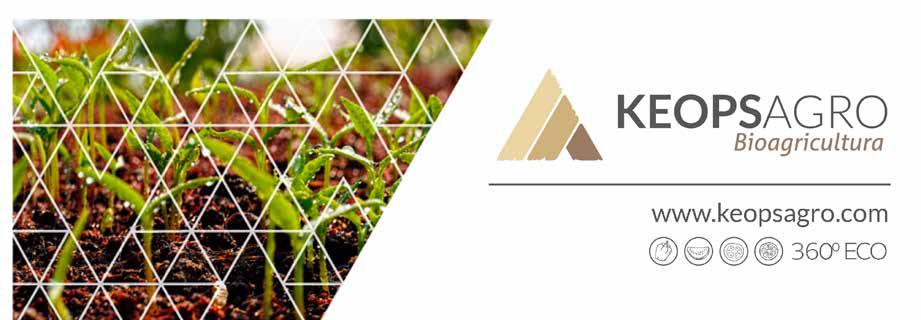
Lo que diferencia a la PepperCorer PC-55 de Sormac de otras máquinas es su capacidad para realizar cuatro pasos clave de procesado en una sola operación: Corte de los tallos. Descarte mediante vacío con un mínimo de residuos de semillas. Cortar y tapar el pimiento (opcional). Y abrir y distribuir el pimiento en trozos (opcional). Equipada con cuchillas horizontales y verticales, puede cortar los pimientos en trozos, anillos o cubos. Con capacidad para procesar hasta 55 pimientos por minuto y flexibilidad para procesar pimientos de 70 mm a 150 mm de longitud y de 60 mm a 115 mm de diámetro.
Diseñada para facilitar su uso, la PC-55 puede funcionar como una máquina independiente alimentada manualmente o puede integrarse con una cinta de alimentación adicional para un procesamiento automatizado.
Jesper Stroeken, jefe de ventas de España, explica que “la PepperCorer PC-55 ofrece el mayor rendimiento gracias a su eficaz separación del corazón, la eliminación de las semillas al vacío y el aprovechamiento
total de cada parte del pimiento. Además, el exclusivo proceso de corte del pedúnculo
aumenta la aceptación y tolerancia del producto”.
What sets the Sormac’s PepperCorer PC-55 apart from other machines is its ability to perform four key processing steps in one seamless operation: Cutting the stalks. Decoring via vacuum with minimal seed residue. Cutting and capping the bell pepper (optional). And opening and distributing the pepper into pieces (optional).
Equipped with both horizontal and vertical knives, the PC-55 can cut peppers into pieces, rings, or cubes. With the capability to process up to 55 peppers per minute and the flexibility to process peppers ranging from 70
mm to 150 mm in length and 60 mm to 115 mm in diameter
Designed for ease of use, the PC-55 can function as a stand-alone machine that is manually fed or can be integrated with an additional infeed belt for automated processing.
Jesper Stroeken, area sales manager for Spain, explains that “the PepperCorer PC-55 offers the highest yield due to its efficient core separation, vacuum seed removal, and the full utilization of every part of the pepper. Furthermore, the unique stalk-cutting process increases product acceptance and tolerance”.
PepperCorer PC-55
Corta frutas y verduras en (mitades) rebanadas, gajos o tiras. Capacidades hasta 3.600 piezas por hora.
■ Varios cortes diferentes
■ Resultados nítidos
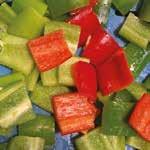
















Anna Pedró es la nueva Country Manager Iberia y las zonas prioritarias están a cargo de Miguel Espinosa (Almería), y Pedro García (Murcia)
La agricultura afronta retos inéditos, cada vez más complejos y demanda más flexibilidad. Bajo esta premisa, BASF Nunhems ha dado un giro de timón cambiando su estructura para acercarse aún más a los productores y ser más eficiente, poniendo el foco en los ‘hotspots’ (puntos calientes): Almería y Murcia. Ambos concentran buena parte de la producción agrícola de España, el segundo en factura-
Somos una
Aportamos Crop
Protection y Semilla
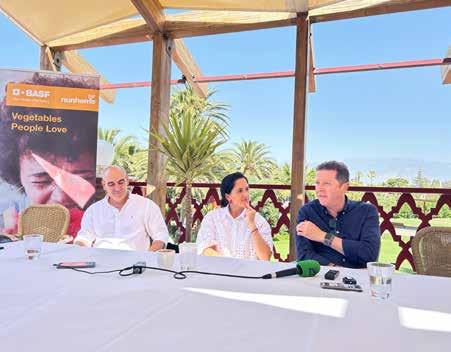
ción para BASF Nunhems, tras EE.UU. La compañía explicó el cambio en mayo y presentó a la nueva Country manager Iberia, Anna Pedró. En cada una de las zonas prioritarias, Almería y Murcia, estarán al mando, respectivamente, Miguel Espinosa y Pedro García, como Area Sales Manager.
Soluciones agrícolas
Anna Pedró no es nueva debuta en el segmento de la semilla. “Ingeniera agrónoma de profesión y agricultora de corazón”, hizo un doctorado de Fisiología Vegetal y ha trabajado 12 años en Crop Protection de BASF. Su nuevo reto como Country Manager Iberia es continuar la línea existente y llevarla un paso más allá buscando la excelencia. “La mejor definición es que somos una empre-


sa de soluciones agrícolas. Aportamos Crop Protection y Semilla”.
Almería
Miguel Espinosa, Area Sales Manager Almería, lleva 24 años en la compañía y conoce a la perfección la idiosincrasia almeriense. En la provincia, tres de los pilares más importantes para BASF Nunhems son pepino, pimiento y tomate.
“Somos la única empresa con las 5 tipologías de pepino: largo, slicer, francés, mini y snack”. Líderes en el segmento, ofrecen soluciones contra CGMMV con materiales que incorporan la resistencia en toda la gama. “Ya tenemos la primera variedad de pepino corto con resistencia a CGMMV”. En pimiento uno de sus hitos recientes es el lanzamiento de la gama Olimpo. La iniciaron con Krakos y le siguieron Salonikas (amarillo), Arkos y Bikos (rojos). Este año sumarán novedades en temprano y amarillo. En tomate han dado un espaldarazo con su nueva generación para ‘Ganar la batalla al rugoso’. En su Demo Field presentaron 42 variedades que los han consolidado como proveedor de confianza, capaz de dar soluciones a corto plazo al ToBRFV. “Hemos pasado de 130 a 500 hectáreas” con Cabosur.
Murcia
Pedro García, Area Sales Manager Murcia, lleva 20 años en cargos de responsabilidad
España es el 2º mercado en facturación para BASF Nunhems, tras EE.UU.
en BASF Nunhems y se encarga de cultivos al aire libre como la alcachofa, que sigue cosechando éxitos con la primera variedad híbrida, Green Queen F1. Como en Almería, el tomate centra buena parte de sus esfuerzos. “Cabosur y Azovian están funcionando muy bien. El desarrollo de materiales con resistencia a ToBRFV va de la mano de Almería”. Este año tendrán su propia Demo Field para ‘Ganar la batalla al rugoso’.
En lechuga han renovado el catálogo con materiales con resistencia a Fusarium, todas las razas oficiales de Bremia y buen comportamiento frente a pudriciones. “Hemos pasado de tener algunas variedades líderes a ocupar un nuevo espacio con la gama full resistance”.
Melón y sandía son otras de sus grandes apuestas, como mostraron en el BEFE bajo el lema ‘What’s Next’. “El sabor es nuestro estandarte. Lo ha sido siempre en sandía y queremos ayudar a recuperarlo en Galia con Galkia”, dijo Elvira Vitores, MarCom Specialist. Para ello trabajan mano a mano con sus partners Fruca, Gregal y Jimbo Fresh. También en cantalup tienen grandes avances con SunUp, trabajando con firmas de Murcia y Almería como Agroiris.
BASF Nunhems is reorganising its structure and is getting closer to the ‘hotspots’
Anna Pedró is the new Country Manager Iberia, and the top priority regions are under the control of Miguel Espinosa (Almeria), and Pedro García (Murcia)
Farming is facing up to unprecedented, increasingly complex challenges, and it needs greater flexibility. Under this premise, BASF Nunhems has changed its course, modifying its structure to get even closer to the producers and to become more efficient, putting the spotlight on the ‘hotspots’: Almeria and Murcia. Both regions bring together a large part of Spain’s agricultural production, the second in invoicing for BASF Nunhems, after the USA.
The company explained the change in May and presented the new Country Manager Iberia, Anna Pedró. In the two top priority regions, Almeria and Murcia, Miguel Espinosa and Pedro Garcia, respectively will be in charge as Area Sales Managers.
Agricultural solutions
Anna Pedró is not new in the seed segment. “An agronomist by profession and a farmer by vocation,” she studied a doctorate in Vegetable Physiology and has worked in Crop Protection at BASF for 12 years.
Her new challenge as Country Manager Iberia is to continue with the existing line and take it a step further, seeking out excellence. “The best definition is that we are an agricultural solutions company. We provide Crop Protection and Seeds.”
Almeria
Miguel Espinosa, Area Sales Manager Almeria, has worked in the company for 24 years and he knows all the idiosyncrasies of Almeria perfectly.
In the province, three of the most important pillars for BASF Numhems are cucumbers, peppers and tomatoes.
“We are the only company with the 5 cucumber typologies: long, slicer, French, mini and snack”. Leaders in the segment, they offer solutions against CGMMV with materials that incorporate resistance throughout the whole range. “We already have the first short cucumber variety with resistance to CGMMV”.
In peppers, one of the company’s recent milestones is the launch of the Olimpo range. They started out with Krakos, and followed this with Salonikas (yellow), Arkos, and Bikos (red). This year, they will add new developments in early cycle and yellow varieties.
In tomatoes, they are using their new generation to give strong backing to ‘Win the fight against ToBRFV’. In their Demo Field, they presented 42 varieties that they have consolidated as trusted suppliers, capable of giving short term solutions to ToBRFV. “We have gone from 130 to 500 hectares” with Cabosur.
Murcia
Pedro García, Area Sales Manager Murcia, has held positions of responsibility in BASF Nunhems for 20 years, and he is in charge of open-air crops such as artichokes, which continue reaping successes with the first hybrid variety, Green Queen F1.
As in Almeria, a large part of his efforts are centred on tomatoes. “Cabosur and Azovian are
working very well. The development of materials with resistance ToBRFV is going hand in hand with Almeria.” This year they will have their own Demo Field to ‘Win the fight against ToBRFV’. In lettuces, they have renewed the catalogue with materials that have resistance to Fusarium, all the official species of downy mildew, and good behaviour against rot. We have moved on from having a few leading varieties to holding a new space with the full resistance range.” Melons and watermelons are another of their major commitments, as shown at the BEFE under the slogan ‘What’s Next’. “Flavour is our flagship. It always has been in watermelon and we want to help to recover it in Galia with Galkia”, Elvira Vitores, a MarComSpecialist, comments. In order to do this, they are working alongside their partners Fruca, Gregal and Jimbo Fresh. They also have some important advances in Cantaloupe melons with SunUp, working with companies from Murcia and Almeria, such as Agroiris.
Spain is the 2nd market in invoicing for BASF Nunhems, after the USA
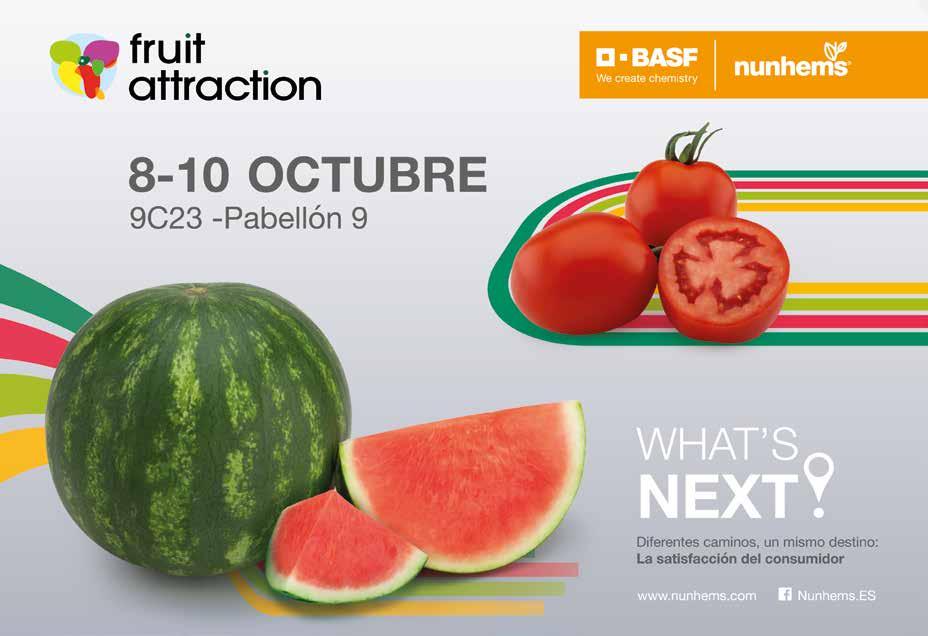
Tras el tomate Carlitos y el ‘porta’ Interceptor, la empresa prepara nuevos lanzamientos con resistencia a ToBRFV en todos los segmentos y tipologías
Carlitos, la primera variedad de tomate de Top Seeds con resistencia al virus rugoso (ToBRFV), sigue posicionándose en Murcia injertado en Carbonite y en Almería para ciclos cortos de primavera y otoño.
Pero Carlitos es solo el inicio. La casa de semillas trabaja en el desarrollo de nuevos materiales en los segmentos y tipologías que incorporan la citada resistencia. “Es una línea bastante amplia. Tenemos tomate pera para mercado nacional y exportación, cherry rama redondo, tipo San Marzano, tomate rama, corazón de buey… tanto para cultivos en invernadero en Almería como fincas con malla en la Región de Murcia”, explica Eva María Jerez, técnico comercial de Top Seeds en la zona de Levante. Los primeros resultados de este trabajo se podrán ver el año que viene, con el lanzamiento a nivel comercial de un prototipo nuevo de Arondir con resistencia a ToBRFV. Se trata de un tomate pera de gran calibre (un punto por encima de Arondir) y con firmeza. Eva María Jerez adelanta que se trata de un material “vegetativamente muy fuerte, para cultivos bajo malla en Murcia y otras áreas más tempranas como Alhama de Almería y otras zonas altas de la provincia”.
También en tomate, pero en el ámbito de los portainjertos, Top Seeds está desarrollando su programa de portainjertos. En primera instancia, ha consolidado su conocido Carbonite con la venta de 4 millones de semillas en campo. Ventajas como su vigor alto,
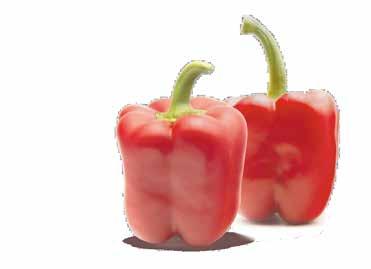
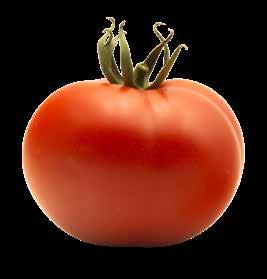
Tenemos un prototipo nuevo de Arondir con resistencia a ToBRFV

equilibrio y el plus de rendimiento, también a final de ciclo, ofrecen muy buenos resultados a los productores que están depositando su confianza en la variedad.
Como novedad de este año lanzaron Interceptor, un portainjertos con resistencia a rugoso y con vigor medio. También en este caso el material está teniendo una gran aceptación por su buen comportamiento en campo y la gran calidad que ofrece, asegura la técnico comercial.
“Tenemos el programa abierto. Estamos desarrollando portainjertos de distintos vigores con resistencia a rugoso para seguir avanzando y poder lanzar novedades próximamente”, avanza. Y es que, asegura, “el rugoso es un problema más y queremos ofrecer soluciones. Aunque en algunas zonas el virus está más extendido y en otras aún no, la tendencia es pedir materiales con resistencia, como pasó con el virus de la cuchara”.
Arkane y Sadoc, foco en pimiento
En la categoría de pimiento, el foco principal está puesto Arkane, su california rojo con resistencia a oídio que crece en esta campaña 2024/2025, así como en el california amarillo Sadoc. Por su parte, Galiano y Arnon, sus variedades más antiguas, siguen funcionando bien a nivel comercial y mantienen su nivel de ventas.
Melchor Guzmán, técnico comercial de Top Seeds Ibérica, avanza que en este último año han desarrollado prototipos muy similares a Galiano y Arnon que llevan incorporada

la resistencia a oídio y nematodos. “Ya están en la última fase de desarrollo y el año que viene serán precomerciales. También tenemos avanzados variedades de pimiento más tardías”.
Nilo, su primer brócoli En cultivos al aire libre, su primera variedad comercial de
brócoli, Nilo, se abre paso en Murcia. La variedad, para ciclo de 75 a 90 días, está captando el interés de los productores. Tras este lanzamiento comercial trabajan en otros materiales “bastante interesantes” para cotas “más complicadas” (con más calor y frío).

Following the tomato Carlitos and the ‘rootstock’ Interceptor, the company is preparing new launches with resistance to ToBRFV in all the segments and typologies
Carlitos, the first tomato variety from Top Seeds with resistance to Tomato Brown Rugose Fruit Virus (ToBRFV), is continuing to find its place in Murcia, grafted onto Carbonite, and in Almeria, for short cycles in spring and autumn.
But Carlitos is just the beginning. The seed company is working on the development of new materials in the segments and typologies that incorporate the aforementioned resistance. “It is quite an extensive line. We have plum tomatoes for the Spanish market and for export; round vine cherry tomatoes of the San Marzano type, vine tomatoes, beefsteak tomatoes… both for greenhouse crops in Almeria and for farms using netting in the Region of Murcia,” Eva Maria Jerez, a sales technician from Top Seeds in the Levant region, explains.
The first results of this work may be seen next year, with the commercial launch of a new prototype of Arondir with resistance to ToBRFV. It is a firm, large calibre plum tomato (one point above Arondir). Eva María Jerez advances that it is a material that is “very strong vegetatively, for crops under netting in Murcia and other earlier areas such as Alhama de Almería, as well as other high regions in the province.”
Also in tomatoes, but in the rootstock sphere, Top Seeds is developing its rootstock programme. In the first instance, it has consolidated its well-known Carbonite with the sale of 4 million
seeds in the fields. Advantages such as its important robustness, balance and the bonus of yield, also at the end of the cycle, offer very good results for the producers who are placing their trust in the variety.
As a new development, this year they launched Interceptor, a rootstock with resistance to ToBRFV and with average robustness. Also in this case, the material is being very well-accepted due to its good behaviour in the fields and the great quality that it offers, the sales technician assures.
“Our programme is open. We are developing rootstocks with differing degrees of robustness, with resistance to ToBRFV in order to continue moving forward and, therefore, be able to launch new developments in the near future,” she advances. And according to Jerez, the fact is that “ToBRFV is just another problem and we want to offer solutions. Although in some regions the virus is more widespread than others, the trend is for requesting materials with resistance, as occurred with TYLCV.”
Arkane and Sadoc, the spotlight in peppers
In the pepper category, the main spotlight is placed on Arkane, its red California pepper with resistance to powdery mildew, which is increasing in this 2024/2025 campaign, as well as in the yellow California pepper Sadoc. Galiano and
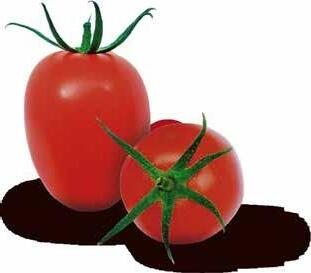
Arnon, its oldest varieties, continue functioning well on a commercial scale and they are maintaining their level of sales.
Melchor Guzmán, a sales technician at Top Seeds Ibérica, advances that over this past year they have developed prototypes very similar to Galiano and Arnon that incorporate resistance to powdery mildew and nematodes. “They are already in the last phase of development and next year they will have moved on to a pre-commercial phase. We also have later pepper varieties at an advanced stage.”
Nilo, its first broccoli
In open air crops, their first commercial variety of broccoli, Nilo, is paving the way in Murcia. The variety, for 75 to 90 day cycles, is drawing the interest of the producers. After this commercial launch, they are working on other “very interesting” materials for “more complicated” altitudes (both hotter and colder.)
Arkane, its red California pepper with resistance to powdery mildew, has seen its sales grow in 2024/2025
ISI Sementi posiciona a Dellisi y Benchi en tiempo récord y duplica las ventas gracias a su pack de resistencias, rendimiento de frutos de primera y sabor
Con más de 40 años, la firma de origen italiano ISI Sementi, propiedad desde hace 3 del holding Mitsui & Co, afronta un nuevo hito: el lanzamiento de una línea de pimiento que está dando mucho de qué hablar.
Bajo el eslogan ‘Pepper Effect’, Dellisi y Benchi, dos variedades de Sweet Point Pepper o italiano dulce, han duplicado las ventas en su segundo año comercial y ya suman 5 millones de semillas en campo. Un logro que han conseguido “gracias a empezar desde la base, el agricultor, al supermercado. Y no al revés”.
Este éxito llega de la mano de 5 claves, cuenta Rubén Martín, Country Manager de ISI Sementi Ibérica:
365 all-year-round
“Si me preguntas que cuándo ha terminado la campaña, la respuesta es que no ha acabado”. Todas las fincas plantadas en invierno (noviembre-diciembre) han asegurado una producción de calidad en verano, principalmente en zonas de altitud, lo que ha facilitado que se solapasen con los trasplantes más tempranos en verano, permitiendo a los comercializadores ofrecer el producto 365 días. Si sumamos que no sufren disminución de producción en los meses más fríos y con menos luz, se convierte en una de las características que más valor aporta a la comercialización y su gestión de programas.
“Su rendimiento es más homogéneo que el de otros, y eso está gustando mucho”. Una ventaja muy interesante para la comercialización, que busca tener abastecidos los lineales los 12 meses con producto de primera calidad para packagings embolsados.
“La demanda de la tipología aumenta. Es un pimiento que aporta seguridad al agricultor con un rendimiento económico bueno. Y es dulce y versátil. Cuando el consumidor lo prueba no compra más California”. Además, tiene una excelente vida tras el corte, pudiendo viajar con seguridad a los destinos más lejanos de Europa.
Pack completo de resistencias
“Dellisi es, junto con Benchi, la única variedad de italiano dulce que incluye el pack completo de resistencias: a oídio, spotted y L4”. De ahí que más del 50% del segmento se cultive en ecológico. “En nuestro caso, hemos crecido mucho

de la mano del bío”. Al haber apostado por partners, pero no exclusividad, amplían el abanico de clientes y llegan a compañías grandes y pequeños agricultores atraídos por su rentabilidad.
Más porcentaje de I Cat.
Su elevado porcentaje de frutos rectos es “muy superior” a otros. “Si están torcidos no son aptos para embolsado y se pierde rentabilidad”. La dominancia apical de Dellisi permite incluso hacer labores de encintado o enfajado -en lugar de entutorado, más costoso-, y aun así seguir teniendo un porcentaje más alto de frutos rectos.
Gran postcosecha
La forma redondeada de la punta aporta más vida útil, alargando su postcosecha. “Se comercializan en Alemania, Noruega, Dinamarca… y se mantienen en perfectas condiciones durante y después de largos trayectos”. Los supermercados destacan su mayor postcosecha.
Sabor, con mayúsculas
Como no podía ser de otra forma, el sabor es uno de los pilares del éxito del ‘Pepper Effect’. “En las mediciones, nuestros materiales son superiores en Brix a otros competidores. Sobre todo, en recolecciones en rojo de Dellisi”. De ahí que sea más ‘elitista’ y se comercialice prioritariamente en rojo para bolsas, y Benchi, con más peso, vaya más a verde en alhóndigas. Esta campaña, han vendido 4 millones de semillas de Dellisi y 1 de Benchi. Y no pararán. “La compra por parte de Mitsui&C nos ha dado un gran impulso. Estamos investigando una variedad amarilla con todas las resistencias, otras con entrenudos cortos y para ciclos más cortos y pronto anunciaremos más novedades”.

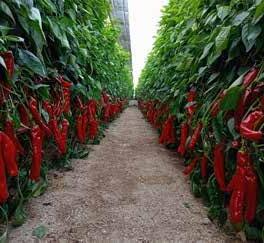
Han vendido 5 mill. de semillas esta campaña, 4 de Dellisi
Trabajan con partners, sin exclusividad

ISI Sementi is positioning Dellisi and Benchi in record time and it is doubling its sales thanks to their pack of resistances, fIrst fruit yield and fLavour
With over 40 years of experience, the company from Italy, ISI Sementi, which has belonged to the holding company Mitsui & Co for the past 3 years, is facing up to a new milestone: the launch of a pepper line that is attracting a great deal of attention.
Under the slogan ‘Pepper Effect’, Dellisi and Benchi, two varieties of Sweet Point Pepper or sweet Italian peppers, they have doubled the sales in their second year on the market and they already have 5 million seeds in the fields. An achievement that has been possible “thanks to starting at the bottom - the farmers - and then moving on to the supermarkets. And not the other way round.”
This success story has 5 key points, according to Rubén Martín, Country Manager of ISI Sementi Ibérica:
365 all-year-round
“If you ask me when the campaign finished, the answer is that it hasn’t.” All the farms that were planted in the winter (November-December) have guaranteed a quality production in the summer, mainly in high altitude regions, which has improved the overlaps with the earliest transplanting in the summer, allowing marketers to offer the produce 365 days a year. If we add the fact that they do not suffer from any production decreases in the colder months, when there is less light, it becomes one of the most valuable charac-

teristics regarding marketing and programme management.
“The yield is more homogeneous than others and this has made it very popular.” A highly interesting advantage for marketing, which seeks to supply the supermarket shelves 12 months of the year with top-quality produce for bagged produce. “The demand for this typology is on the rise. It is a pepper that gives the farmers security, with a good economic yield. And it is sweet and versatile. When consumers try it they no longer purchase California.” It also has an excellent lifespan after cutting, allowing it to travel safely to the furthest destinations in Europe.
A complete pack of resistances
“Dellisi is, along with Benchi, the only variety of sweet Italian peppers that includes the complete pack of resistances: to powdery mildew, spotted and L4.” This is the reason why over 50% of the segment is grown as ecological crops. “In our case, we have grown a great deal alongside the bio segment.” As they have opted for partners, but not exclusivity, they are extending their range of clients and they are reaching both large companies and small farmers, attracted by the profitability.
A higher percentage of I Cat
The high percentage of straight fruit is “much greater” than others. “If they are twisted they are not suitable for bagging and profitability is
lost.” The apical dominance of Dellisi even allows taping or banding work – instead of having to use more expensive supporting systems, and even so, it is showing a higher percentage of straight fruit.
A great post-harvest
The rounded shape of the point gives it a longer shelf life, extending its post-harvest. “They are being marketed in Germany, Norway, Denmark… and they remain in perfect condition, during and after long journeys. The supermarkets emphasise the greater post-harvest of these varieties. Flavour, in capital letters
As it should, the flavour is one of the foundations of the success of the ‘Pepper Effect’. “When measured, our materials have higher Brix than those of our competitors. Above all, in the red fruit harvests of Dellisi.” This is the reason it is more “elitist” and is first and foremost marketed in red for bagged produce, and the heavier Benchi, is more suitable for harvesting green for the markets.
This campaign they have sold 4 million seeds of Dellisi and 1 of Benchi. And there is no stopping them. “The purchase by Mitsui & Co has given us a great boost. We are researching a yellow variety with all the resistances, others with short internodes and for shorter cycles, and we will announce our new products in the very near future.”
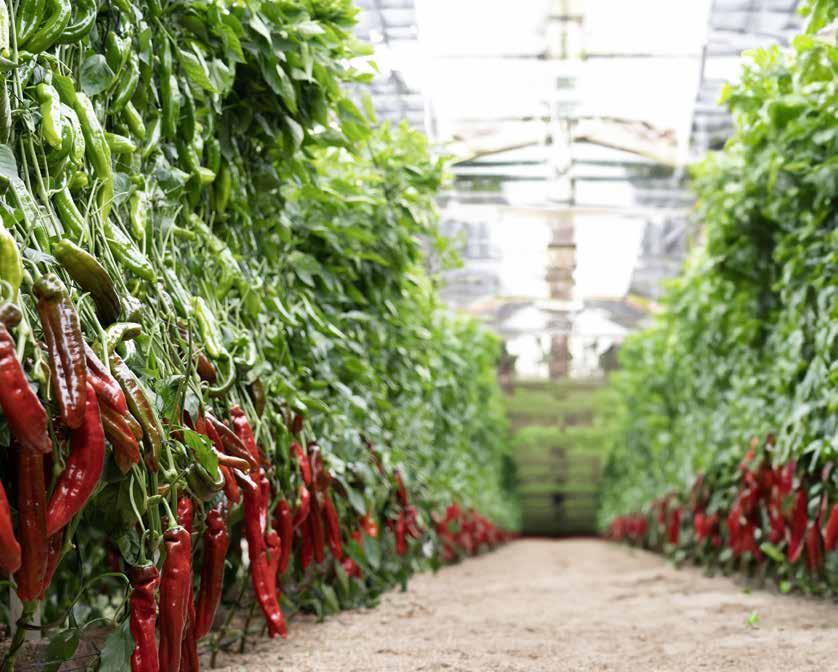





Su stand está basado en la imagen del Universo INTERSEMILLAS, un concepto que refLeja su compromiso con la innovación y la sostenibilidad en la agricultura
Bajo el eslogan “Cultivando el Futuro,” Intersemillas quiere destacar su preocupación e interés en la creación de variedades más eficientes, tanto para el agricultor como para el mercado y consumidor final.
Cultivando el Futuro: Compromiso con la Sostenibilidad y la Innovación
La agricultura, como primer eslabón de la cadena alimentaria, juega un papel fundamental, especialmente cuando los consumidores demandan cada vez más alimentos saludables y producidos de manera sostenible.
El crecimiento rápido y constante de la población conlleva riesgos. Prácticas agrícolas inadecuadas pueden provocar la erosión y el empobrecimiento del suelo, el uso excesivo o inadecuado de agroquímicos, y la mala gestión de los recursos hídricos. Estos factores suponen una grave degradación de la tierra, amenazando la sostenibilidad de la producción agrícola.
En Intersemillas, reconocen que hoy es el momento de pensar en el futuro. Por eso, en Fruit Attraction, presentarán sus variedades de cultivos desarrolladas con la más avanzada investigación. Se enfocan en crear productos con resistencia a enfermedades y adaptados a diferentes climas y suelos, utilizando tecnologías innovadoras para contribuir a un futuro sostenible.
Tomates Estrellas: “Nuestra investigación los hace brillar”
Los tomates de Intersemillas son el resultado de una intensa labor de

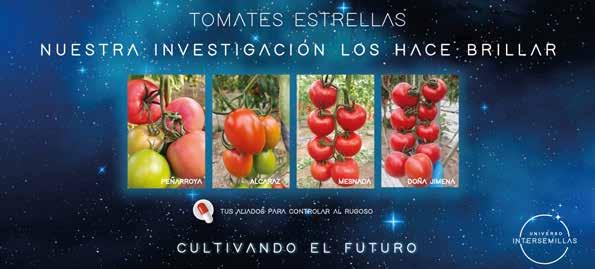
investigación y desarrollo. Variedades que no solo destacan por su sabor y calidad, sino que también se convierten en los mejores aliados para controlar el virus del rugoso. La innovación es clave para cultivar el futuro, por eso presentan cuatro variedades de tomate con resistencia al virus del rugoso (ToBRFV), con una excelente sanidad de planta.
• Tomates en rama: Doña Jimena y Mesnada se distinguen por su buen cuaje en condiciones de calor, precocidad y una excelente postcosecha, gracias a sus frutos de color rojo intenso y alta consistencia. La diferencia entre ambas radica en el vigor de planta y el calibre: Doña Jimena ofrece frutos de calibre M-G, mientras que Mesnada mantiene un calibre M.
• Tomate pera Alcaraz: Ideal para exportación, Alcaraz destaca por sus frutos de calibre M homogéneo a lo largo de todo el ciclo, con un rendimiento excelente tanto en altas como en bajas temperaturas.
Esta variedad compite con las líderes del mercado, gracias a su alta calidad y a su triple resistencia.
• Tomate beef rosa Peñarroya: Adaptado tanto a condiciones de frío como de calor, Peñarroya produce frutos homogéneos y uniformes en cada ramo de calibre G-GG, con un excelente cierre.
Estas variedades cuentan con un completo paquete de resistencias (Triple protección: Cuchara, Spotted y Rugoso) y están diseñadas para ofrecer soluciones sólidas a los desafíos actuales en el cultivo del tomate.
“Explorando nuevos horizontes” con los Pimientos Dulce Italiano
La productividad y la eficiencia son sus prioridades. Las variedades de pimientos Dulce Italiano: Nabone, Popeye, Dreamer y Udine, están diseñadas para maximizar el rendimiento, adaptándose a diferentes entornos de cultivo y necesidades del









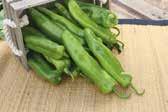
mercado. Estos pimientos no solo ofrecen una alta calidad, sino que también están preparados para resistir diversas enfermedades y condiciones climáticas.
• Nabone: Variedad ideal tanto para cultivo al aire libre como en invernadero. La planta es vigorosa, saludable y extremadamente productiva. Sus frutos son muy largos (2324 cm), rectos, sin acordeón y con piel lisa. En madurez, pasan de un verde medio a un rojo intenso, lo que garantiza una excelente apariencia en el mercado.
• Popeye: Diseñada para cultivo al aire libre, Popeye produce frutos largos, de color verde oscuro, con un diámetro grueso y una pared espesa que le confiere gran peso y alta productividad. La planta tiene un vigor medio y el fruto presenta una piel rugosa, con un acordeón suave en el cuello y sin hendidura peduncular.
• Dreamer: Esta variedad se distingue por su acabado en punta y su piel lisa. Con frutos de unos 19-20 cm de longitud y 5 cm de diámetro, Dreamer es una planta vigorosa adecuada para cultivos de primavera-verano. Además, cuenta con resistencia al virus del bronceado del tomate (TSWV).
• Udine: Especialmente indicada para cultivo de invierno bajo invernadero y también al aire libre, Udine presenta frutos rectos de 20-21 cm de longitud y 4 cm de
Intersemillas centra su investigación en la resistencia a enfermedades y en la adaptación a diferentes
diámetro, con un peso promedio de 130g. Destaca por su resistencia a TSWV y su excelente comportamiento frente al oídio. Su piel es de rugosidad media, y su color verde medio en madurez garantiza un producto atractivo para el mercado. En Intersemillas, siguen “Explorando nuevos horizontes” para ofrecer lo mejor
de cada cosecha, combinando innovación, resistencia y productividad en cada una de sus variedades. Además, amplían estos horizontes con un ambicioso programa de mejora en esta tipología de pimiento, incorporando resistencias avanzadas a L4 y TSWV, asegurando variedades aún más robustas y eficientes para el futuro.
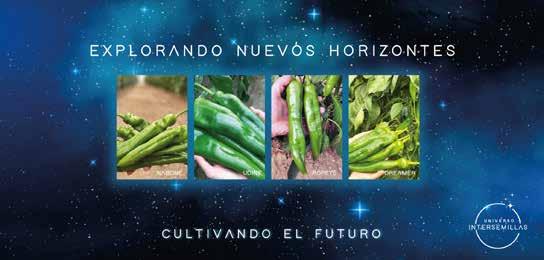

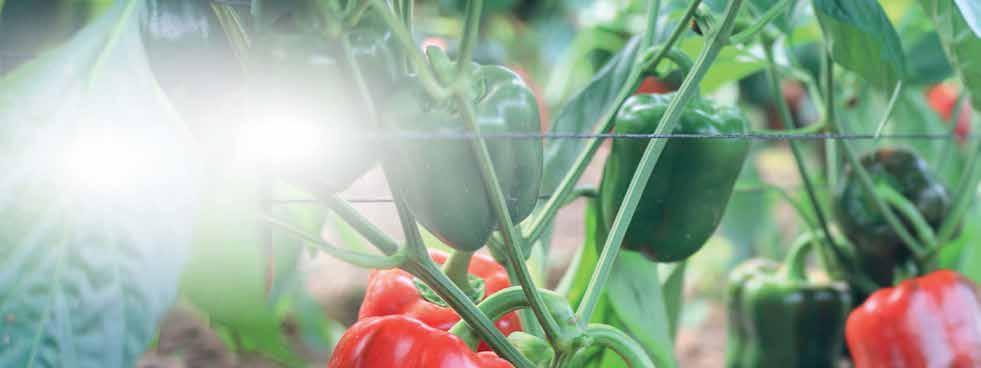


Its stand is based on the image of the INTERSEMILLAS Universe, a concept that refLects its commitment to innovation and sustainability in agriculture
Under the slogan “Cultivando el Futuro” (Cultivating the Future), Intersemillas wants to emphasise its concern and interest in the creation of more efficient varieties, for the farmers, the market, and for the end consumers.
Cultivating the Future: a Commitment to Sustainability and Innovation
Farming, as the first link in the food chain, plays an essential role, particularly when consumers are increasingly demanding healthy foods, produced sustainably.
The rapid, constant growth of the population involves risks. Unsuitable farming practices can cause erosion and soil impoverishment, excessive or incorrect use of agrochemicals, and mismanagement of water resources.
These factors mean a serious deterioration of the land, threatening the sustainability of the agricultural production.
At Intersemillas, they acknowledge that today is the time to be thinking about the future.
For this reason, at Fruit Attraction, they will present their crop varieties developed using the latest research. They focus on creating products with resistance to diseases and adapted to different climates and soils, using innovative technologies to contribute to a sustainable future.
Star Tomatoes: “Our research makes them shine”
Intersemillas’ tomatoes are the result of intense research and development. Varieties that do not only stand out for their flavour and quality, but they also become the best allies for controlling ToBRFV. Innovation is the key for cultivating the future; therefore they are
presenting four tomato varieties that are resistant to ToBRFV, with excellent plant health.
• Vine tomatoes: Doña Jimena and Mesnada stand out for their good setting in hot weather conditions, earliness and excellent postharvest, thanks to their deep red fruit and high consistency. The difference between the two lies in the plant hardiness and the calibre: Doña Jimena offers M-G calibre fruit, while Mesnada maintains an M calibre.
• Plum tomato Alcaraz: Ideal for exports, Alcaraz stands out for its homogenous, M calibre fruit throughout the cycle, with excellent yield both at high and low temperatures. This variety competes with the market leaders, due to its high quality and triple resistance.
• Pink beefsteak tomato Peñarroya: Adapted to both cold and hot conditions, Peñarroya produces G-GG calibre, homogenous and uniform fruit on each vine, with excellent closure. These varieties have a complete resistance package (Triple protection: TYLCV, Spotted, and ToBRFV) and they are designed to offer solid solutions to today’s challenges for tomato growing. “Exploring new horizons” with Italian Sweet Peppers
Productivity and efficiency are their top priorities. The Italian Sweet peppers Nabone, Popeye, Dreamer, and Udine are designed to maximise the yield, adapting to different crop environments and to market requirements. These peppers do not merely offer high quality, they are also prepared to resist different diseases and weather conditions.
• Nabone: An ideal variety both for open-air and greenhouse cultivation. The plant is hardy, healthy and extremely productive. Its fruit are
very long (23-24 cm), straight, without accordion folds and with smooth skin. When they are ripe, they change from a medium green to a deep red, which guarantees an excellent appearance on the market.
• Popeye: Designed for open-air growing, Popeye produces long fruit, deep green, with a wide diameter and a thick wall that gives it great weight and high productivity. The plant has a medium hardiness and the fruit has rough skin, with a gentle accordion fold at the neck and without any stem cleft.
• Dreamer: This variety stands out for its pointed end and smooth skin. With fruit that are around 19-20 cm long and 5 cm in diameter, Dreamer is a hardy plant, suitable for spring-summer crops. It also has resistance to TSWV.
• Udine: Particularly indicated for winter cultivation in greenhouses and also in the open-air, Udine has straight fruit, around 20-21 cm in length, 4cm in diameter, with an average weight of 130g.
It stands out for its resistance to TSWV and its excellent behaviour against powdery mildew. Its skin has a medium roughness, and its medium green colour when ripe guarantees an attractive product for the market.
At Intersemillas, they continue “Exploring new horizons” to offer the best of each harvest, combining innovation, resistance and productivity in each of their varieties. They are also widening these horizons with an ambitious improvement project in this type of pepper, incorporating advanced resistances to L4 and TSWV, guaranteeing varieties that are even more hardy and efficient for the future.





Por: VIRGINIA HERNÁNDEZ
Fotos: Manuel Martín

Tengo muy buena mano con las plantas y me relaja cuidarlas
Carmen Cabra nació en Valencia. Acaba de cumplir 60 y su otra ‘hija’, Fruit Today, 100 números. Por eso, desde el equipo la hemos compelido a pasarse, solo por esta vez, al otro lado del PerfIL del Mes.

Poliédrica, maniática del orden en su día a día, caótica cuando viaja, practicante de la psicología del color, vibrante, coqueta, solidaria, impaciente y sí, puro nervio. Su cerebro va a mil por hora y si eres de carácter tranquilo, ese nervio infatigable te puede chocar. Pero solo al principio. Porque cuando descubres sus múltiples facetas primero te haces ‘fan’, y luego entiendes que, al contrario del dicho, la primera impresión no es la que cuenta.
Detrás de su apariencia colorida, desenfadada y divertida hay una persona que es la antítesis de la frivolidad. Un drama familiar la llevó a cambiar para siempre su lista de prioridades. Y, aunque puedas encontrártela en medio de un melonar ataviada con una pamela gigante y la sonrisa puesta, no sabrás que quizá ese día lleva varias pastillas para el dolor que arrastra tras una compleja operación de vértebras.
Para la entrevista, nos citamos en la oficina para ir a su casa. En los 200 metros que separan sus dos ‘hogares’ la paran y saludan
en múltiples ocasiones. Es como ir por los pasillos de Fruit Attraction con ella.
Tu casa está súperordenada, como la oficina… ¿Lo definirías como una virtud o una manía?
Es una manía, como un ‘TOC’ del orden. Y también tengo manía con la limpieza.
Sí, sí, ya me han dicho que limpias hasta las plantas.
Me relaja cuidarlas. Las reciclo, unifico, trasplanto, les limpio las hojas, les hablo… Tengo buena mano con ellas, pero también
influye que en mi casa hay mucha luz. No se me mueren, a excepción de un bonsay.
Además de este, seguro que tienes más hobbies.
Siempre me ha gustado mucho viajar. A los 18 años, mochila al hombro, con el dinero justo y sola (de esto hace la friolera de 42 años) me recorrí 8 países europeos con Interrail. Ahora no resulta llamativo, pero te aseguro que cuando lo hice, no conocí a ninguna mujer española. Fue una experiencia inolvidable, también con un lado oscuro porque estuve a punto de ser agredida
sexualmente por un iraní en Ámsterdam, acabé en una rueda de reconocimiento en la policía.
No he dejado de viajar desde entonces. A lo mejor por eso me casé con un geógrafo. Jajaja. Mi marido era, ahora está jubilado, profesor de Geografía en la Universidad de Valencia; así que tengo un guía en casa para preparar los viajes.
El hobby de la lectura es un punto y aparte porque desde siempre he sido una lectora compulsiva. Mis dos últimos libros son ‘Trenzas’ de Laetitia Colombani y ‘La Temeraria’ de Isabel San Sebastián. Acabo de comprarme ‘Nexus’, de Noah Harari, para hacerme un repaso de la sociedad a través de las redes de información. Otra de mis debilidades es la prensa en papel. Aunque estoy suscrita a varios diarios generalistas digitales, con los que me manejo en el día a día, los domingos compro tres o cuatro periódicos y revistas de interiorismo y disfruto de ellos en el sofá de casa.
Si no hubieras sido periodista, ¿qué te hubiera gustado ser?
Era periodista o periodista. Solamente quería ser eso. Escuchaba la radio noche y día. Entonces me parecían sabios todos

los que hablaban en la radio. Quería ser periodista para aprender continuamente.
Eres una ‘curranta’. No se te caen los anillos con ningún trabajo
Por supuesto que no. Empecé a trabajar muy joven, a los 16. Había muchas oportunidades de todo. Trabajé de modelo de pasarela y foto. Pero de segunda categoría, ¿eh? Ganaba mucho dinero, la verdad. Antes de acabar la carrera trabajé como vendedora de libros, azafata, dependienta, de cualquier cosa que me permitiera ganar dinero.
A finales de los 80, viví en Inglaterra, y como entonces los españoles no teníamos permiso legal de trabajo, fui camarera, lavaplatos, vendedora de zapatos y au-pair en un exclusivo barrio judío.
¿Y tu trayectoria en el mundo periodístico? Tuve la suerte de empezar en segundo de carrera en uno de los periódicos provinciales de Tenerife, en el ‘Diario de Avisos’. Allí trabajé todos los veranos y al acabar la carrera me contrataron. Pasé por sucesos, política local y deportes. Después trabajé en TVE en Canarias como redactora. Mi último trabajo en un medio generalista, antes de dedicarme al agro, fue en el periódico ABC dedicándome a la crónica parlamentaria.
Algo que te caracteriza mucho es el color, tanto en ropa como en complementos. ¿Puedo ver tu colección?
Claro, ¡mira! -dice abriendo un armario del tamaño de un armero, repleto de collares-. Me encanta la bisutería porque es pura creatividad de formas y colores. Además de este armario, tengo dos cajones impecablemente ordenados de pendientes y anillos.
Creo que un día rivalizaste en colorido con la mismísima Ágatha Ruiz de la Prada ¡Sí, sí! Coincidimos en un evento. Recuerdo que yo iba de naranja y llevaba un tocado fucsia. Y ella un vestido de su firma de muchos colores. Hay un libro que tiene mi hermano José sobre la psicología del color, que explica cómo nos definen a las personas los colores.
Con José viviste algo que te ha marcado mucho
Sí. Es el más pequeño de los cinco hermanos y con el que más relación tengo. Su accidente de coche fue una de las peores etapas de mi vida. En aquel momento yo tenía 31 y José 21. Yo estaba en Alemania, y mi hermano tuvo el accidente en Namibia. Me fui allá y él estuvo un mes y medio en la cama de un hospital hasta que

Tengo un armario del tamaño de un armero repleto de collares
pudimos volver a España. Las experiencias de este tipo te hacen relativizar todo.
¿Y el mejor momento?
El nacimiento de mi hija. Siempre le he explicado que la quería antes de nacer porque tuve tres abortos y al final tuve que recurrir a la reproducción asistida. Fíjate que es mayor, pero me envía WhatsApps todo el rato diciéndome te quiero, te amo, corazones... Tenemos una relación muy cercana.
A lo largo de este tiempo habrás escuchado mil historias haciendo entrevistas como el Perfil del Mes. ¿Vales más por lo que callas que por lo que cuentas?
Cuando llevas tanto tiempo trabajando en el sector y eres cercana te cuentan muchas cosas. Hemos llegado a llorar a moco tendido en alguna entrevista, porque las personas tienen vidas apasionantes que no divulgan. En lo personal y en lo profesional, siempre respeto los off de récords.


Carmen Cabra was born in Valencia. She has just turned 60, and her other ‘daughter’, Fruit Today, has reached 100 issues. Thus, the team has been compelled this once to move over to the other side of the ProFile of the Month.
Multifaceted, fanatical about order in her daily routine, chaotic on her travels, a colour psychology practitioner, vibrant, flirtatious, supportive, impatient and, yes, an unstoppable live wire. Her brain works at a thousand miles per hour and, if you are a calm person, her indefatigable nature can annoy you. But only at first –when you discover her multiple facets, you become a fan and then you understand that, contrary to the saying, first impressions are not what counts. Behind her colourful, free, easy, and fun appearance, there hides a person who is never frivolous. A family drama led her to change forever her priorities. And although you might find her in the middle of a melon patch, wearing a giant straw hat and a wide smile, you wouldn’t imagine that she had to take several painkillers that day to cope with the pain derived from a complicated spinal operation. For the interview, we met at the office in order to go to her house. In the 200 metres that separate her two ‘homes’, she is stopped and greeted many times. It is just like walking down the aisles of Fruit Attraction with her.
Your house is incredibly tidy, as is the office… Would you define this as a virtue or a mania?
University of Valencia before he retired; therefore I have a guide at home to prepare our trips. Reading is my true hobby, because I’ve always been a compulsive reader. My last two books are ‘La Tresse’ by Laetitia Colombani and ‘La Temeraria’ by Isabel San Sebastián. I have just bought Nexus, by Noah Harari, to look at society through the information networks.
Printed newspapers are another of my weaknesses. Although I have subscriptions to several daily digital newspapers, with which I handle my everyday routine, on Sundays I buy three or four
degree. I went through the sections on incidents, local politics and sports. I then worked at TVE in the Canary Islands as an editor.
My last job in general media, before devoting my time to the world of agriculture, was on the newspaper ABC, on the parliamentary reports.
Colour is something that characterises you, both in clothing and in accessories. Could I see your collection?
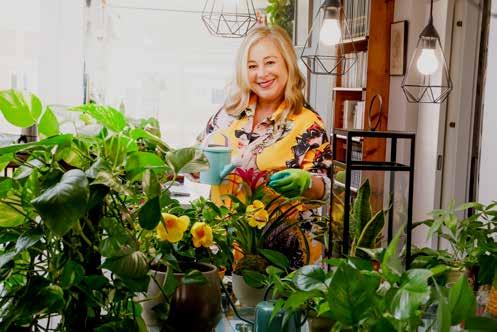
It is a mania, like a tidiness ‘TIC’. I am also a fanatical cleaner.
I have been told you even clean your plants. Looking after them relaxes me. I recycle them, plant them together, transplant them, clean their leaves, talk to them… I have green fingers, but my house gets lots of sunlight and that helps. They don’t die on me, with the exception of one bonsai tree.
I’m sure you have other hobbies, apart from your plants.
I’ve always liked to travel. At 18, backpack on over my shoulder, with just enough money and alone (42 years ago, no less!), I travelled around 8 European countries on an Interail card. Now, it’s not as remarkable, but I assure you that at the time, I didn’t meet any other Spanish women. It was an unforgettable experience, although it also had a dark side to it as I was nearly sexually assaulted by an Iranian in Amsterdam, ending up in a police identity parade.
I haven’t stopped travelling since then. Perhaps that is why I married a geographer. (Laughter). My husband was a Geography Professor at the
newspapers and interior decoration magazines, and I relax with them on the sofa at home.
If you had not been a journalist, what would you have liked to be?
It was always journalism or bust. I only wanted to be a journalist. I listened to the radio night and day. Then, all those who talked on the radio seemed wise. I wanted to be a journalist to carry on learning.
You are a workhorse. You don’t turn your nose up at any job.
Of course not. I started working very young, at 16. There were many opportunities of all kinds. I worked as a catwalk and photo model. But not in the top category, OK? I earned a great deal of money. Before finishing my degree, I worked as a bookseller, a stewardess, a shop assistantwhatever allowed me to earn some money. At the end of the 1980s, I lived in England and as at that time Spaniards couldn’t get legal work permits, I worked as a waitress, washer-up, shoe seller and au pair in an exclusive Jewish district.
What about your career in journalism?
I was lucky to start working on one of the provincial newspapers in Tenerife, ‘Diario de Avisos’, in my second year at college. I worked there every summer, and they hired me when I finished my
Sure, look! –she says opening a huge cupboard, full of necklaces. I love costume jewellery because it is pure creativity in shapes and colours. In addition to this cupboard I have two carefully ordered drawers of earrings and rings.
Is it true that one day you even competed in bright colours with designer Ágatha Ruiz de la Prada herself?
Yes! We coincided at an event. I remember I was wearing orange, along with a shocking pink hat. And she was wearing a many-coloured dress from her brand. My brother José has a book about colour psychology, which explains how colours define people.
You experienced something with José that affected you greatly.
Yes. He’s the youngest of five brothers and the one I’m closest to. His car accident was one of the worst phases in my life. At that time I was 31 and José was 21. I was in Germany and my brother had his accident in Namibia. I travelled there and he spent a month and a half in a hospital bed until we could return to Spain. Experiences such as this put everything into perspective.
And your best moment?
The birth of my daughter. I have always told her that I loved her even before she was born because I had three miscarriages and in the end I had to resort to assisted reproduction. Even though she’s grown up now, she sends me WhatsApps all the time telling me she loves me, hearts… We have a very close relationship.
Over all these years you must have heard thousands of stories while preparing the Profile of the Month. Are the secrets you keep better than the stories you’ve told?
When you have spent as long working in the sector and you are approachable, you are told many things. We have sobbed our hearts out in some interviews, because people have passionate private lives. But in both personal and professional life, I always respect the off the record remarks.


